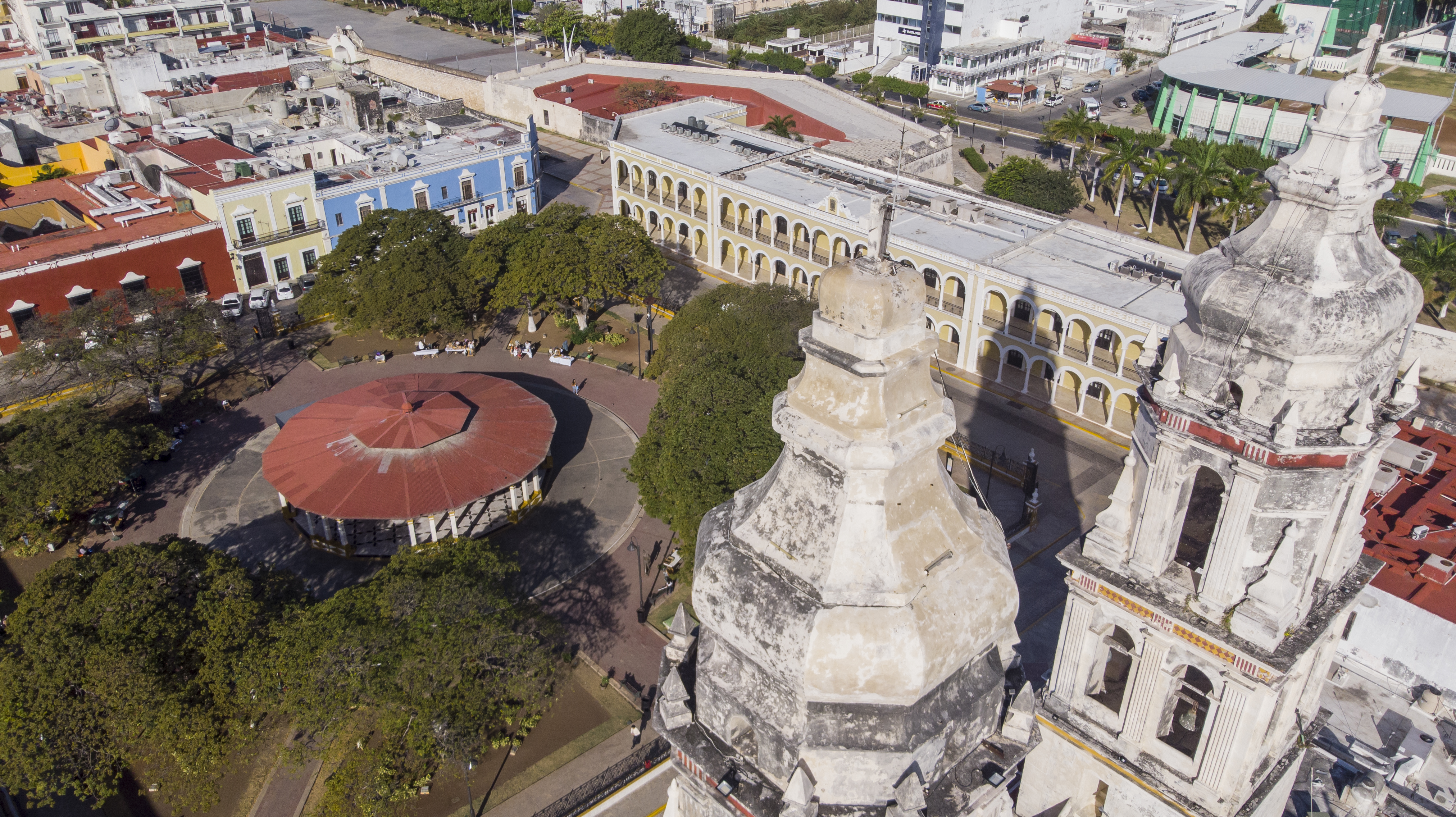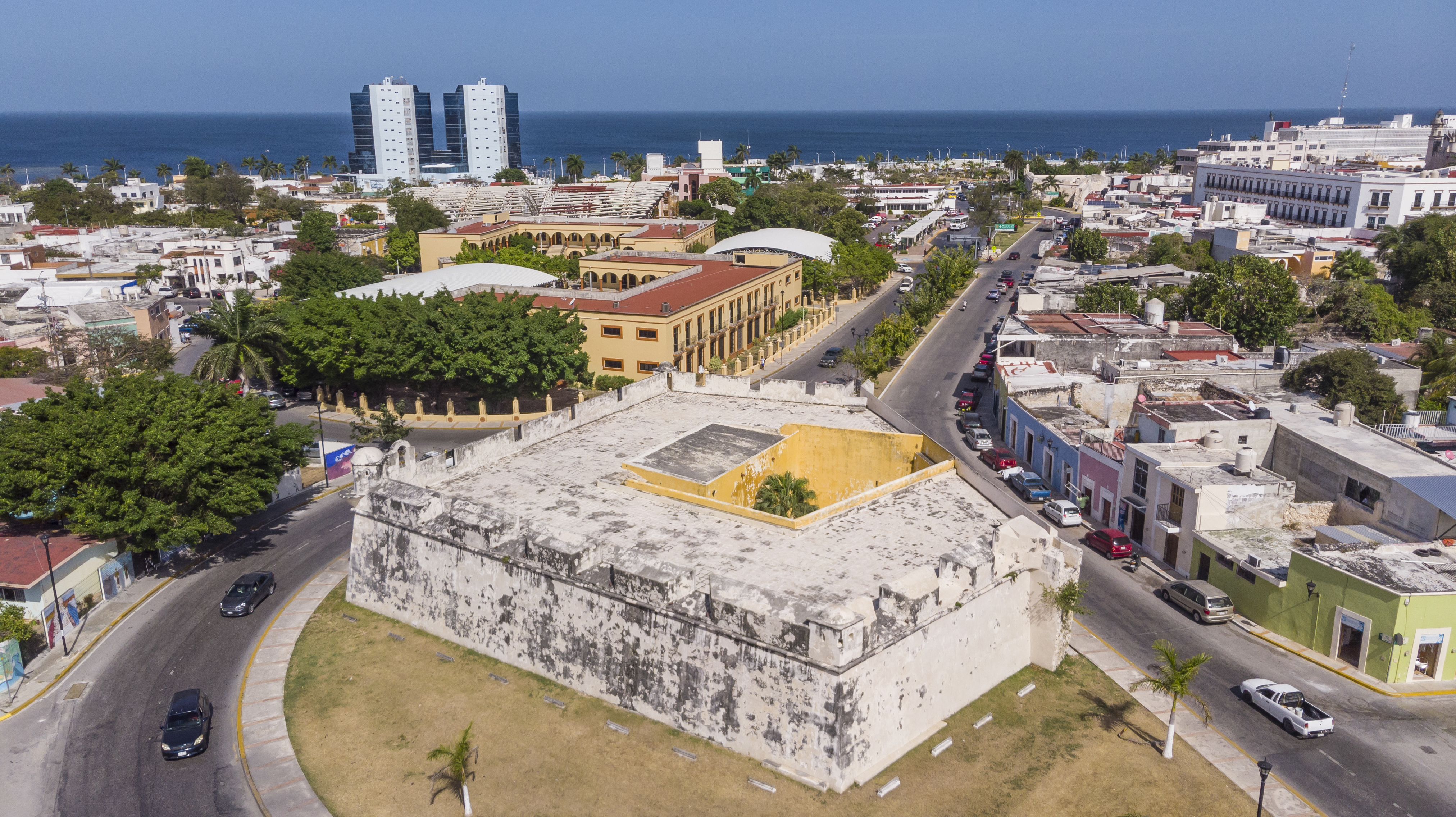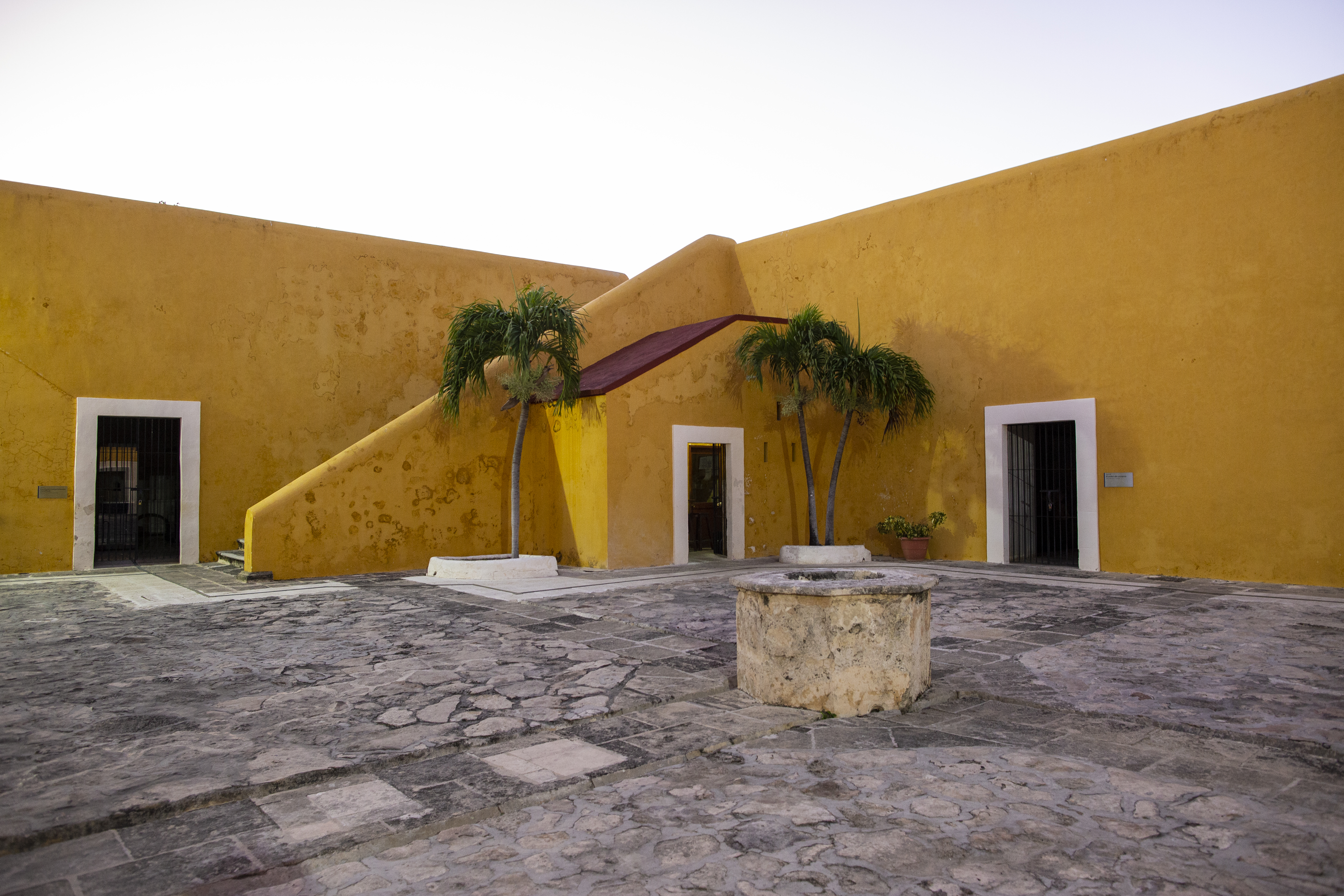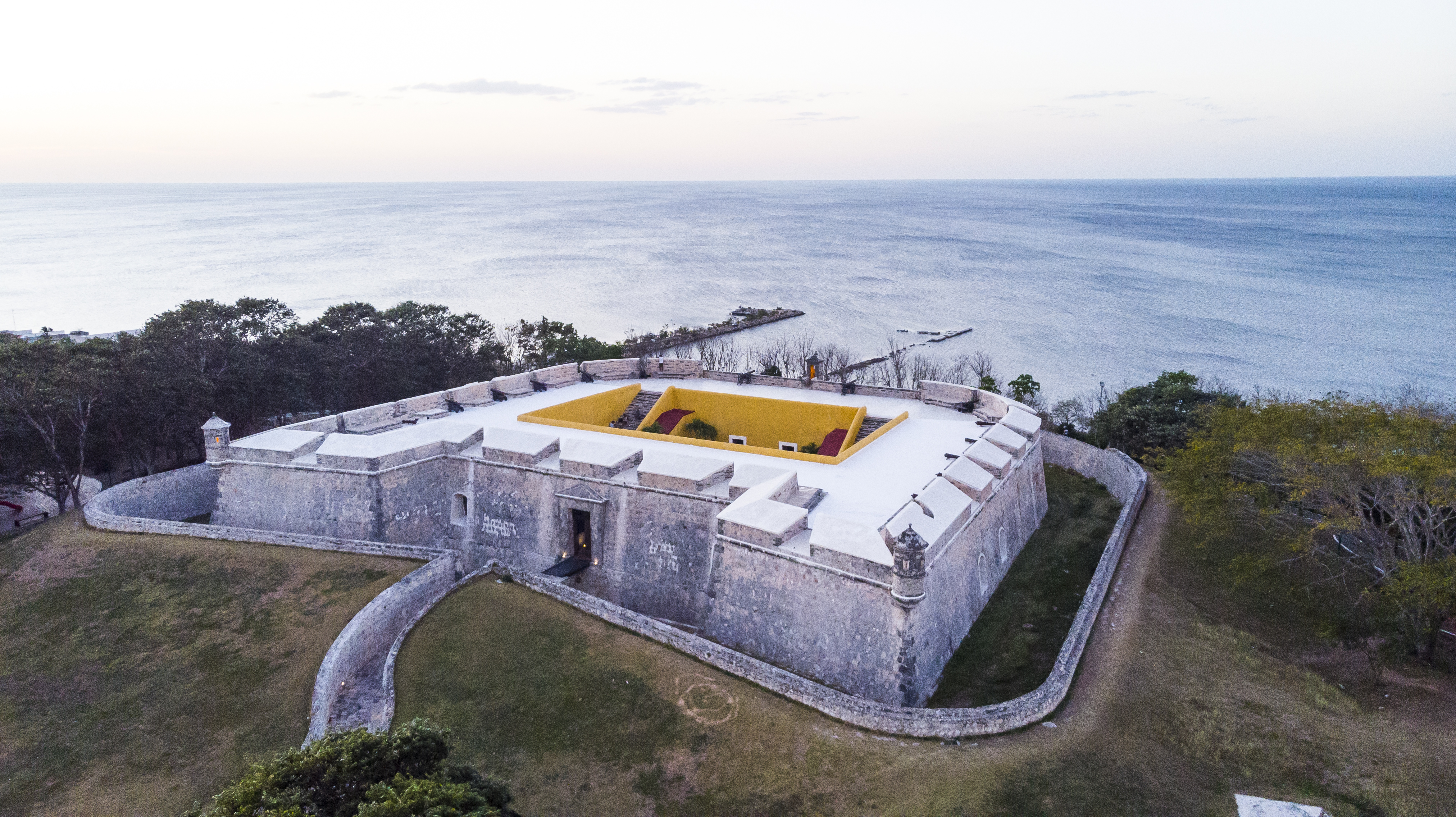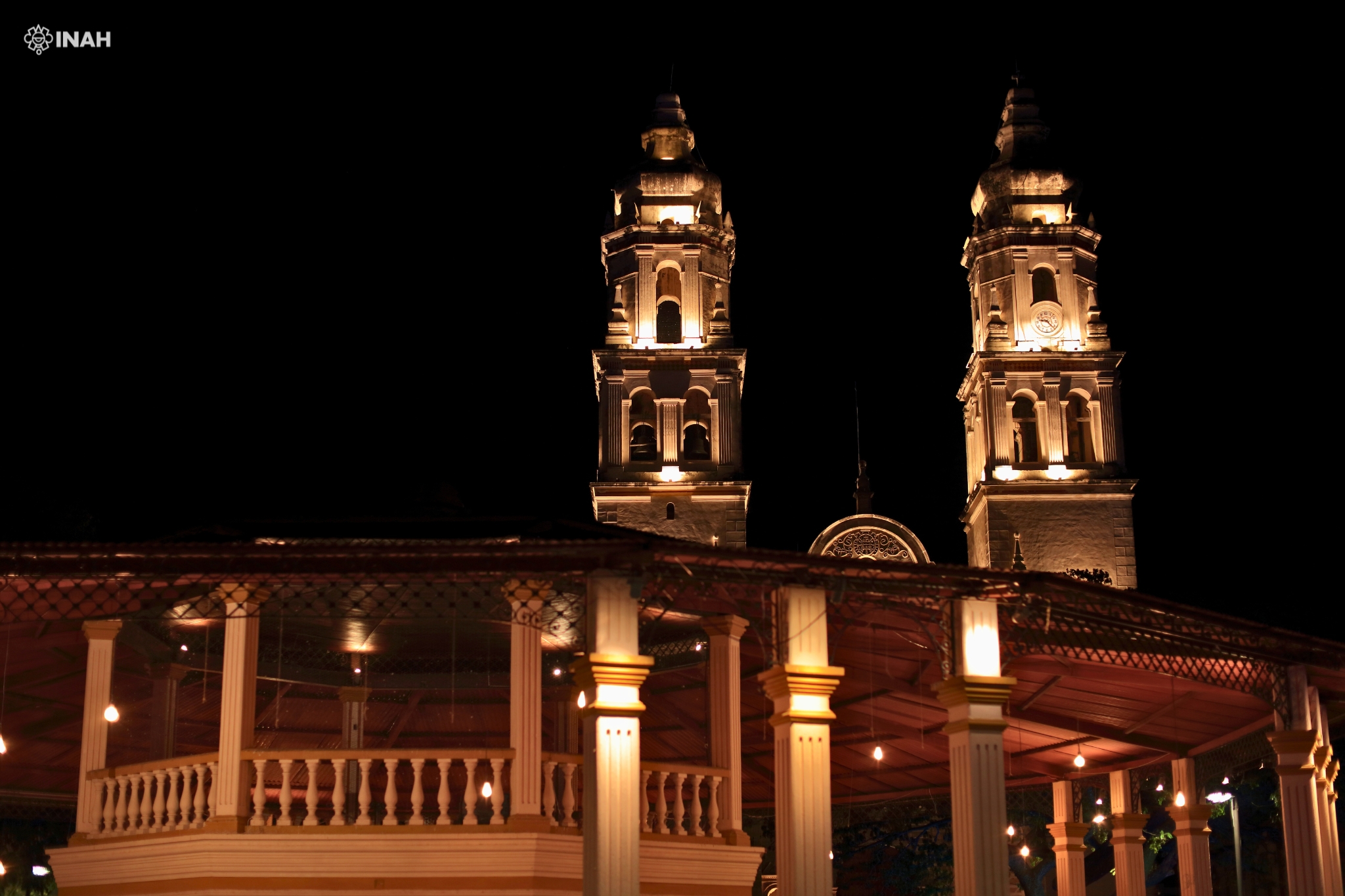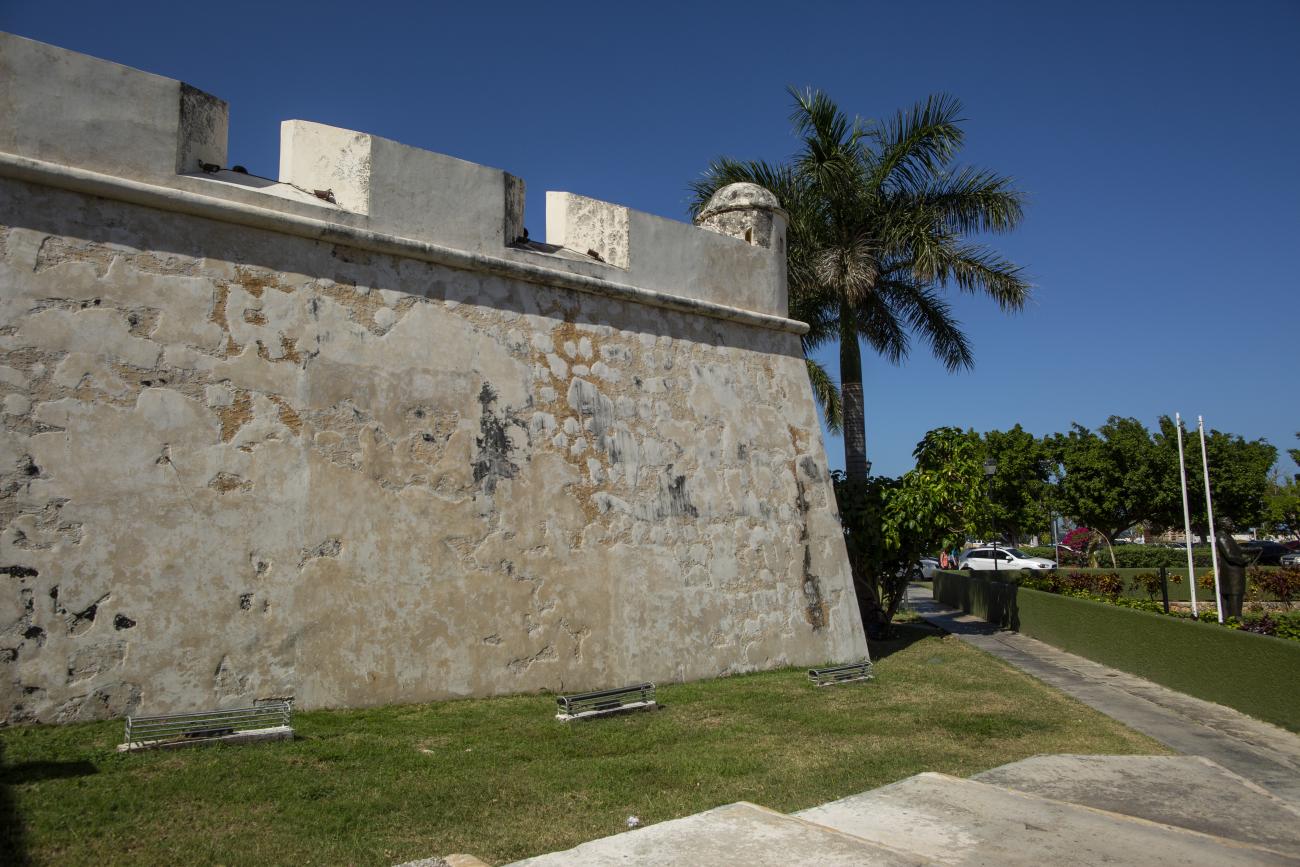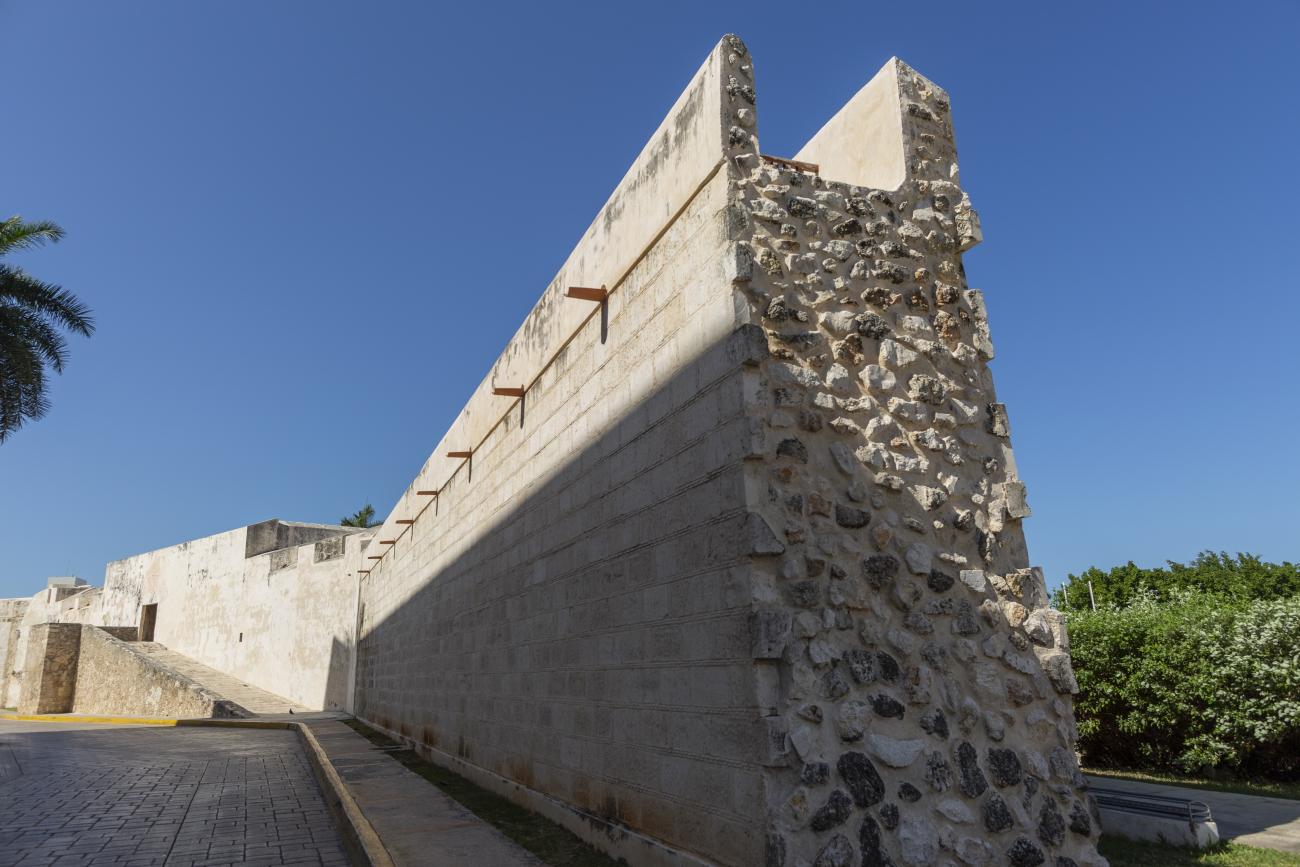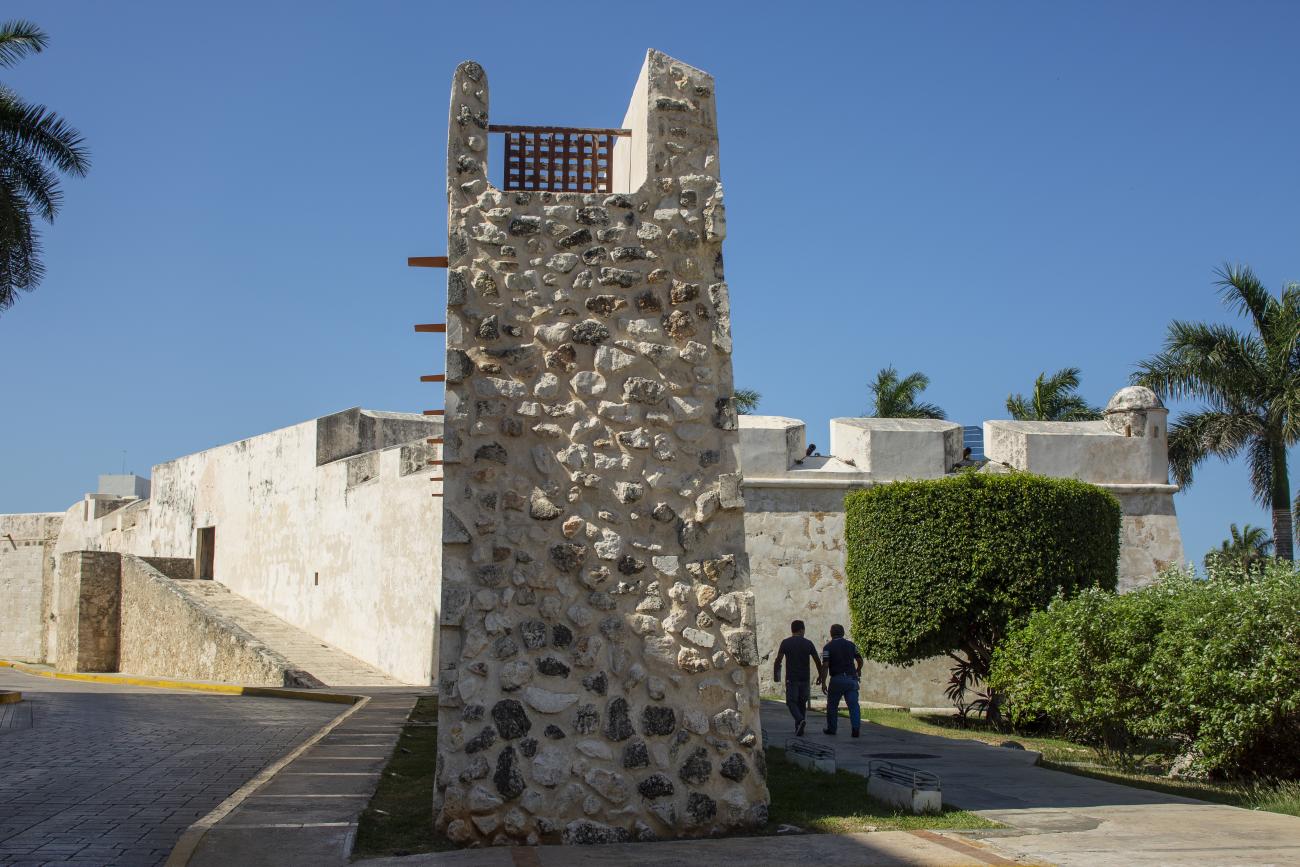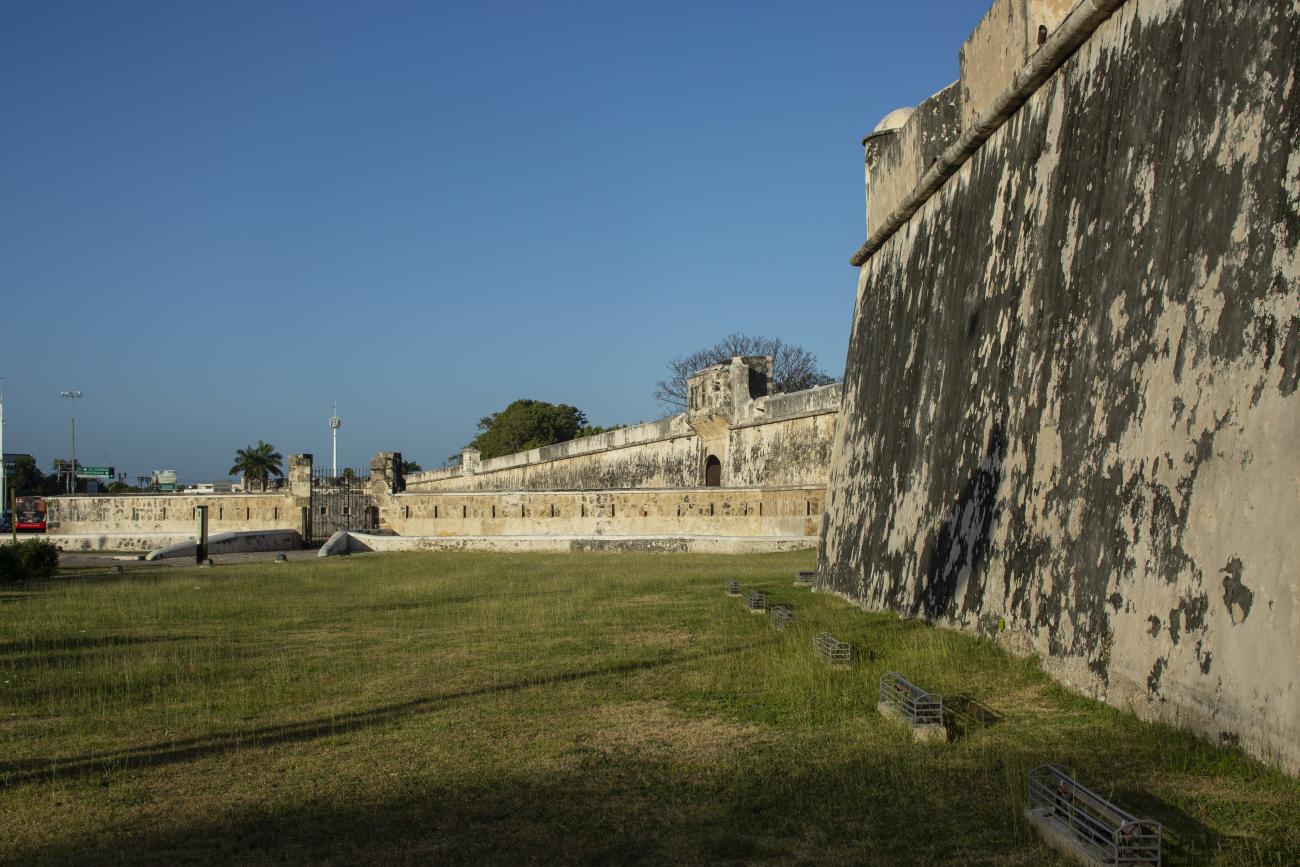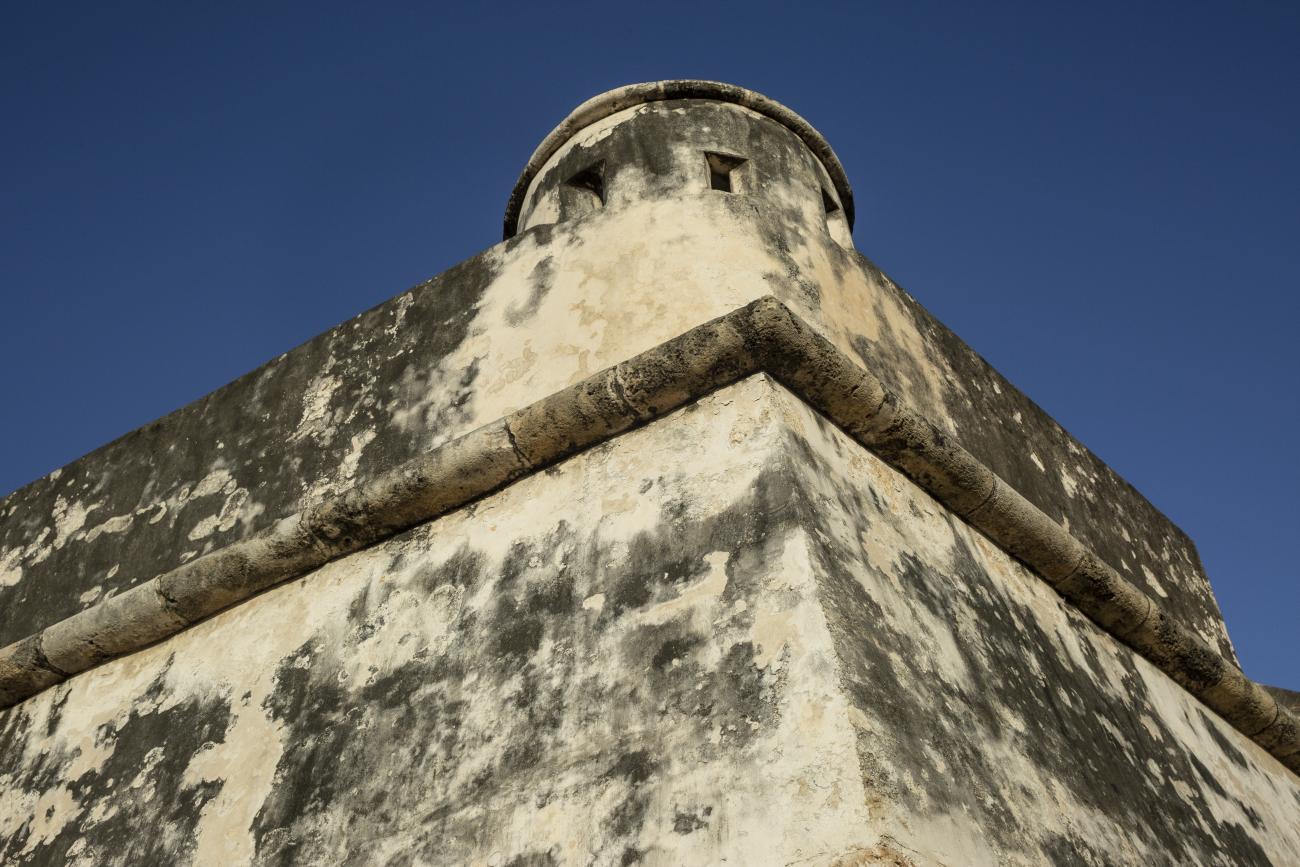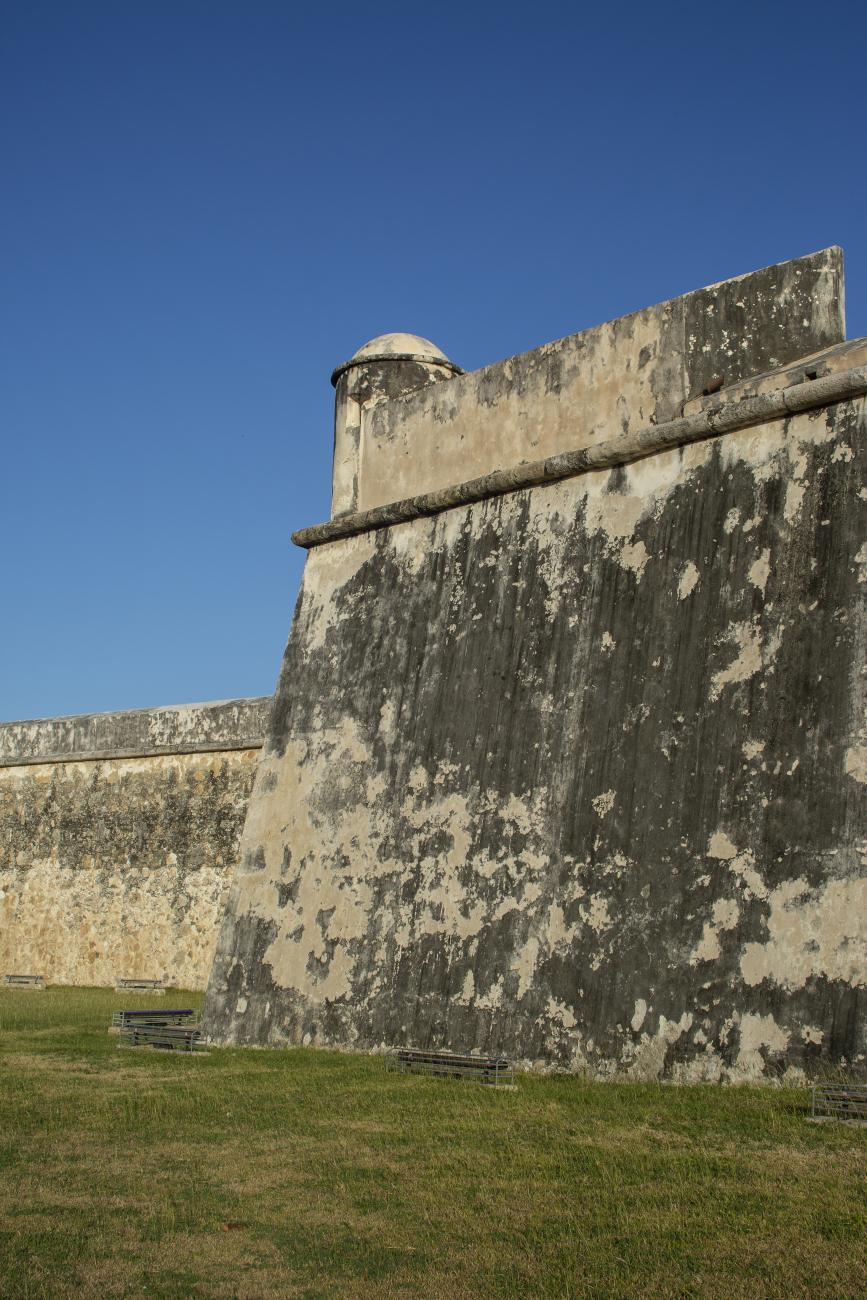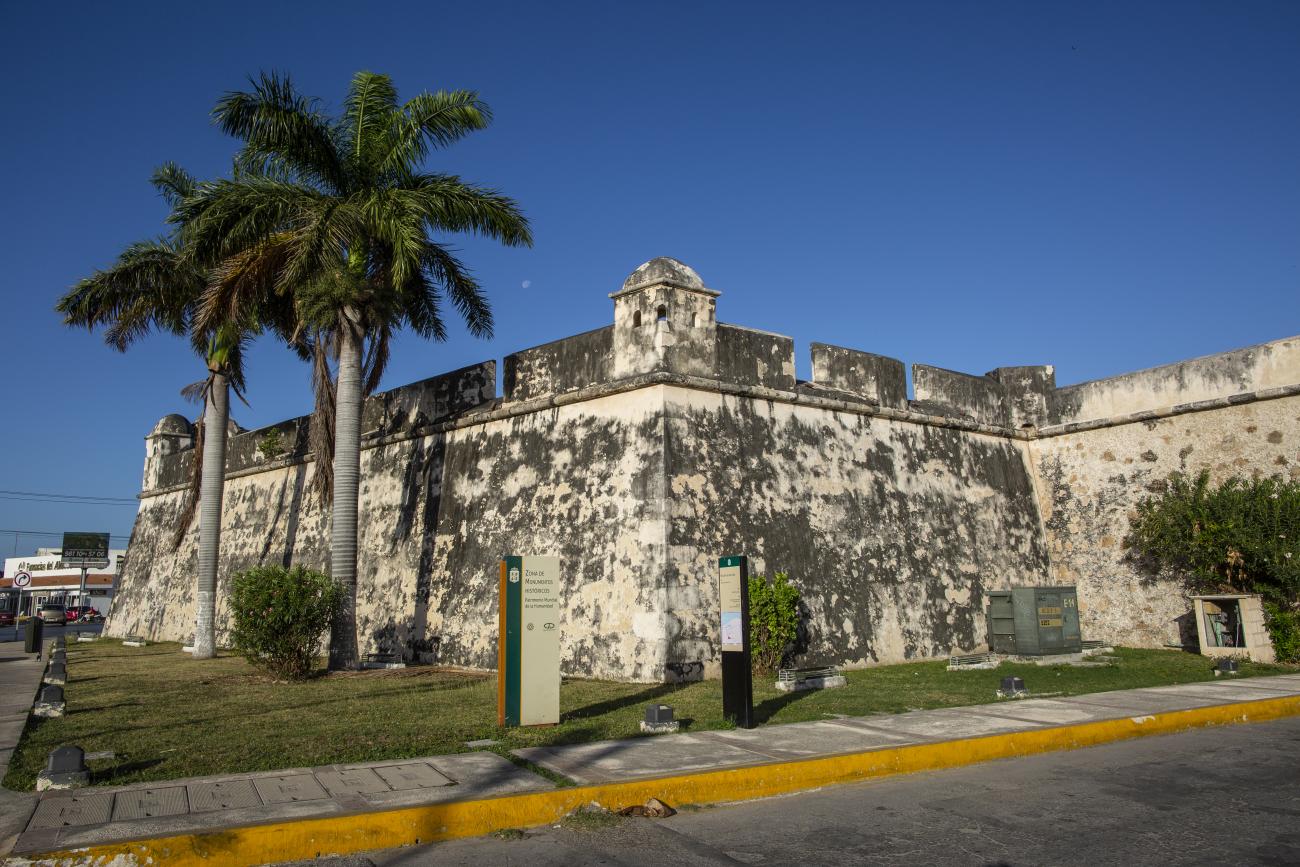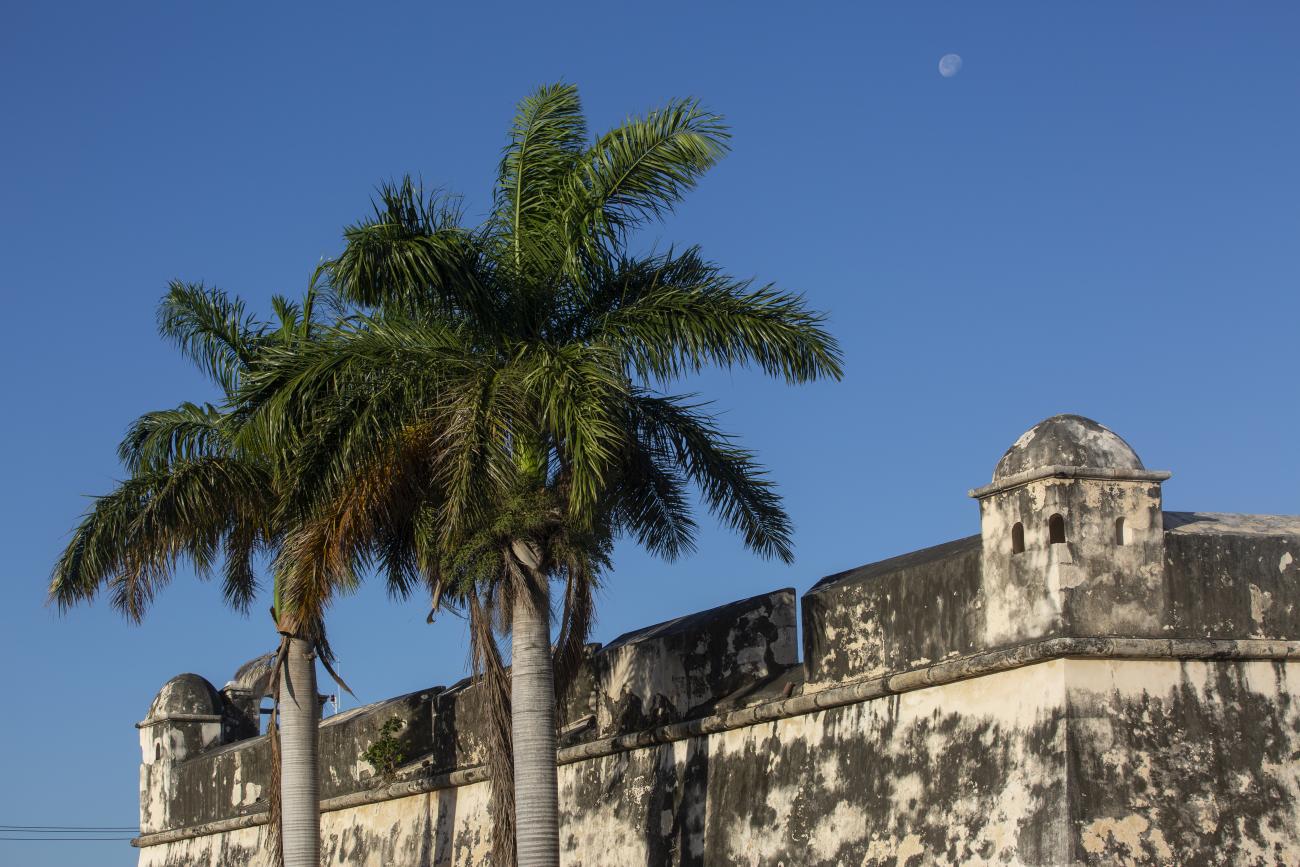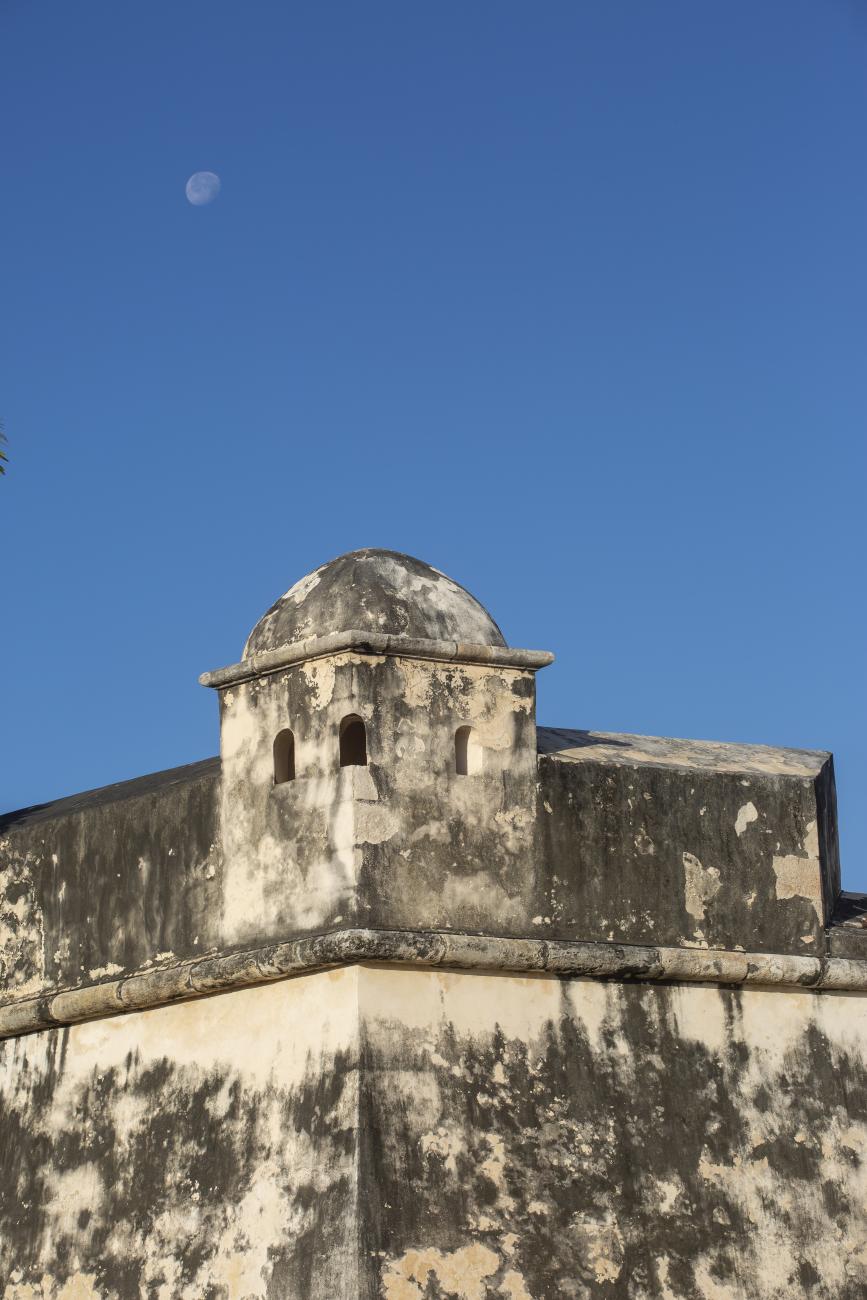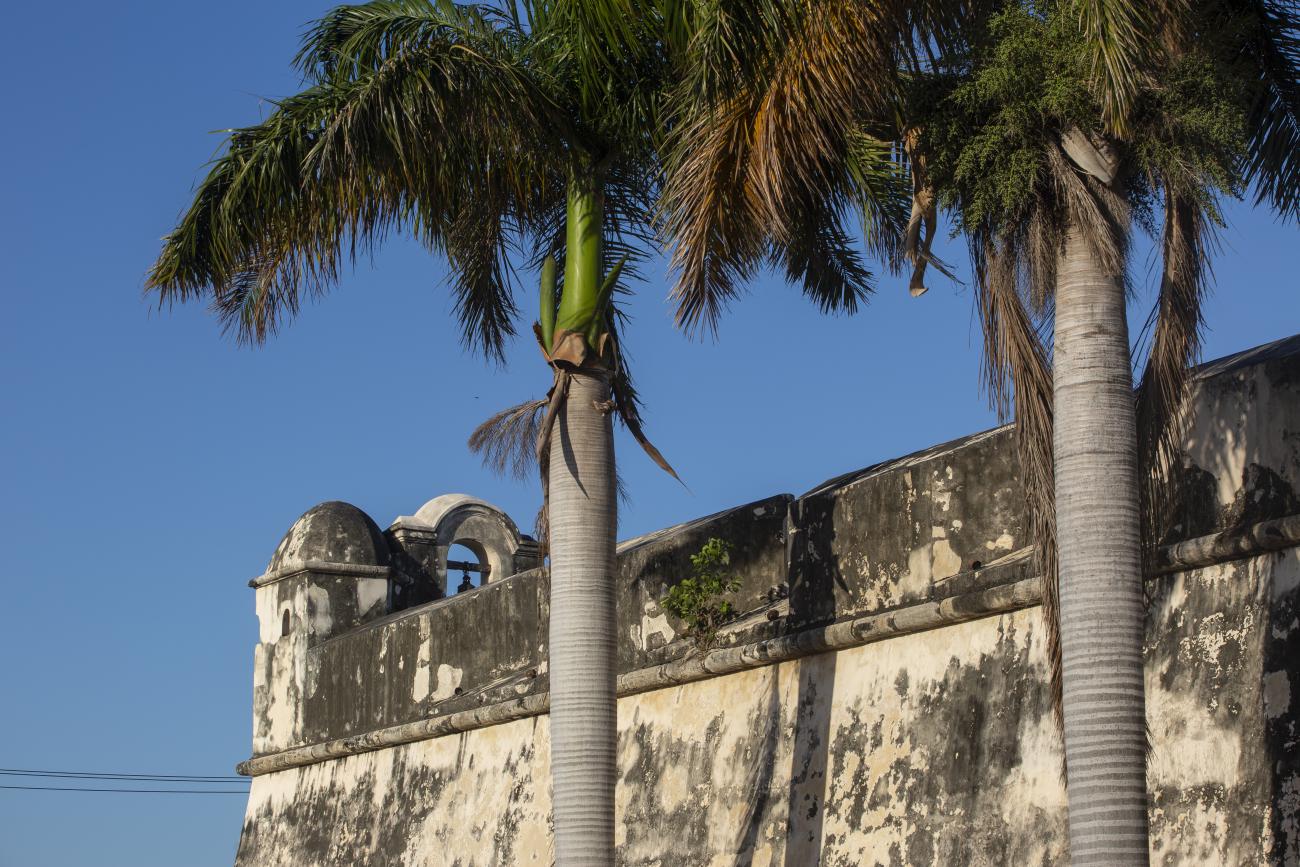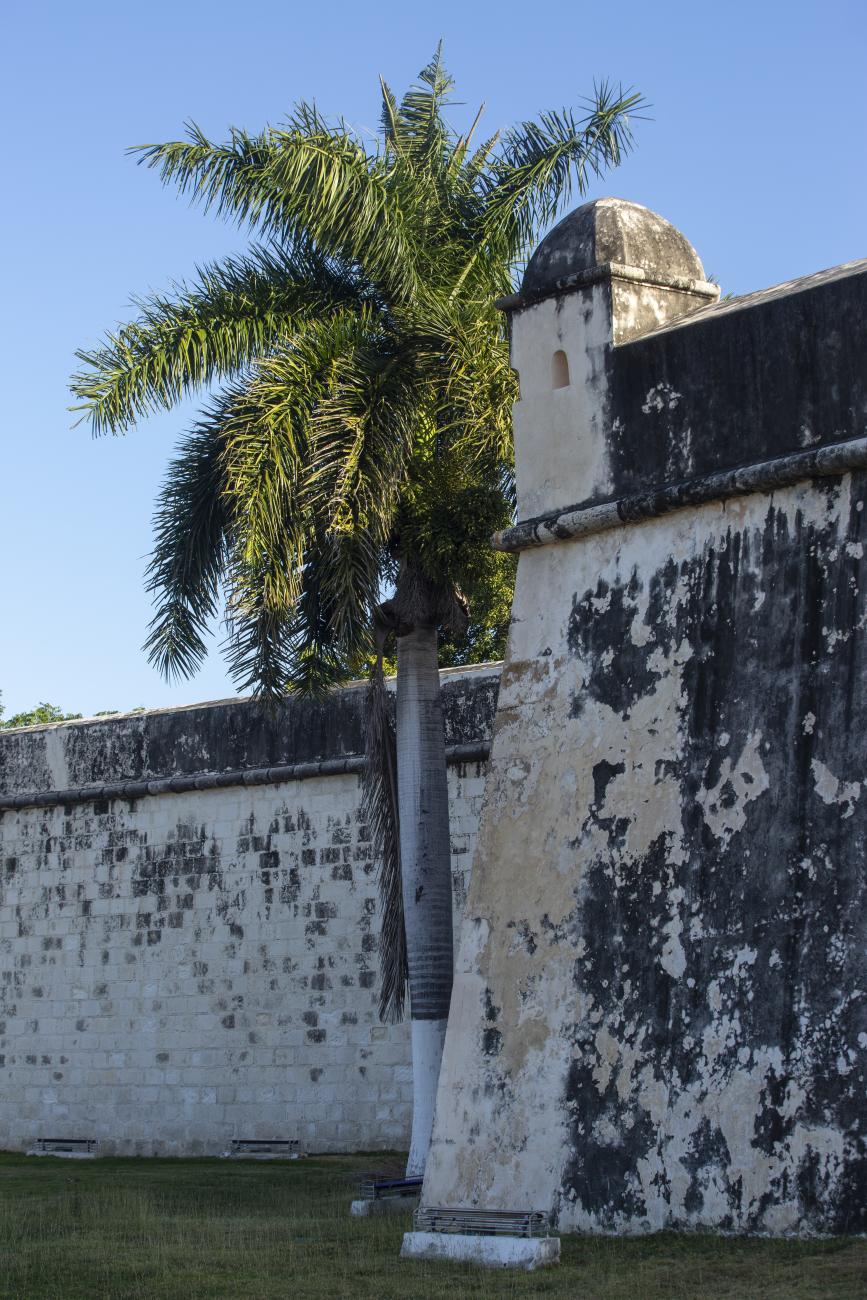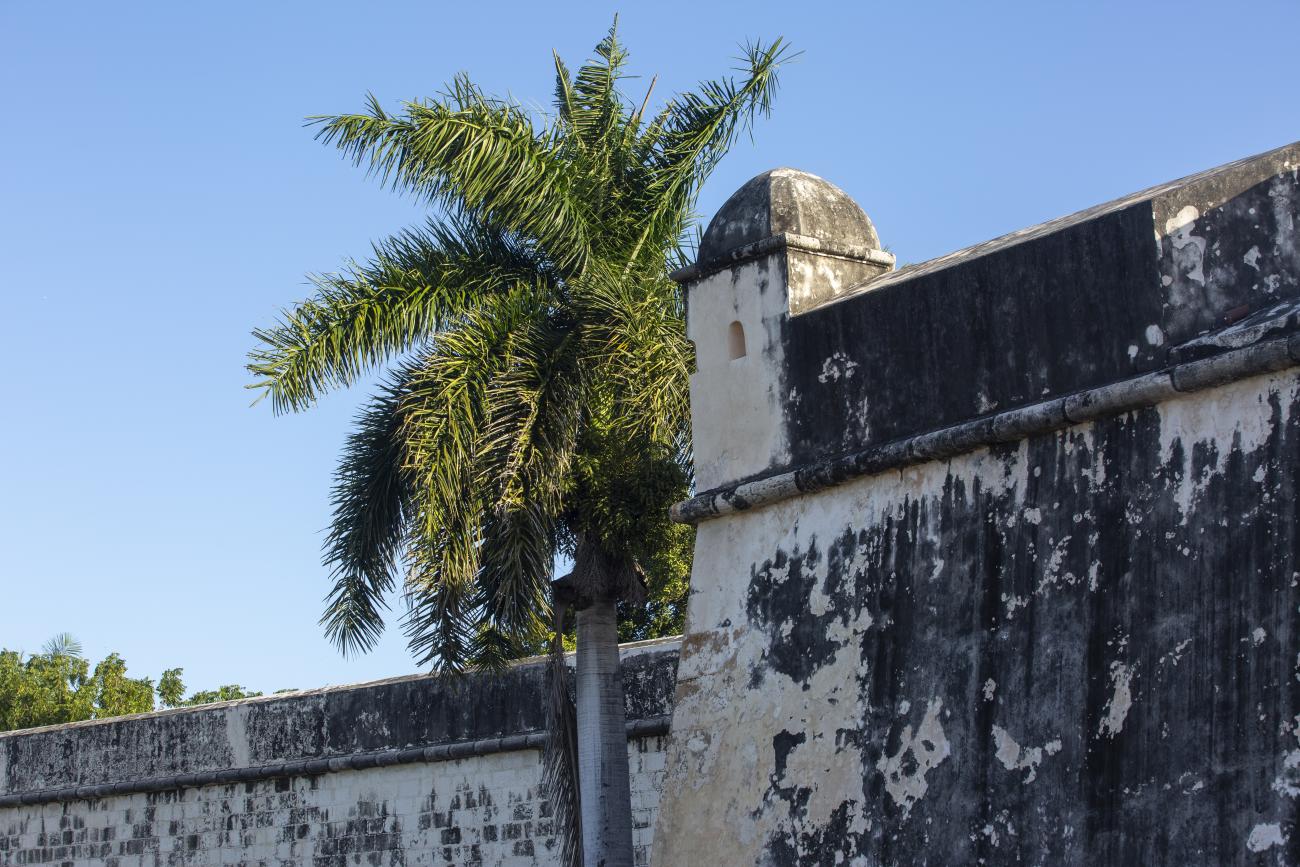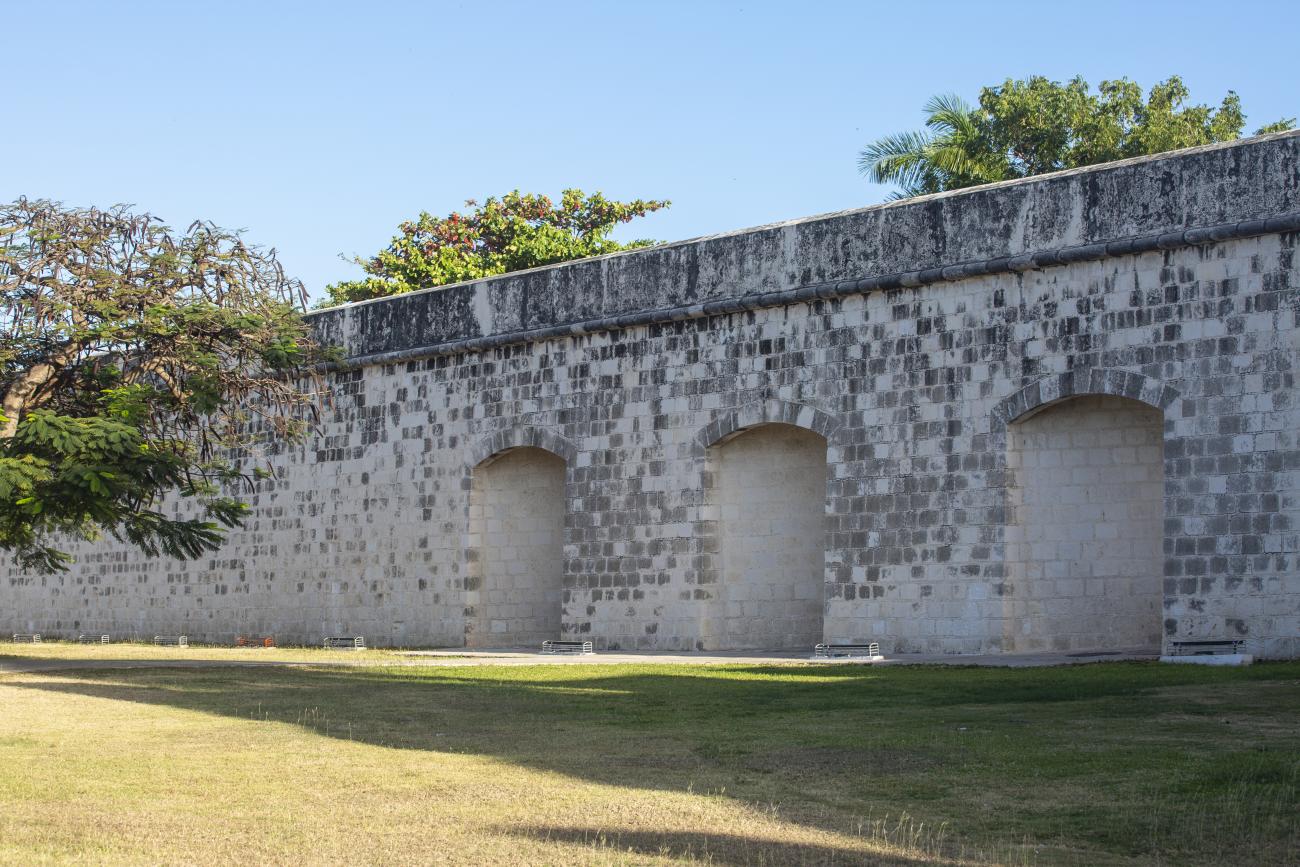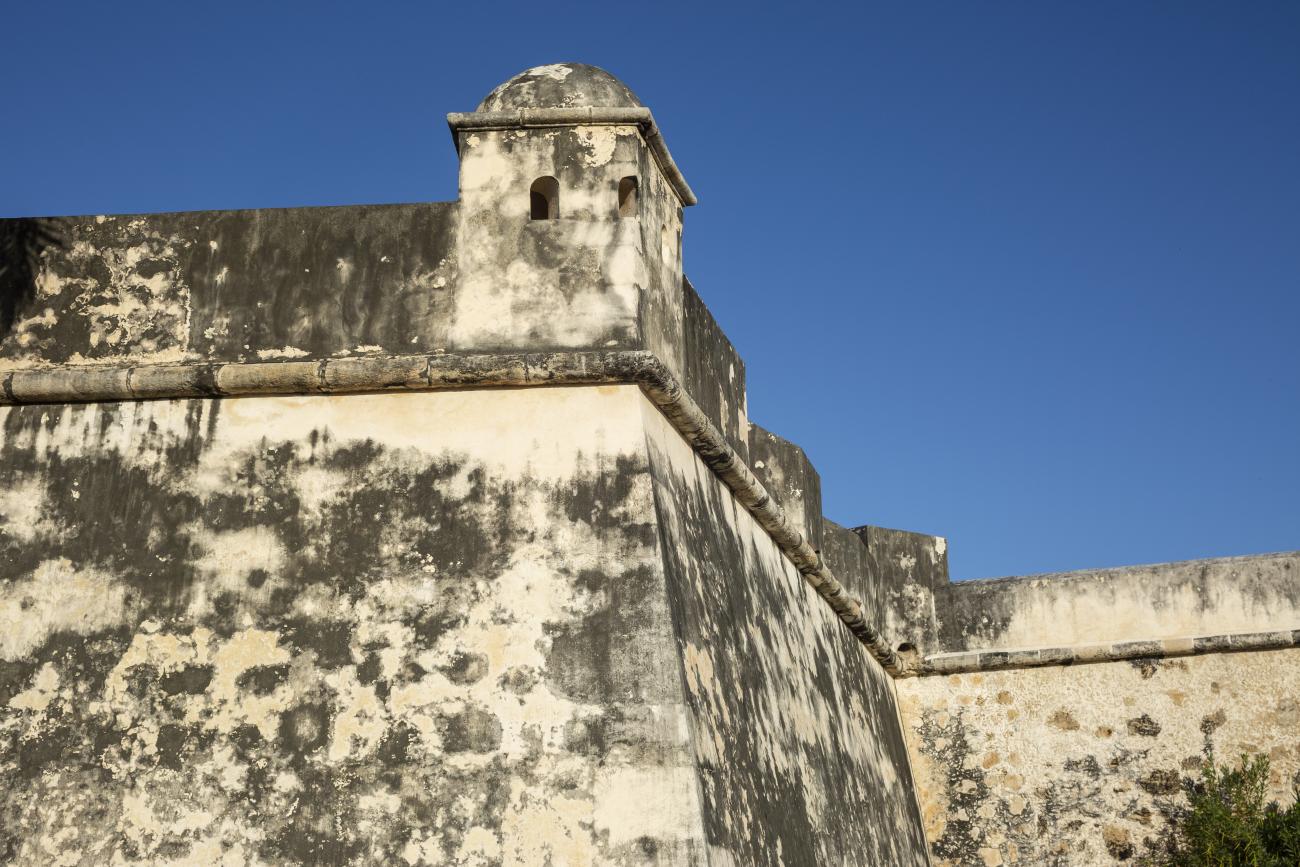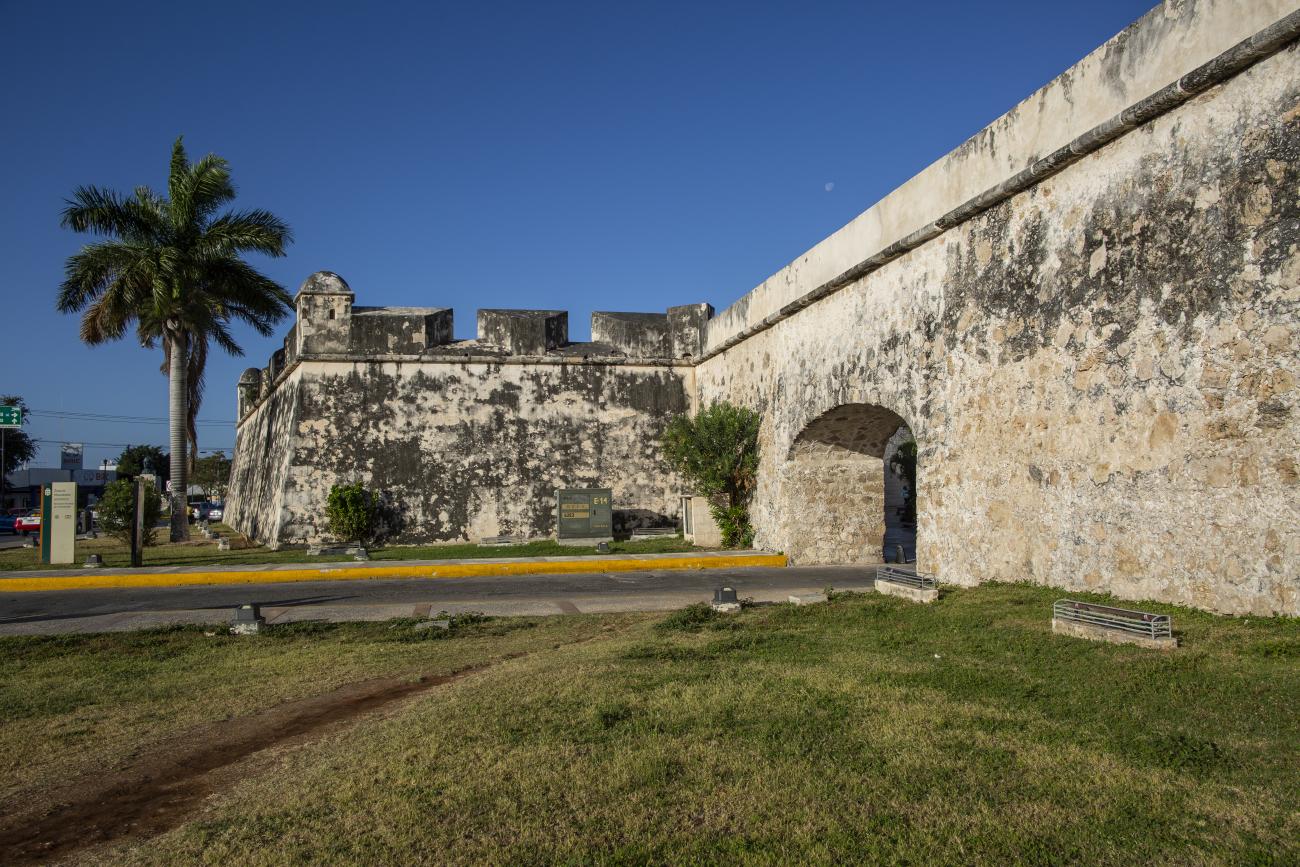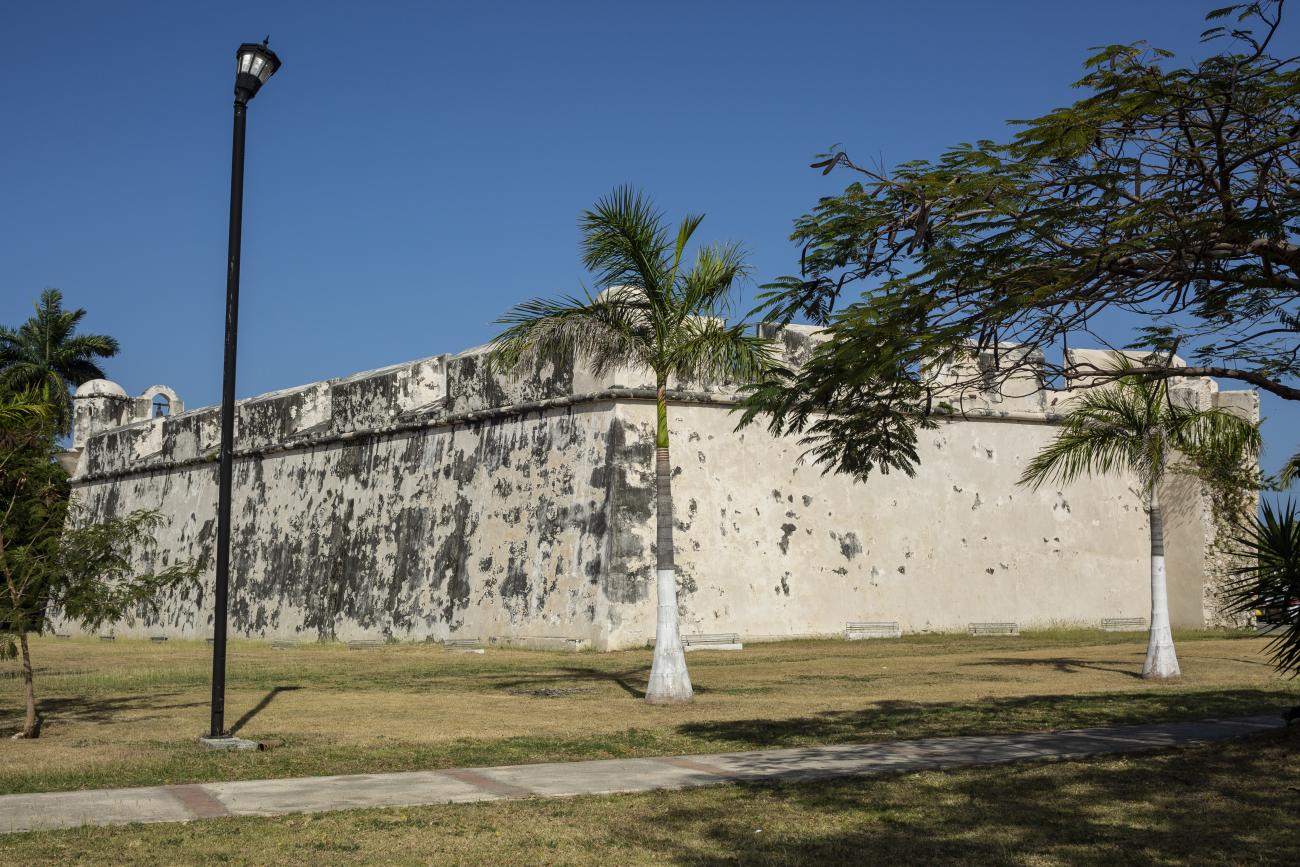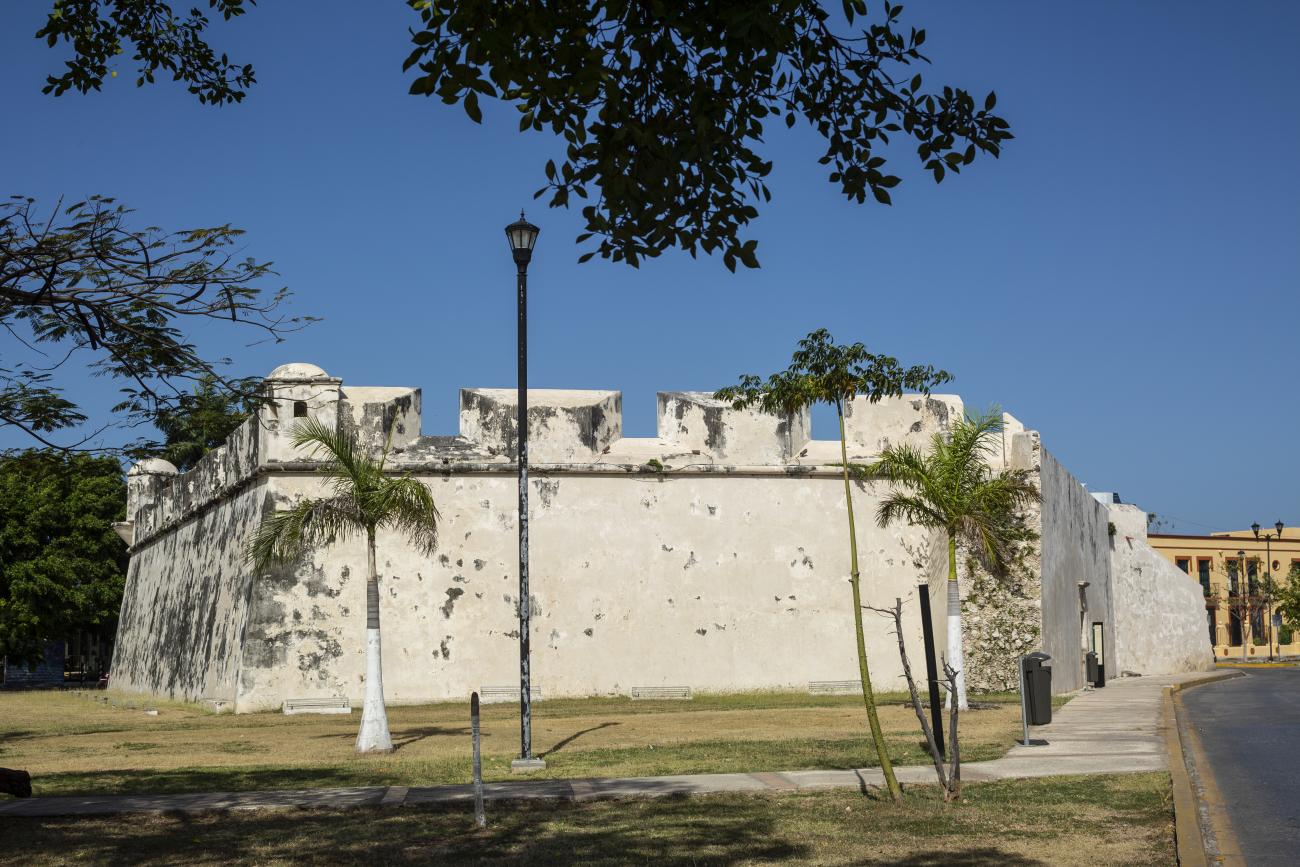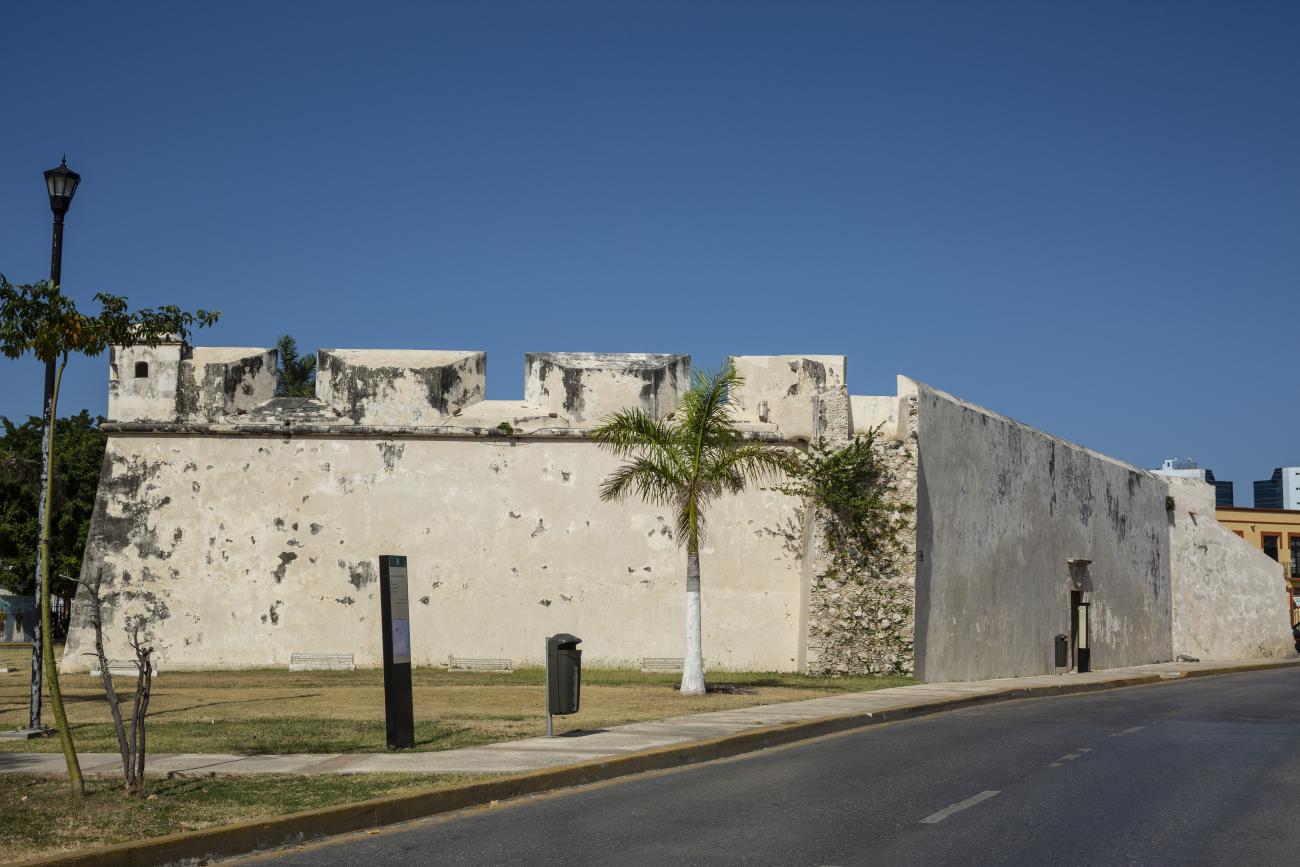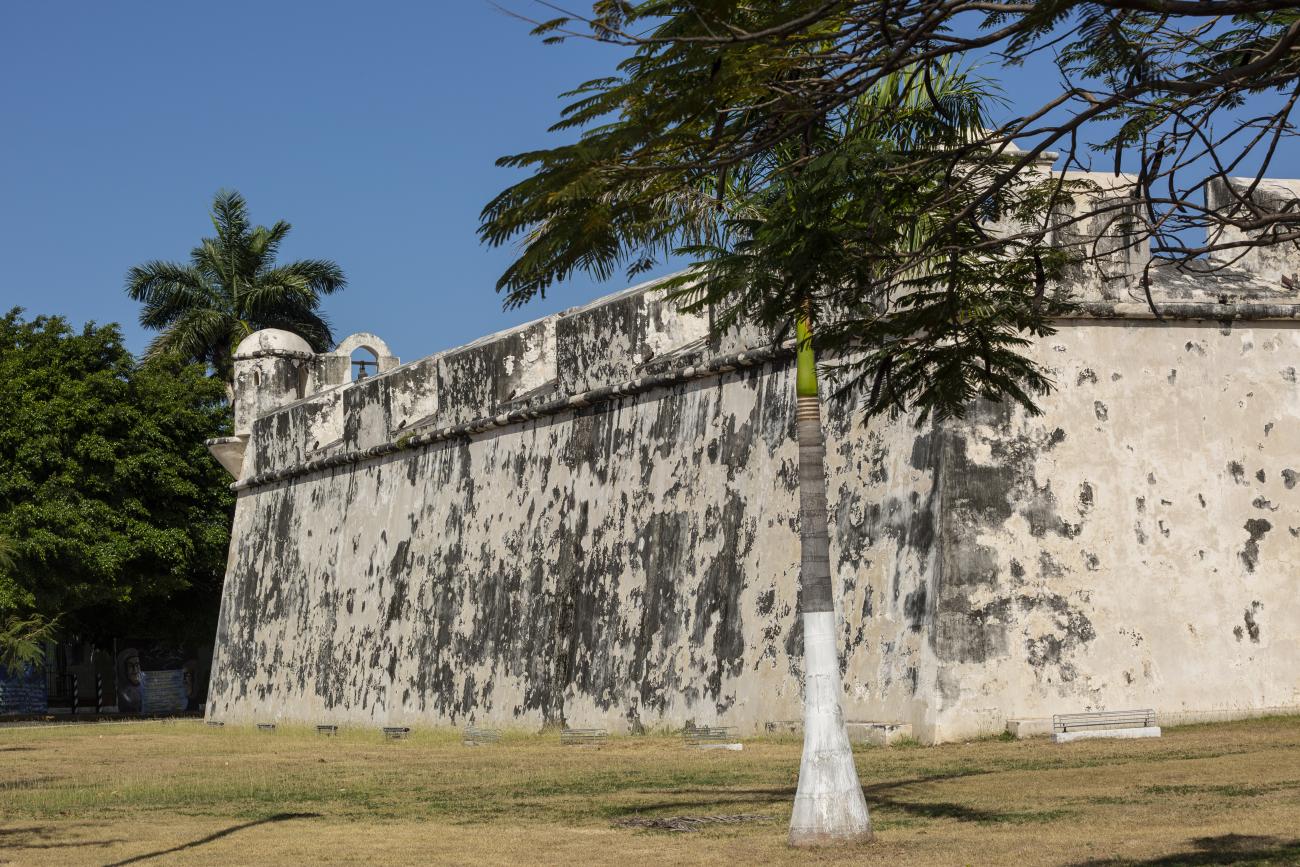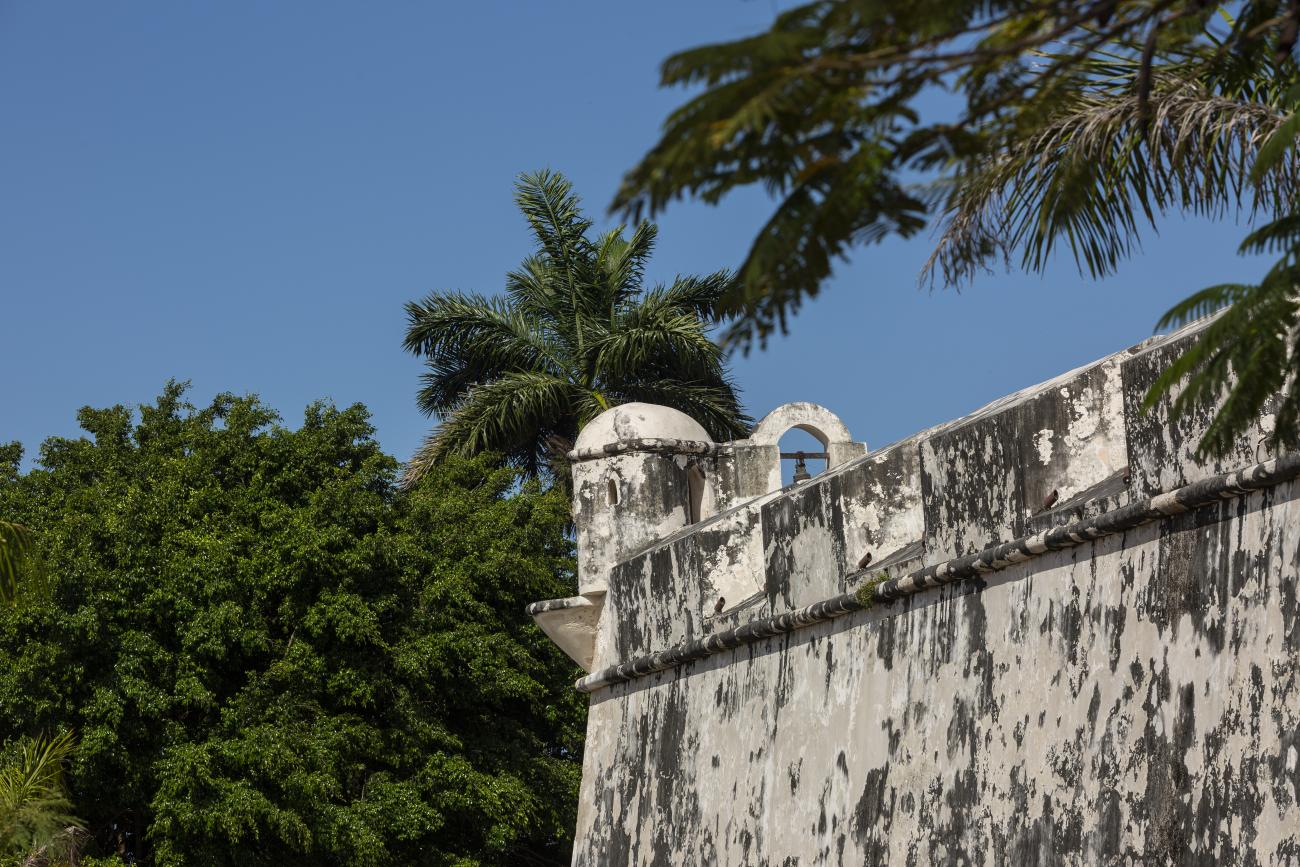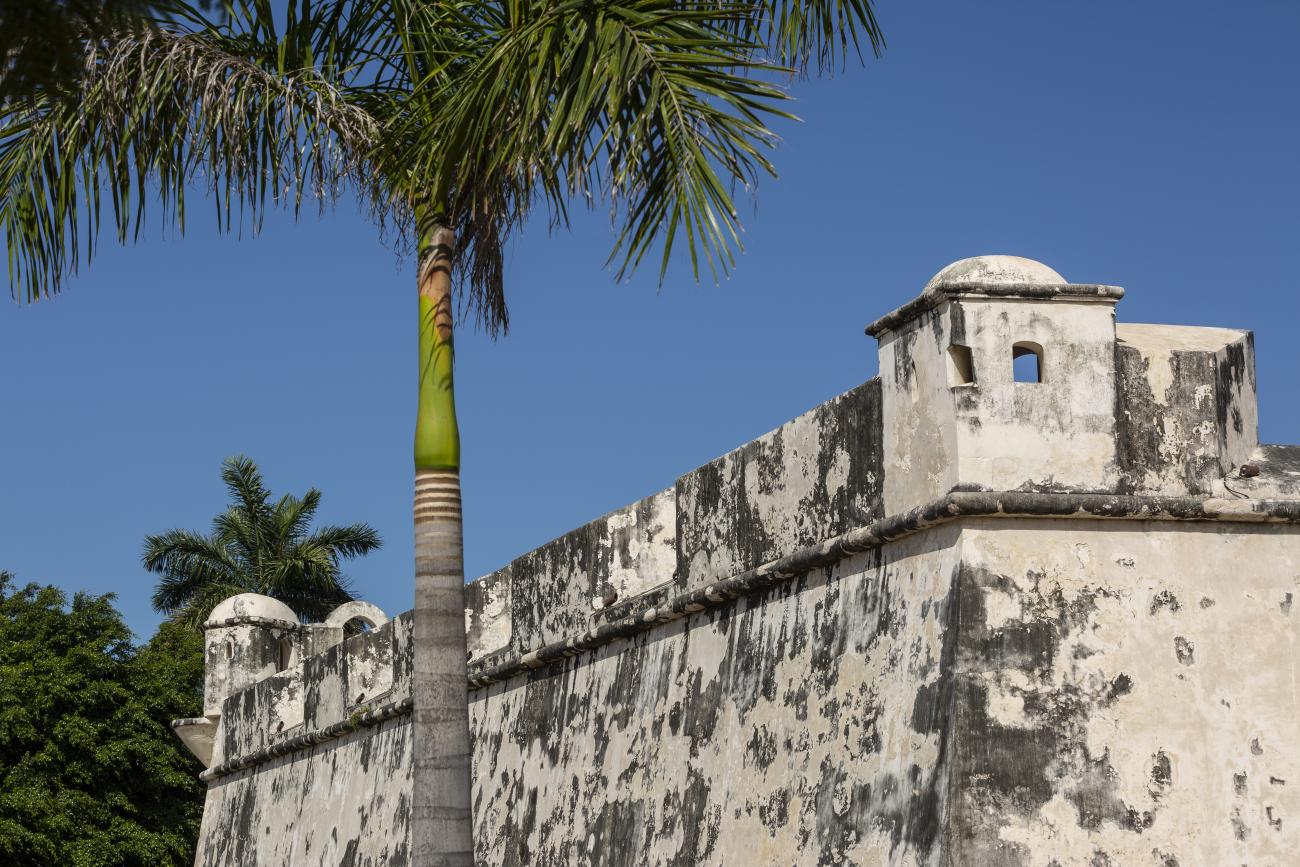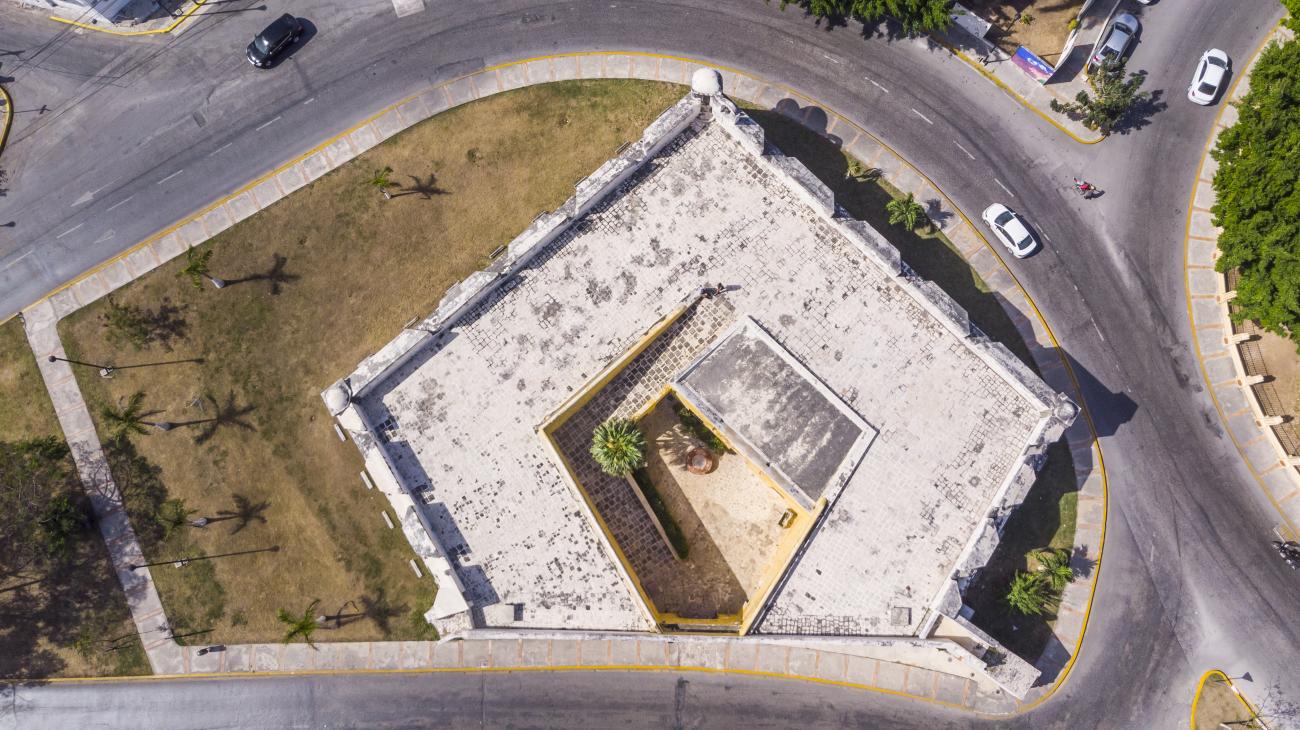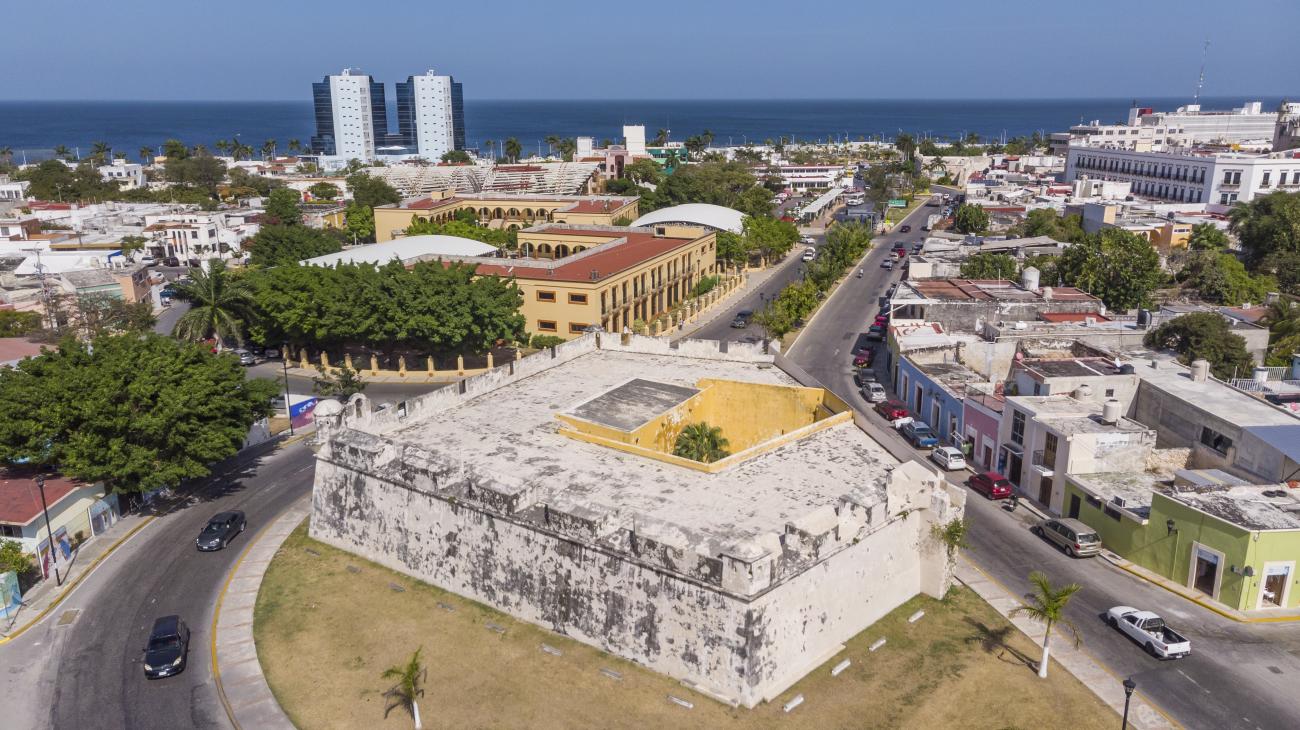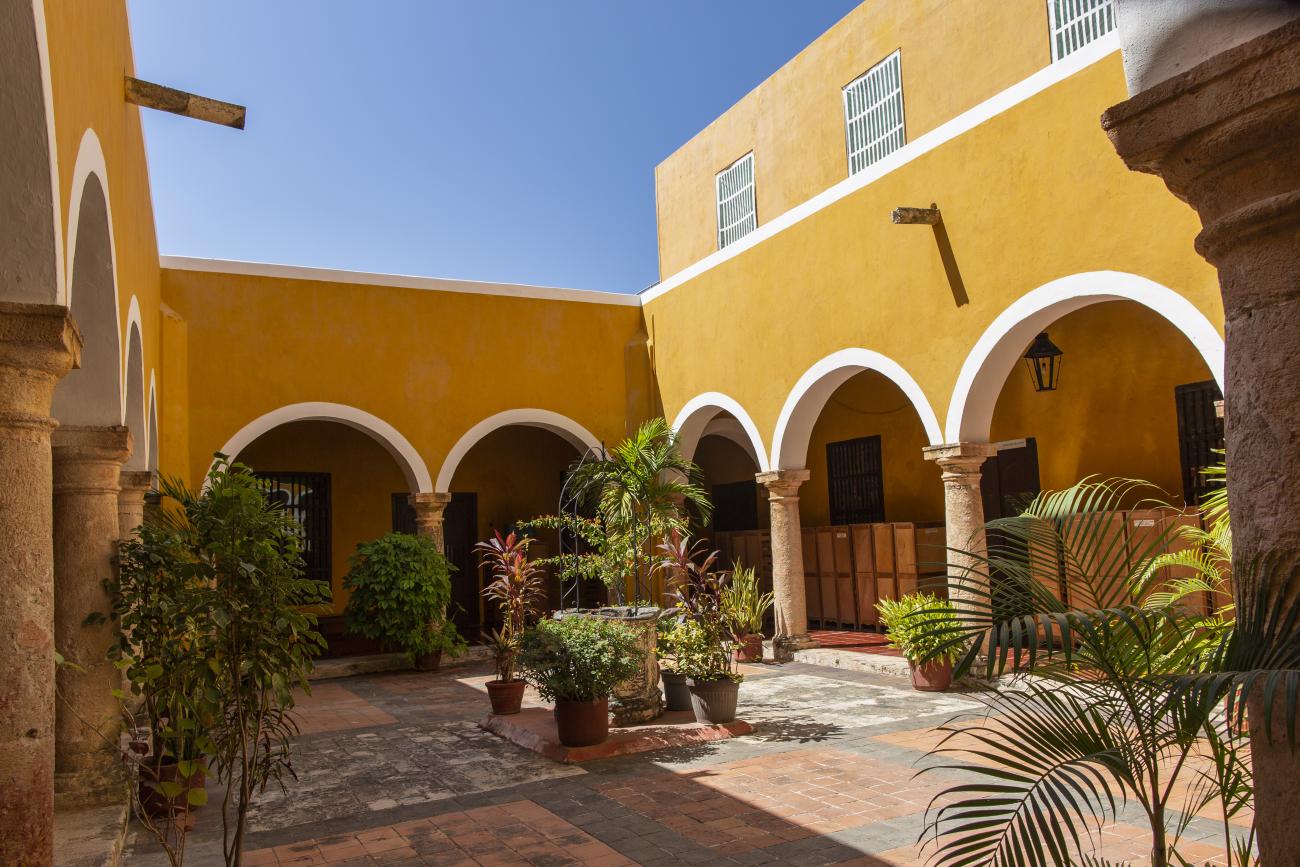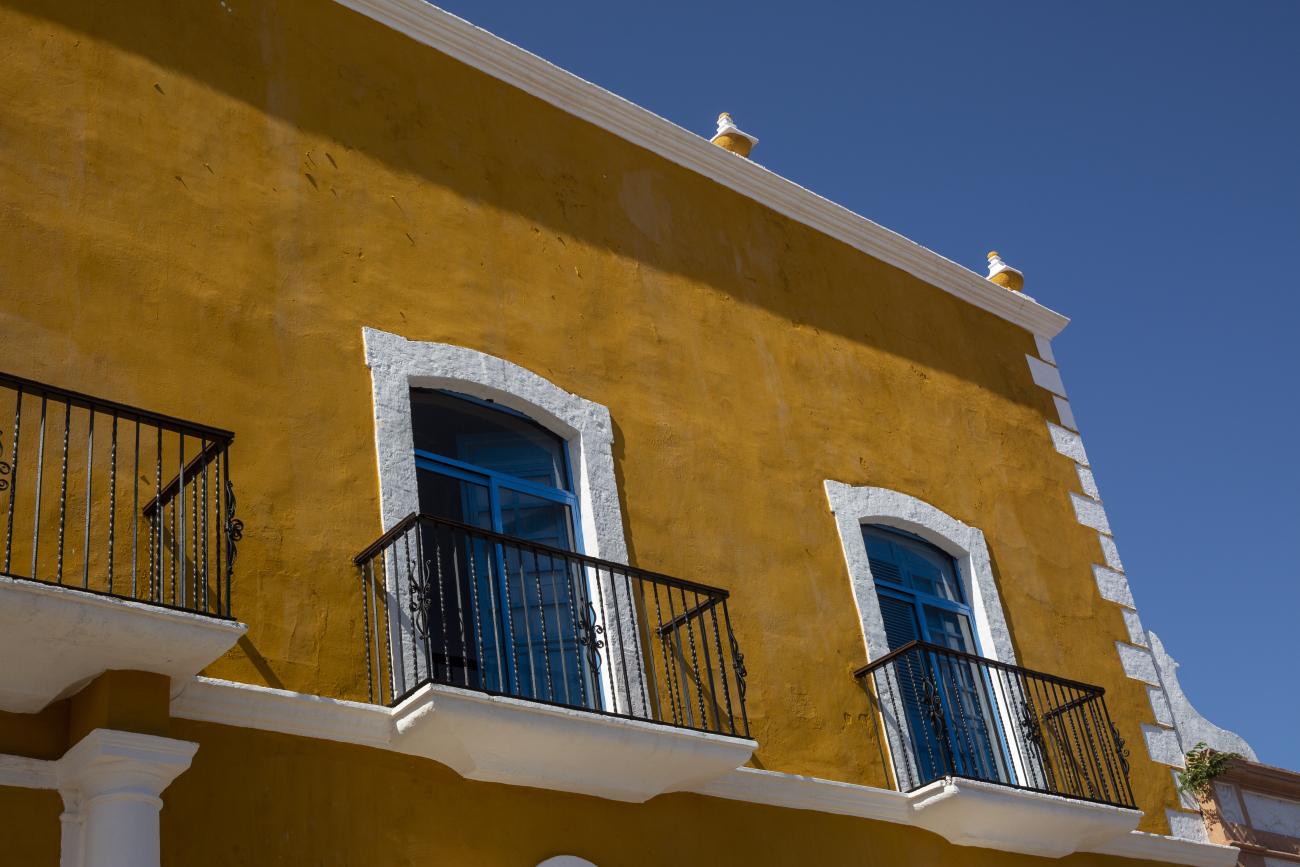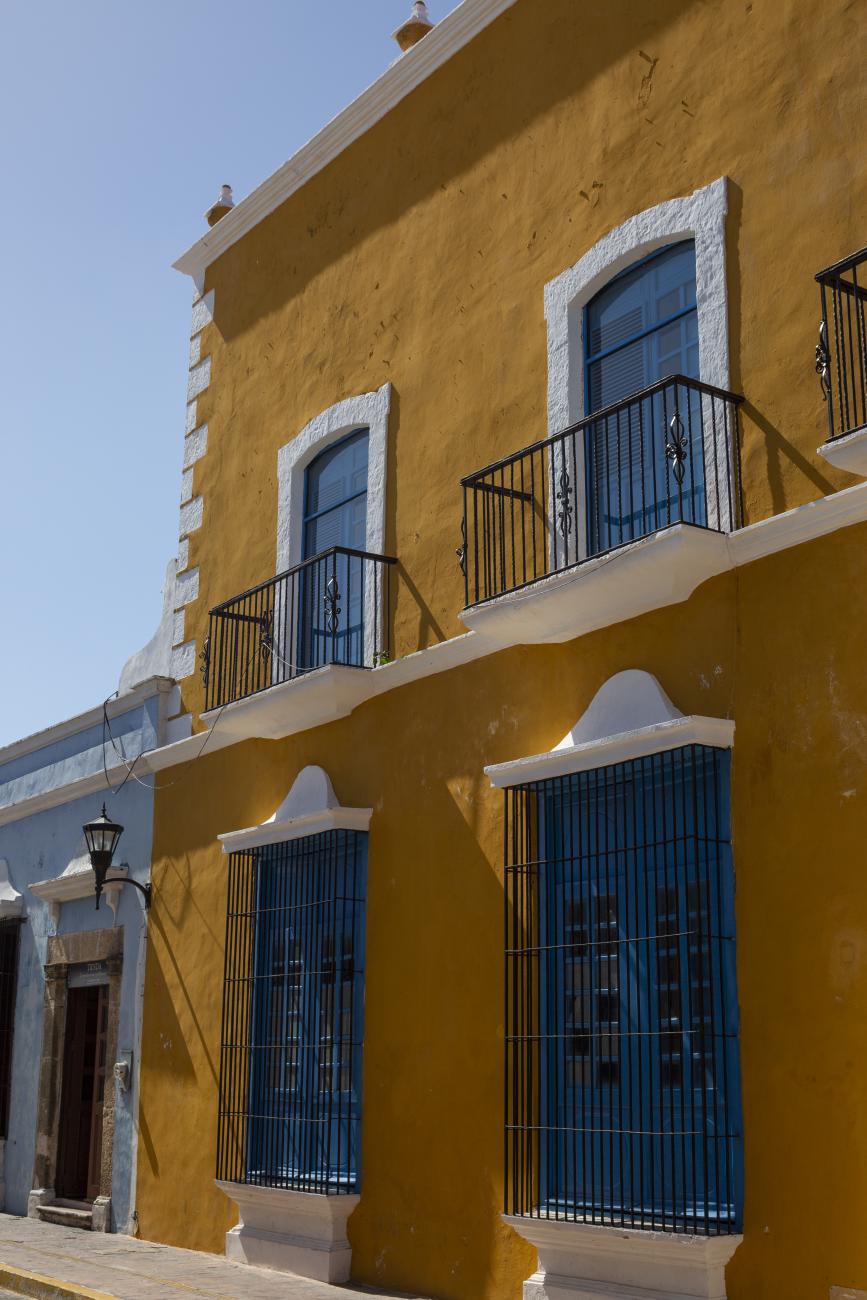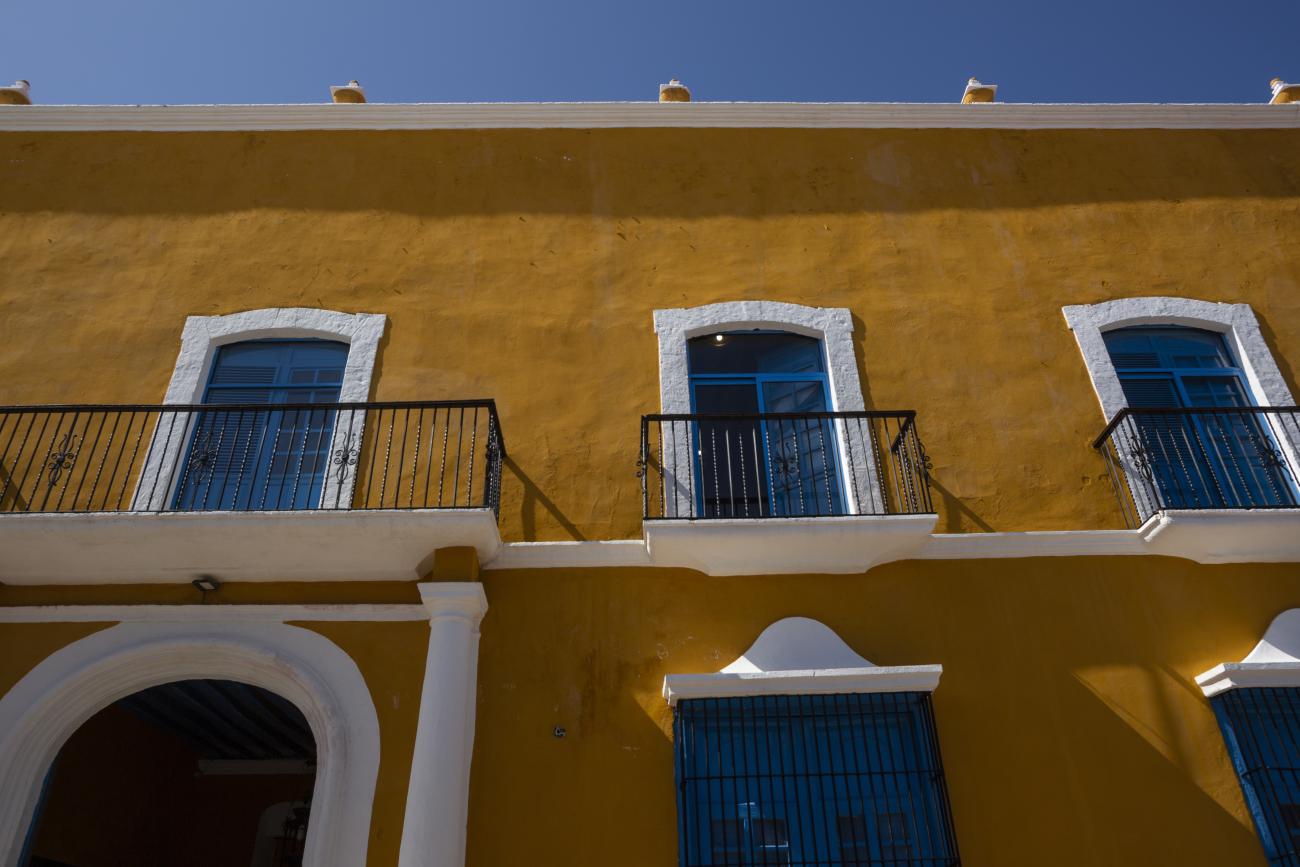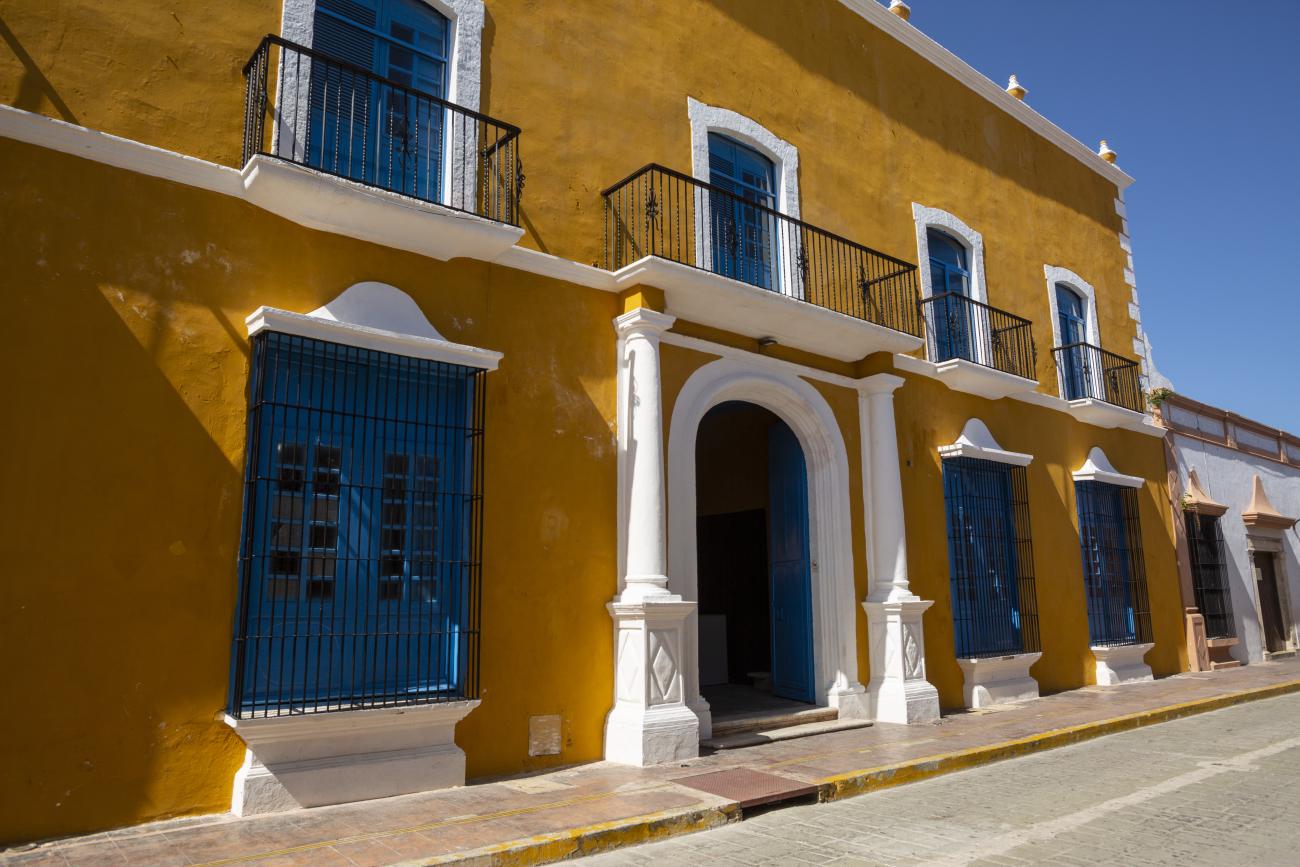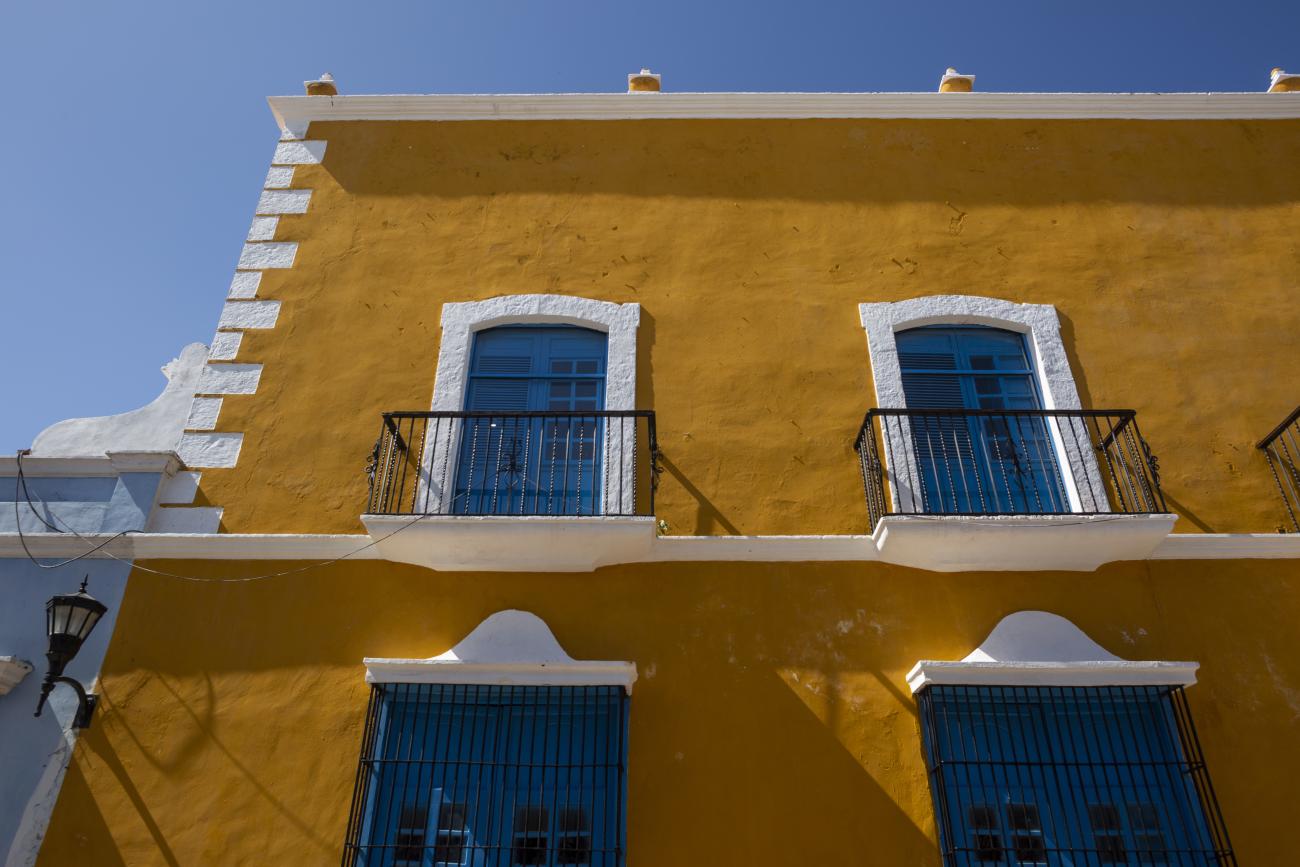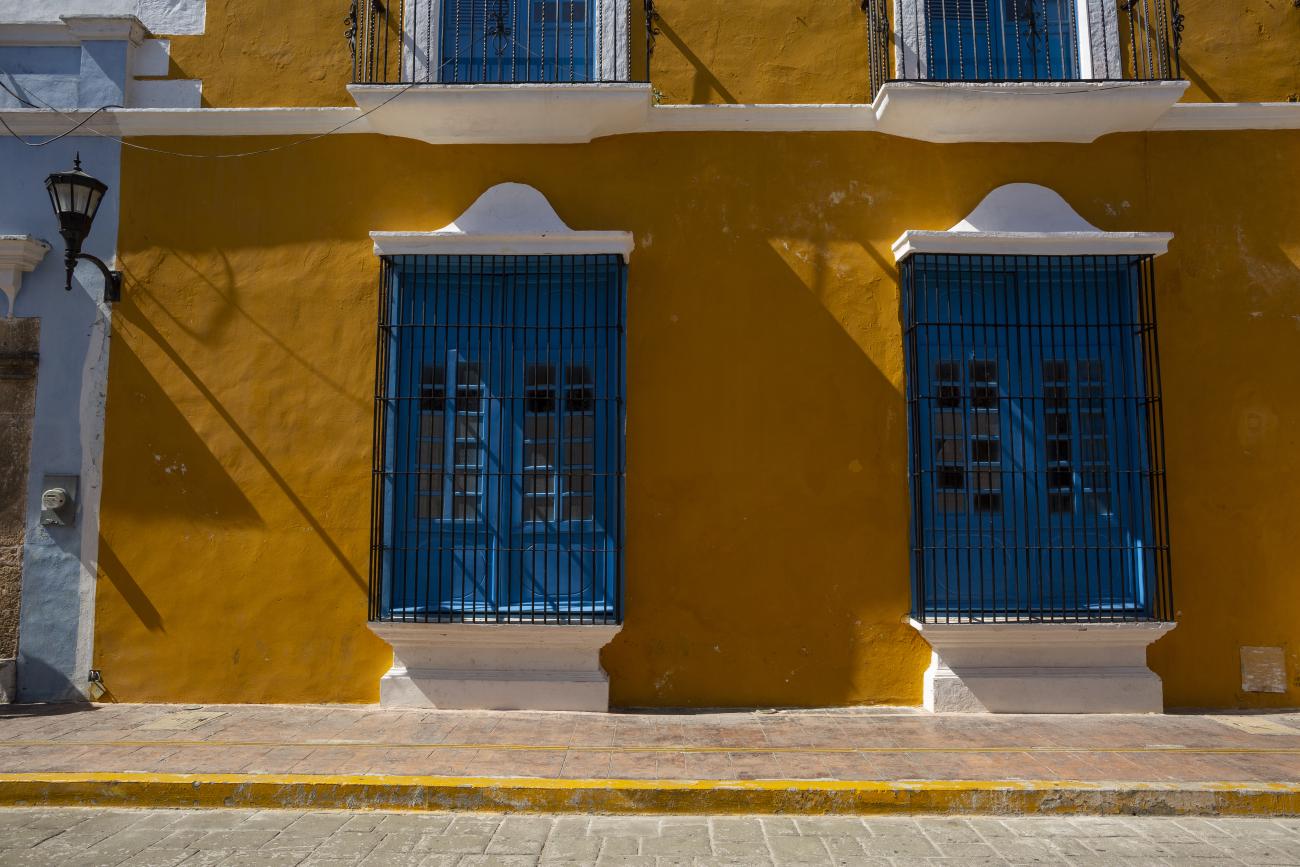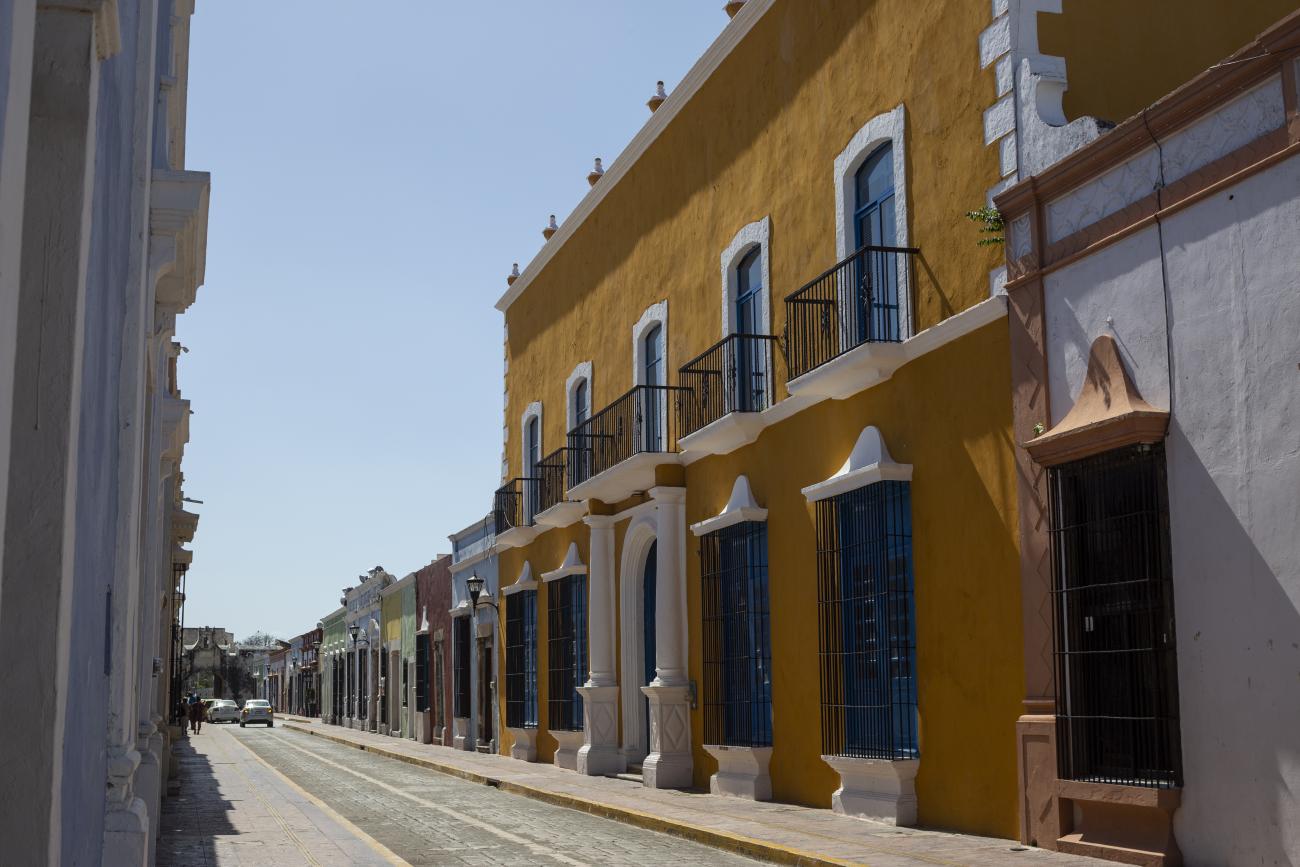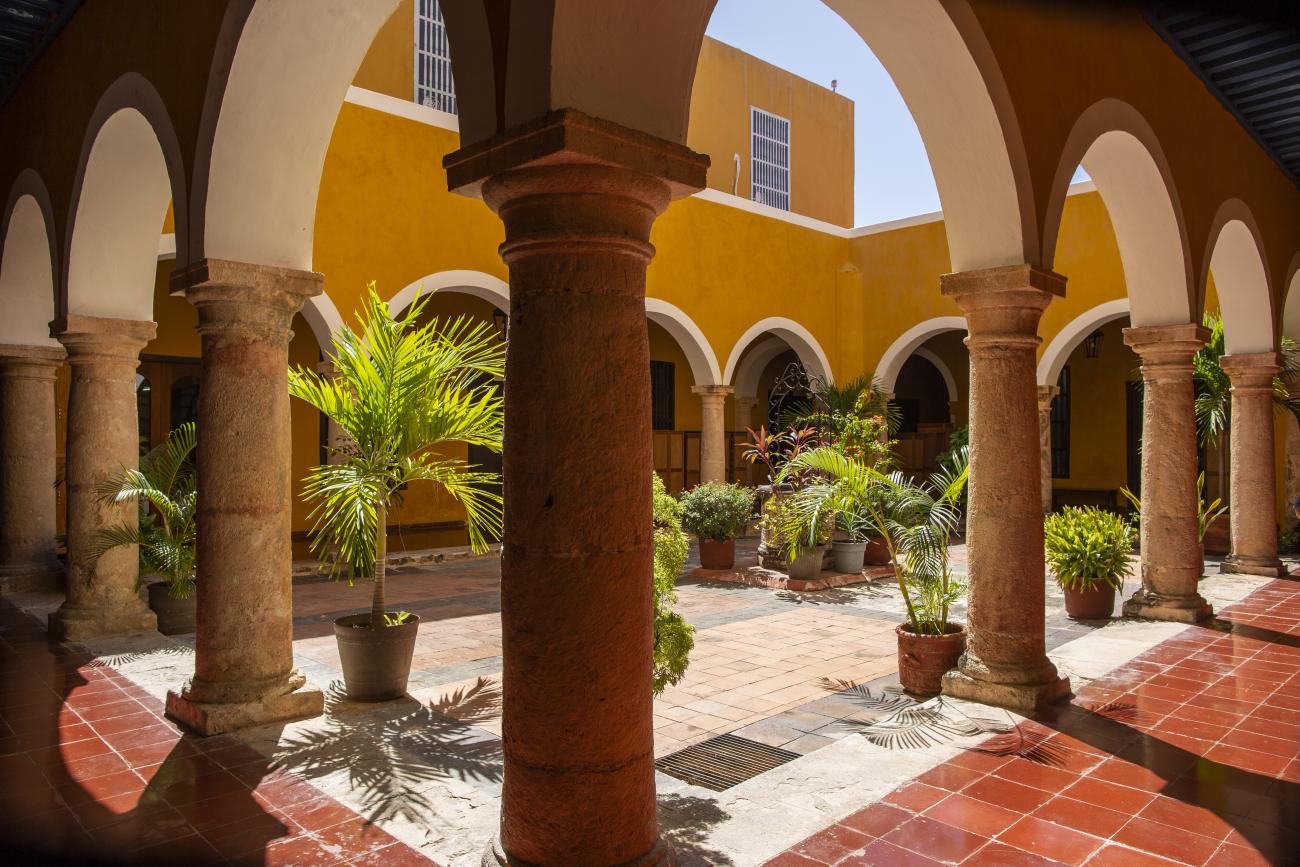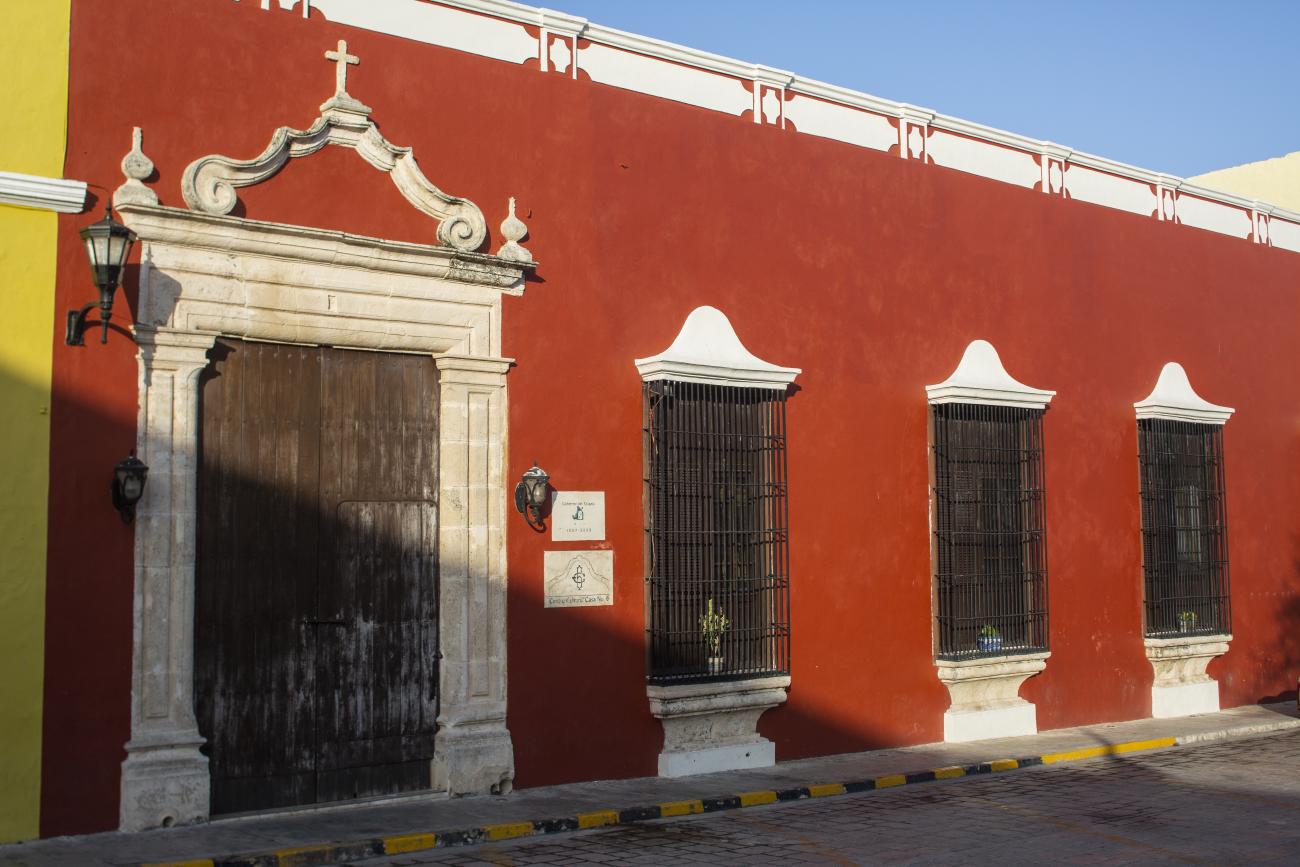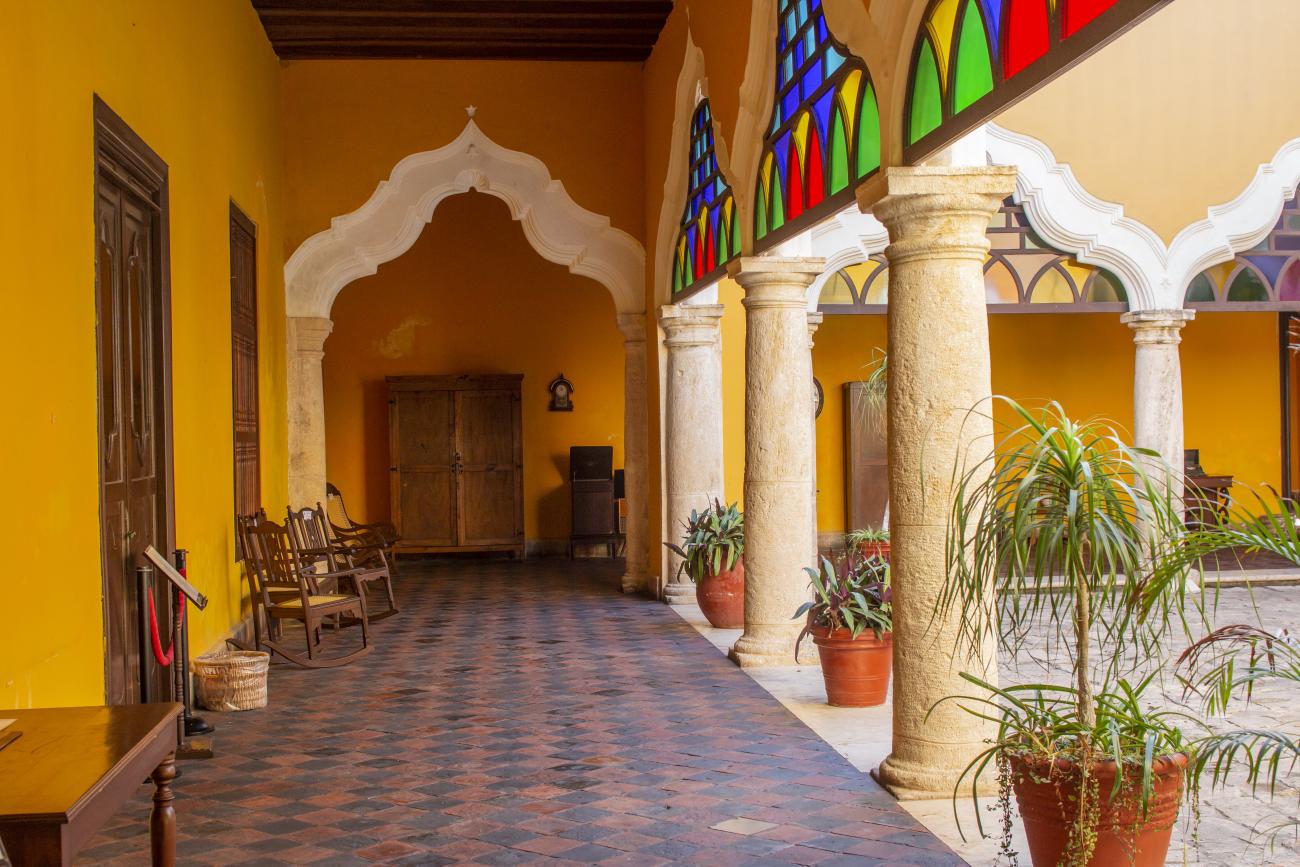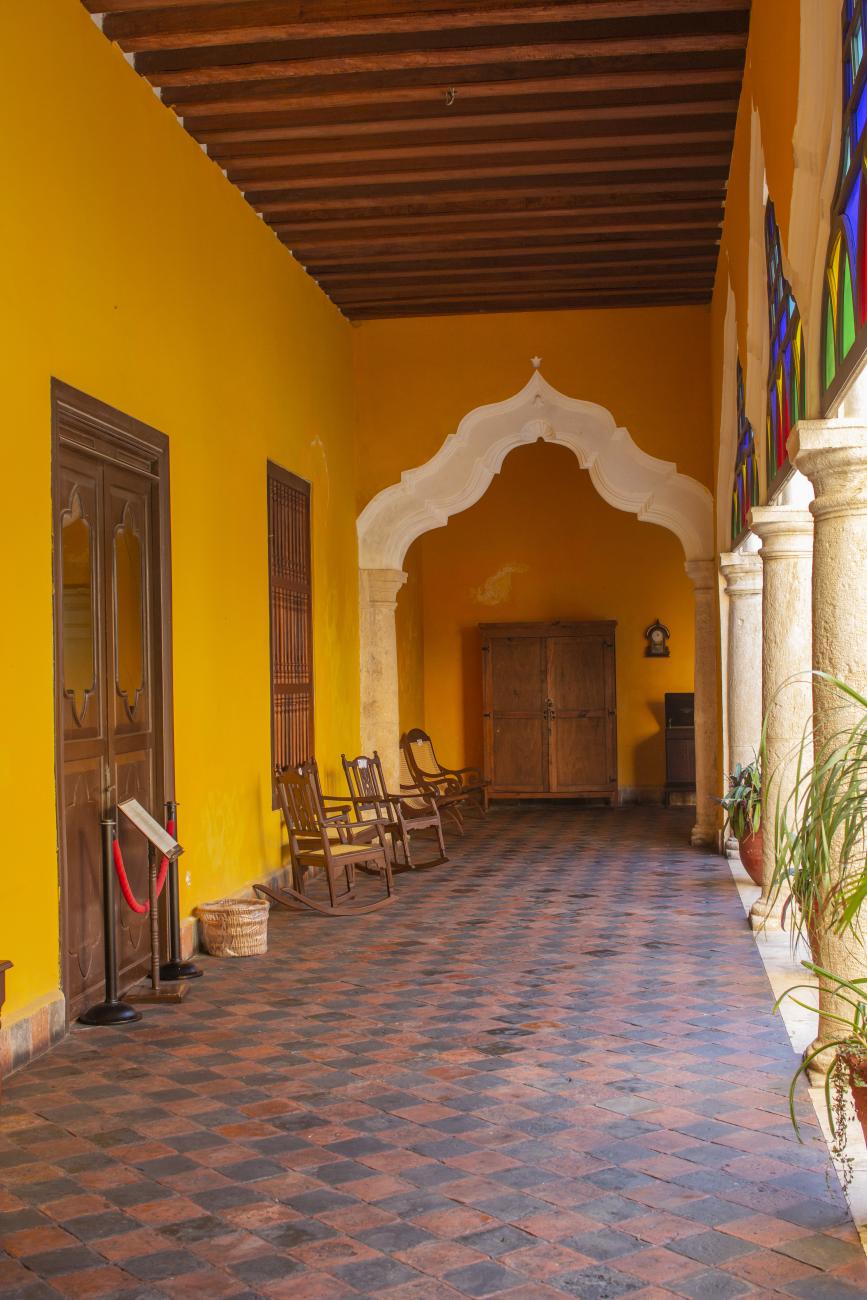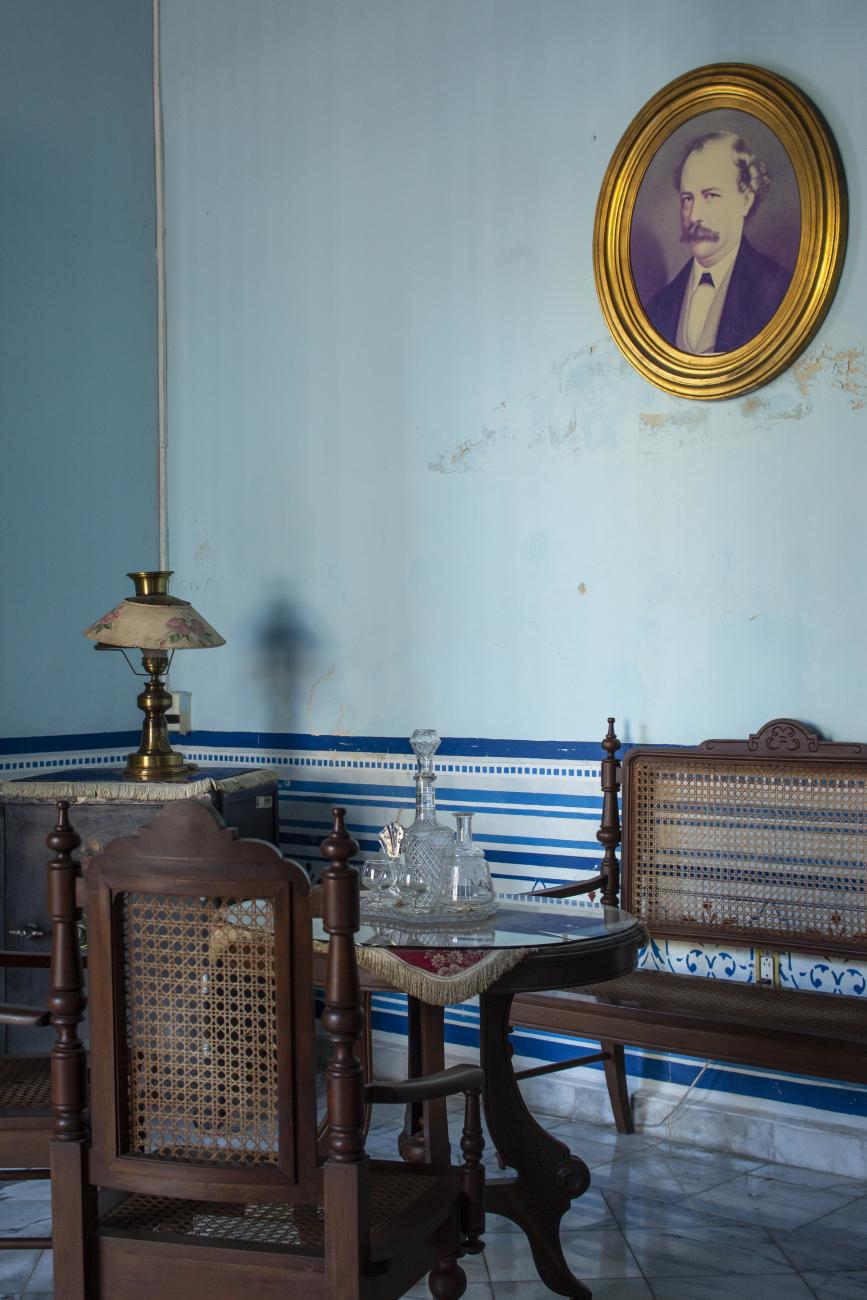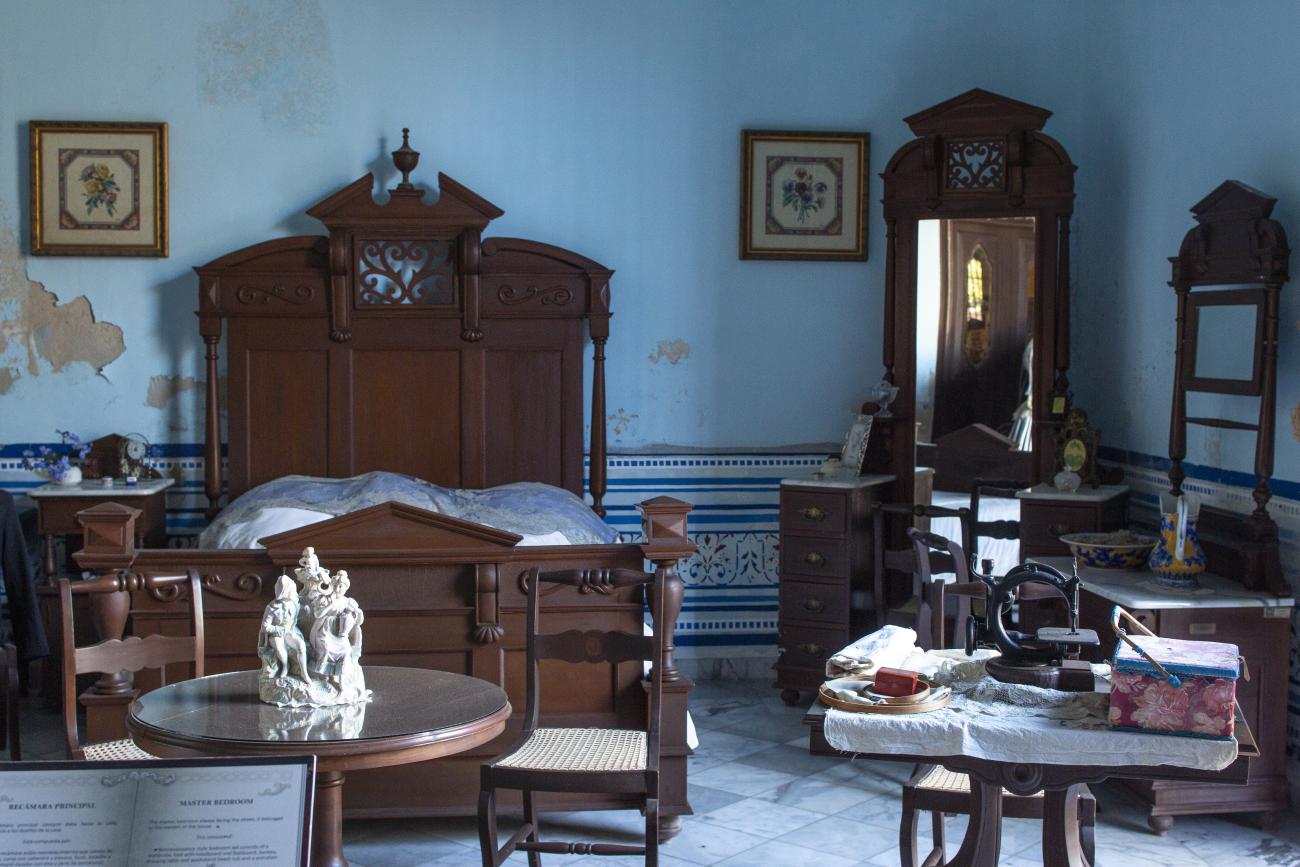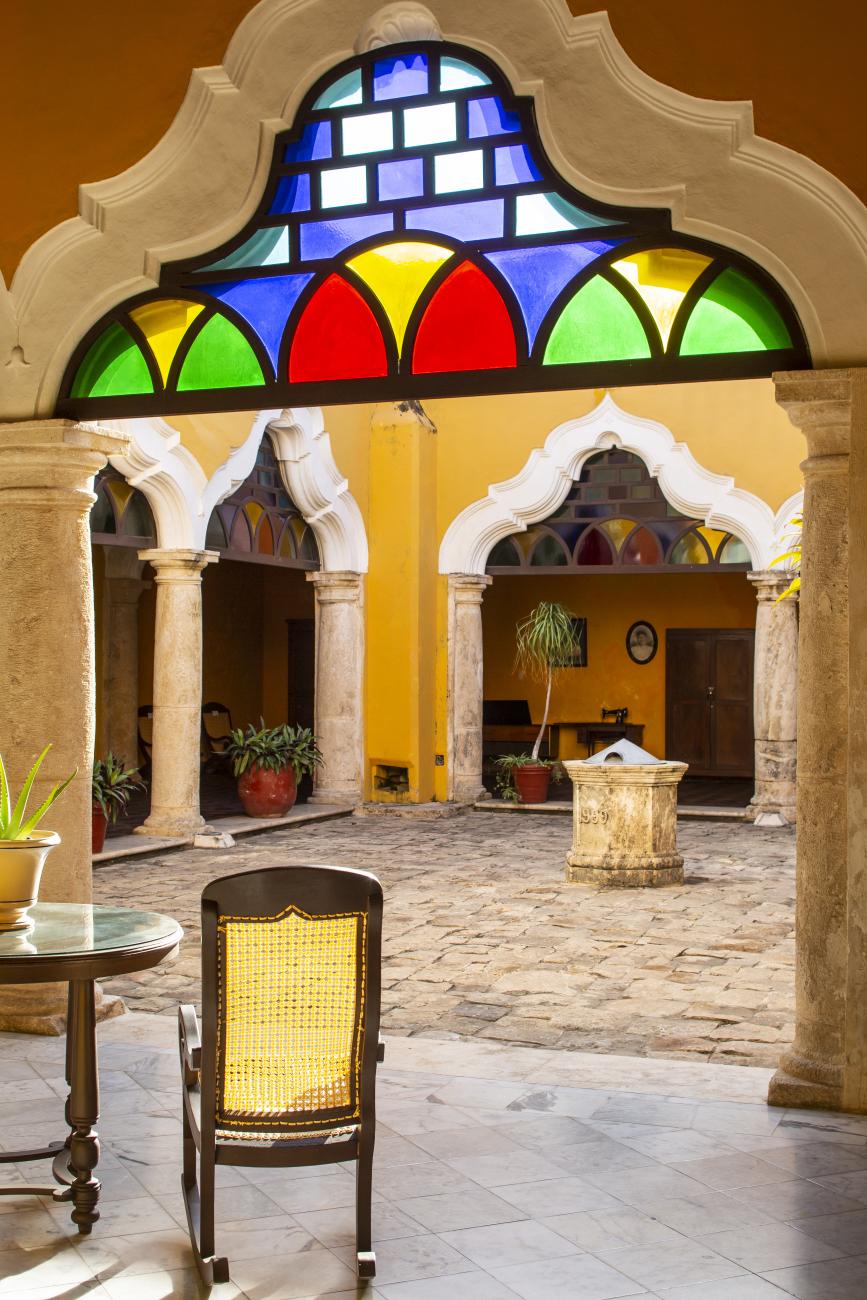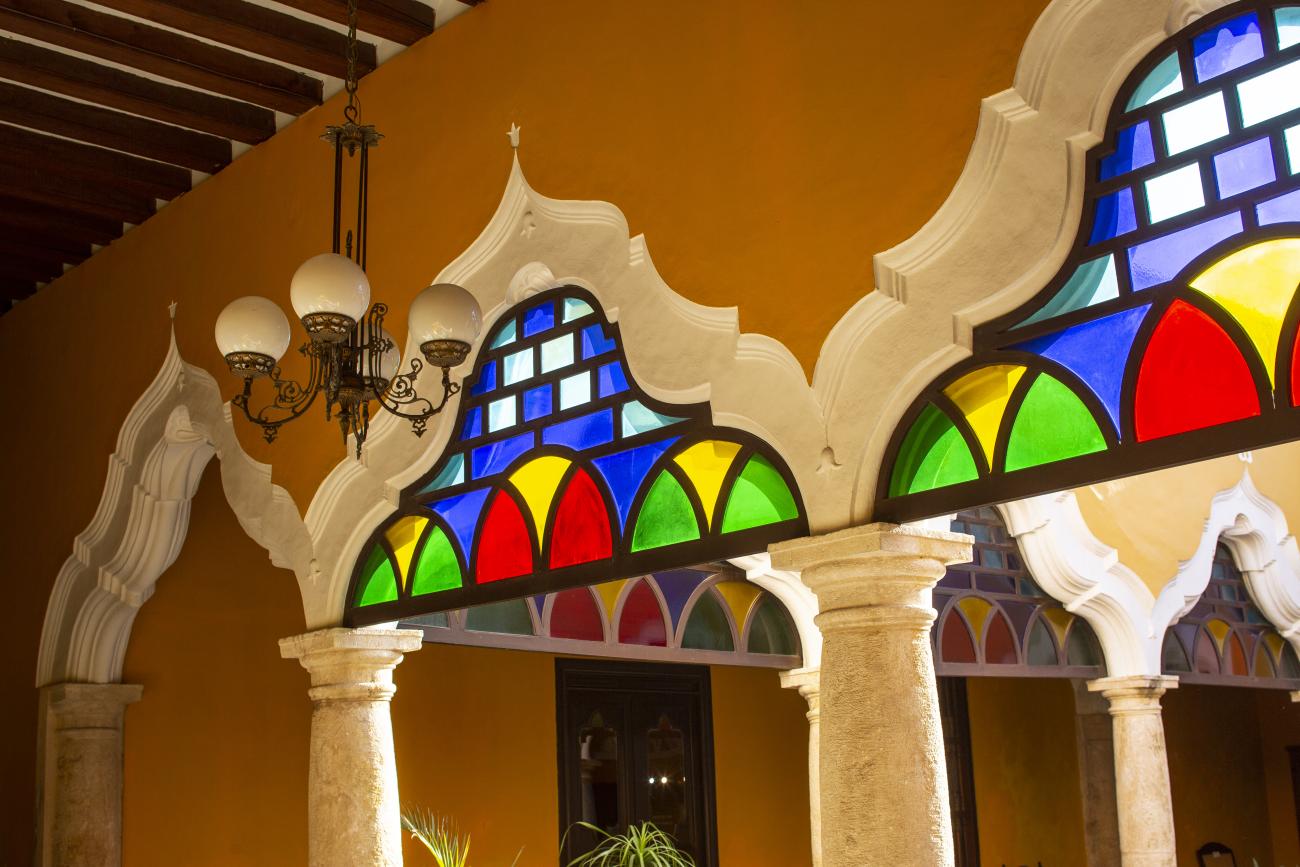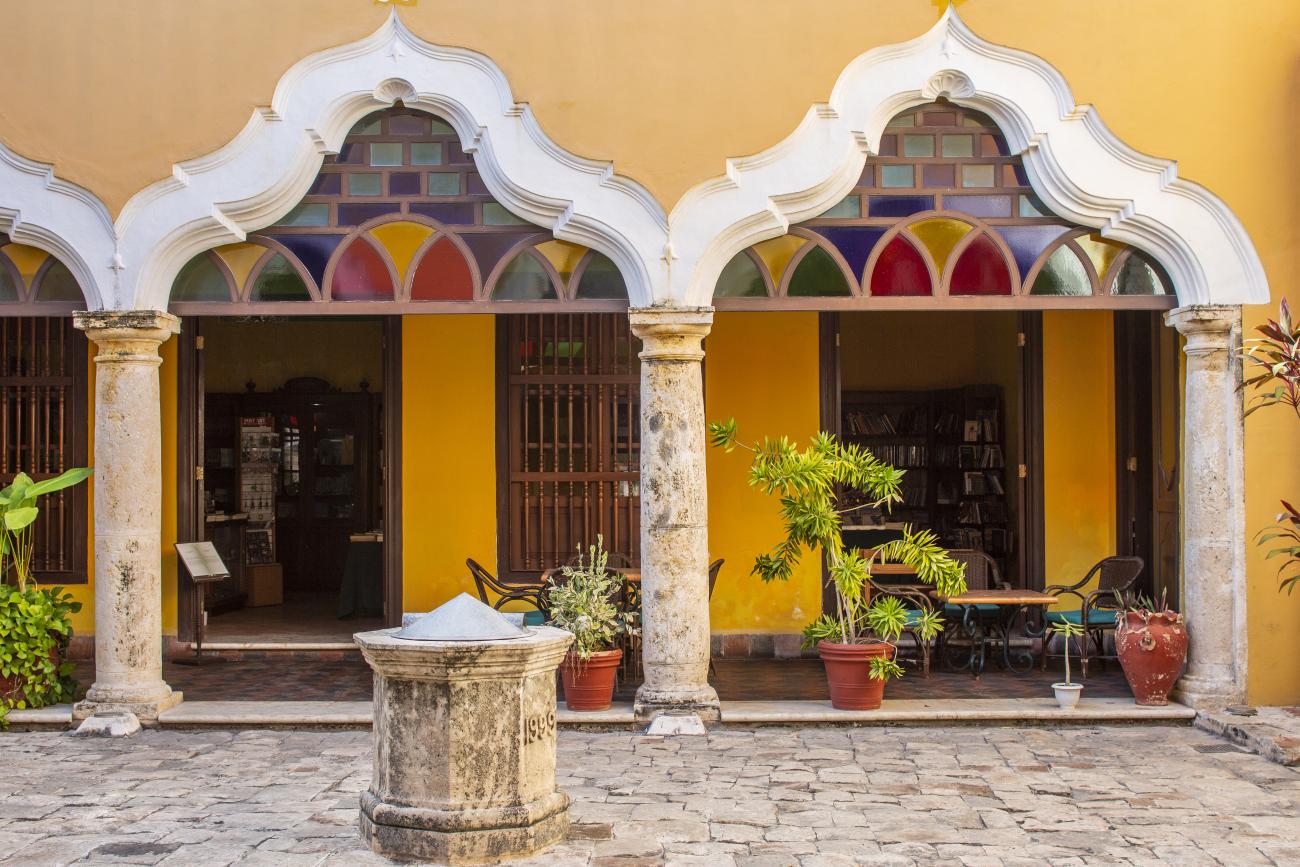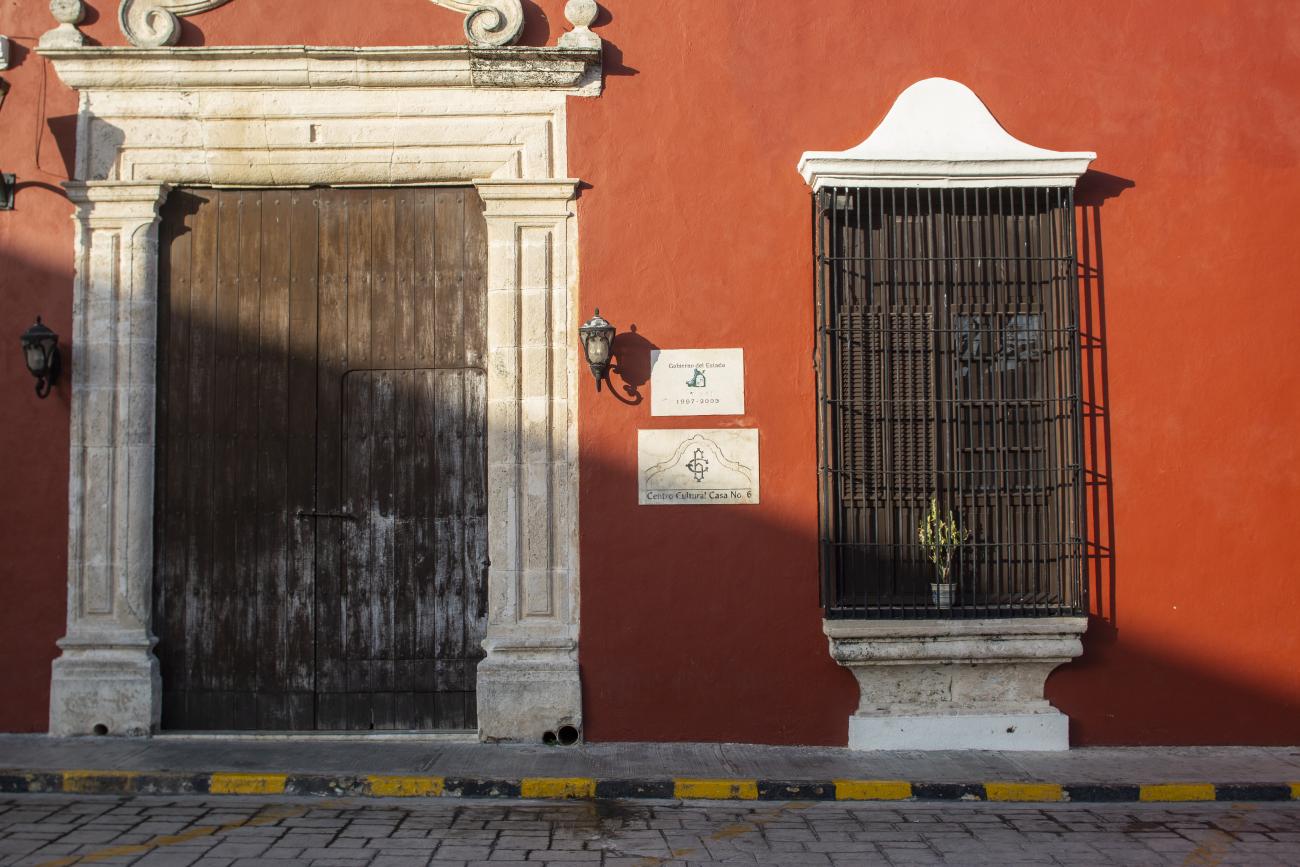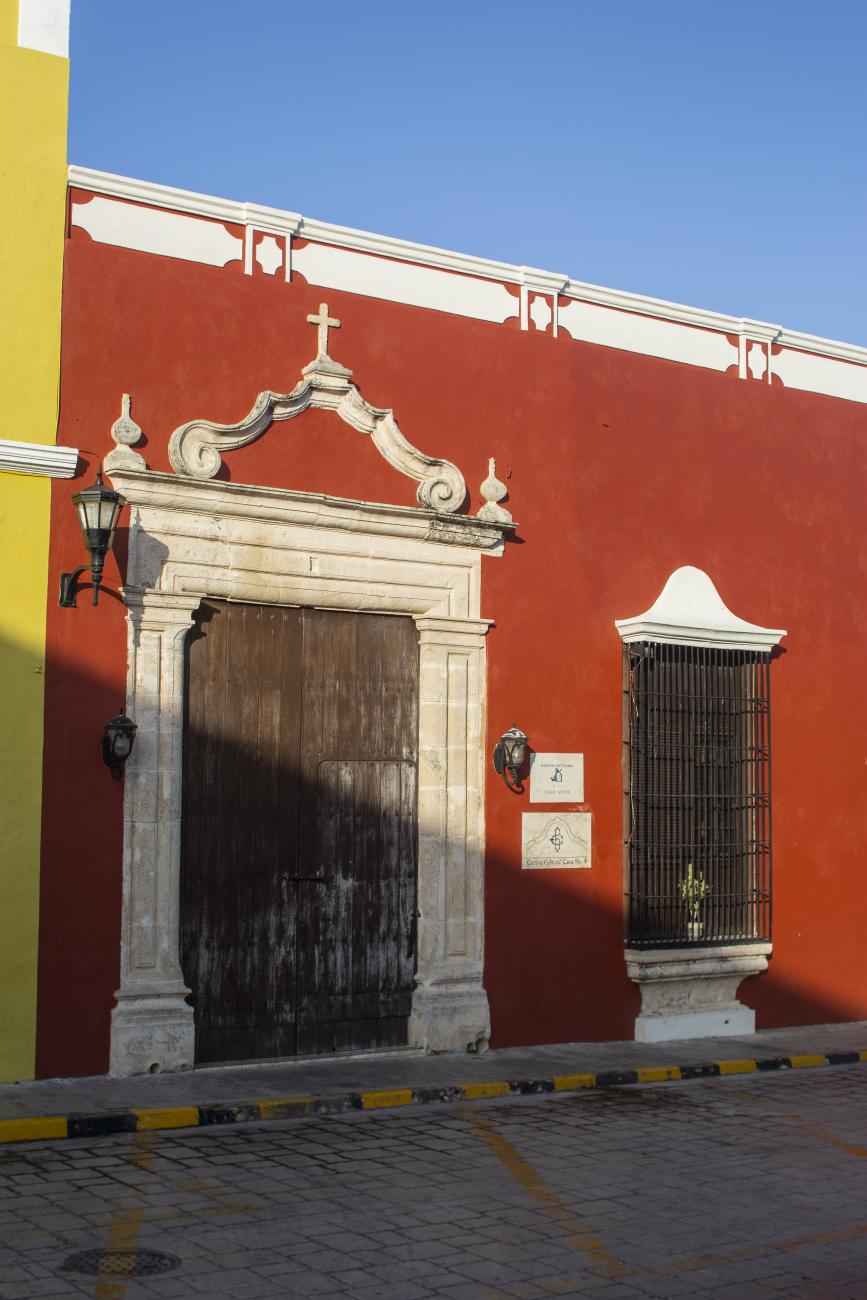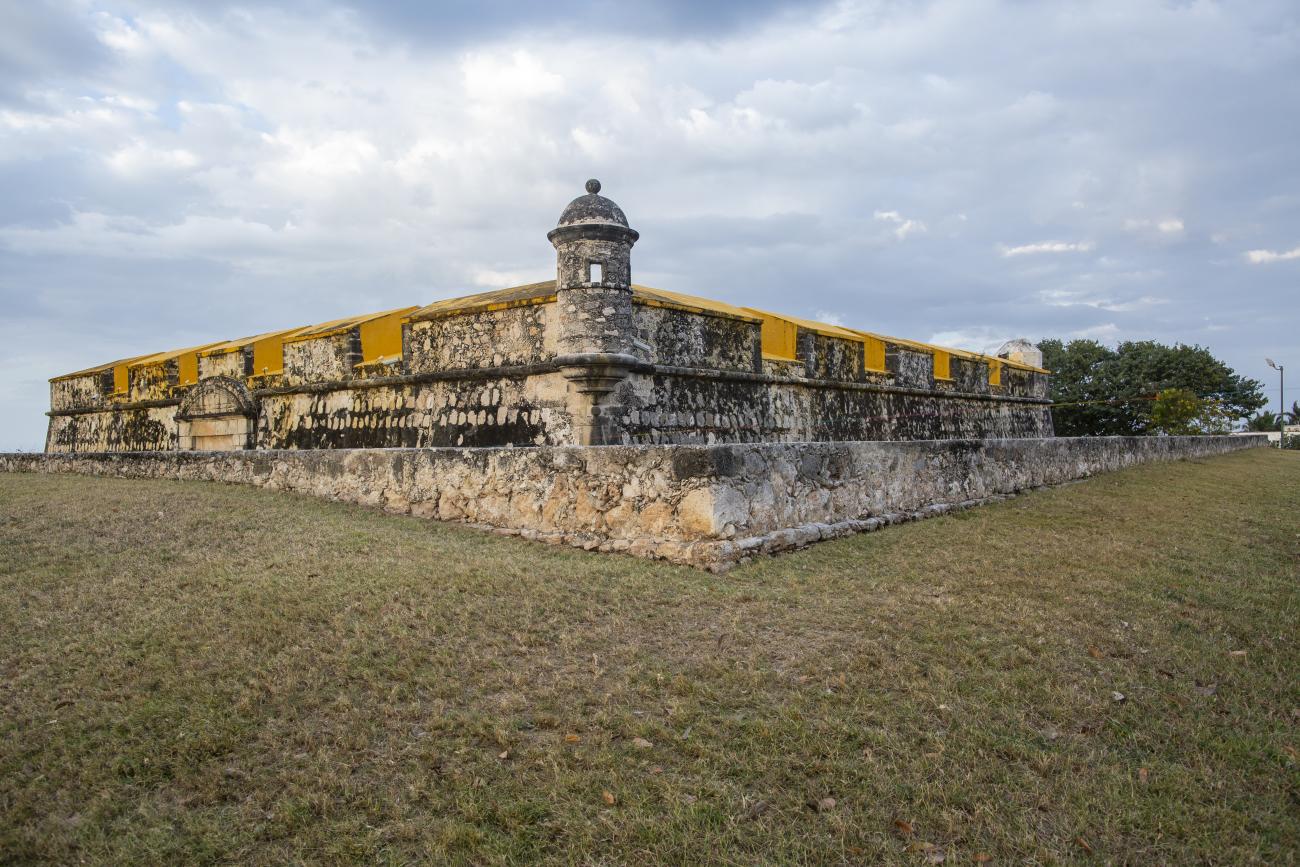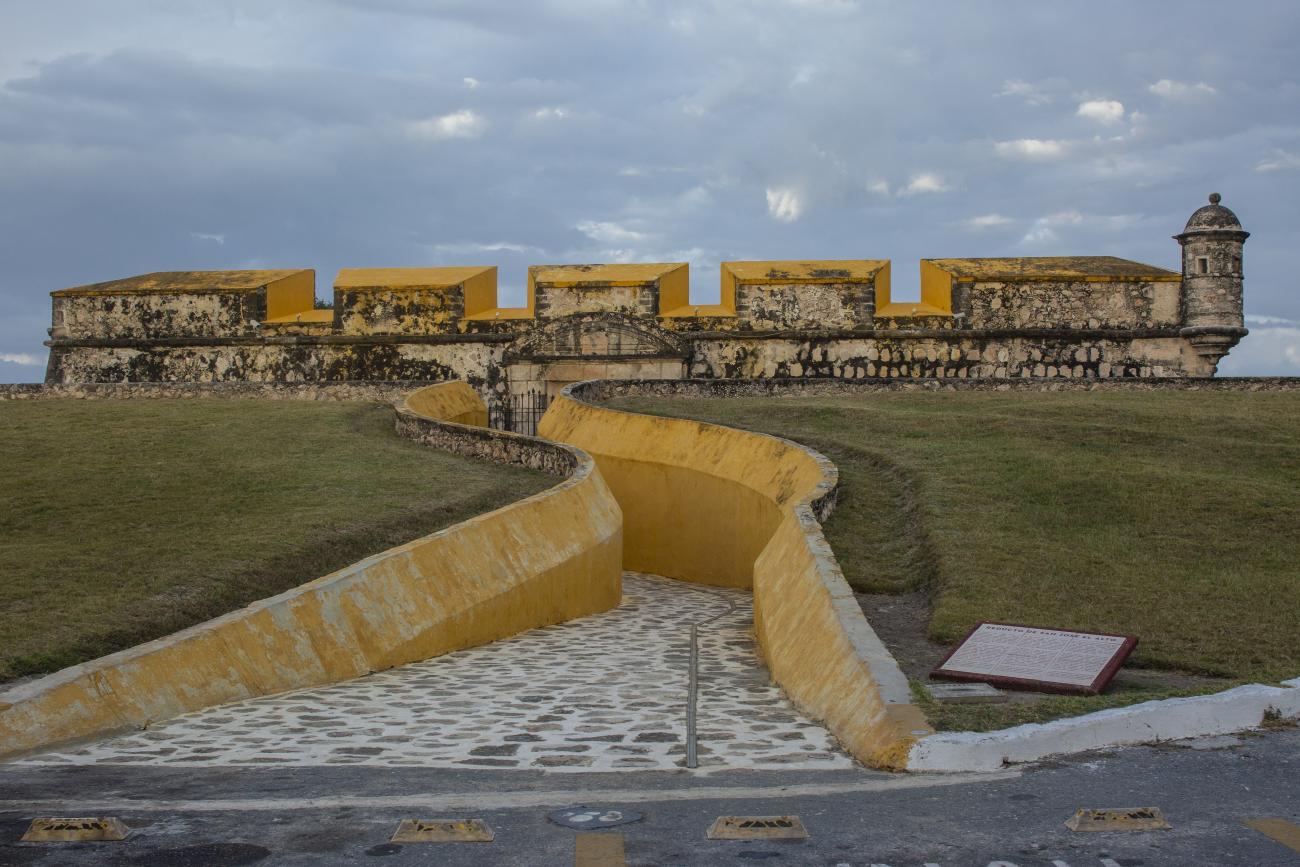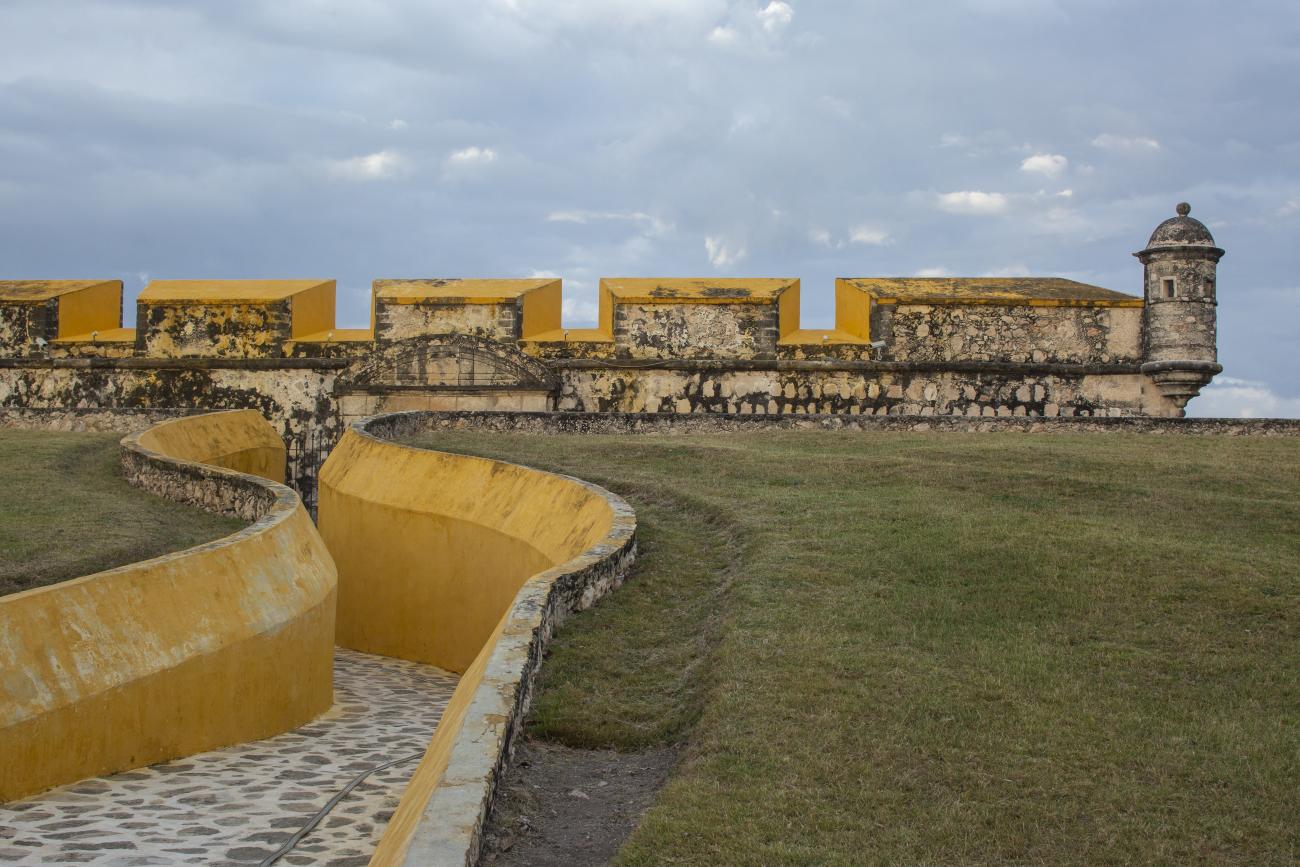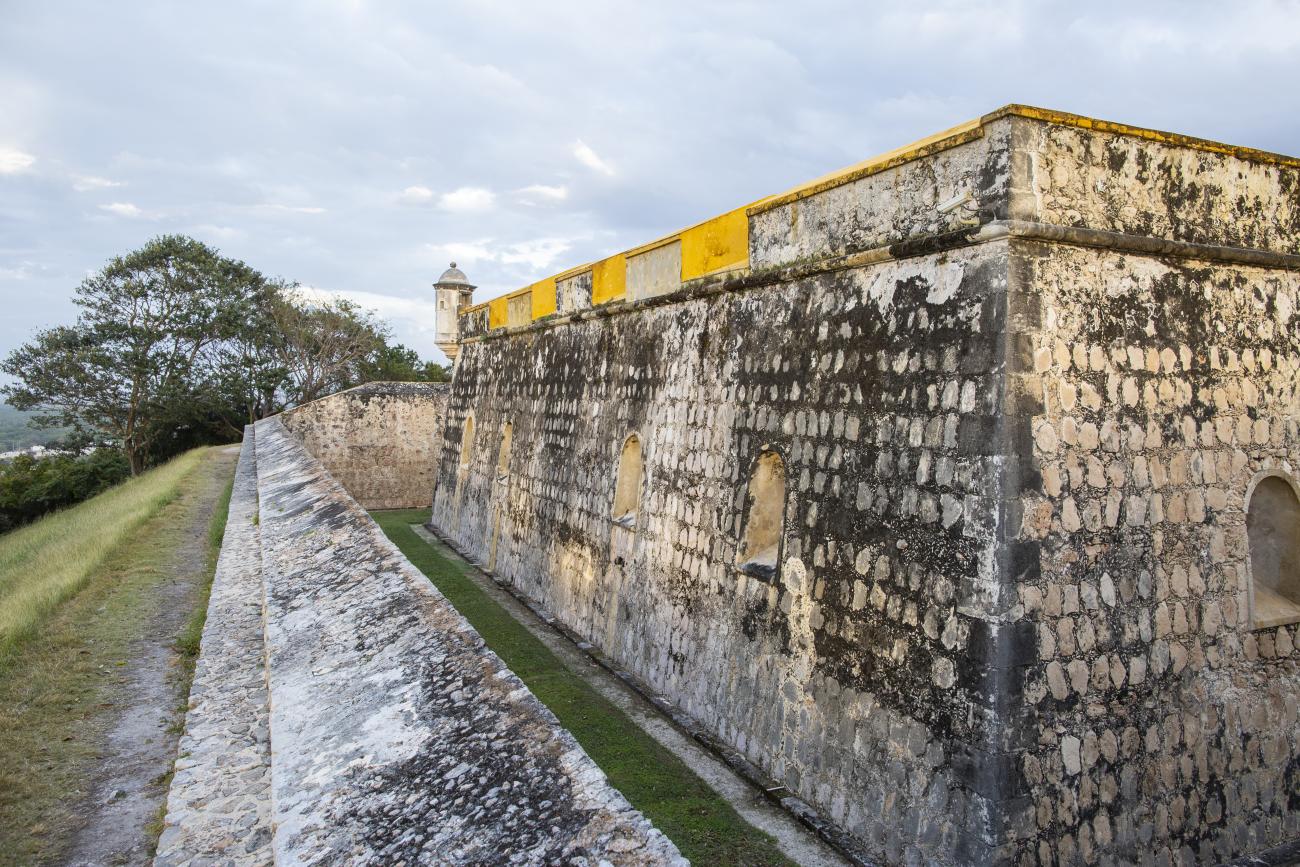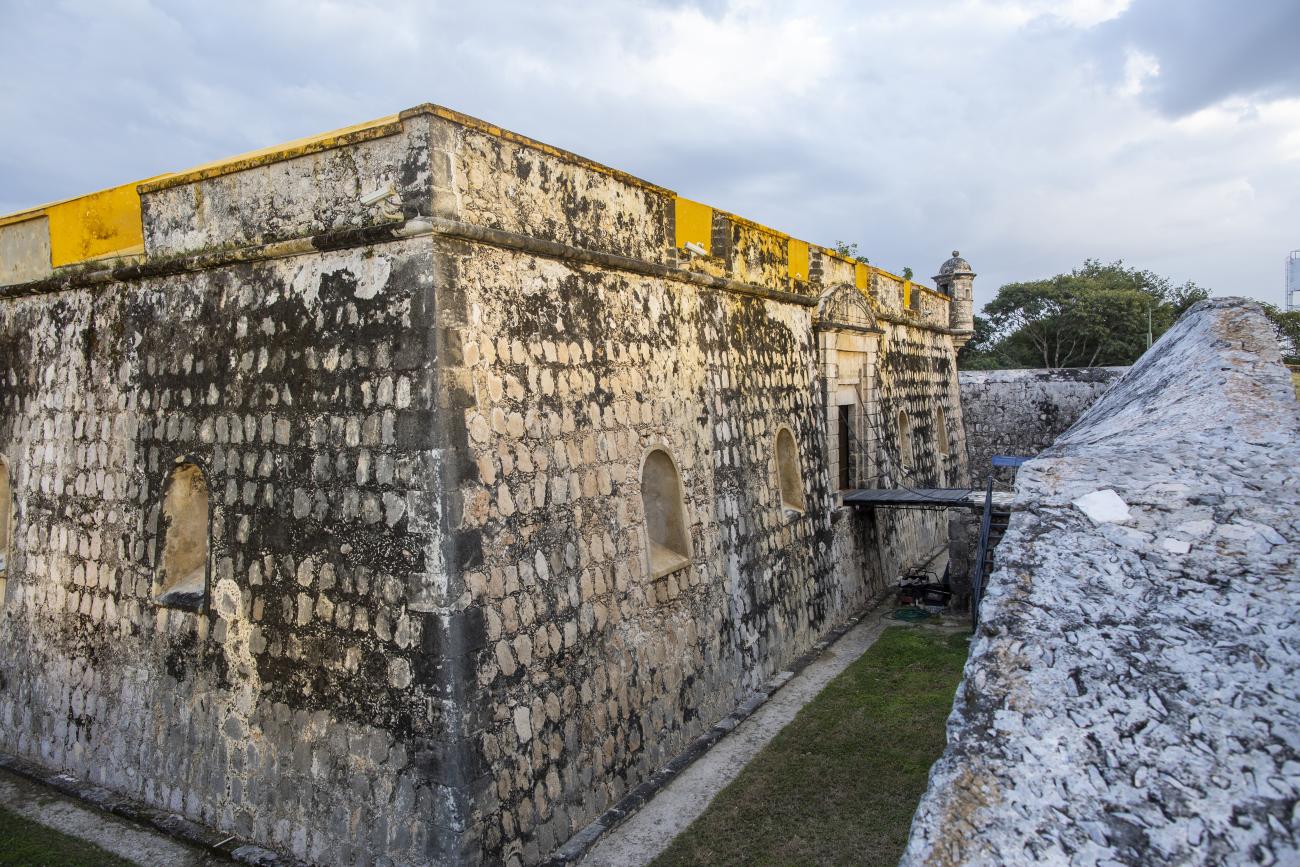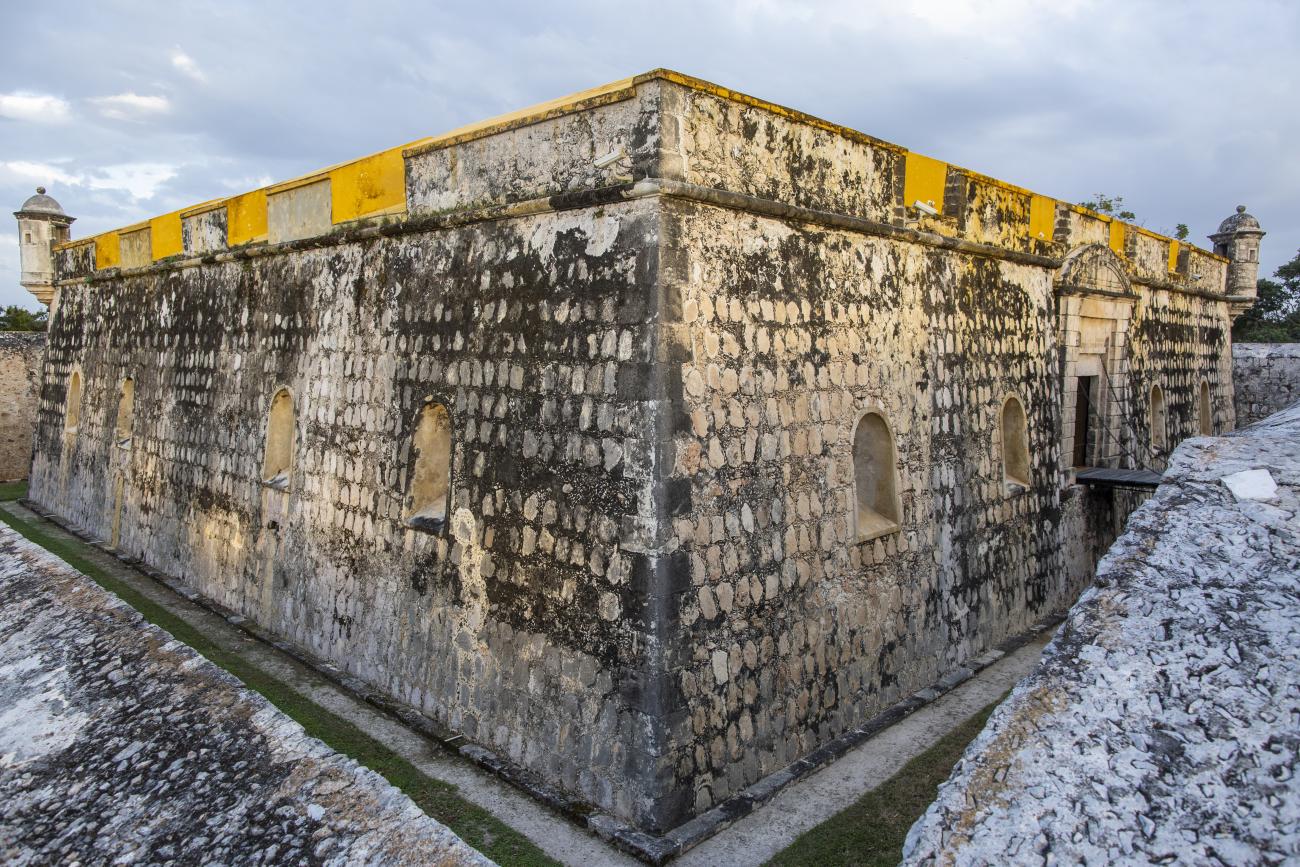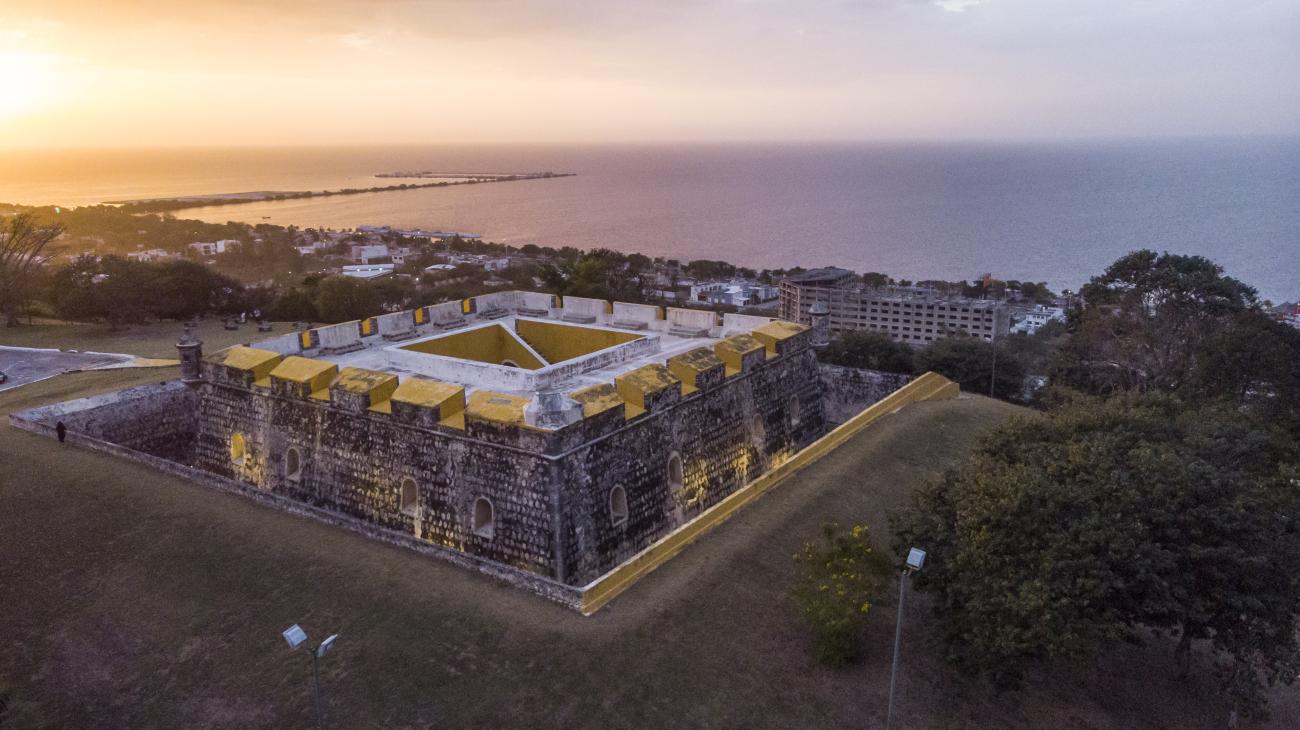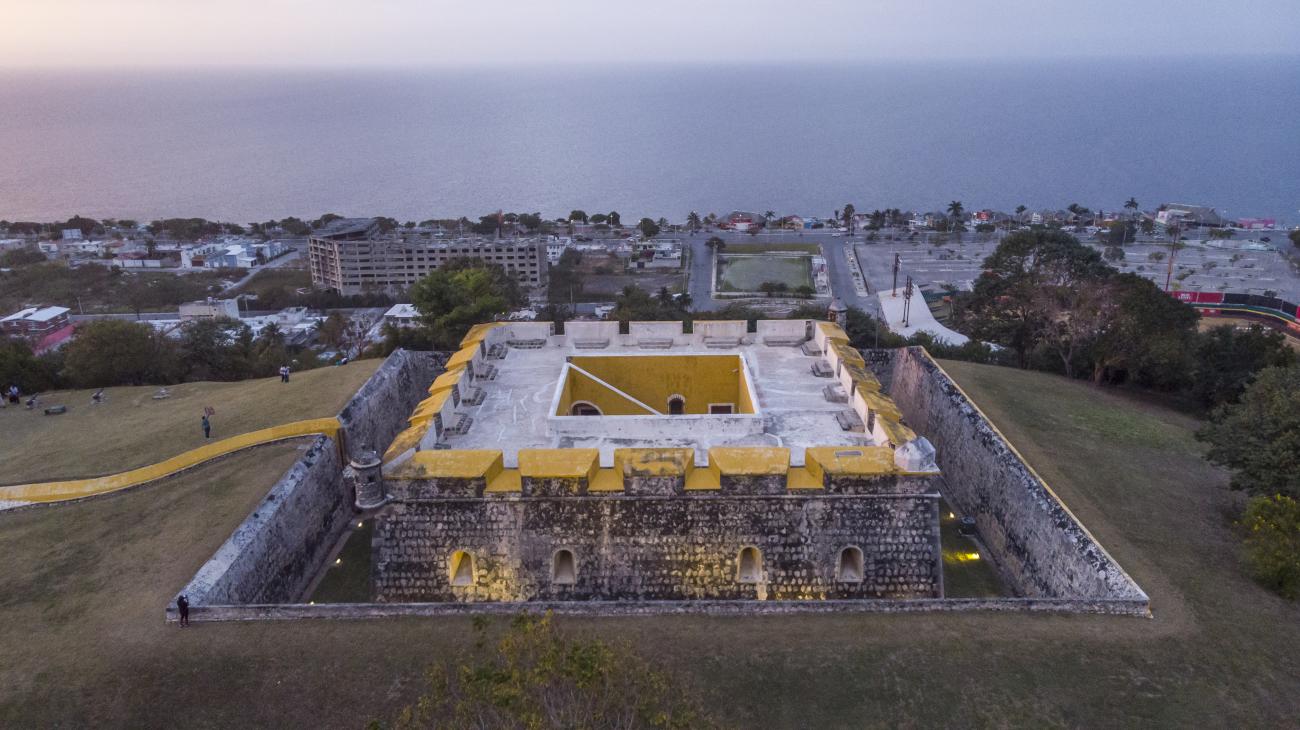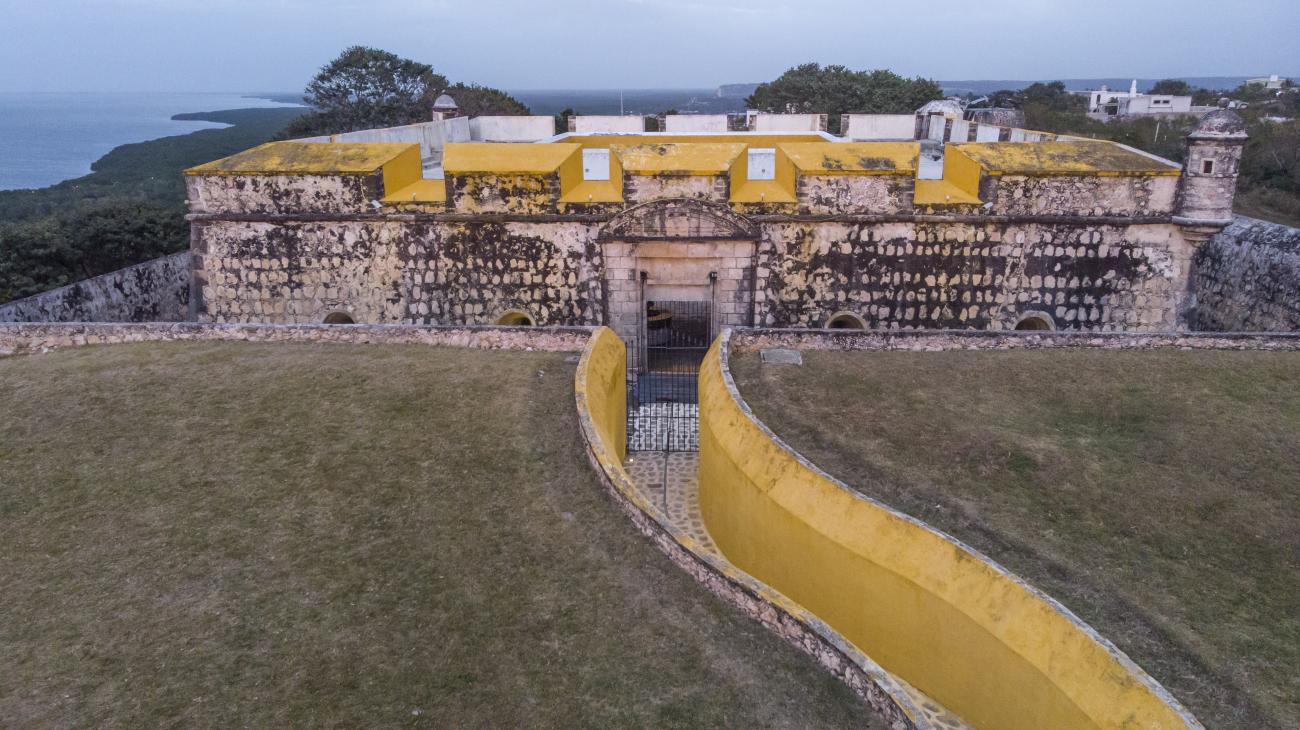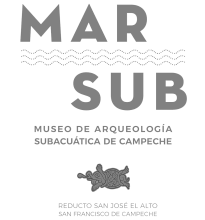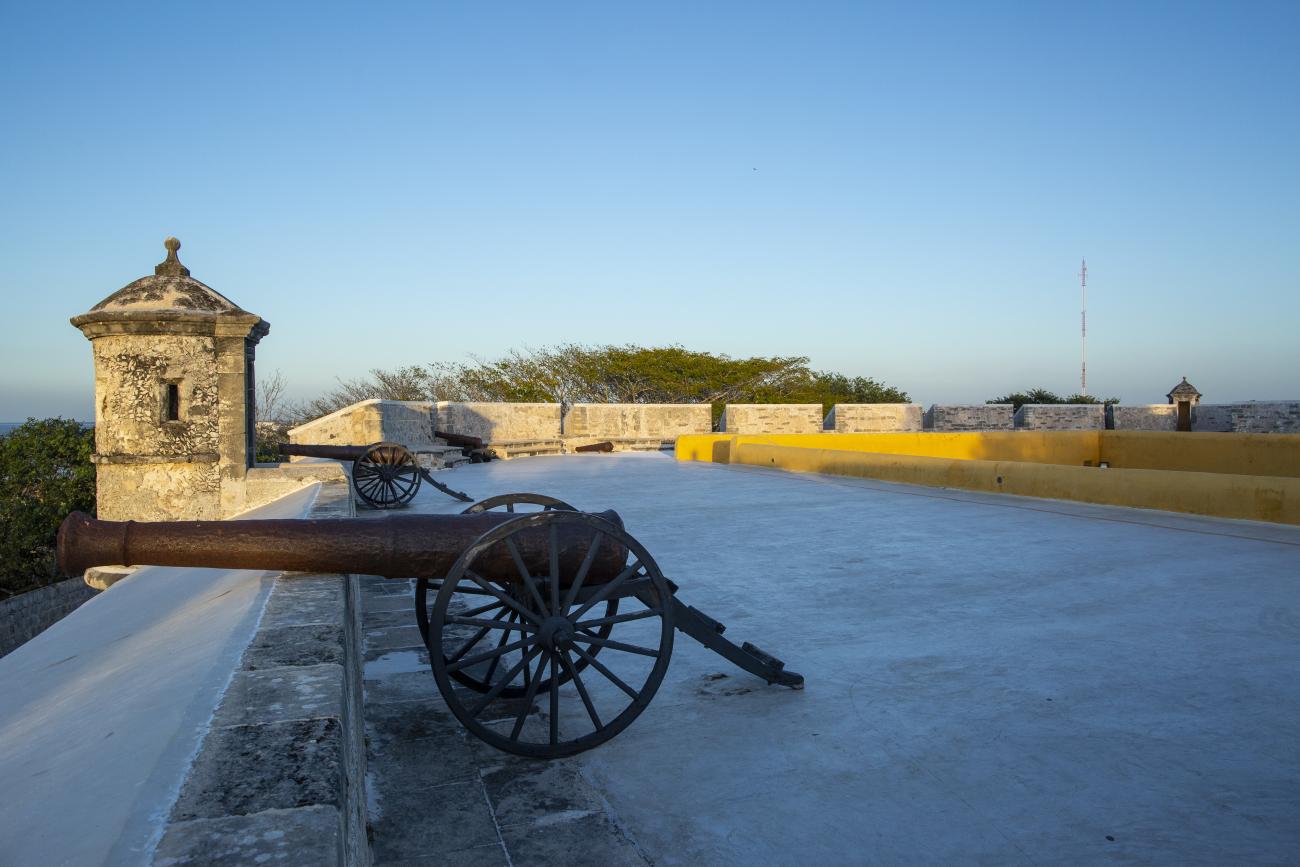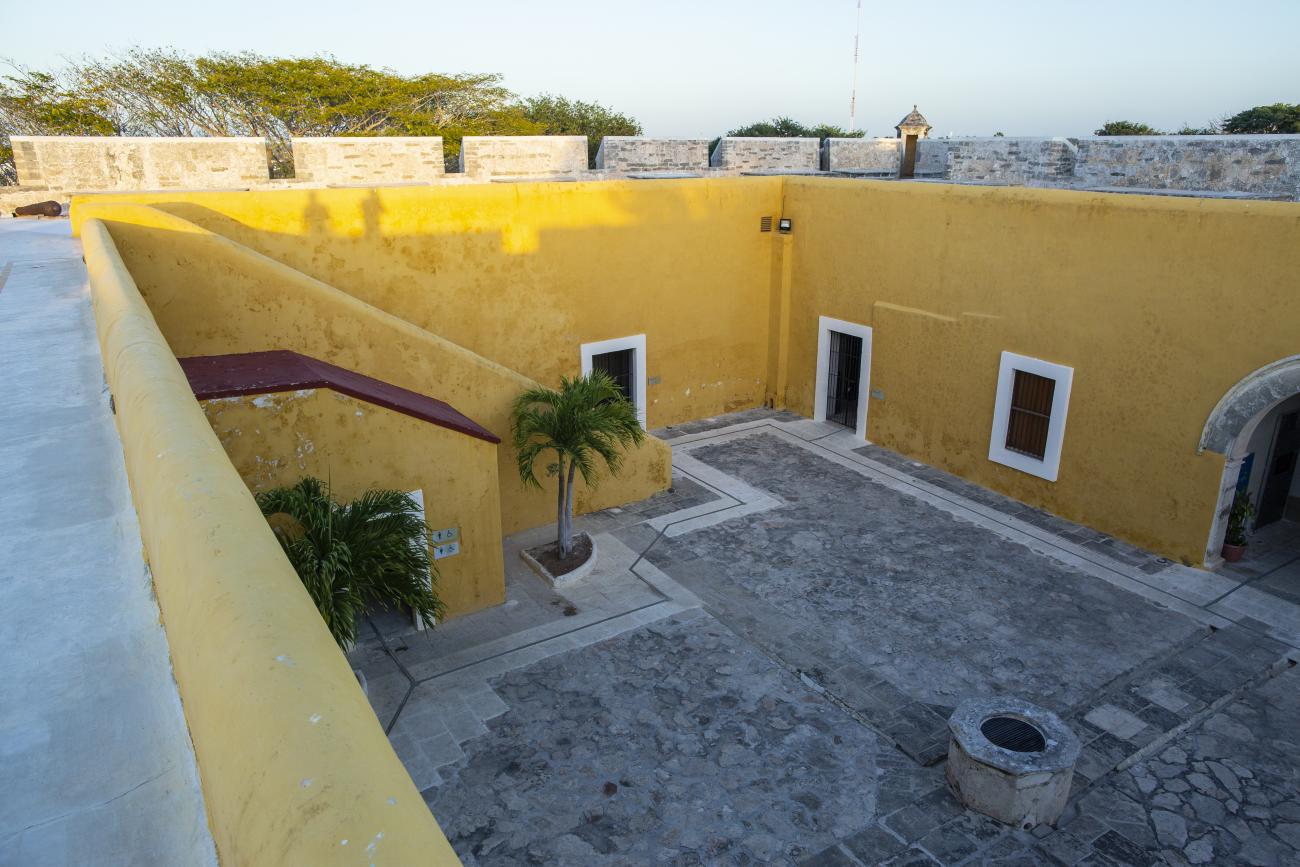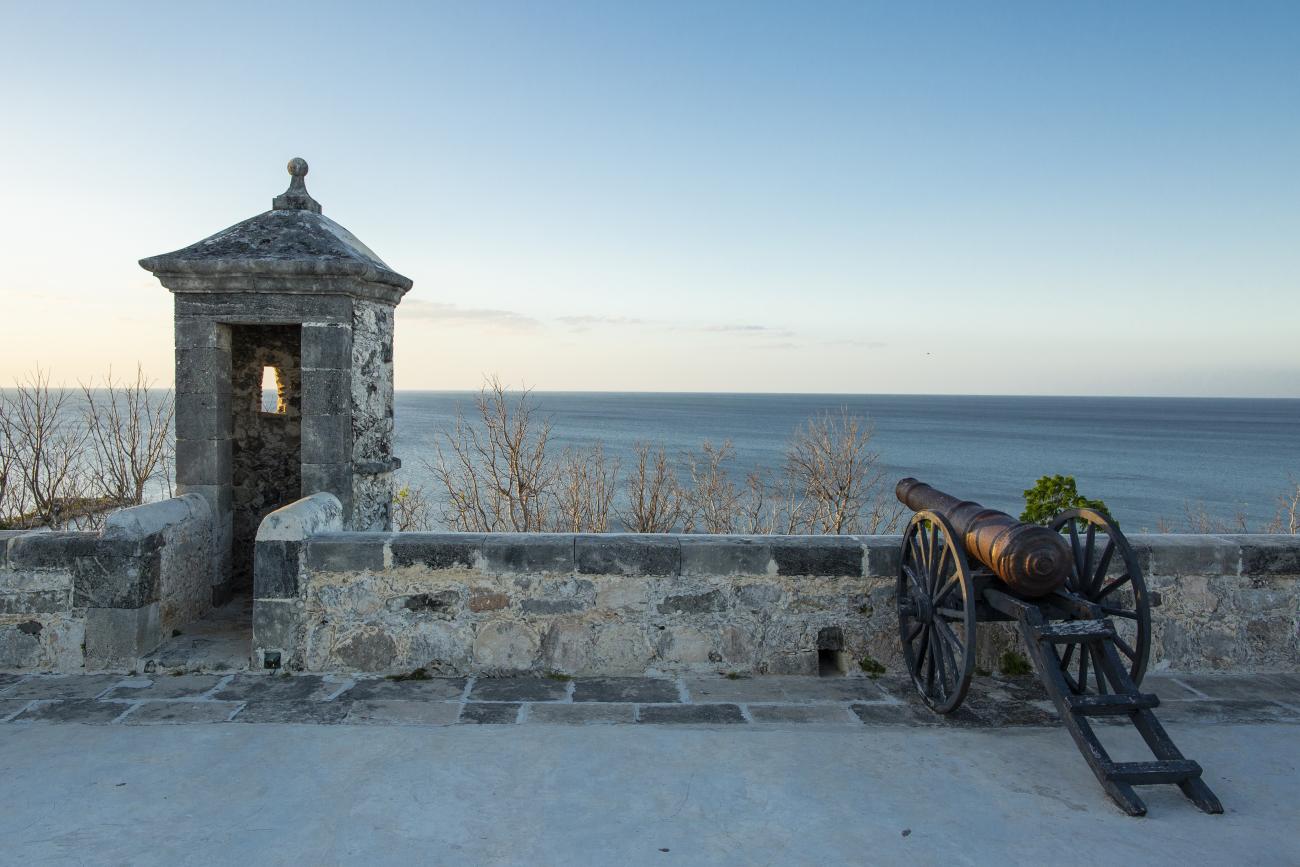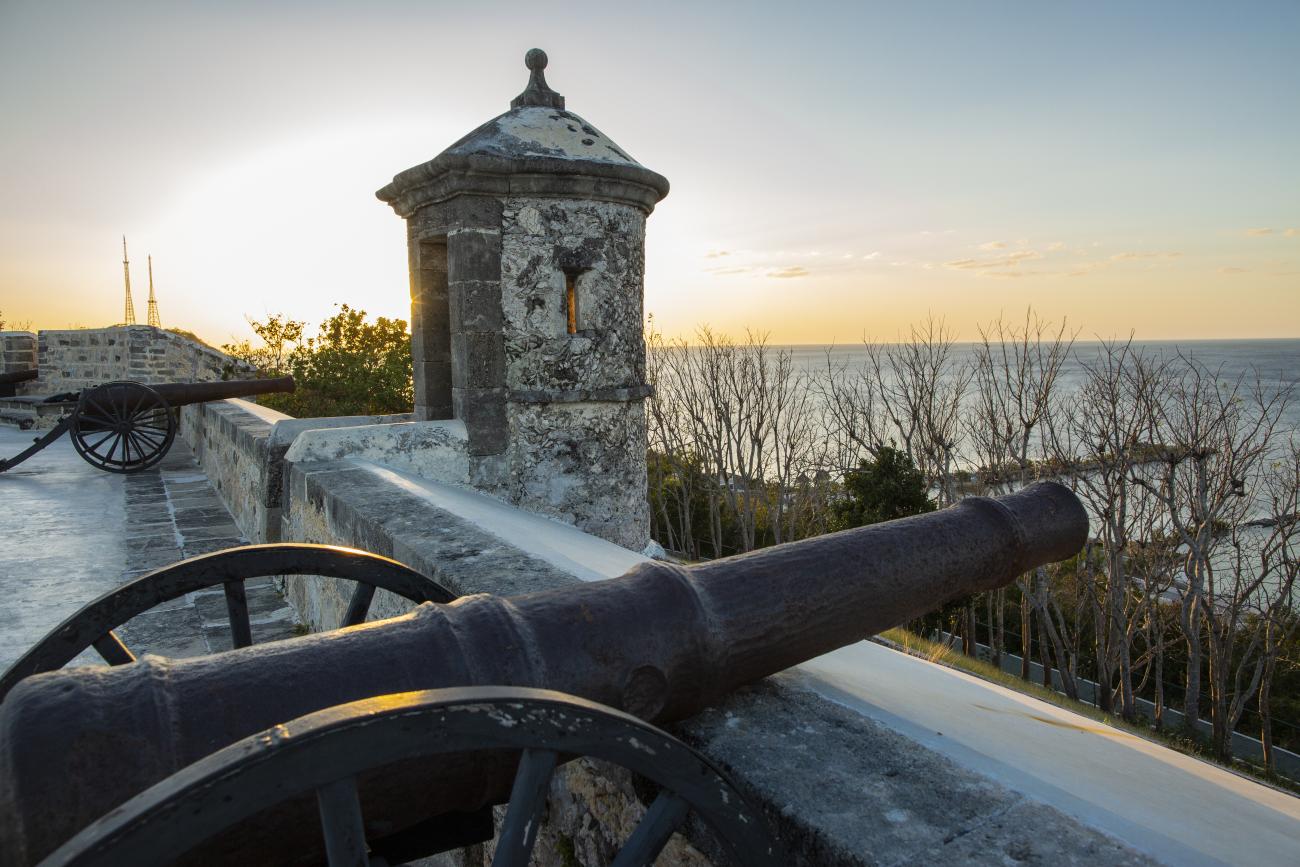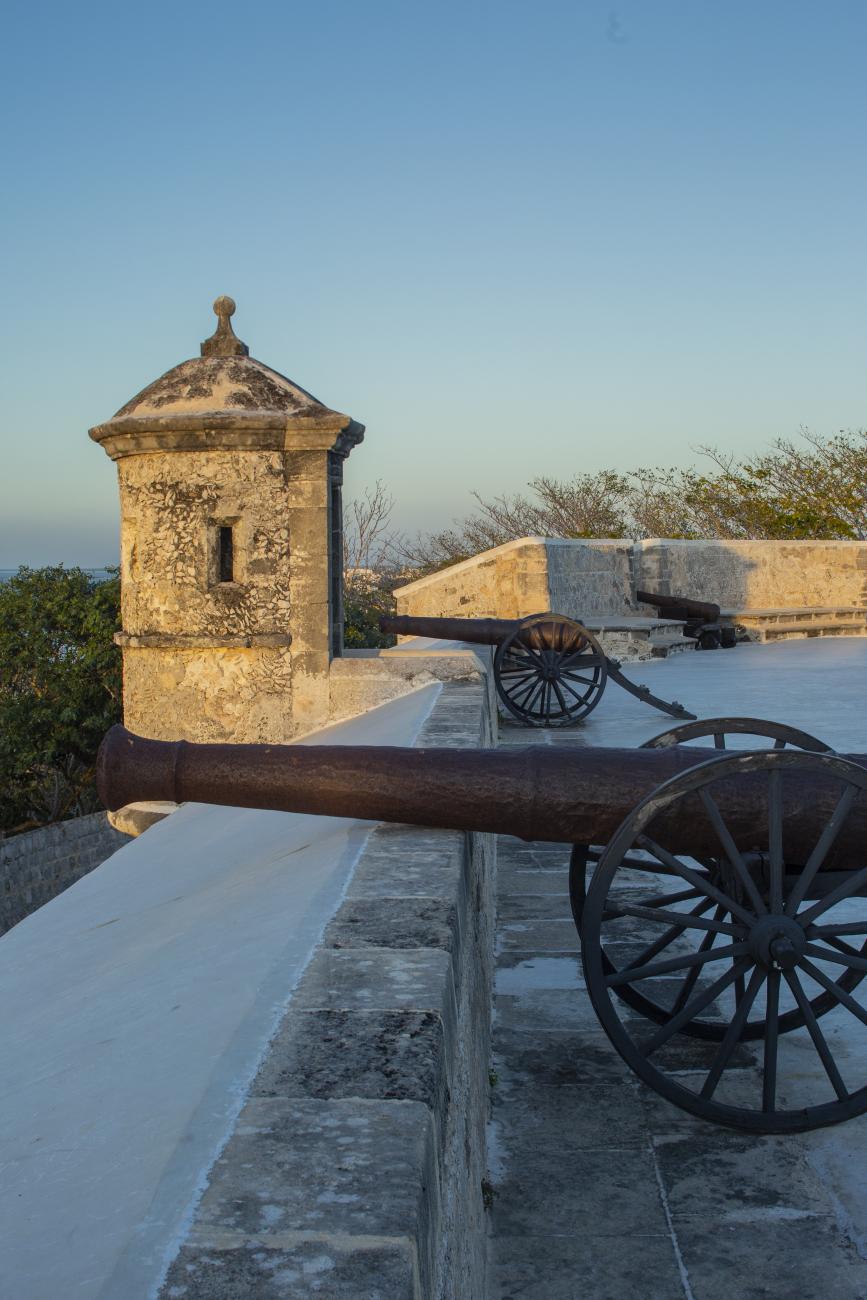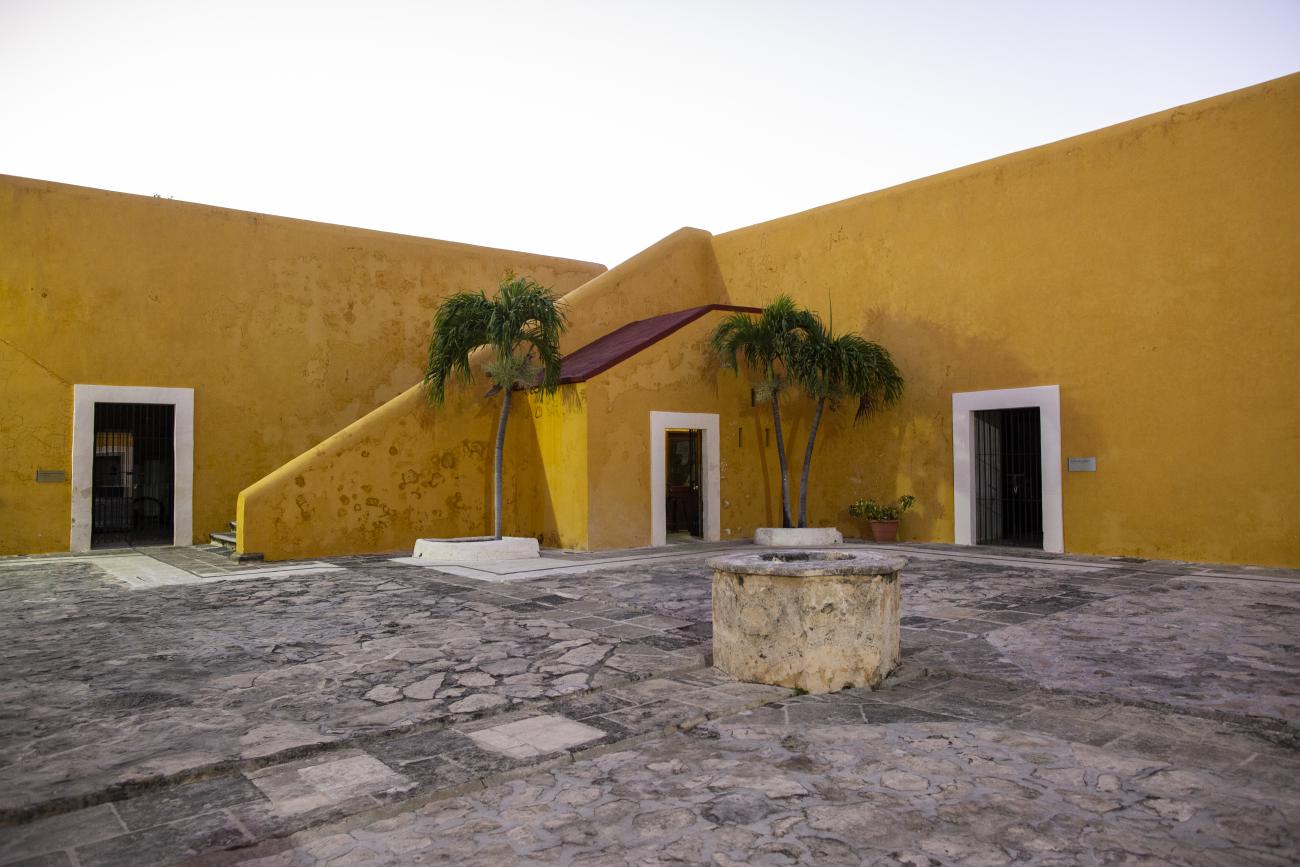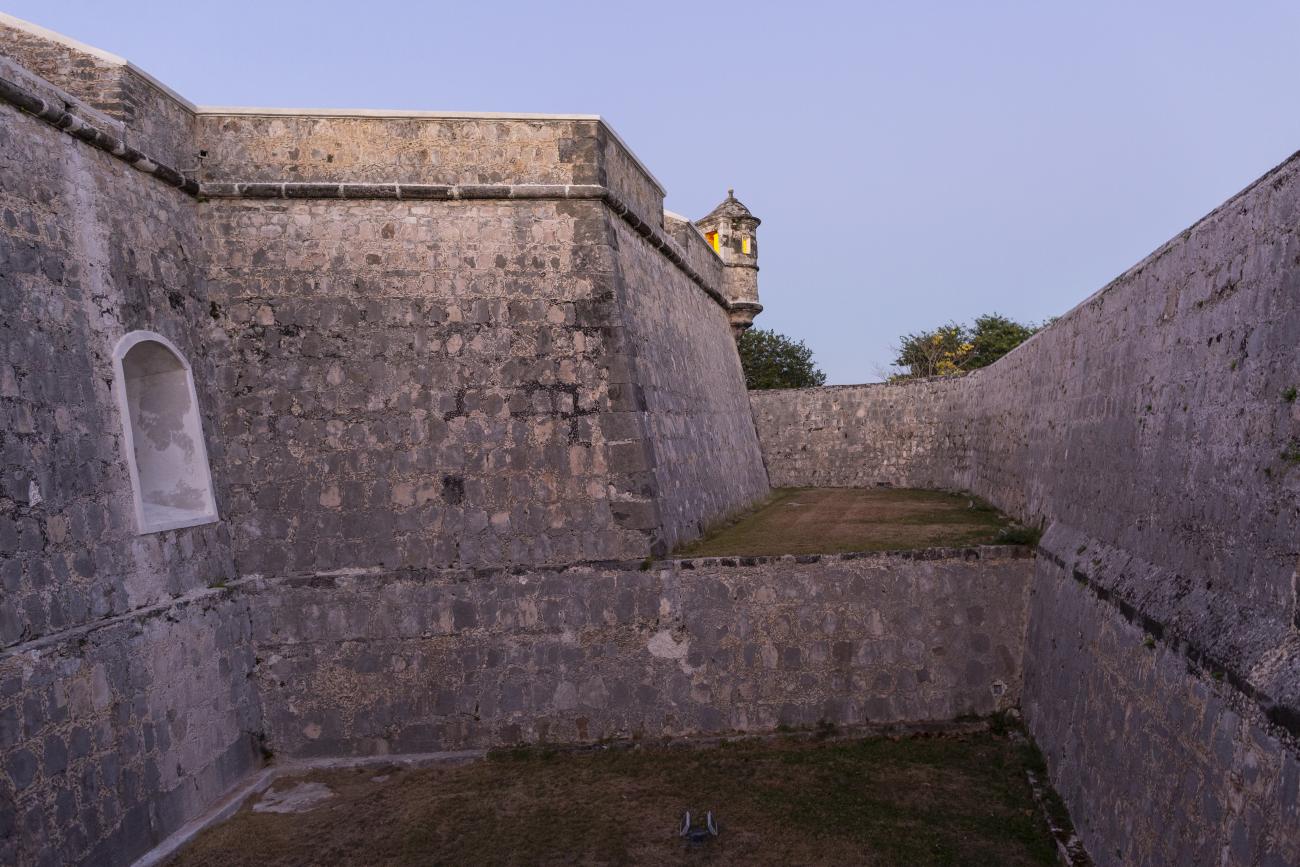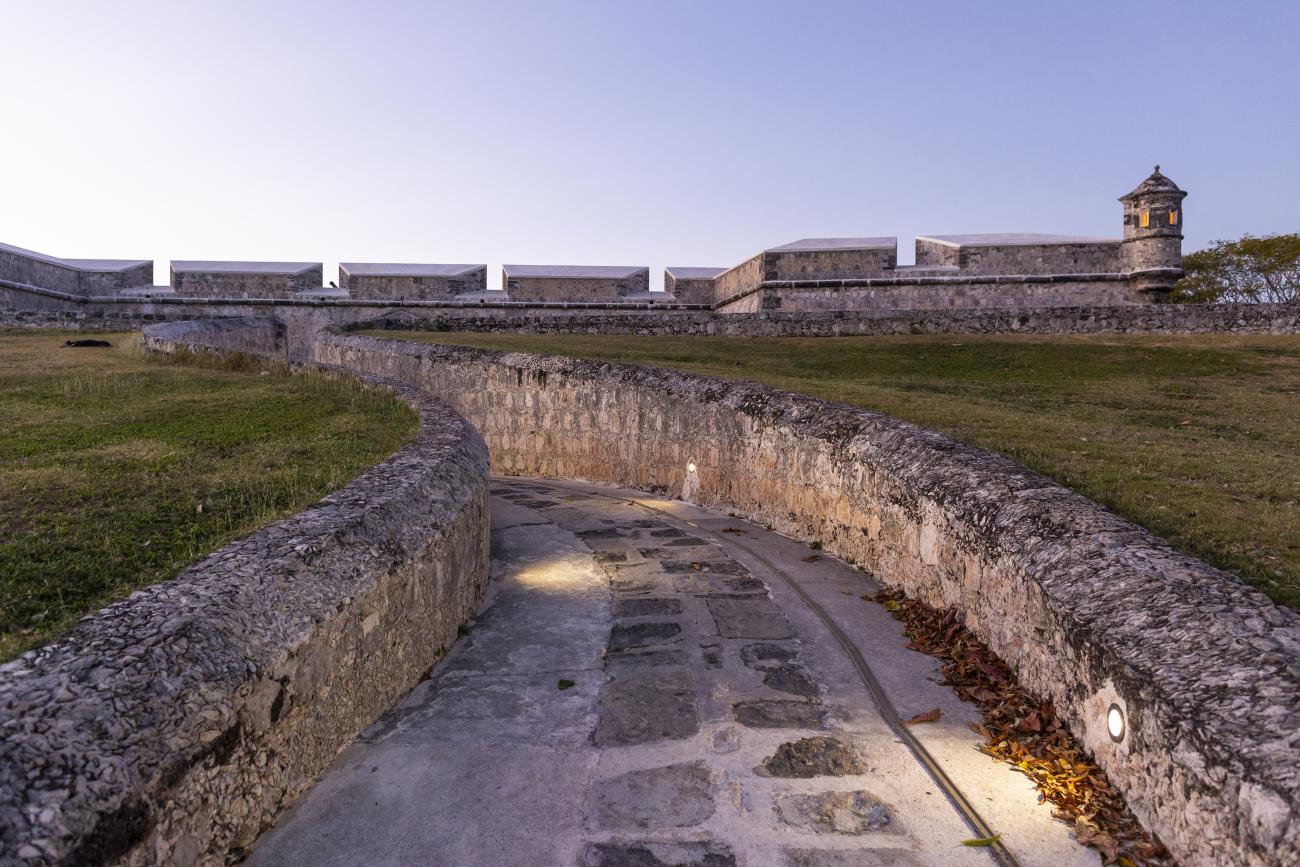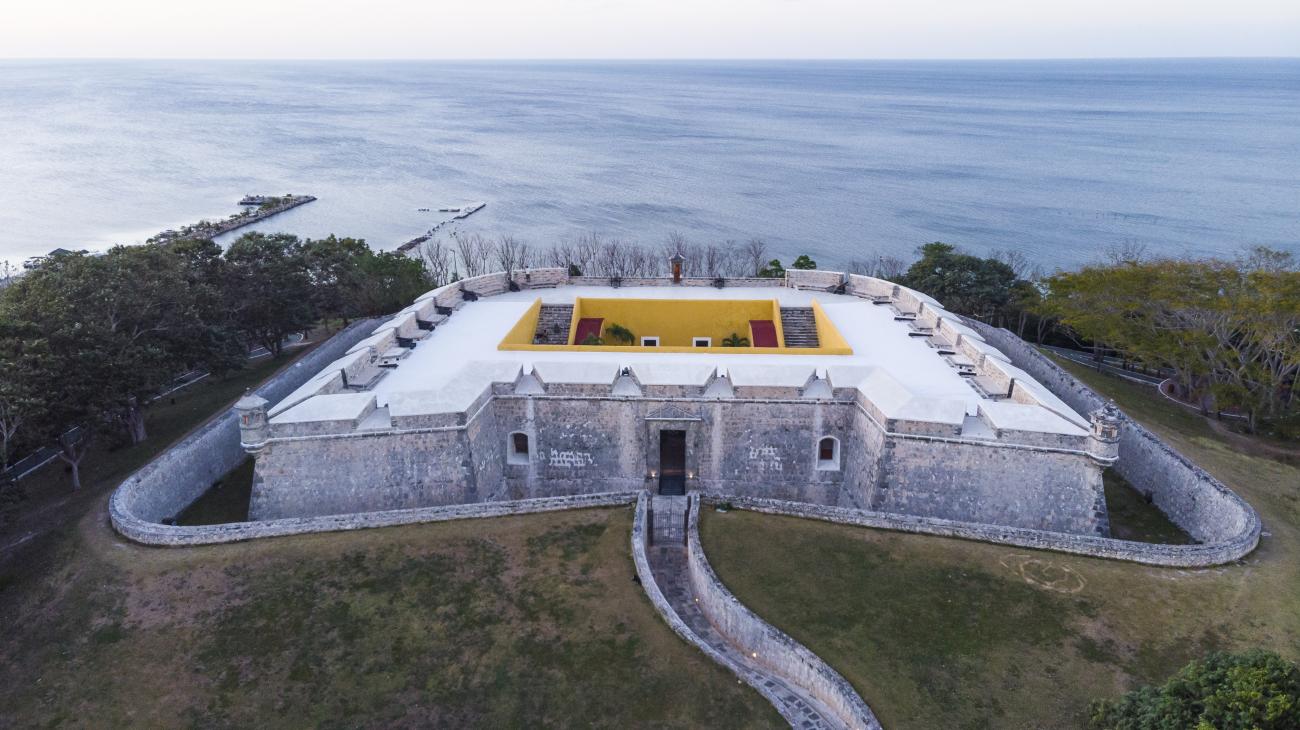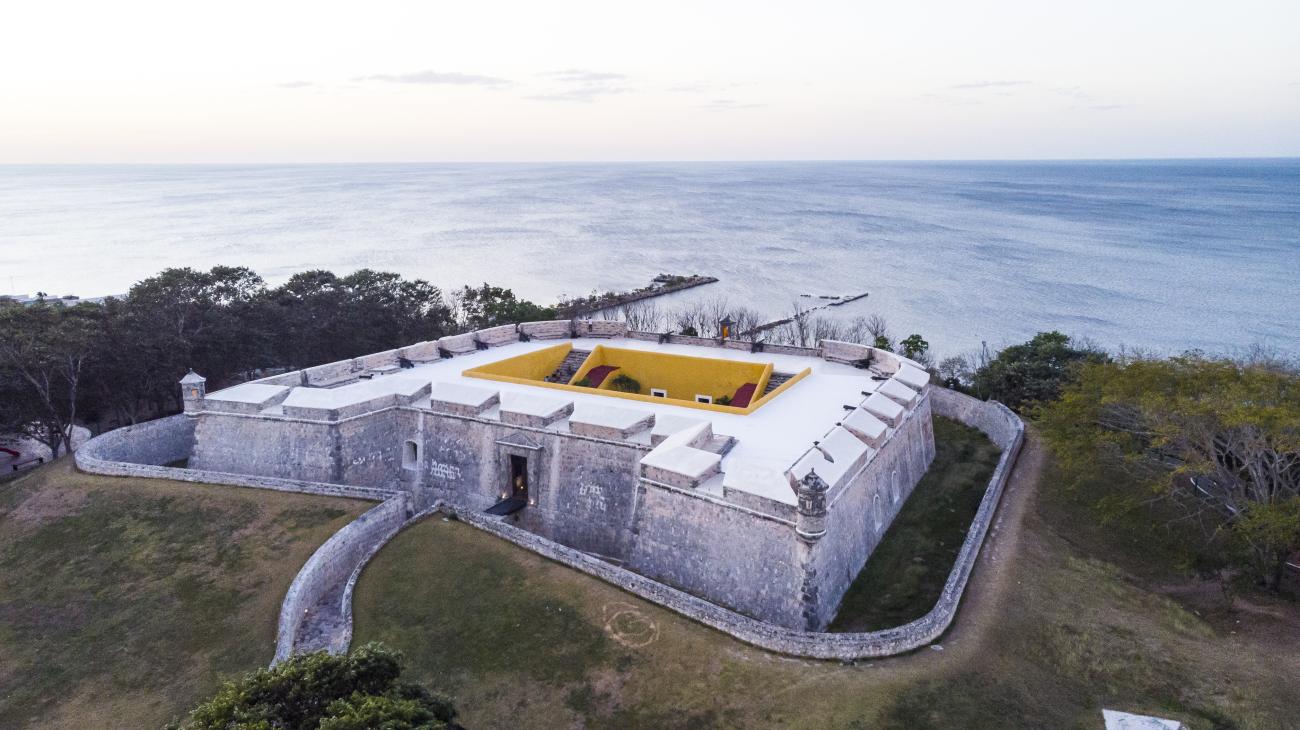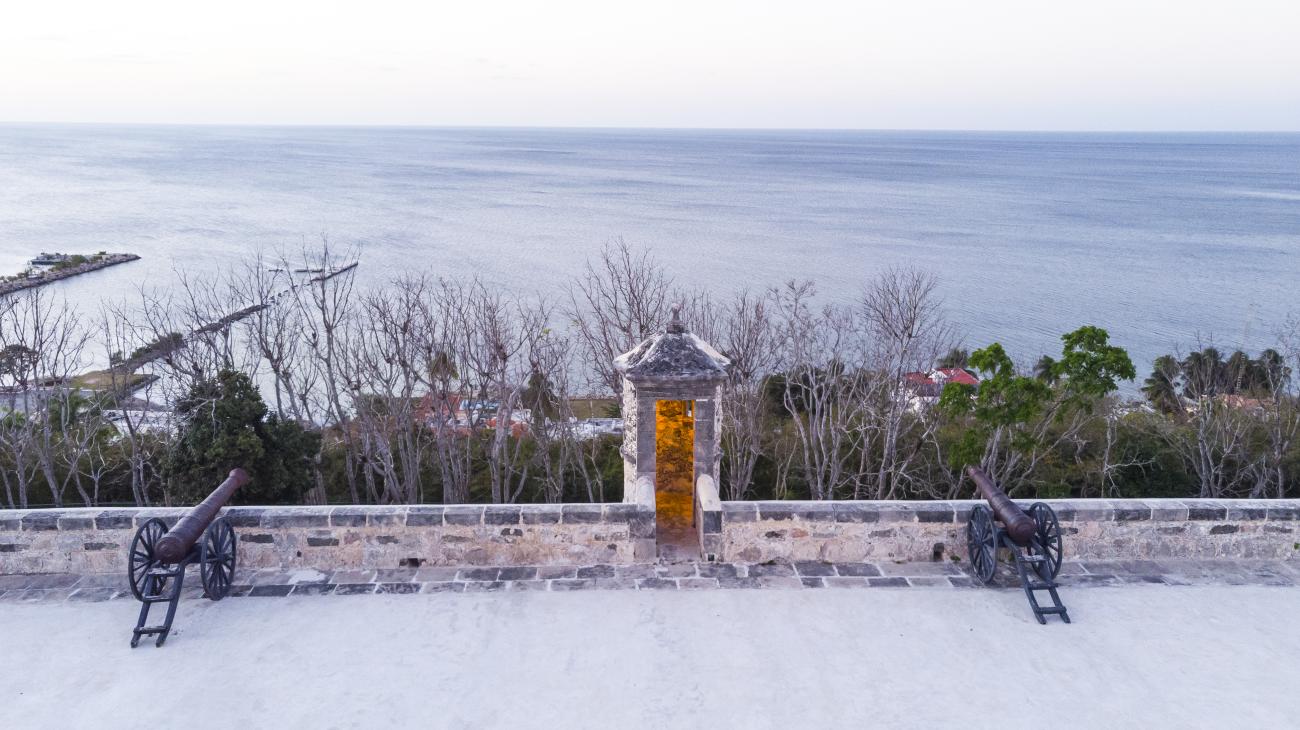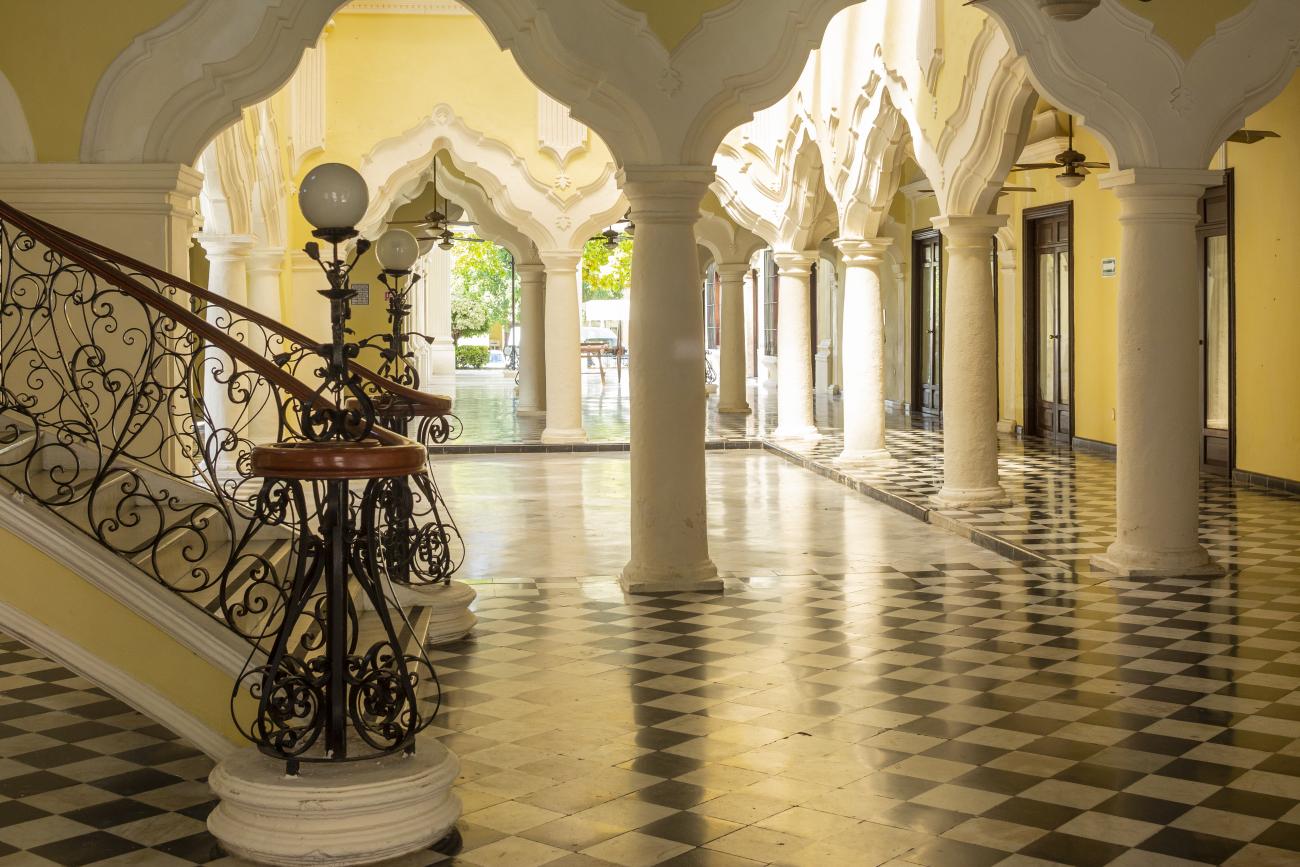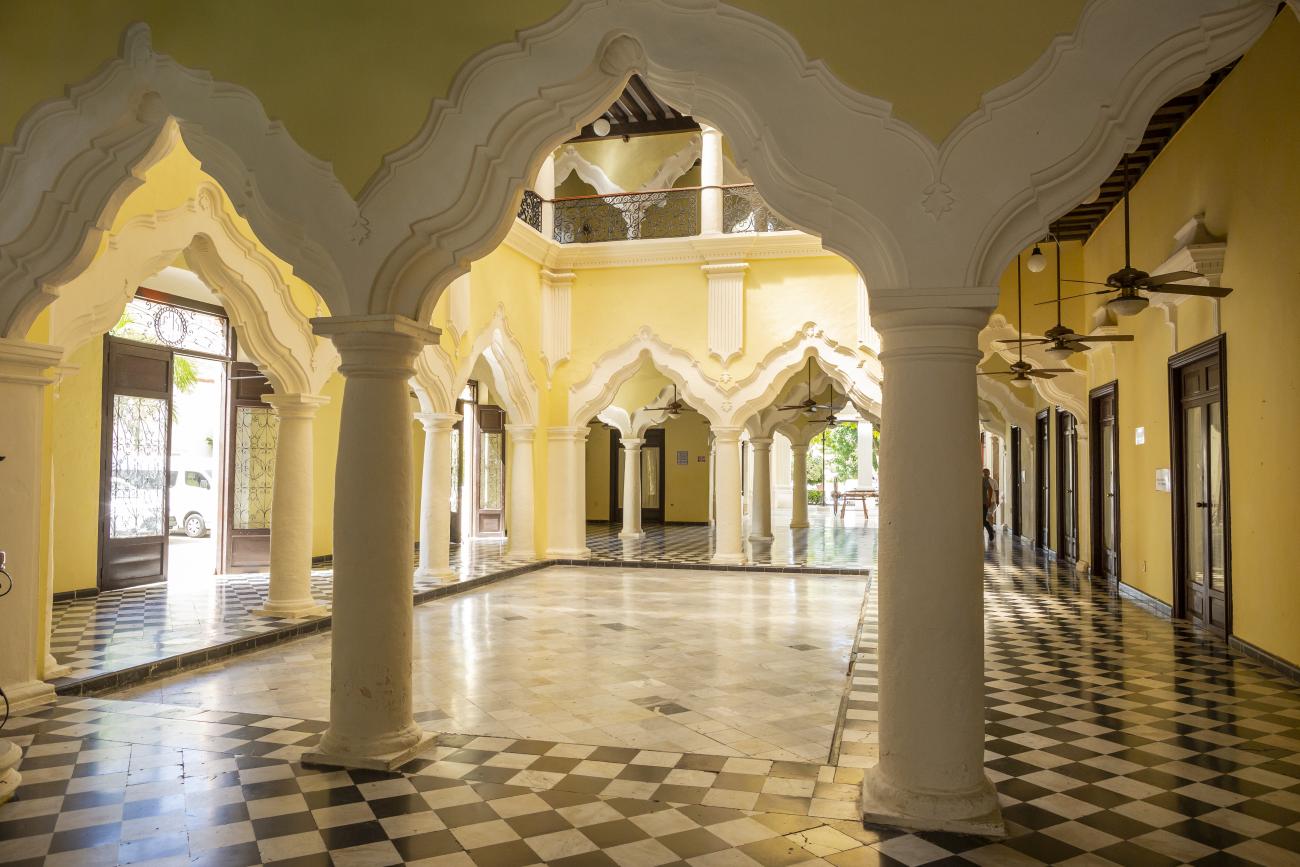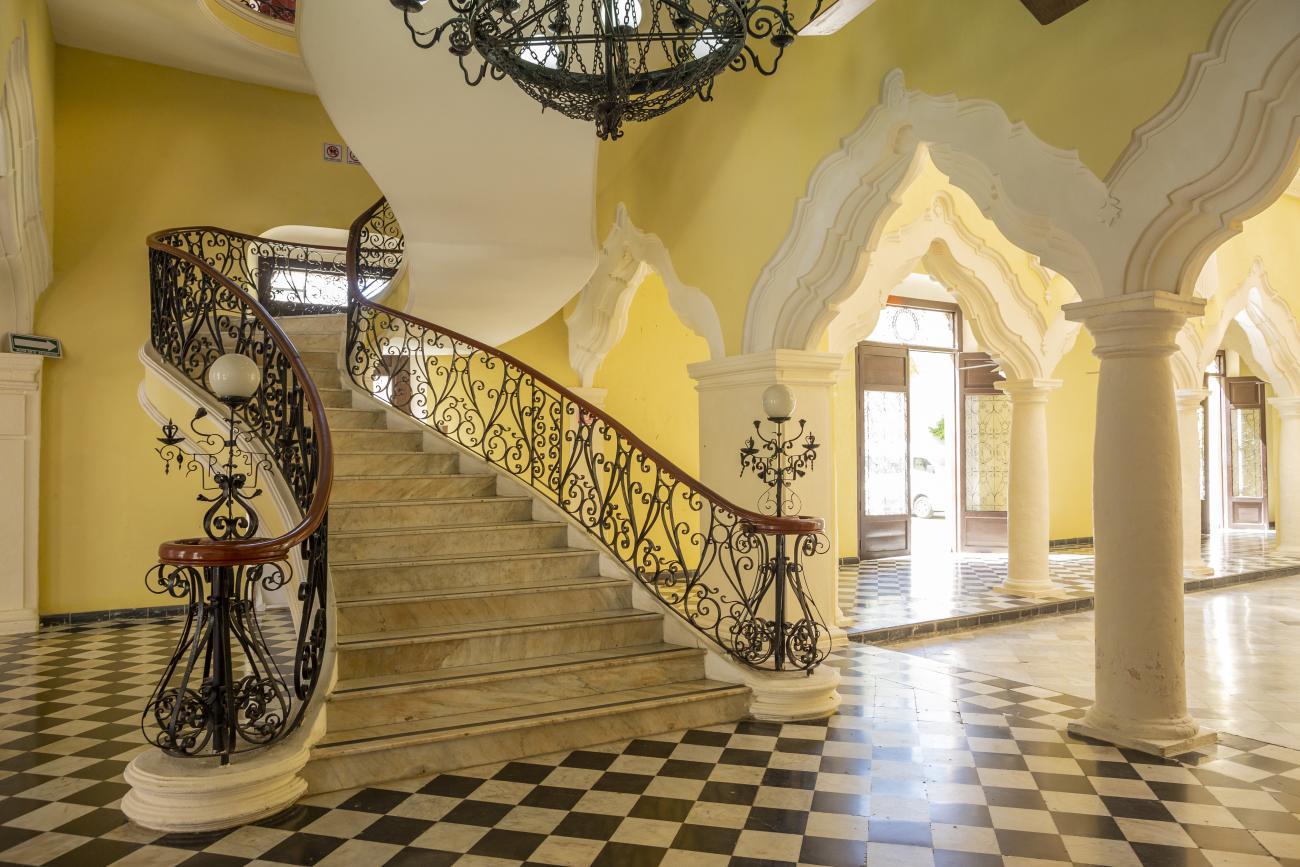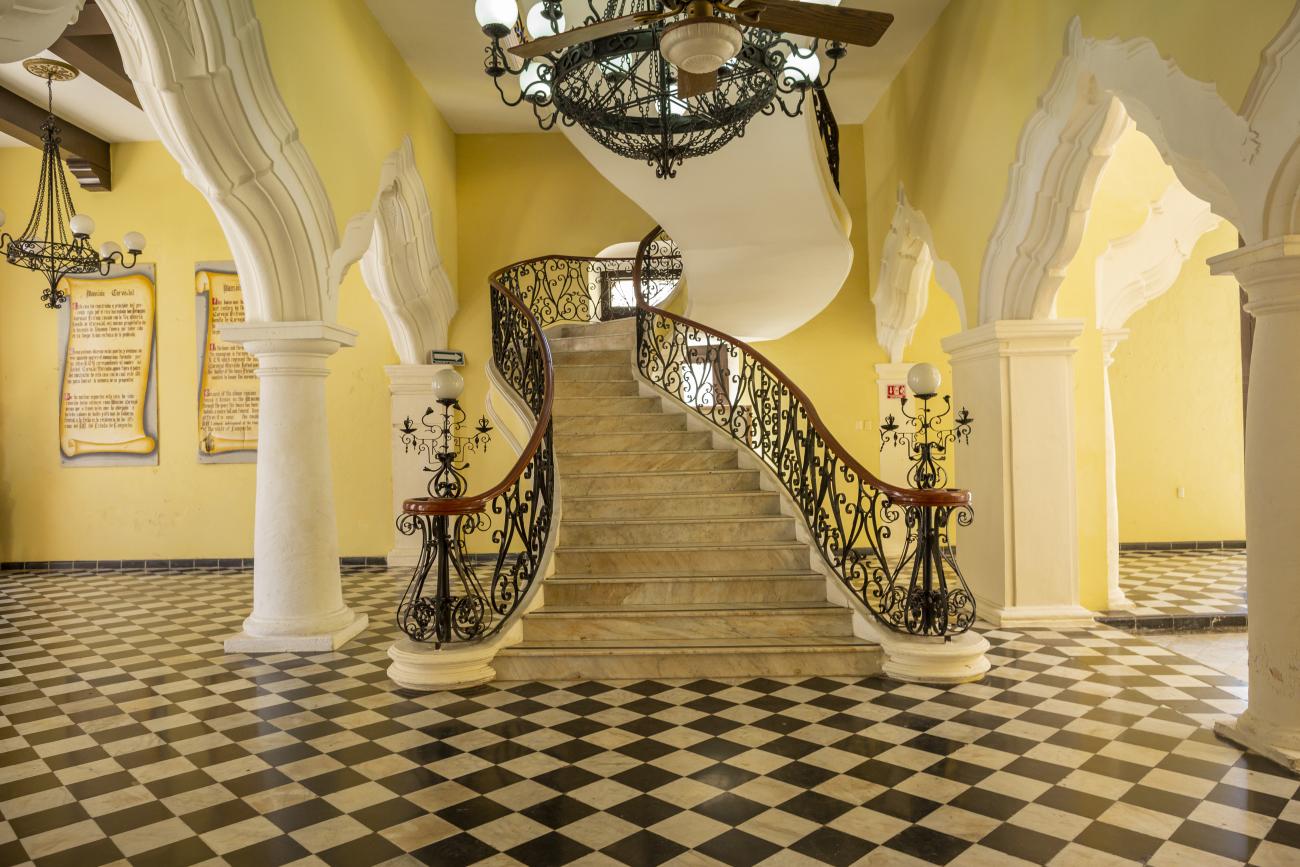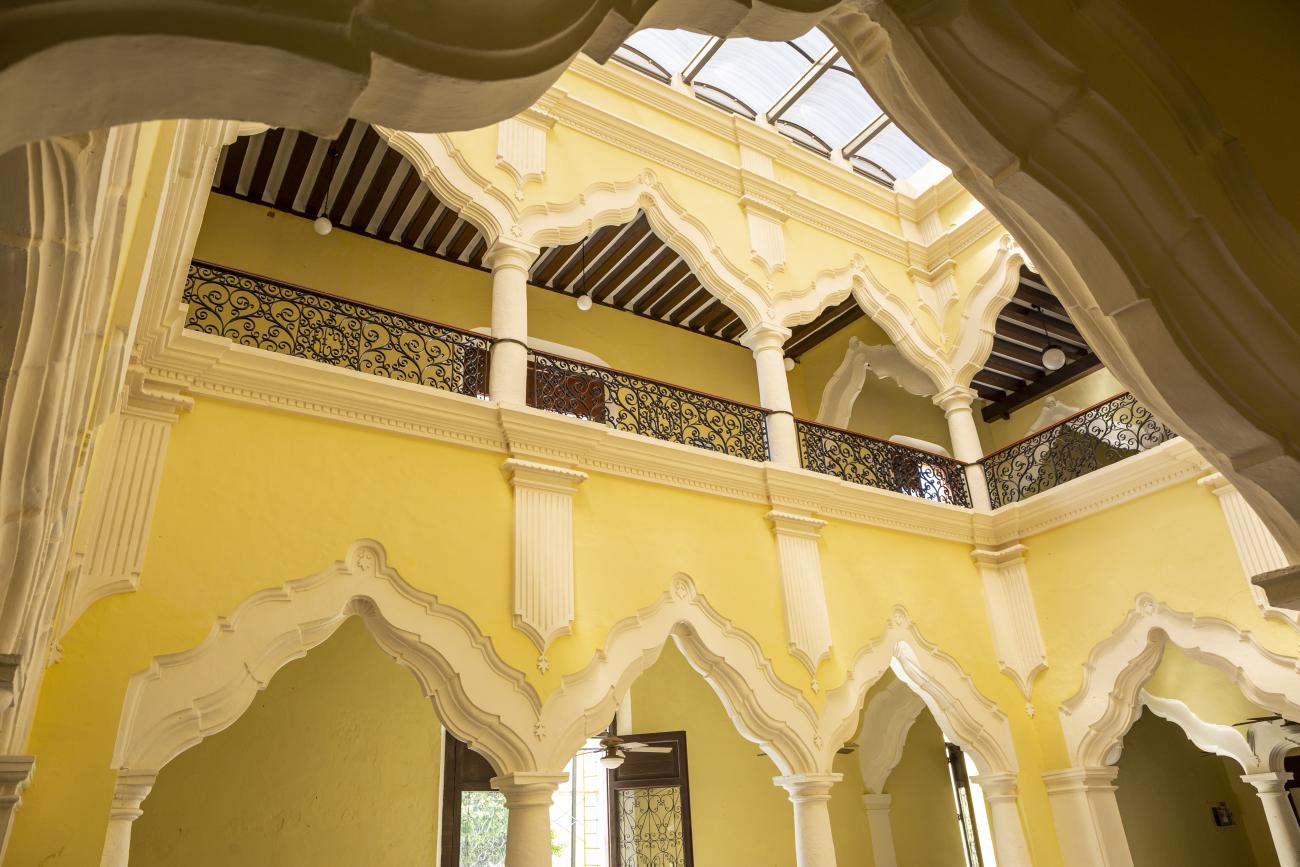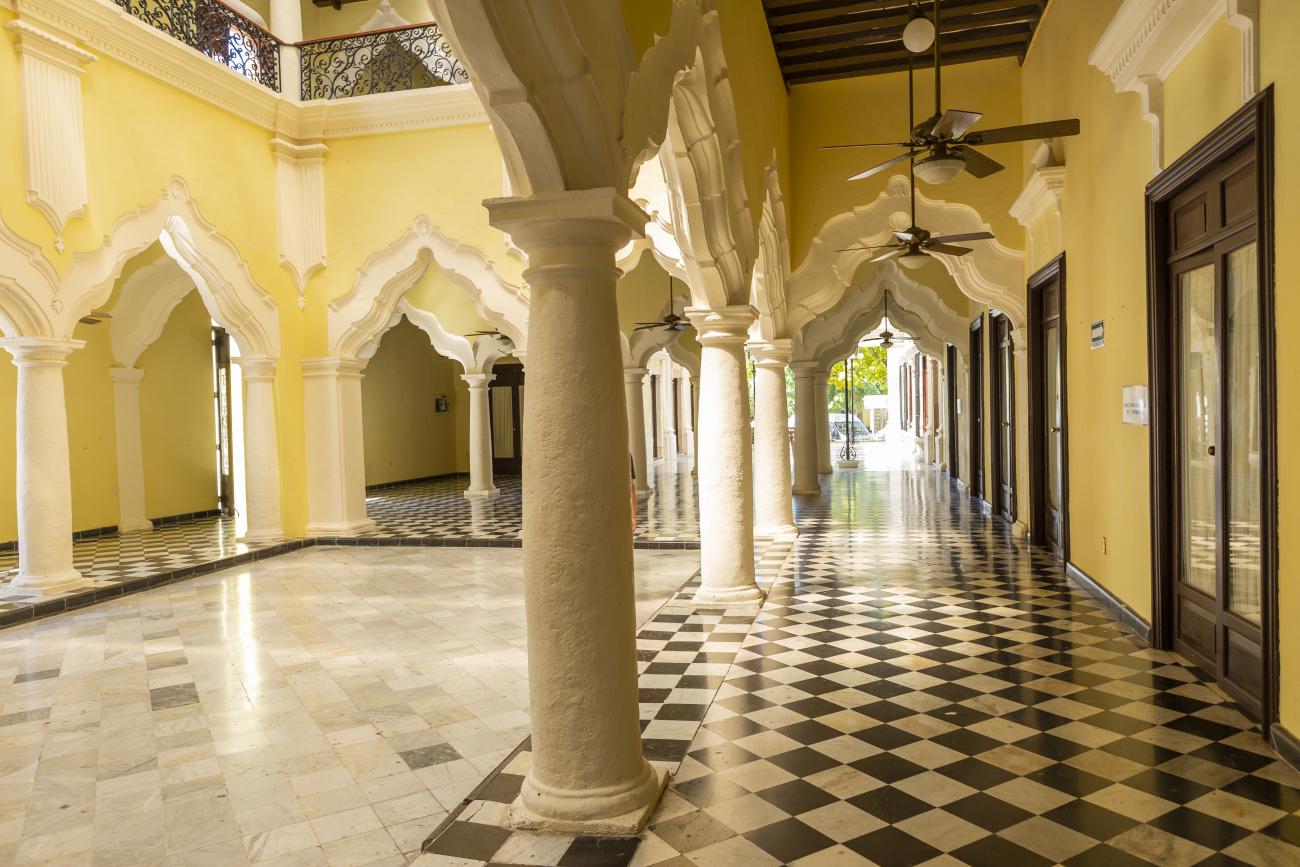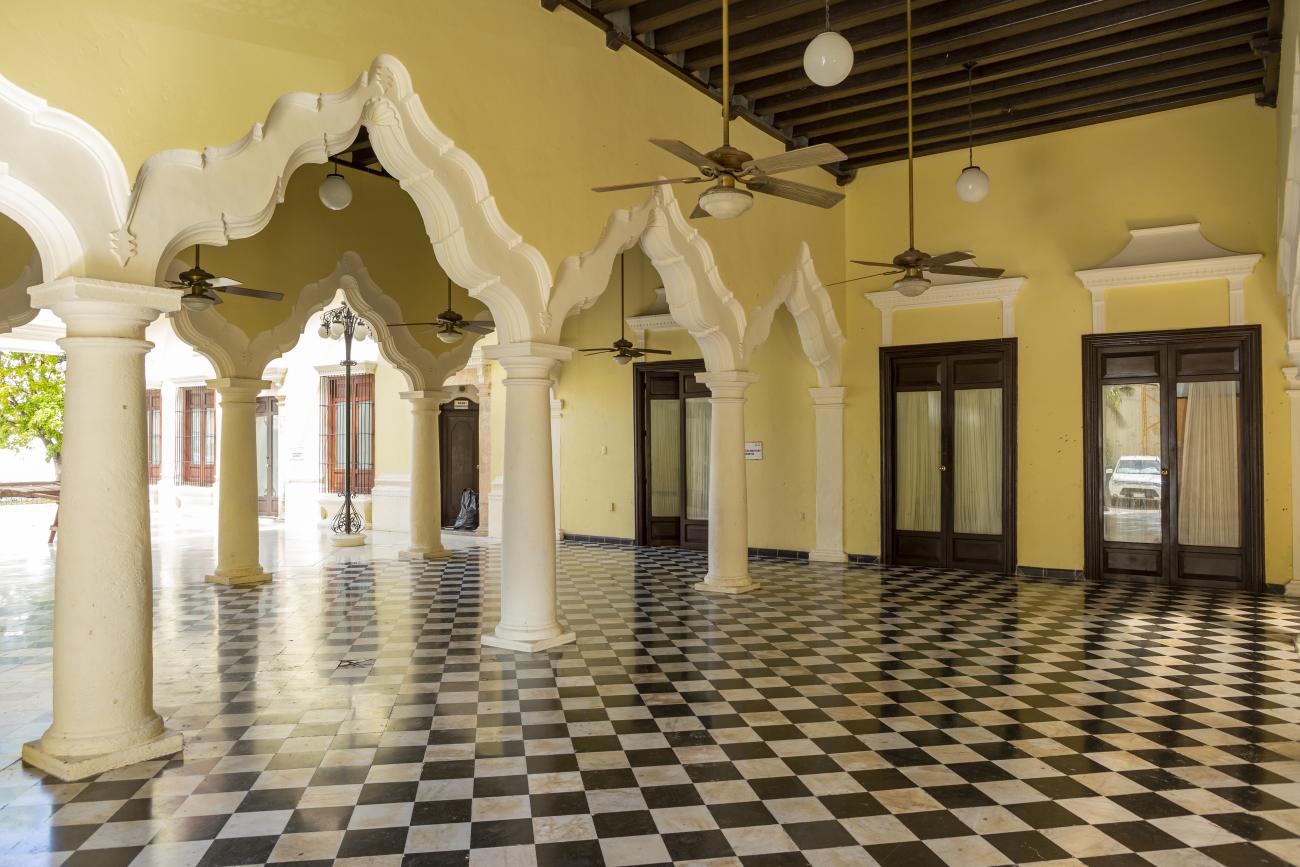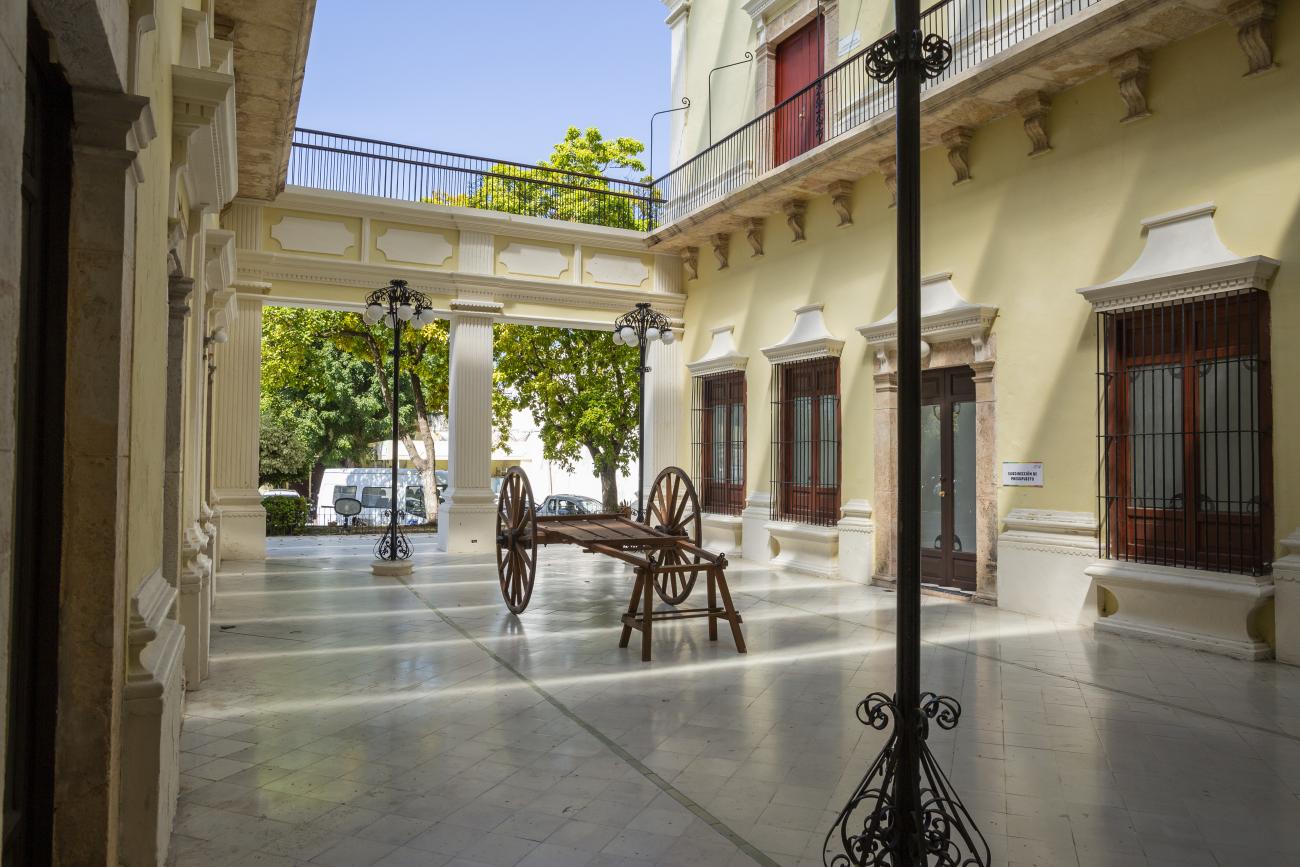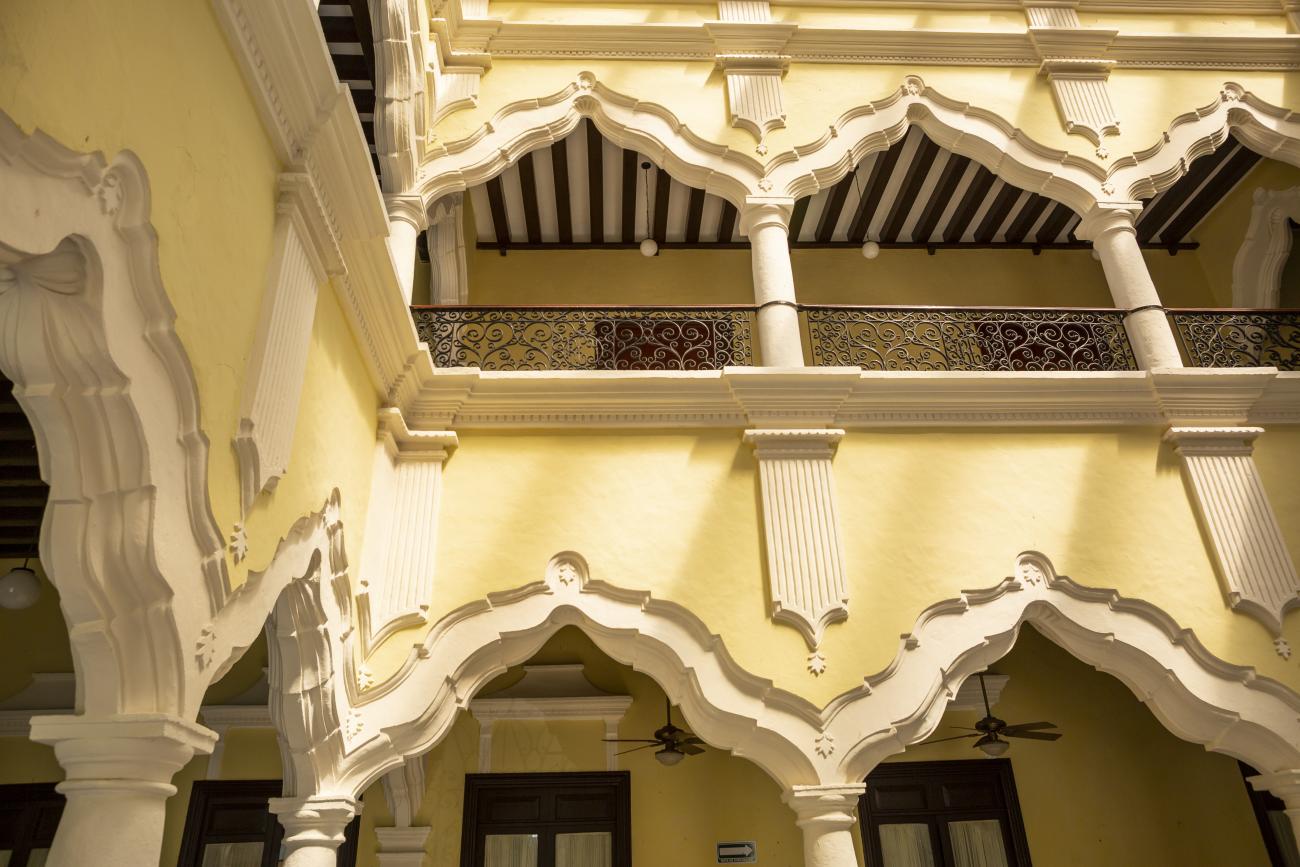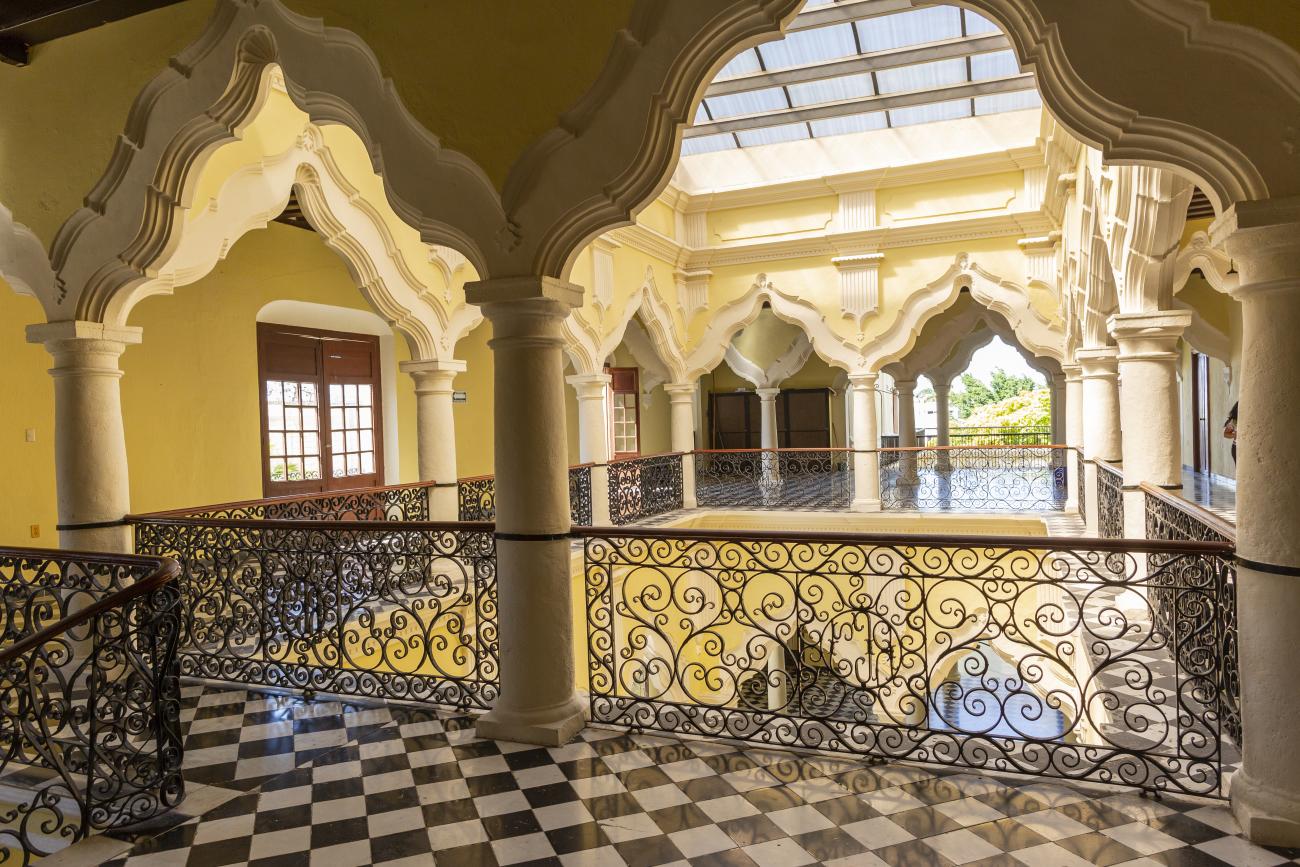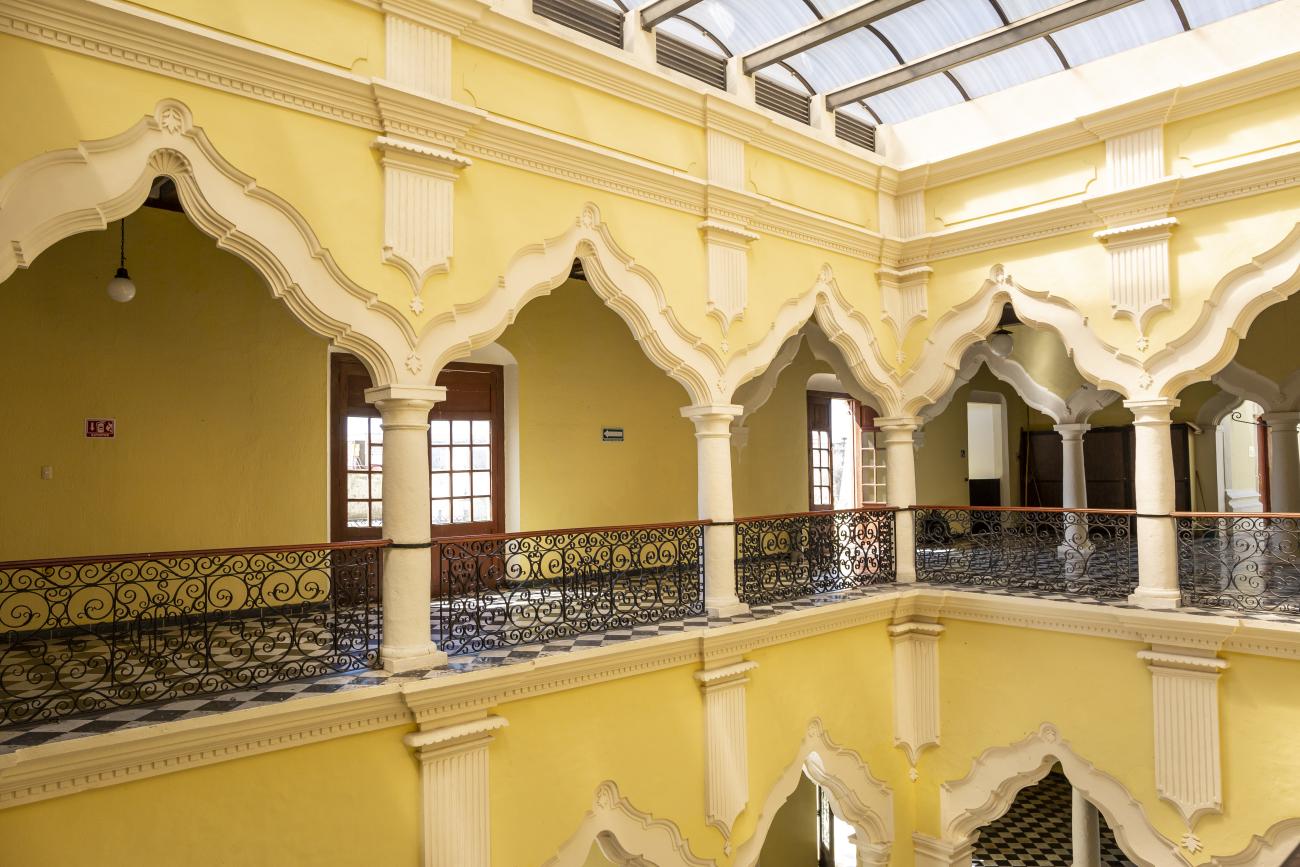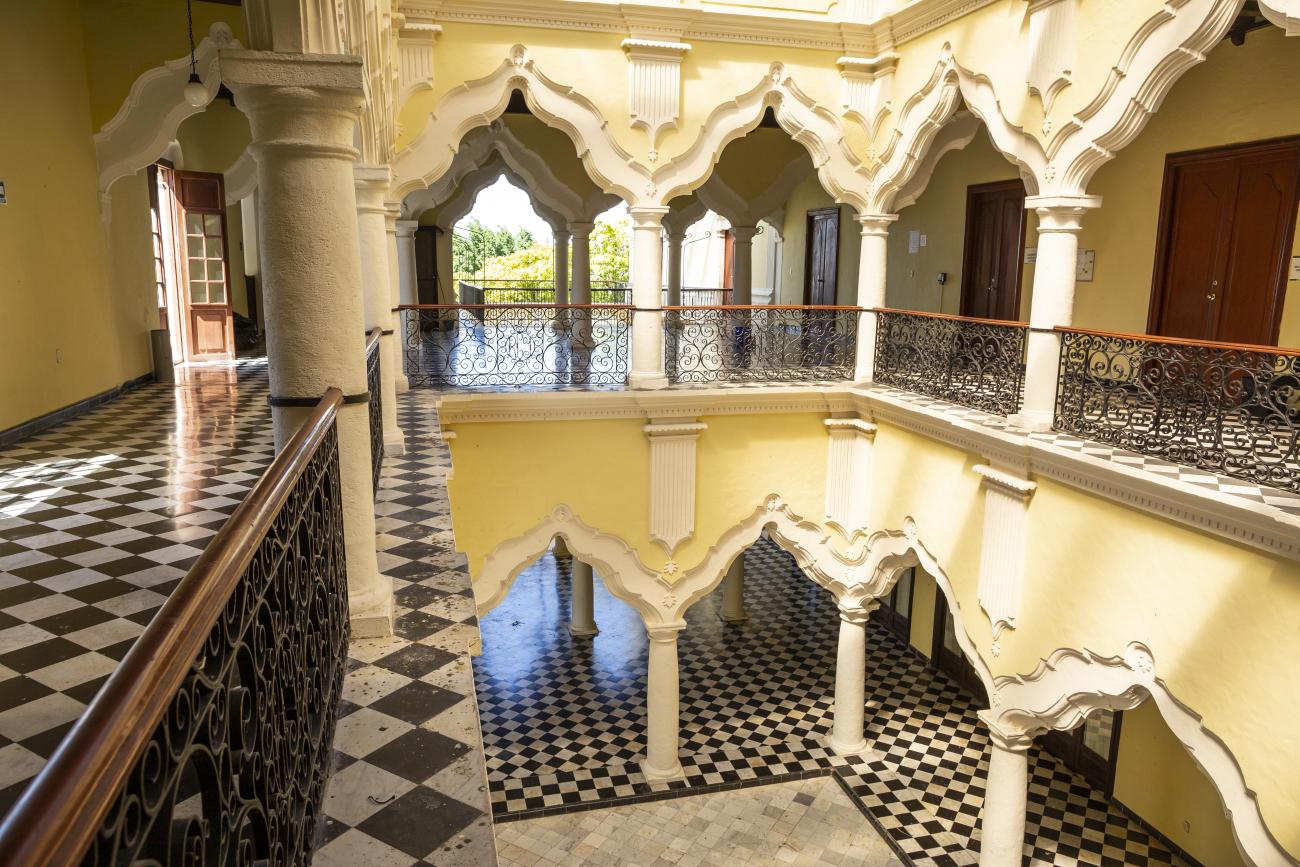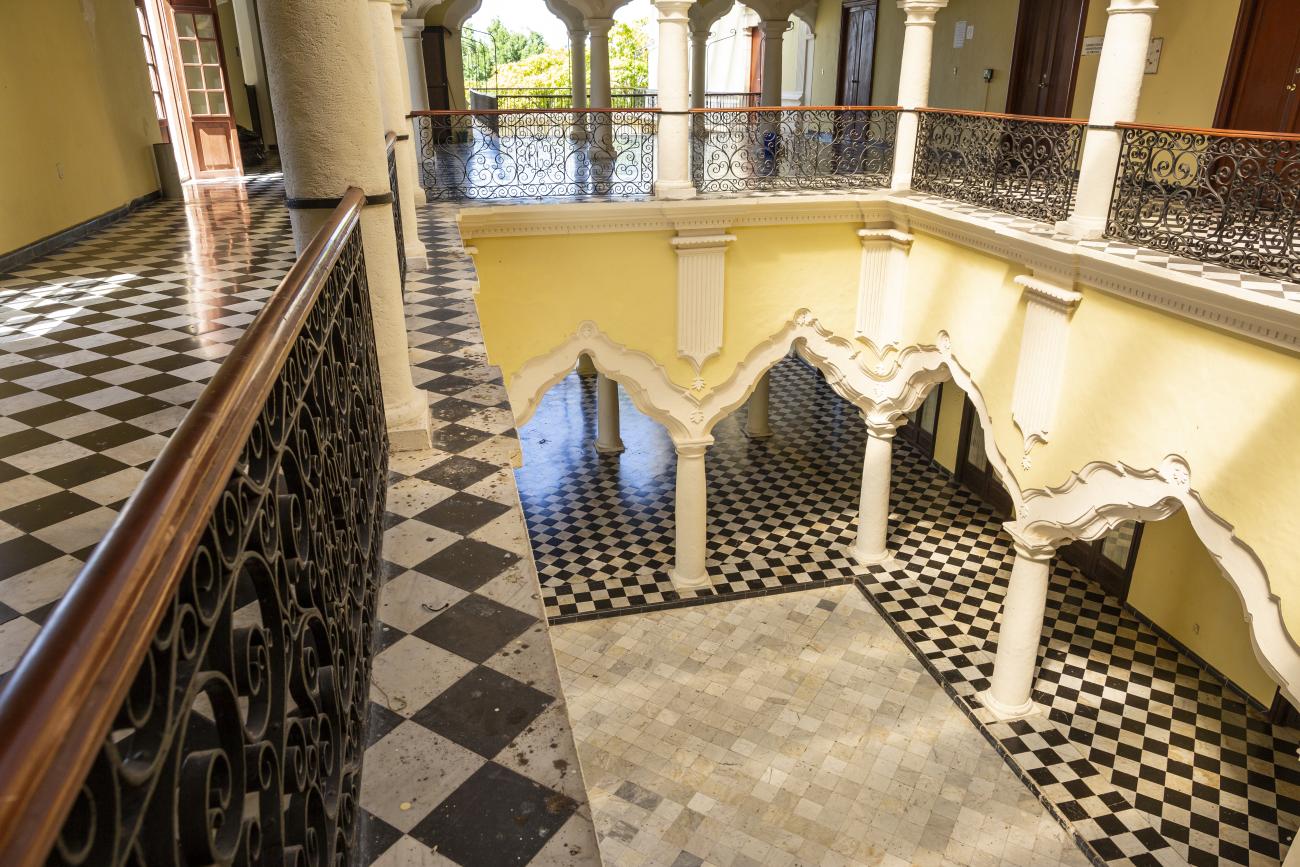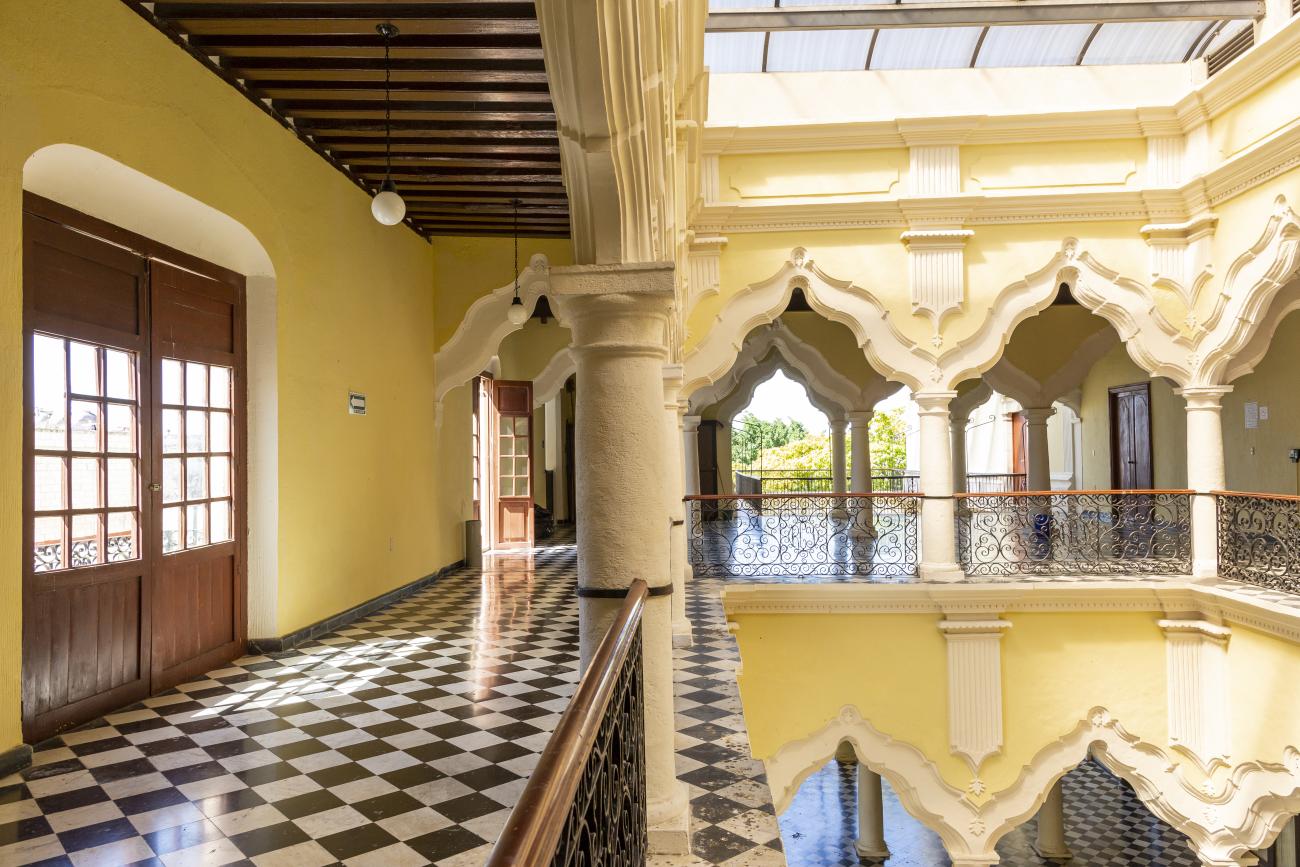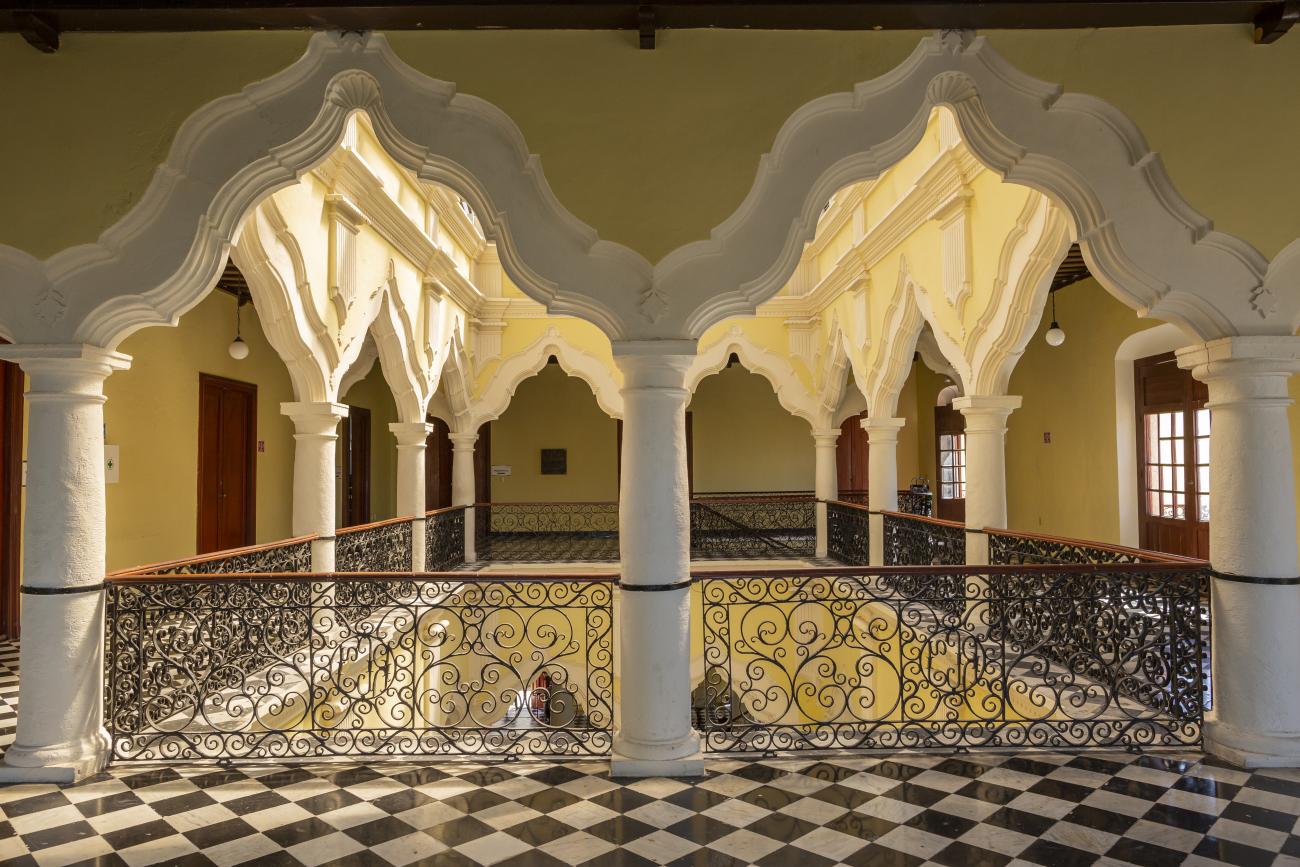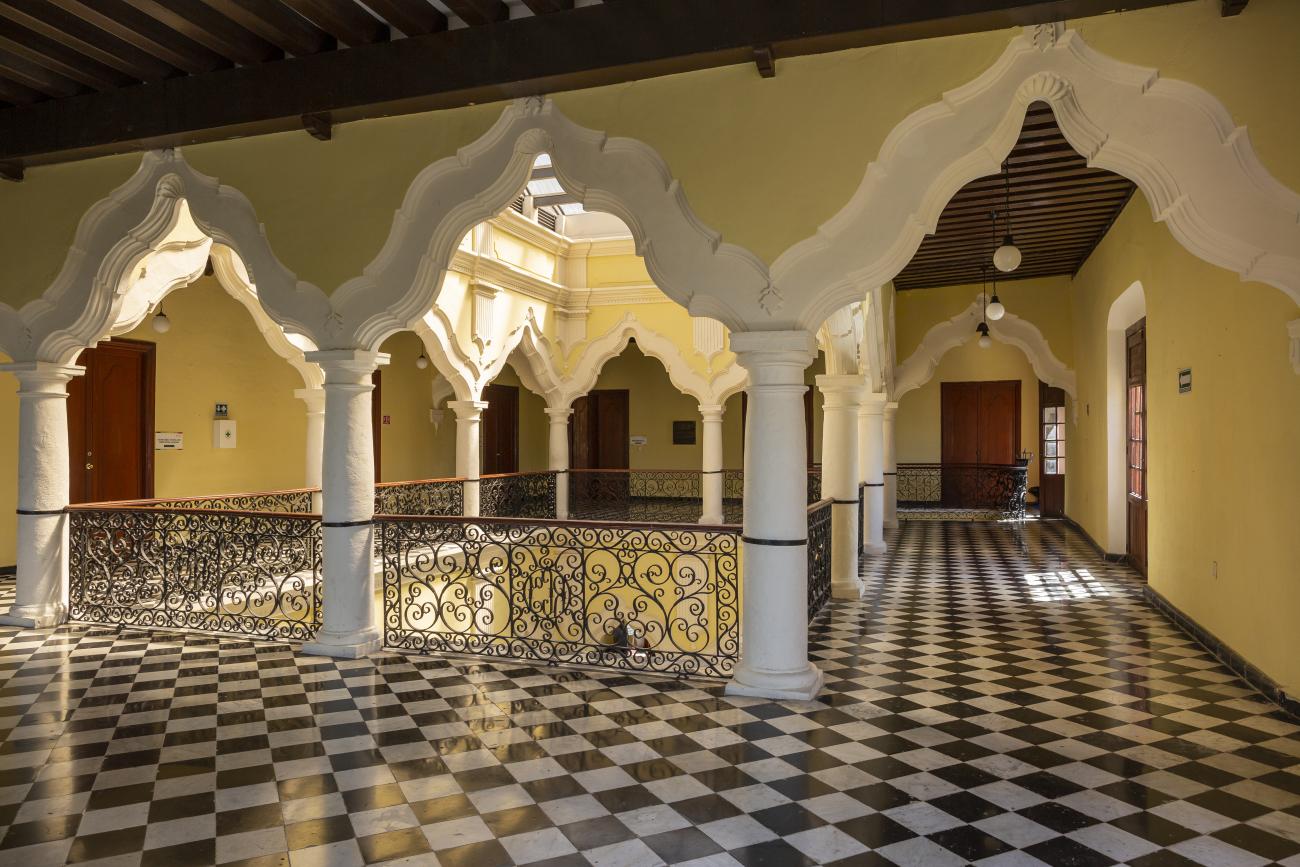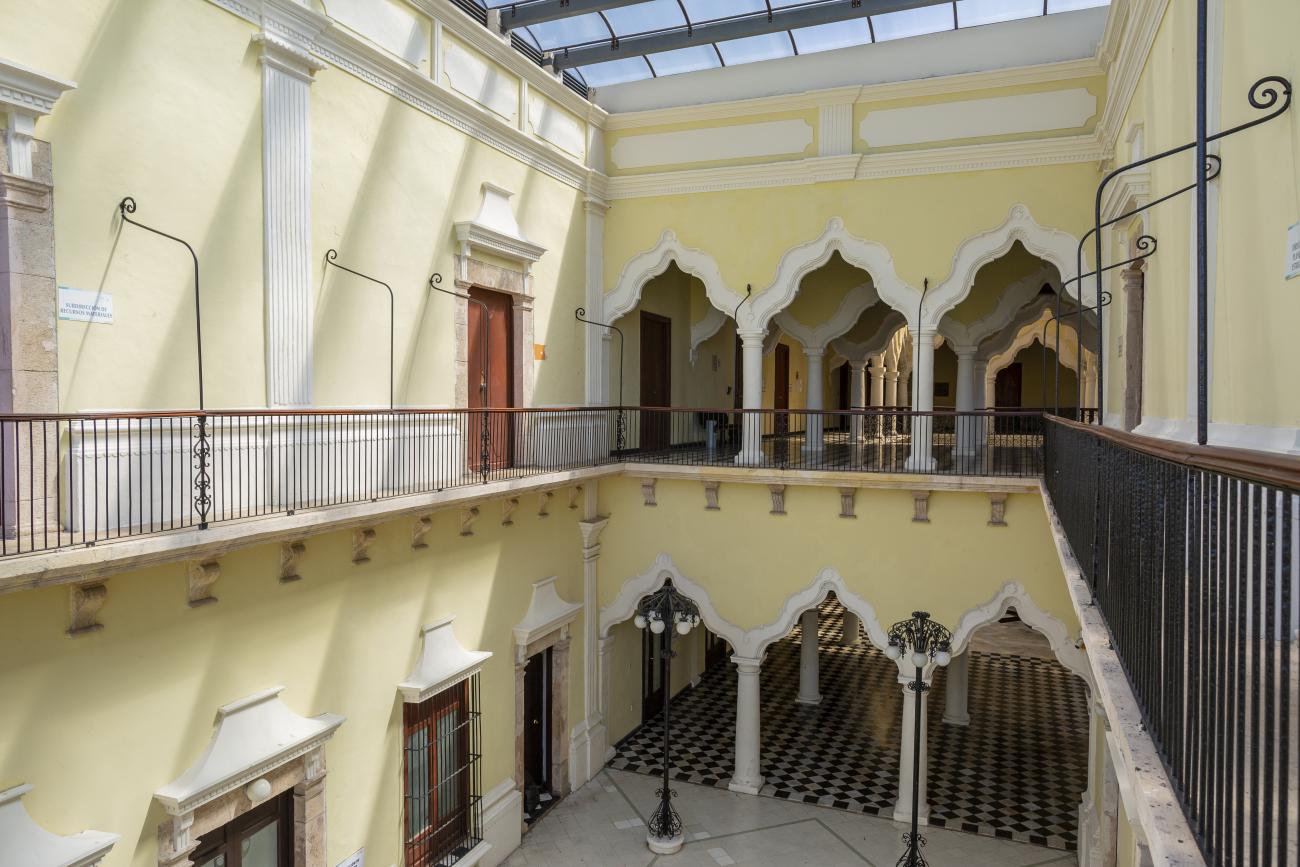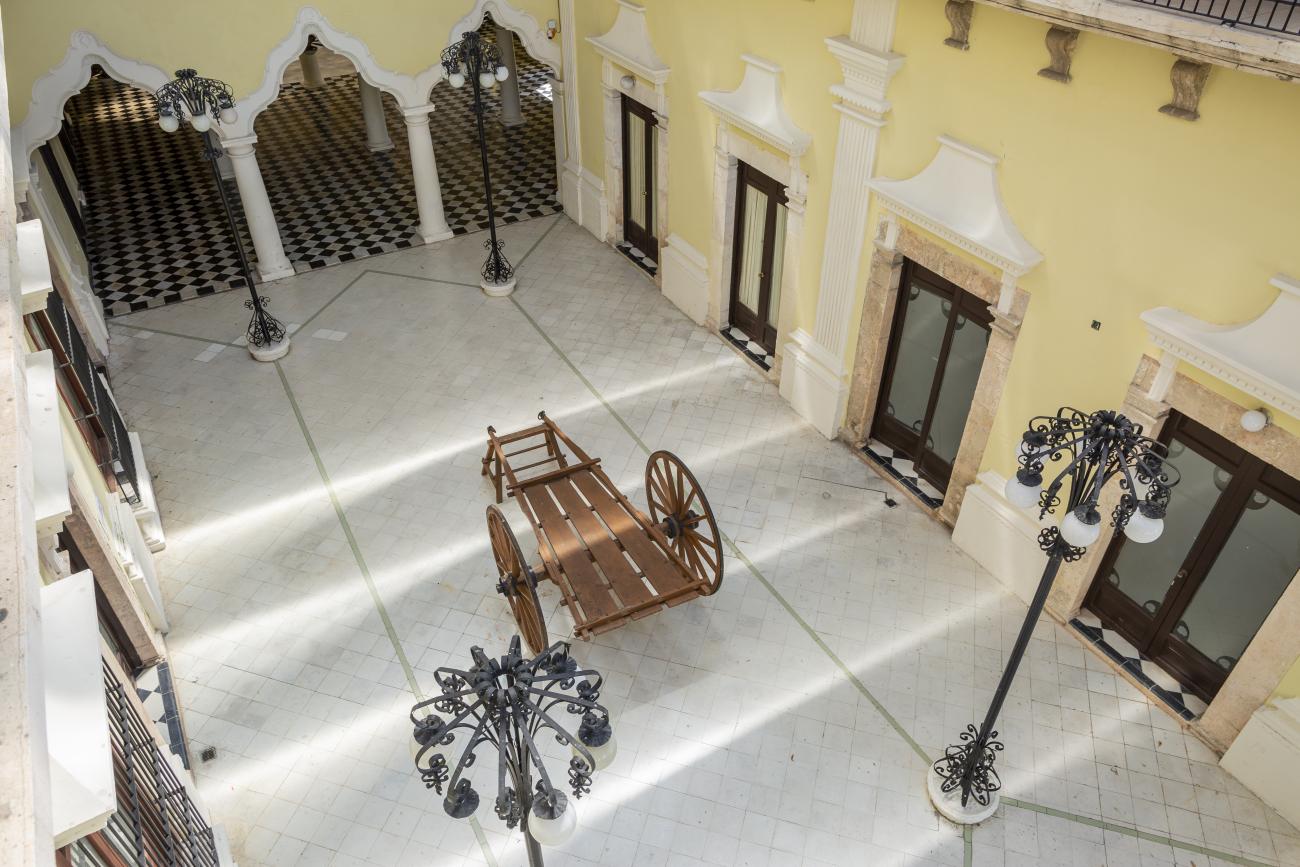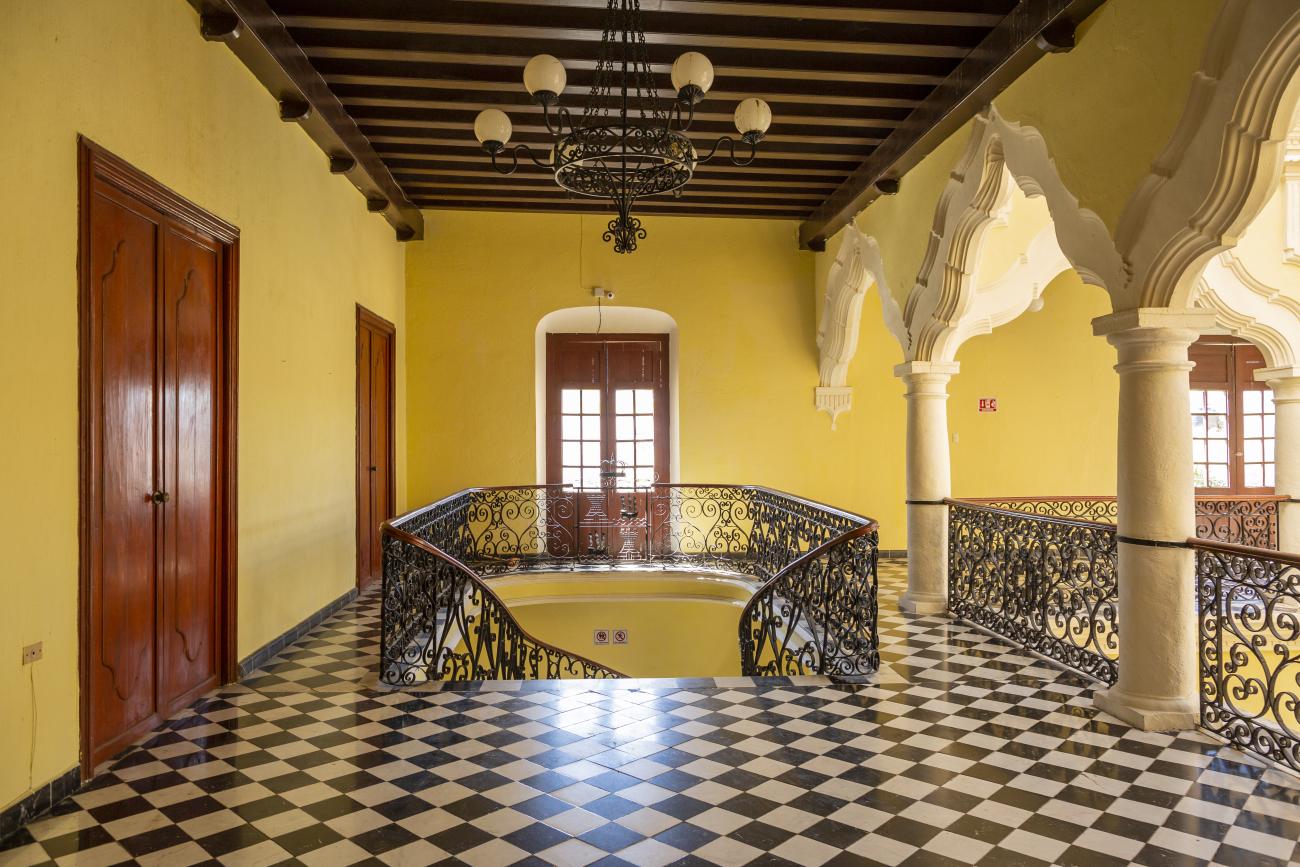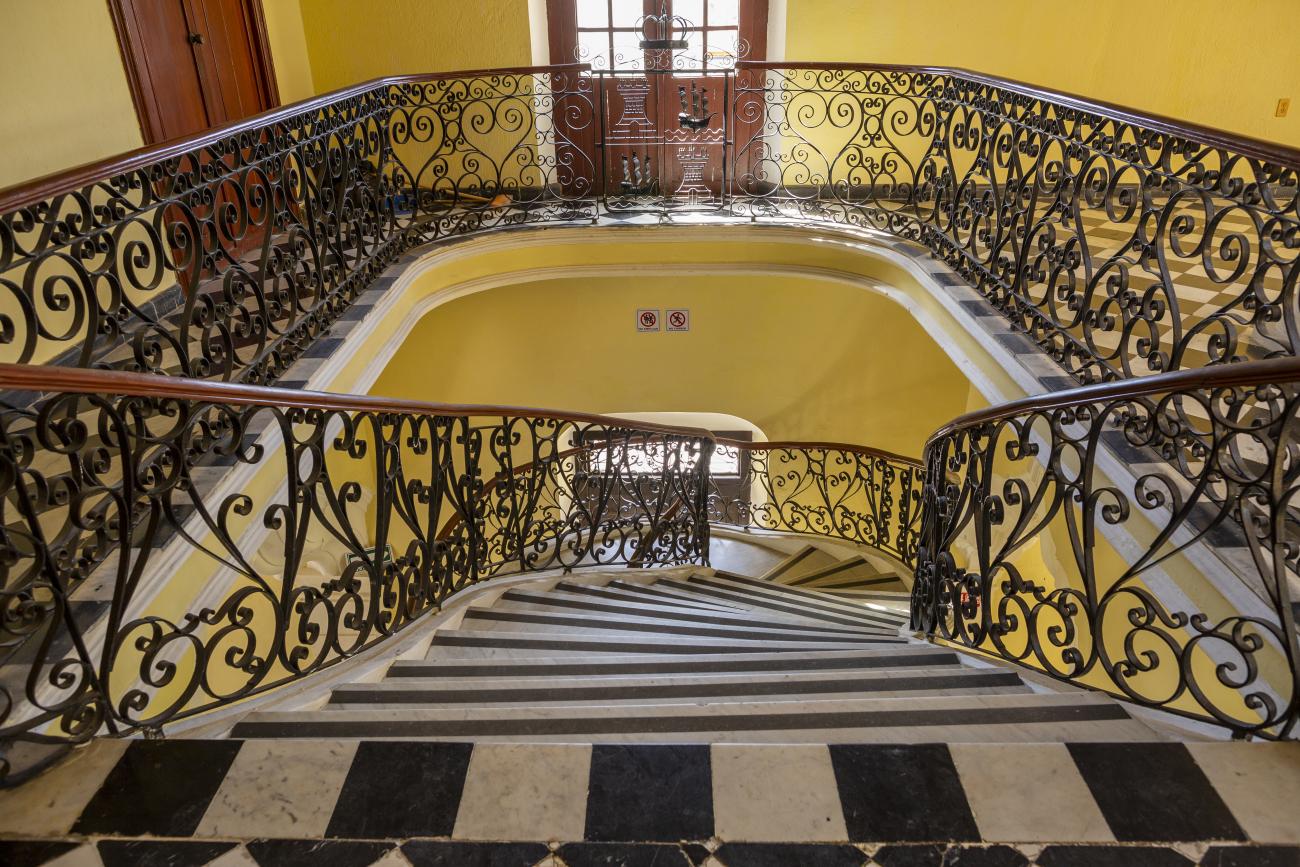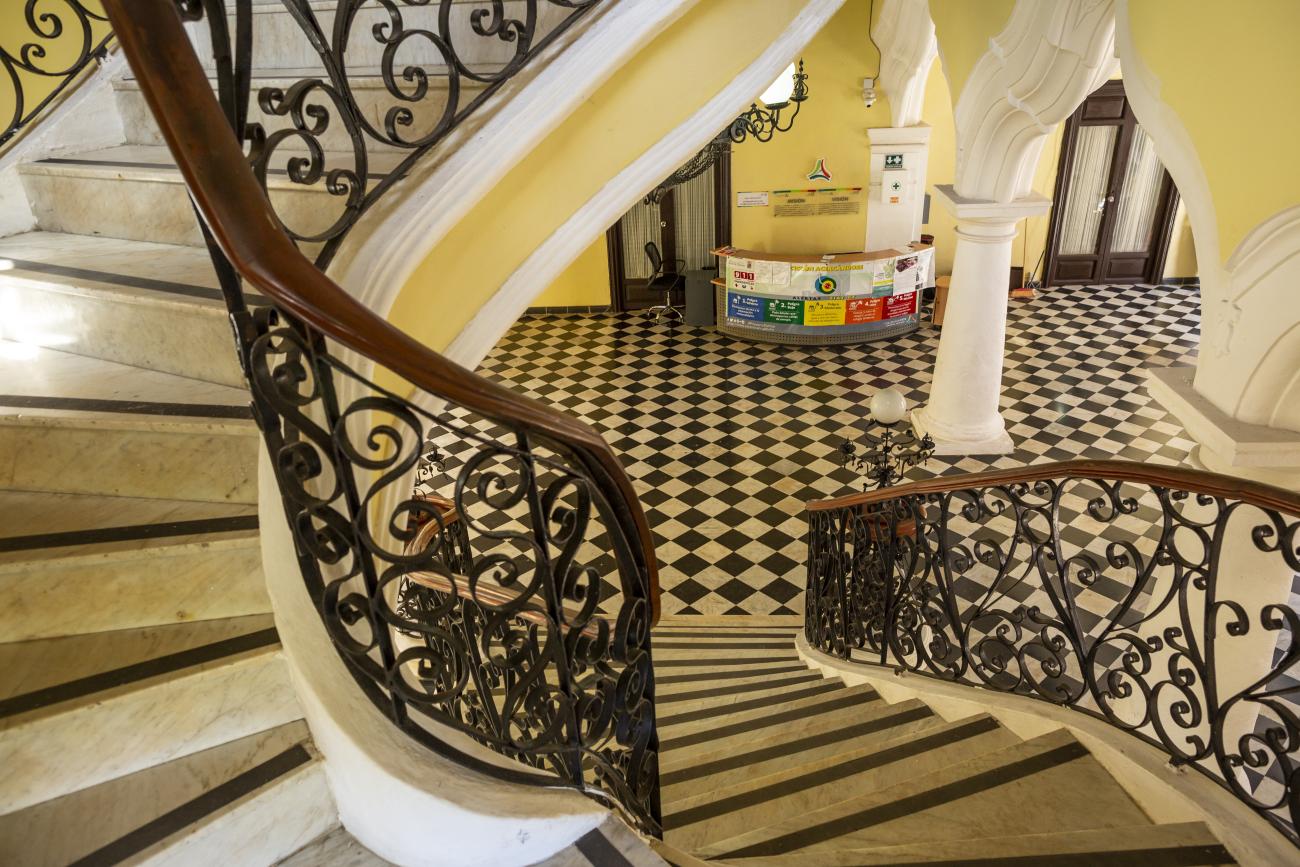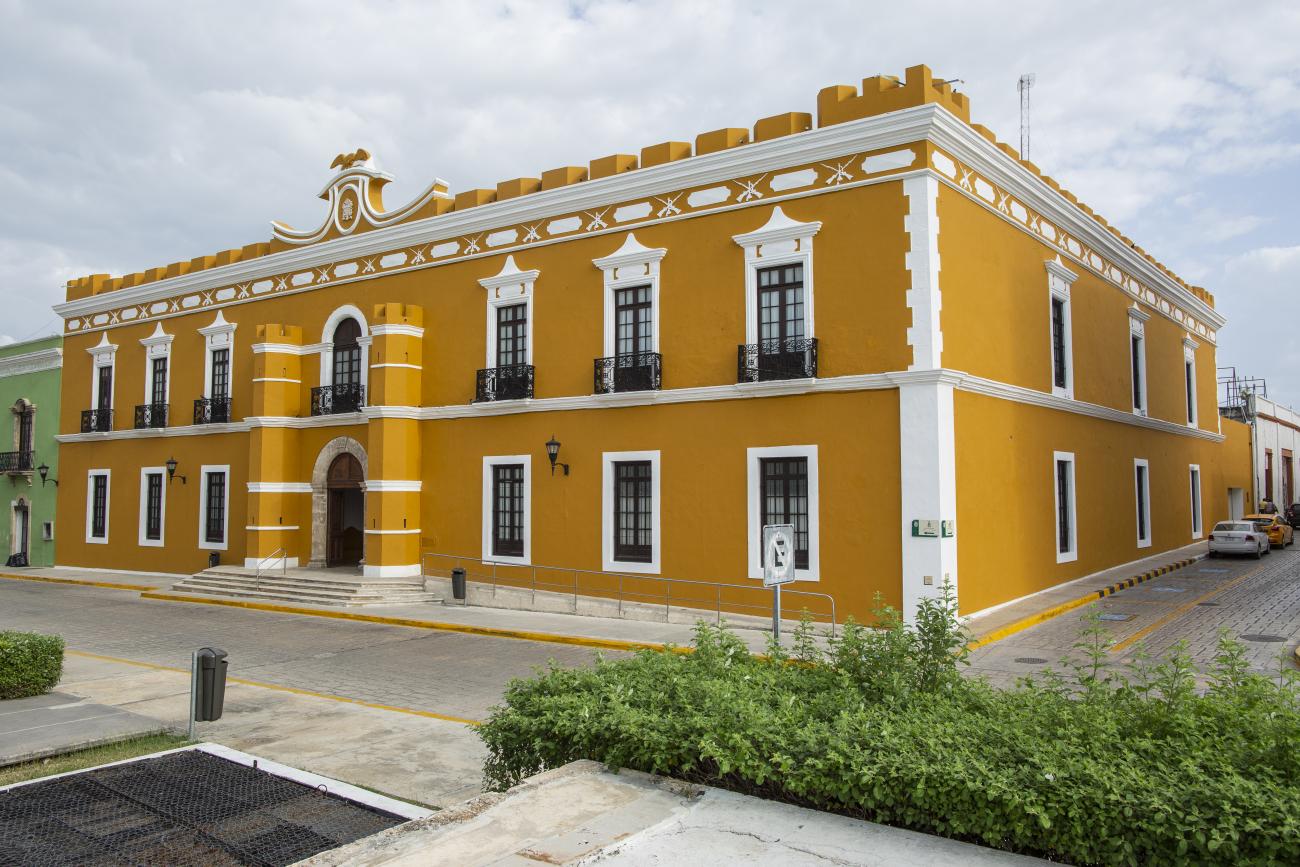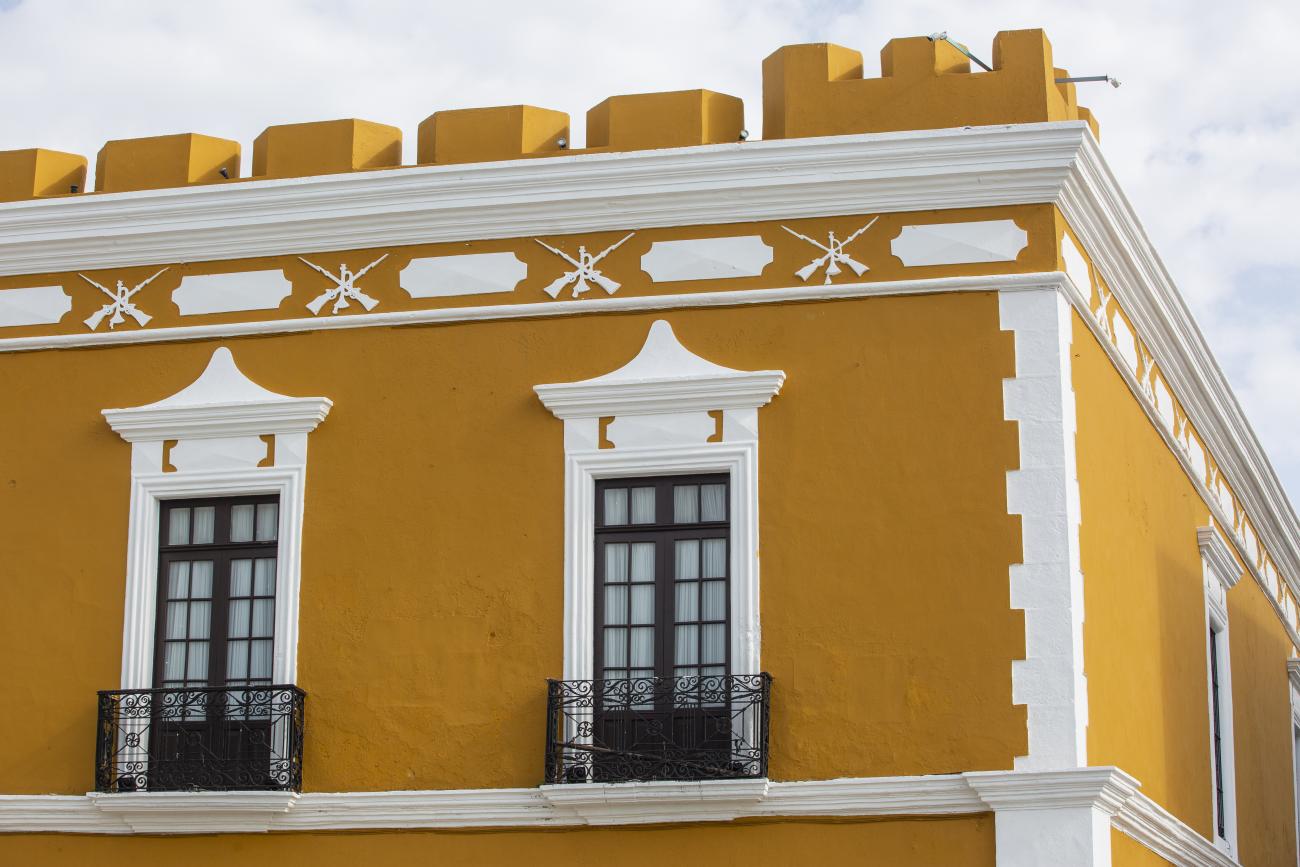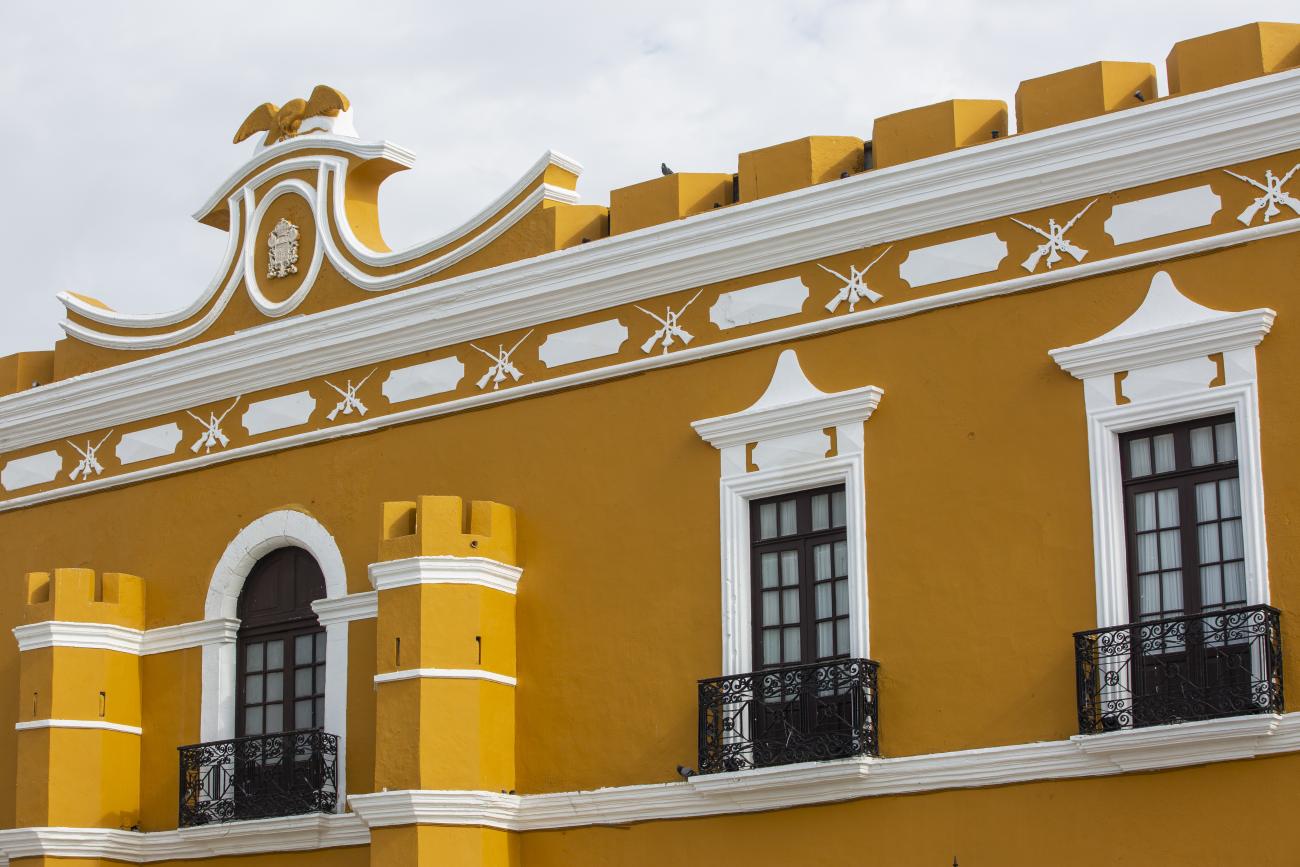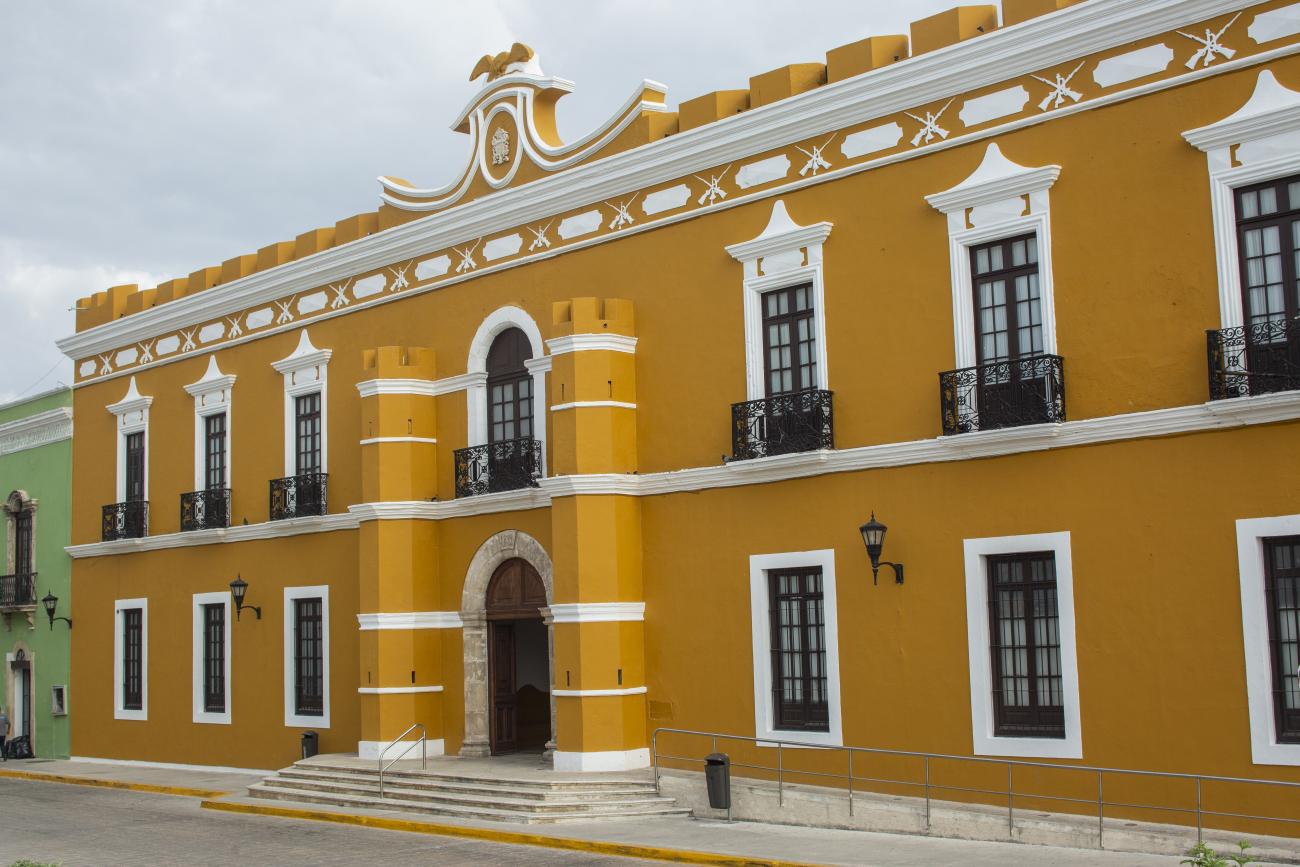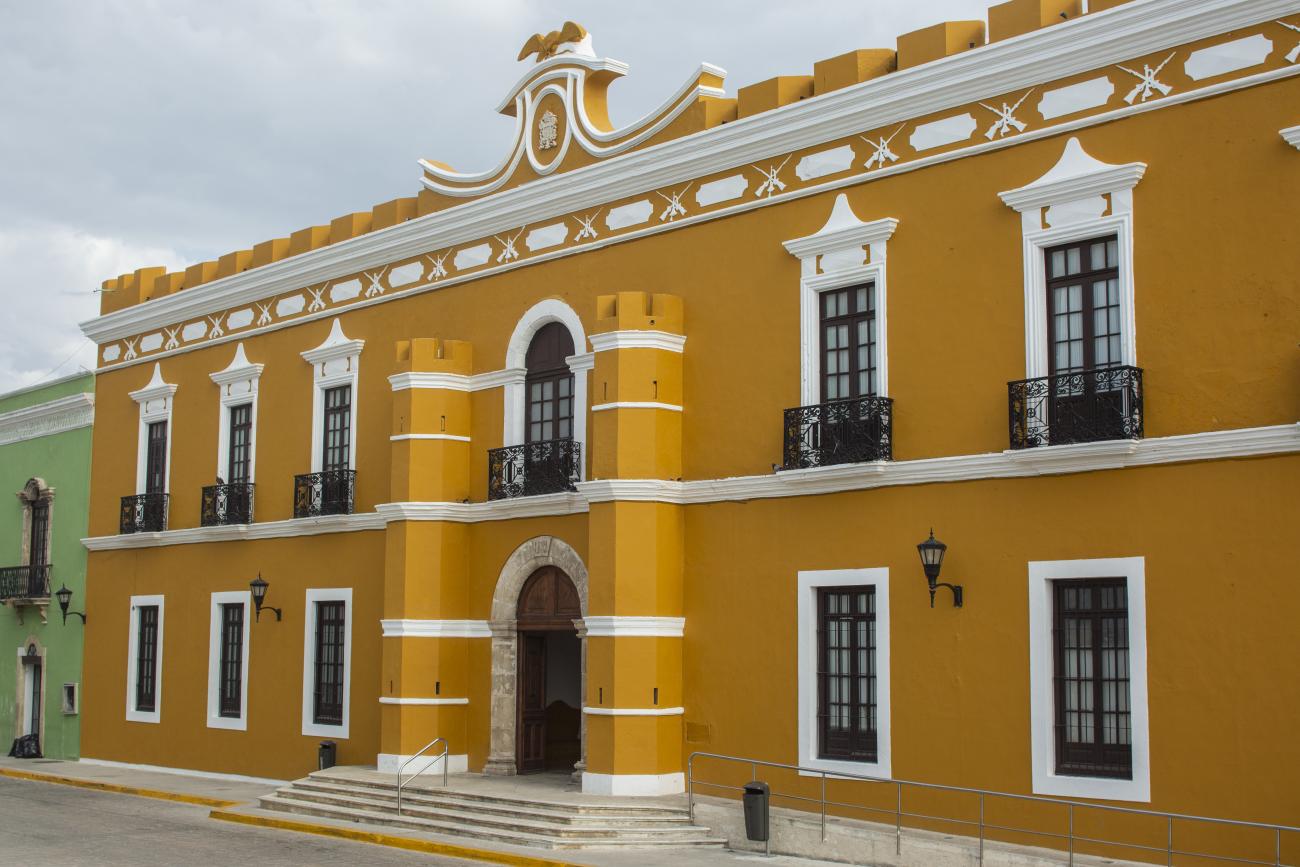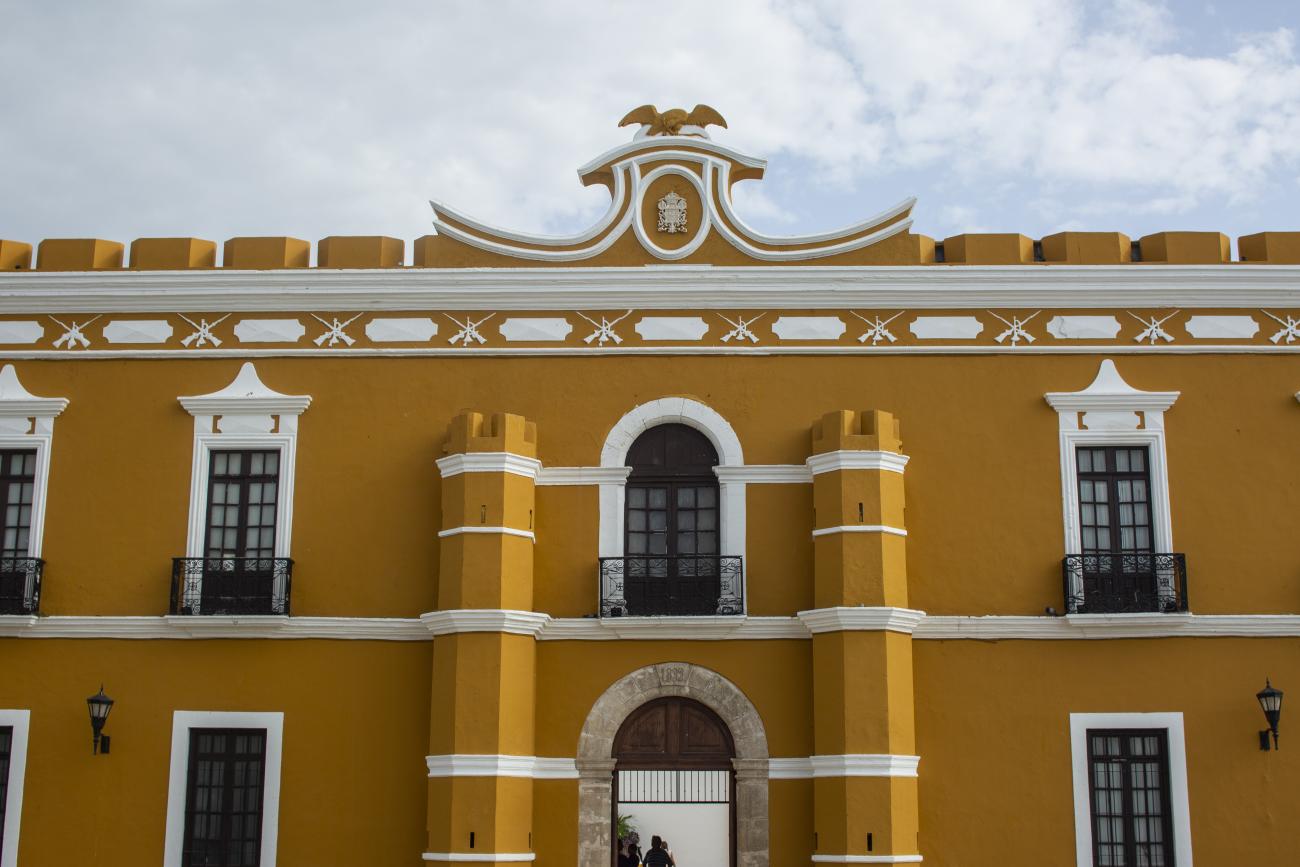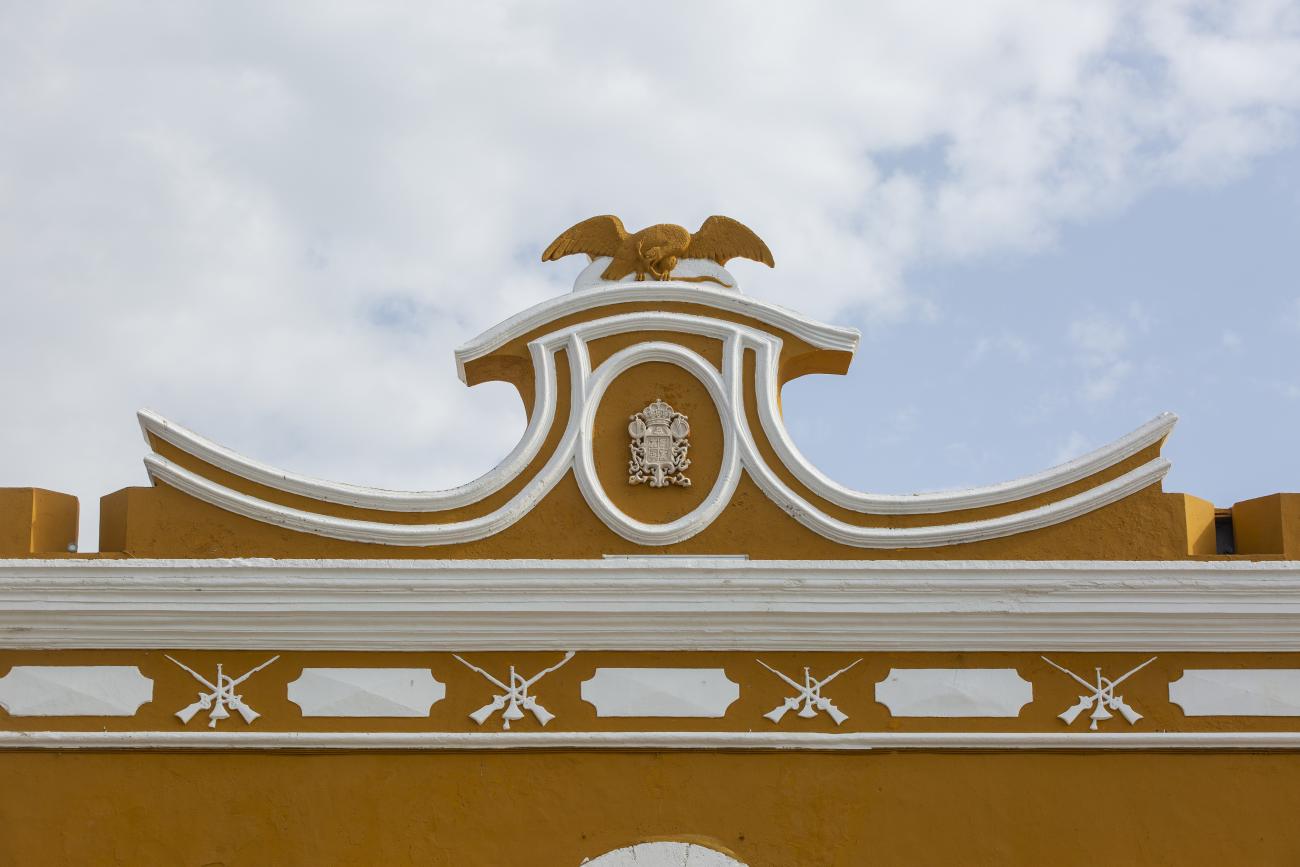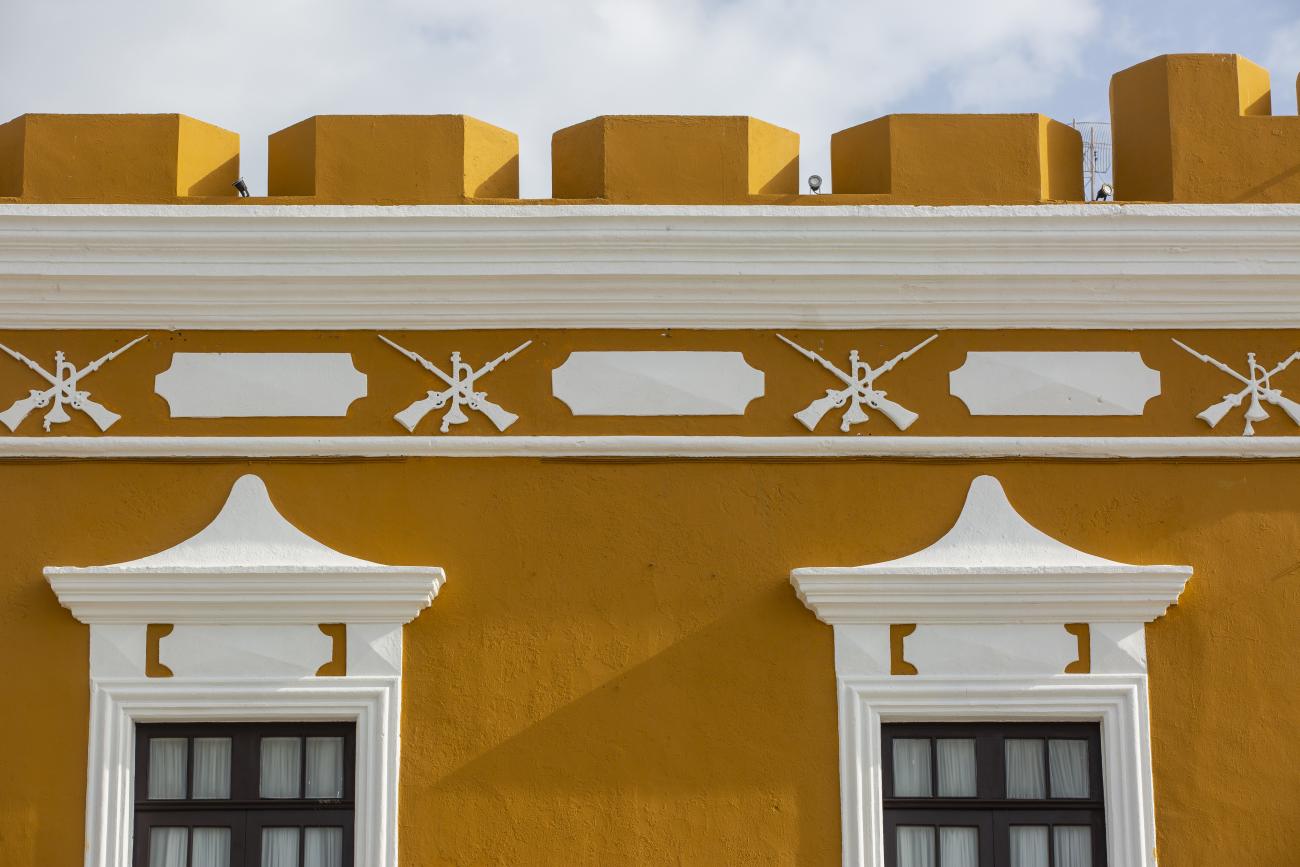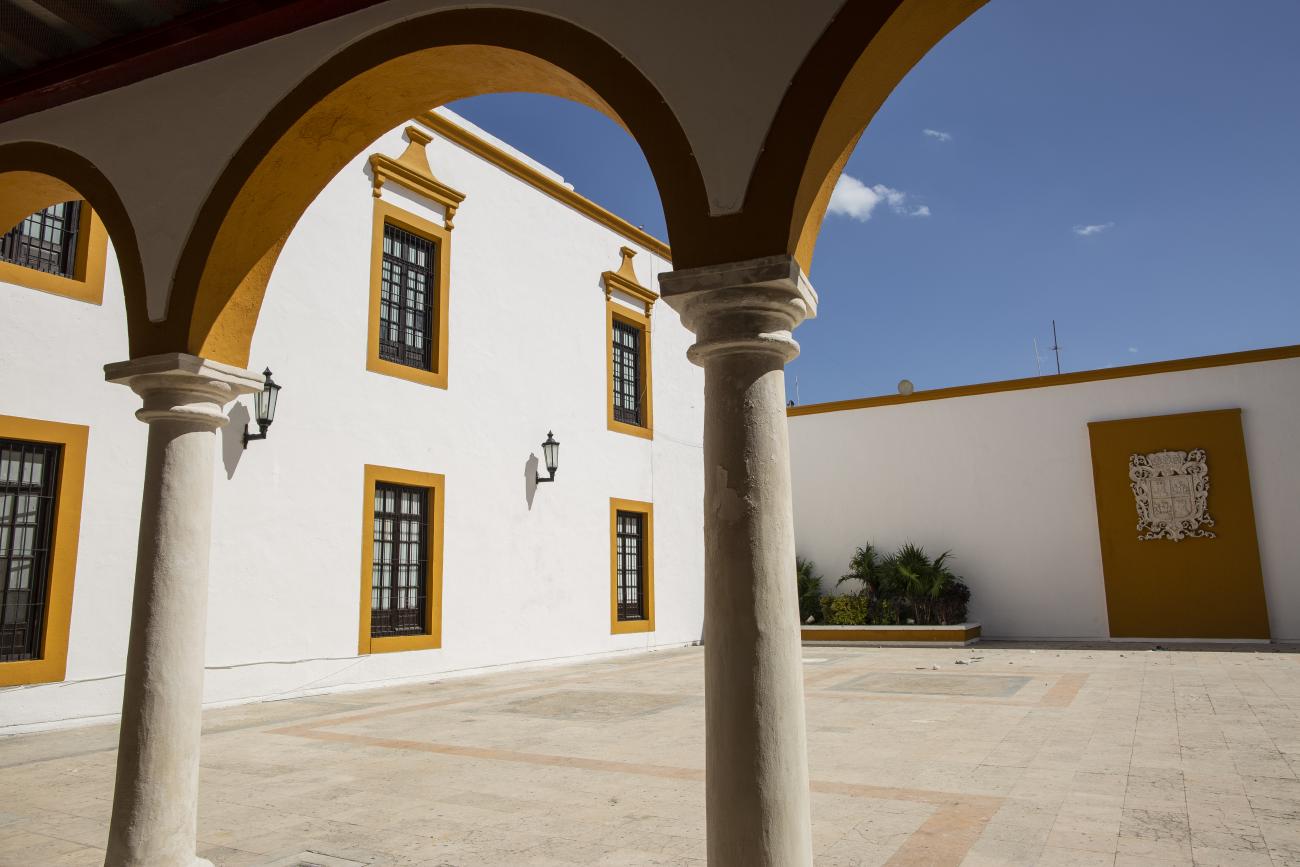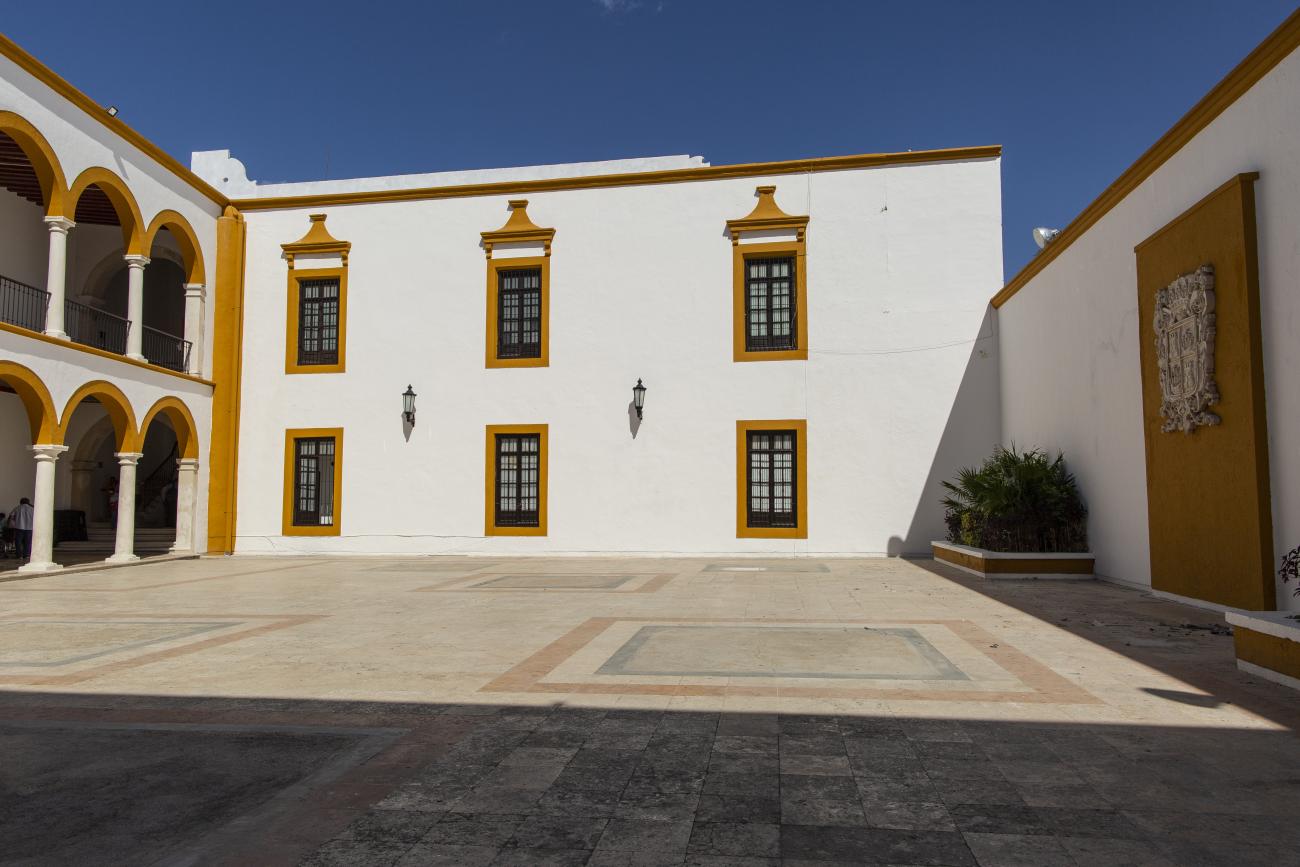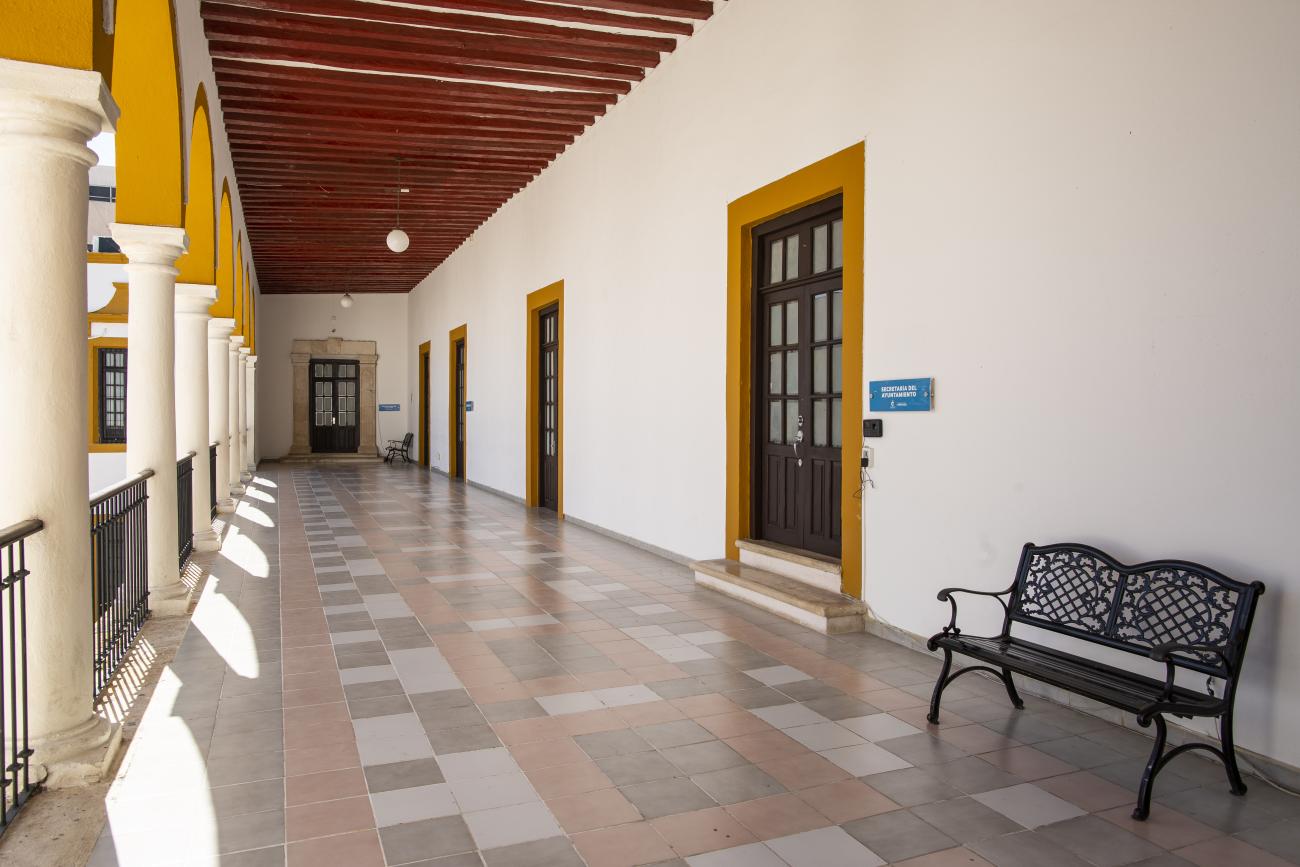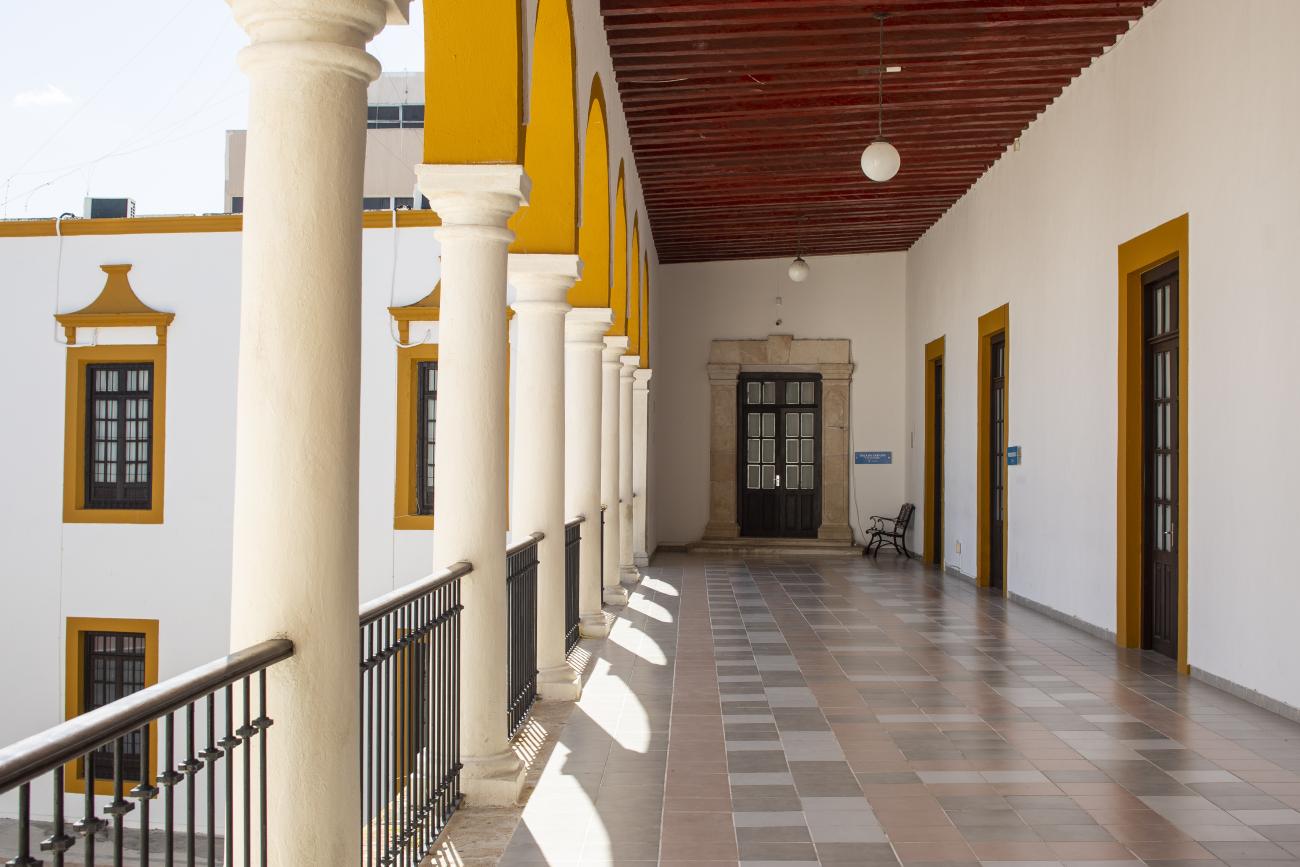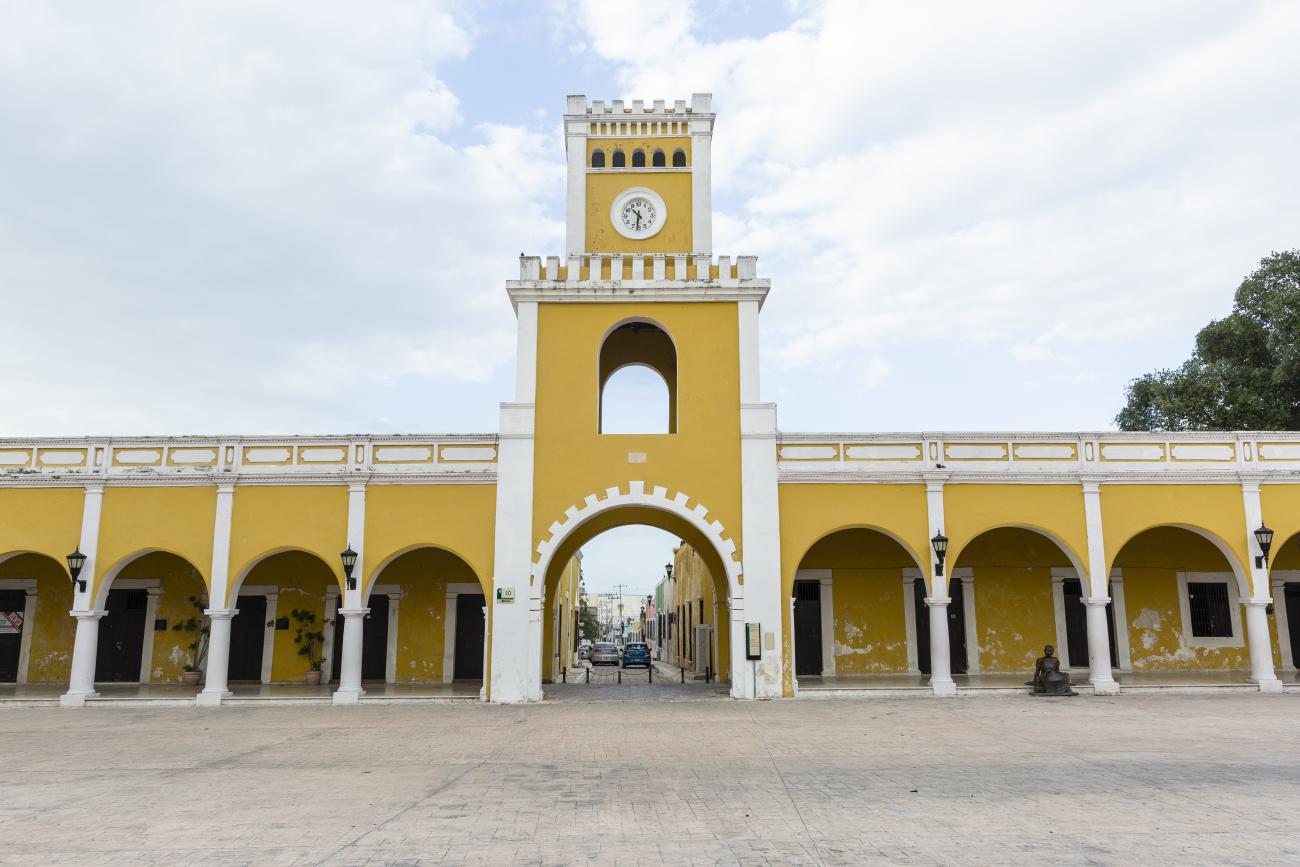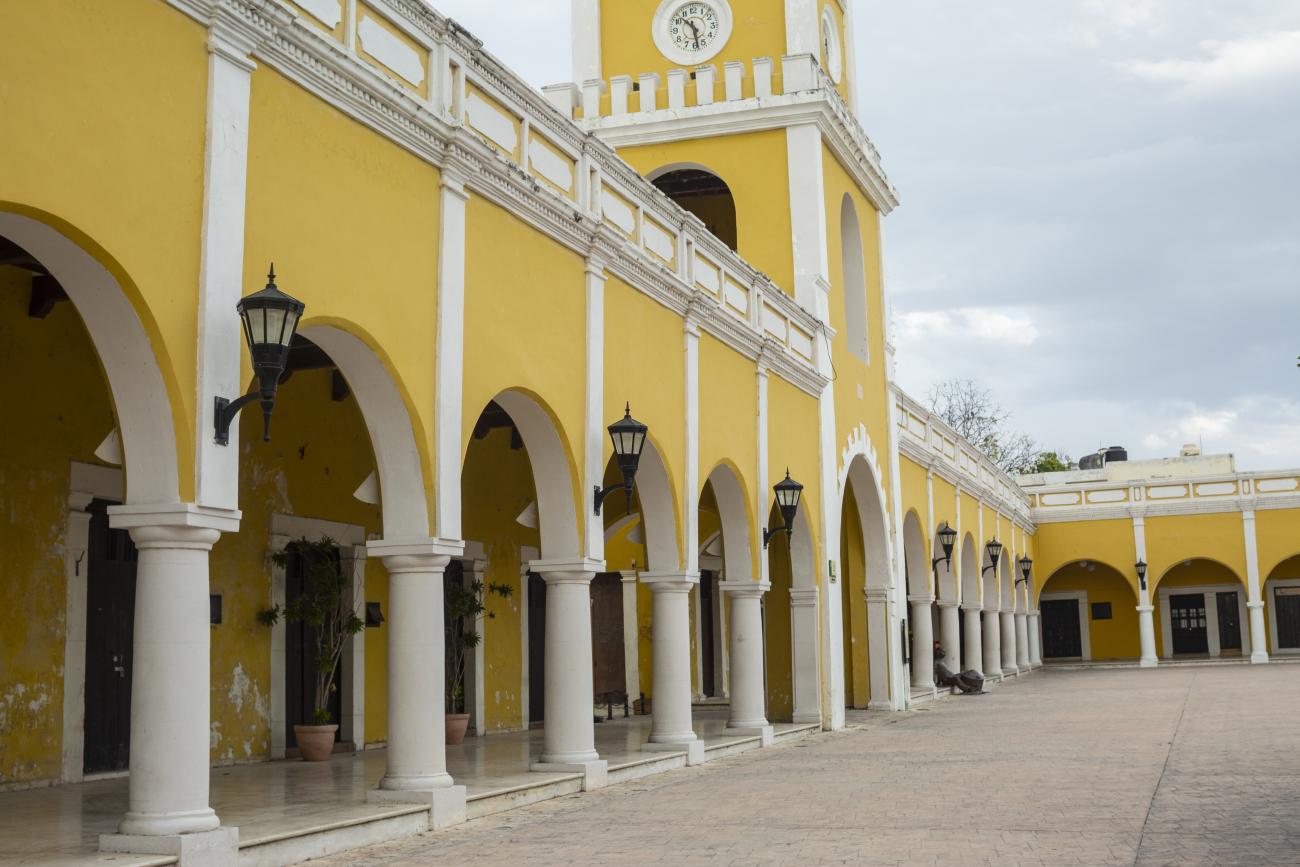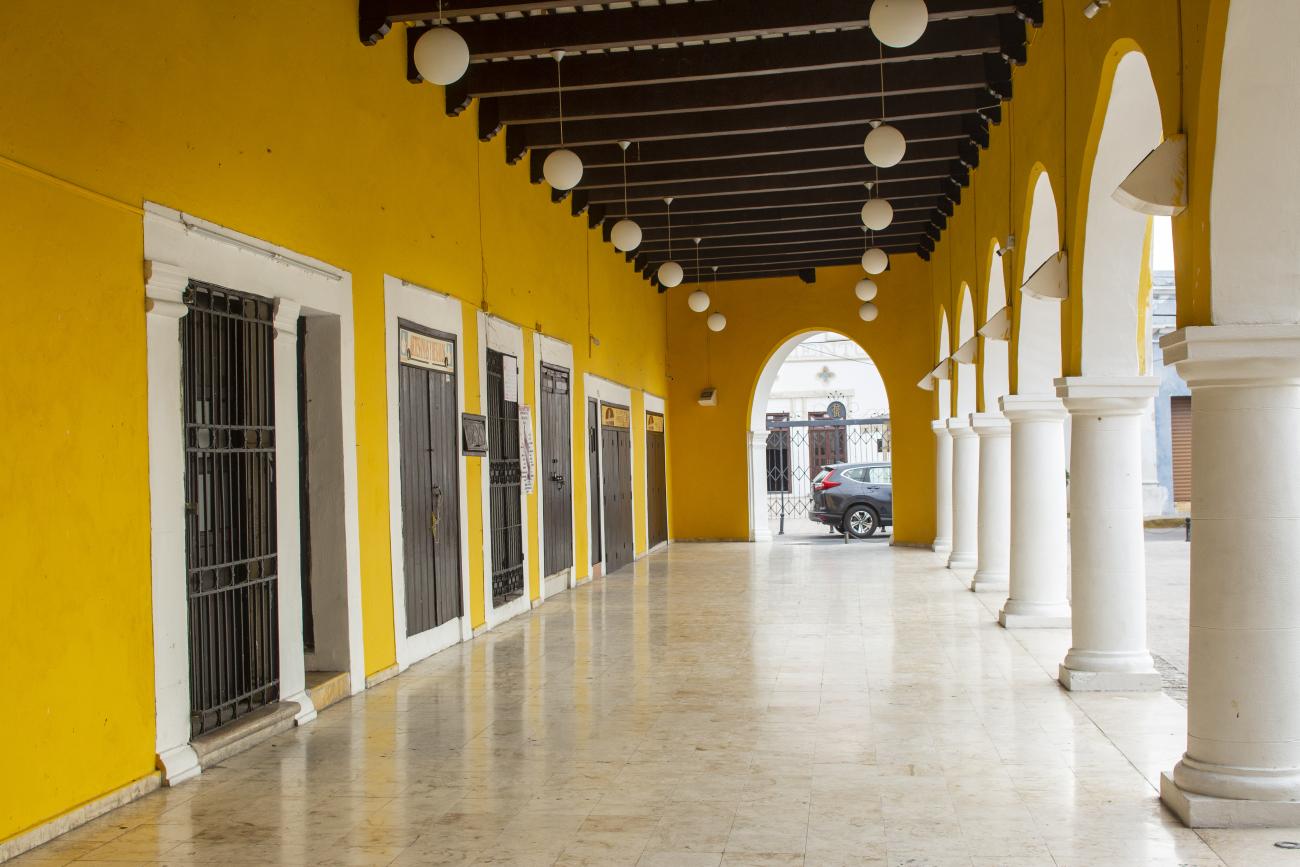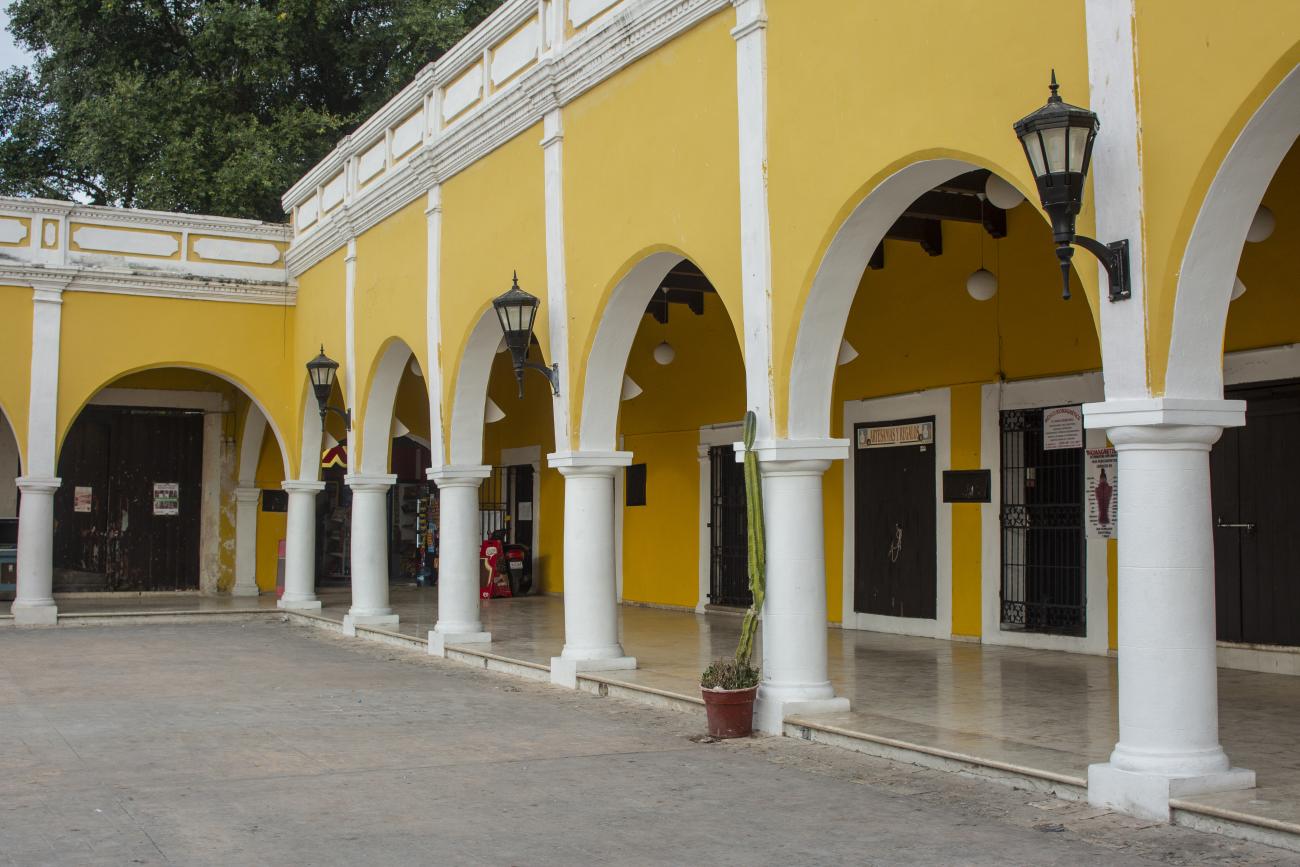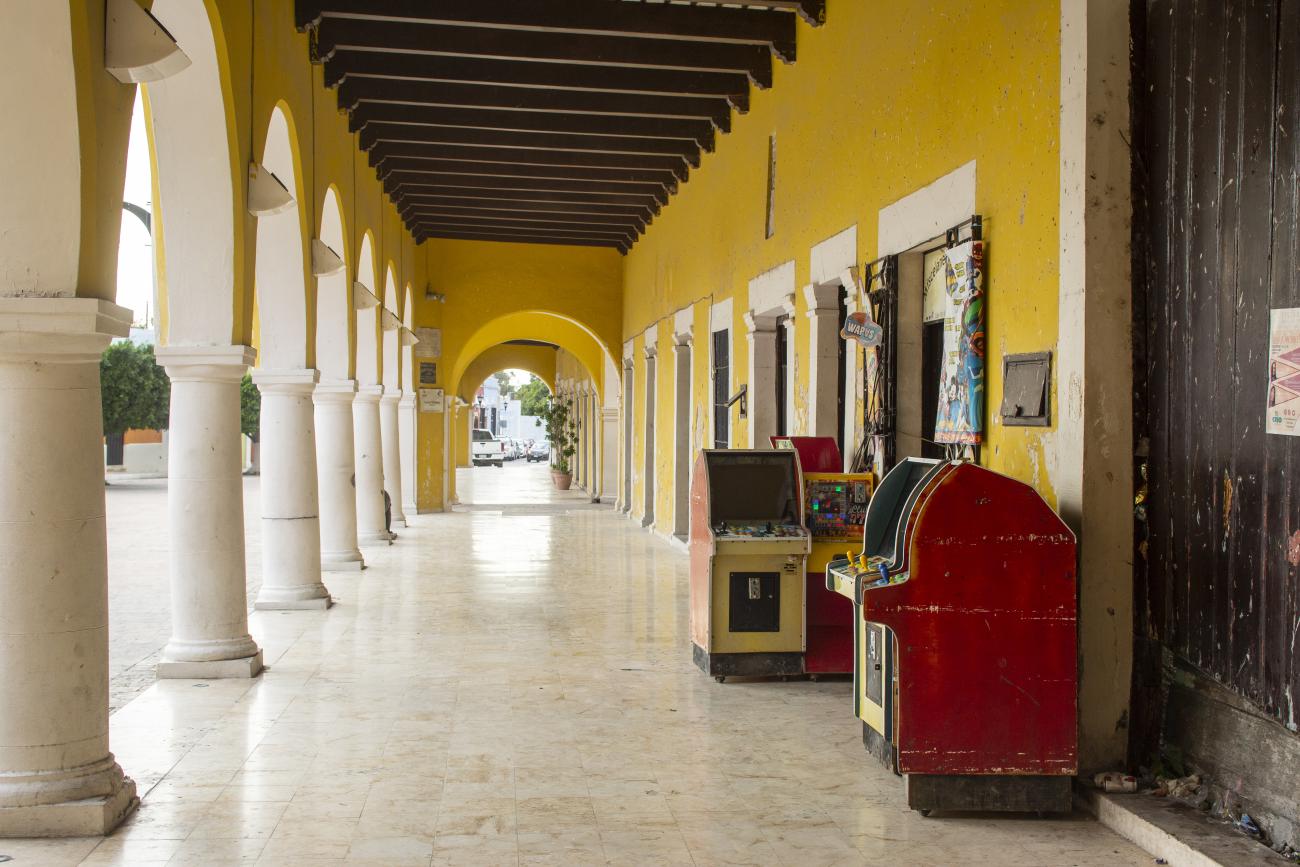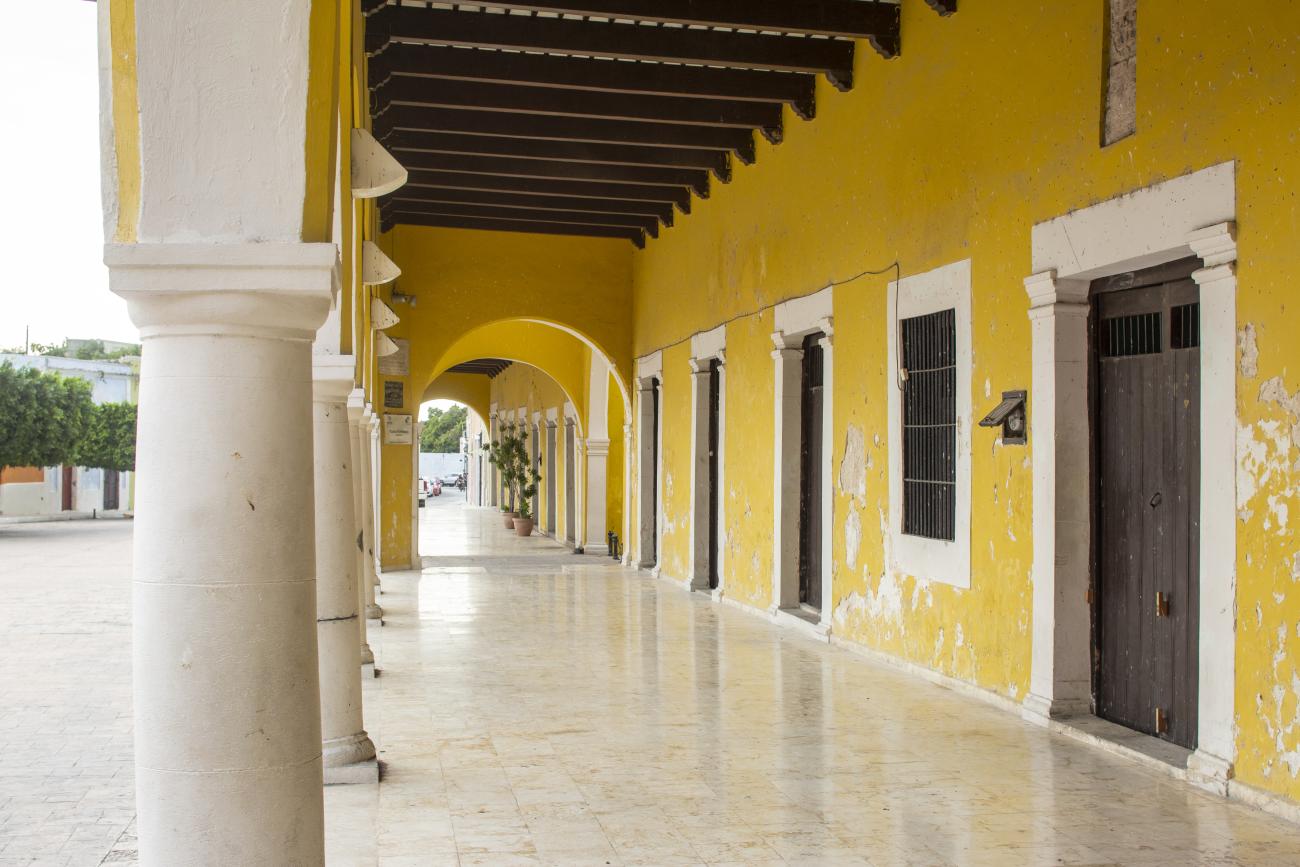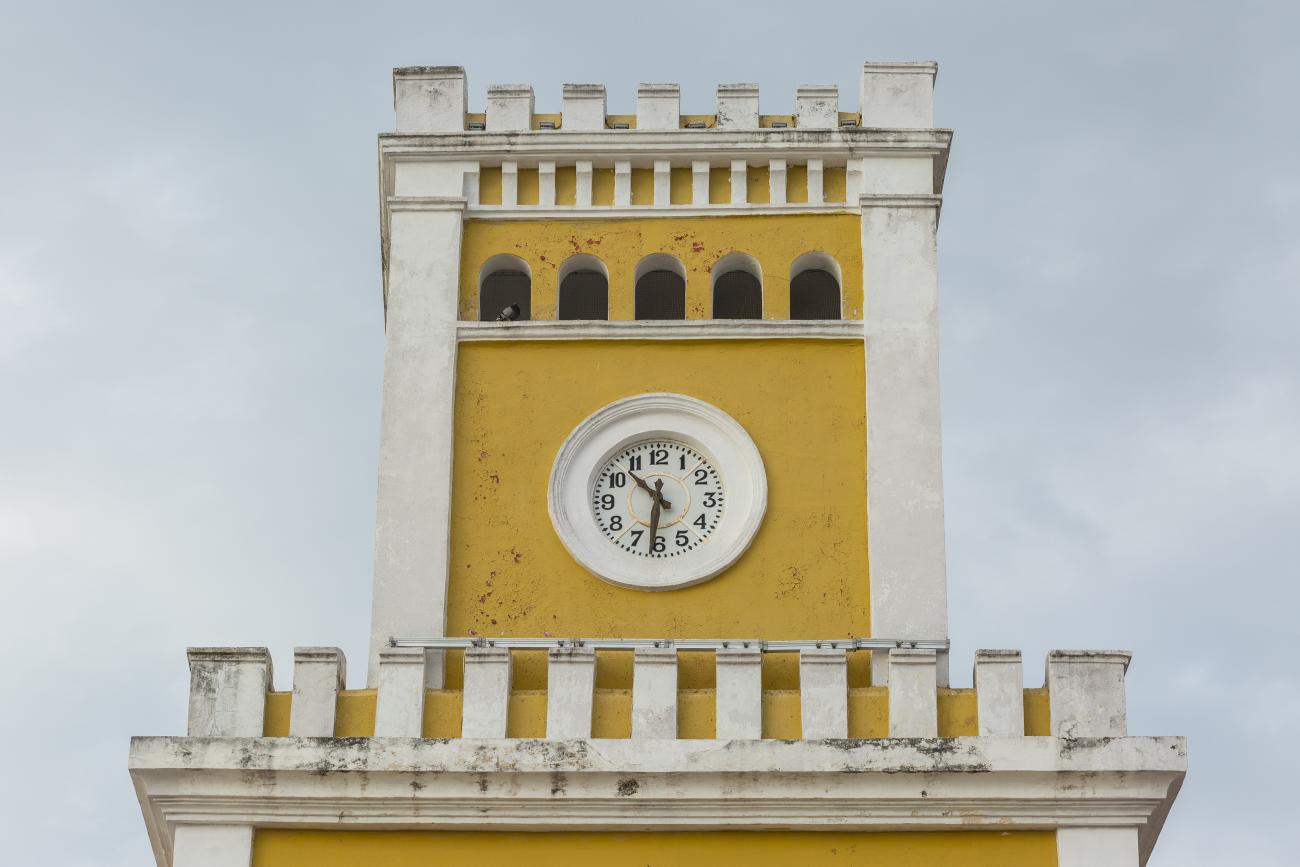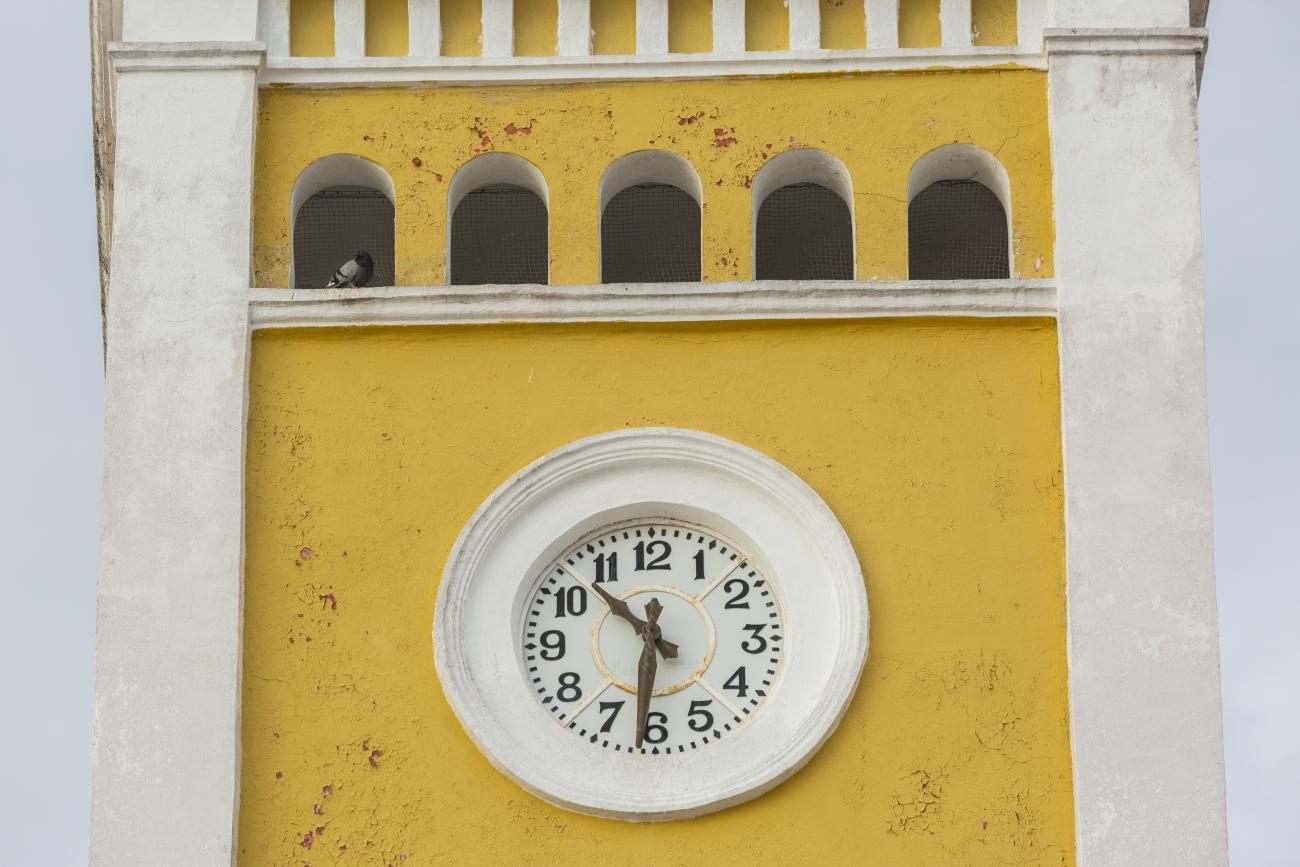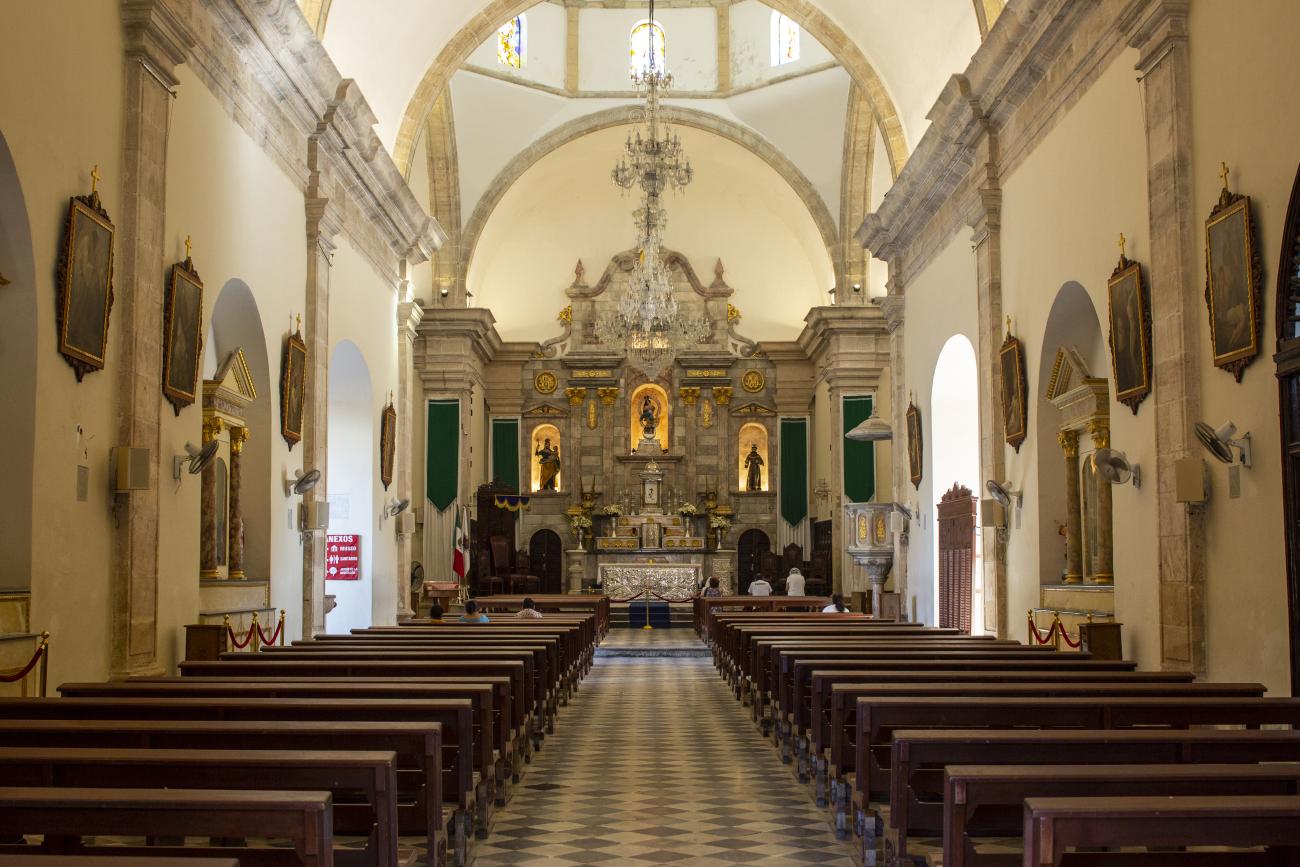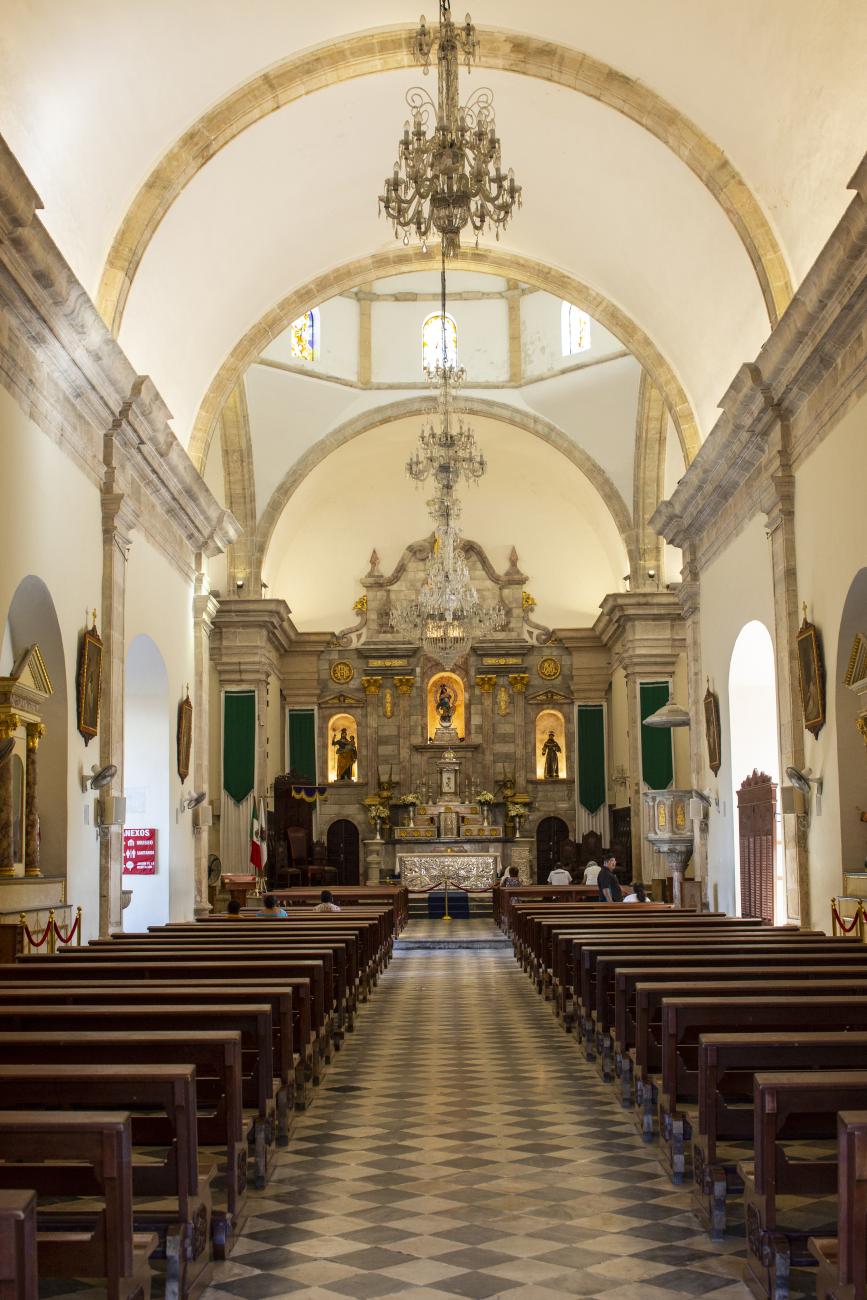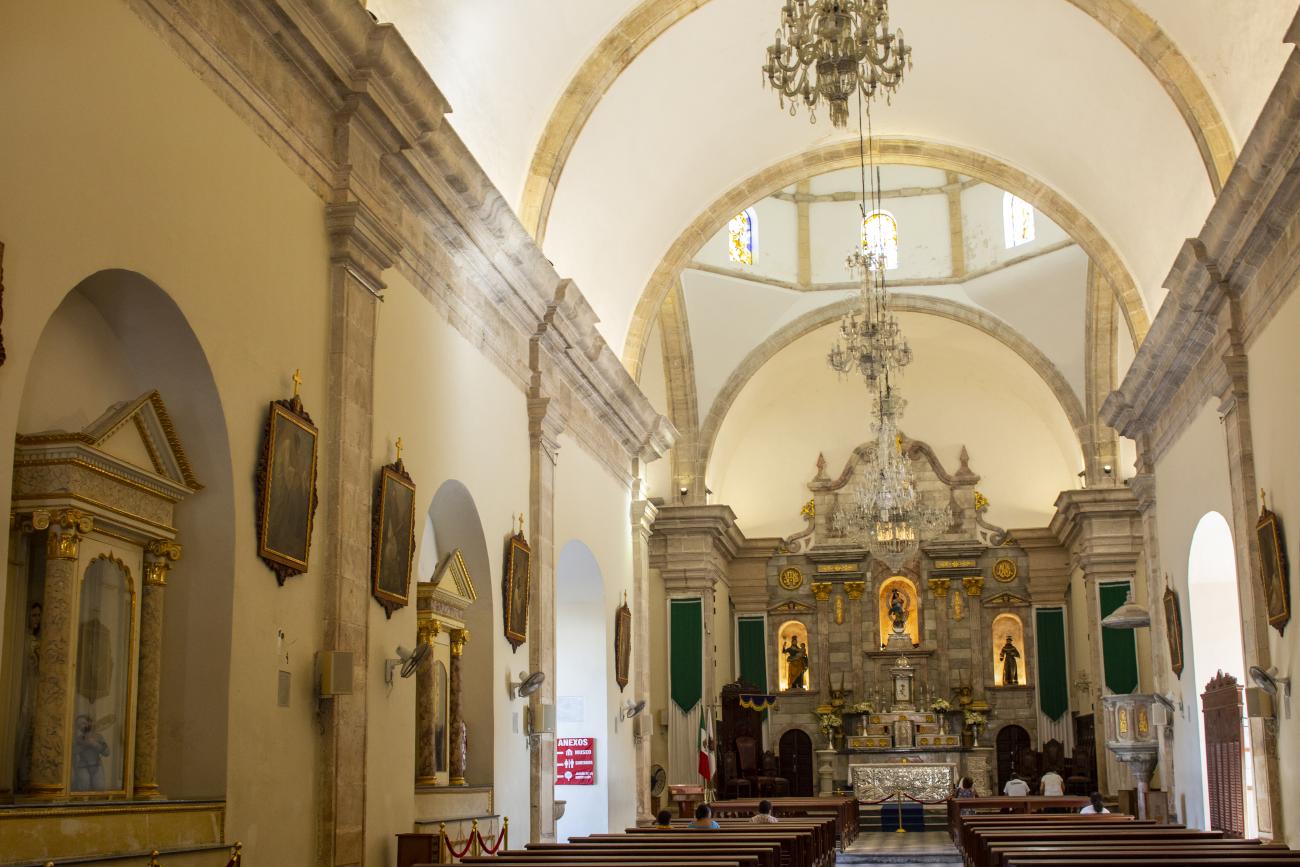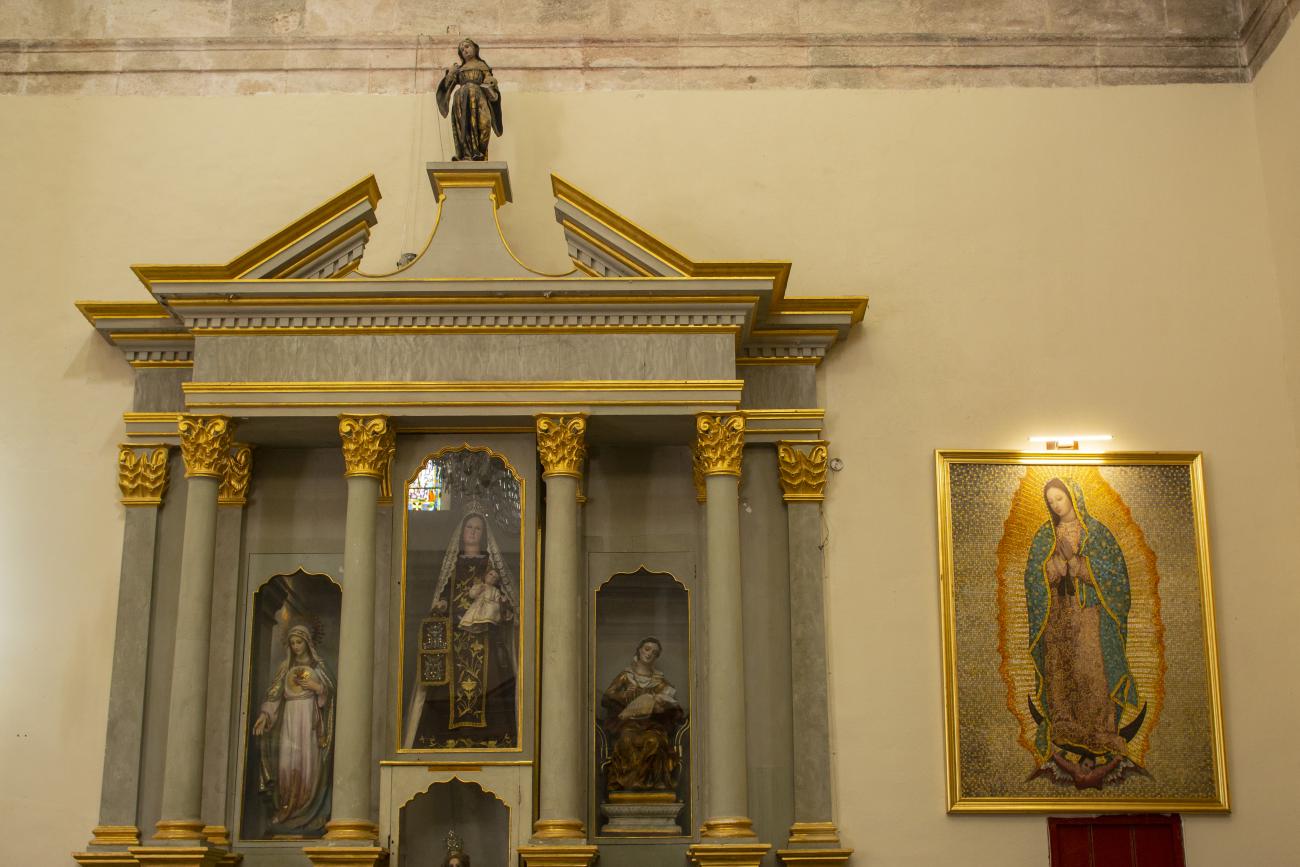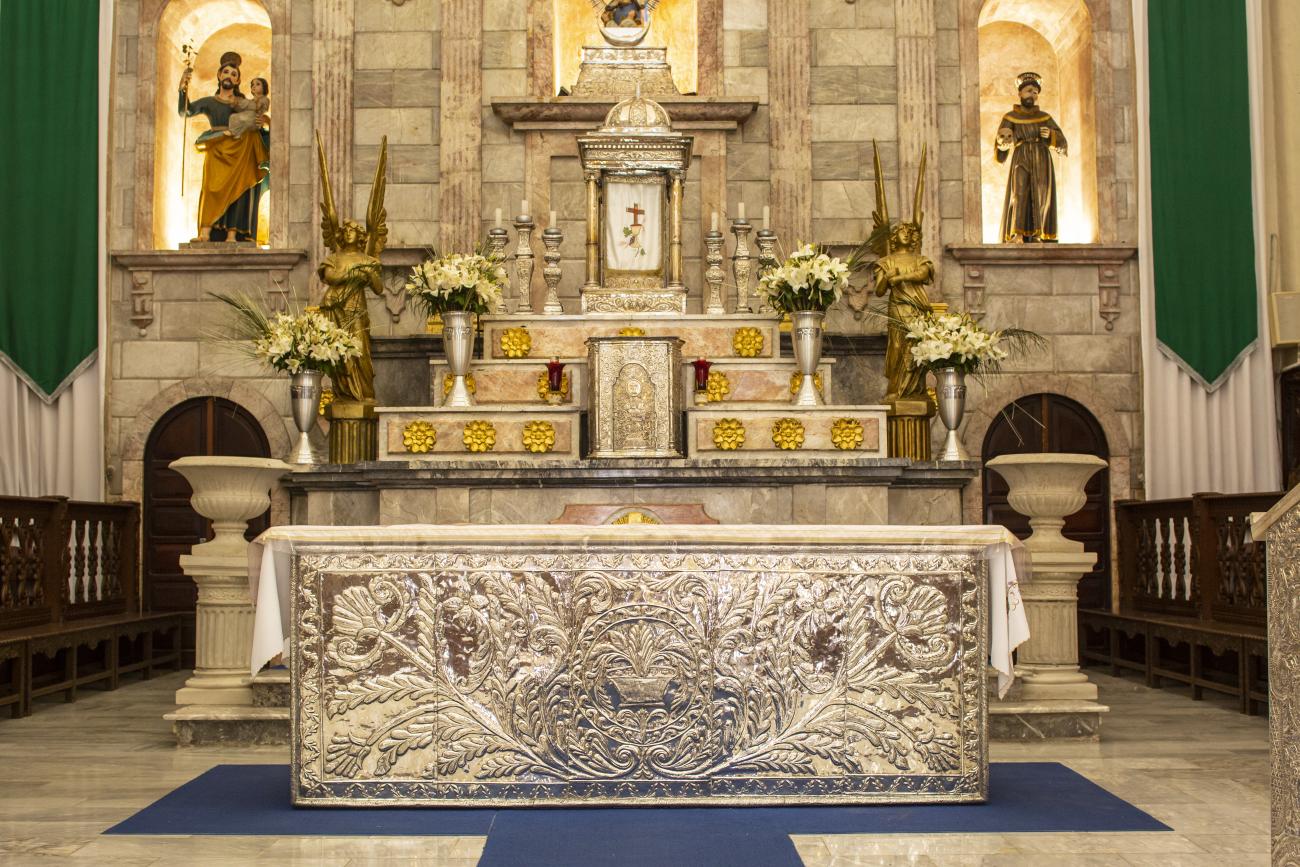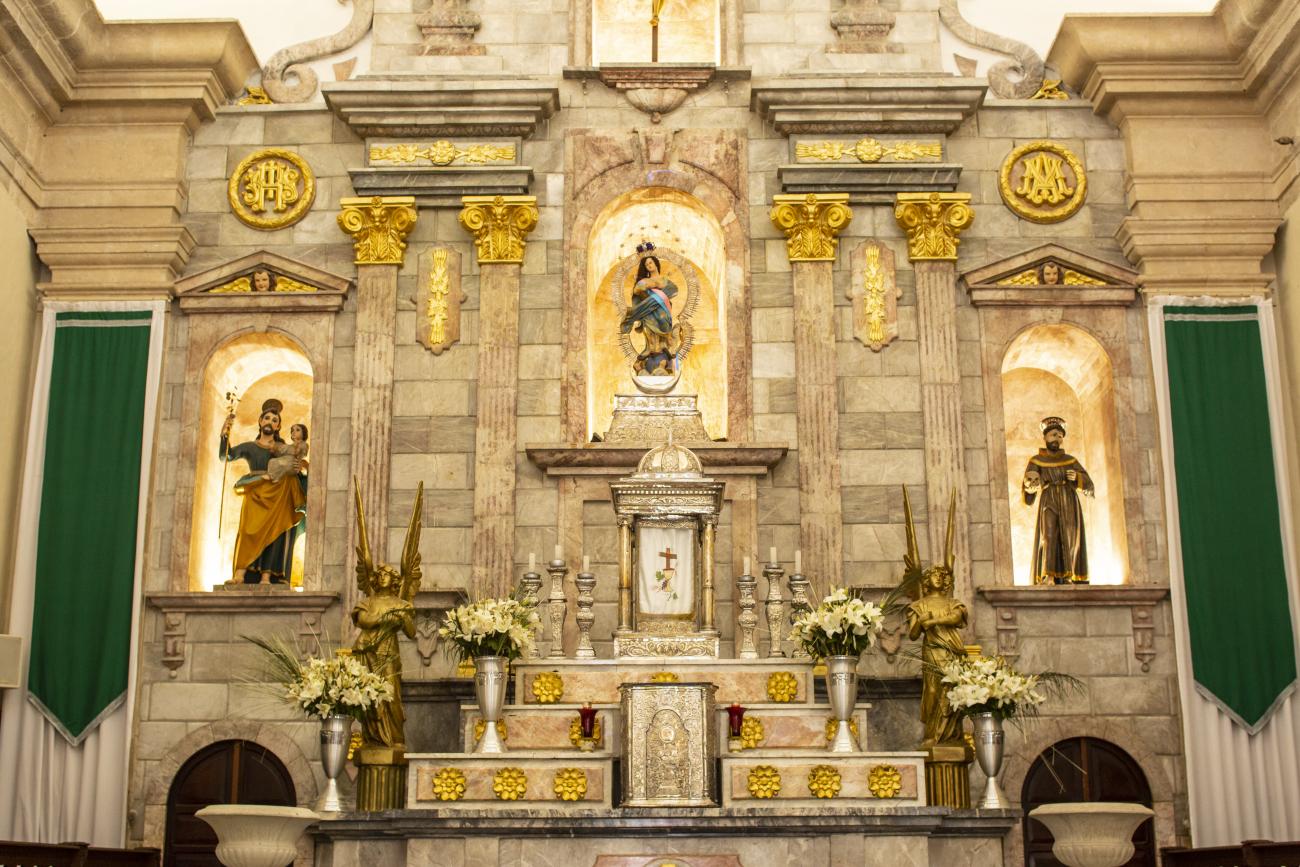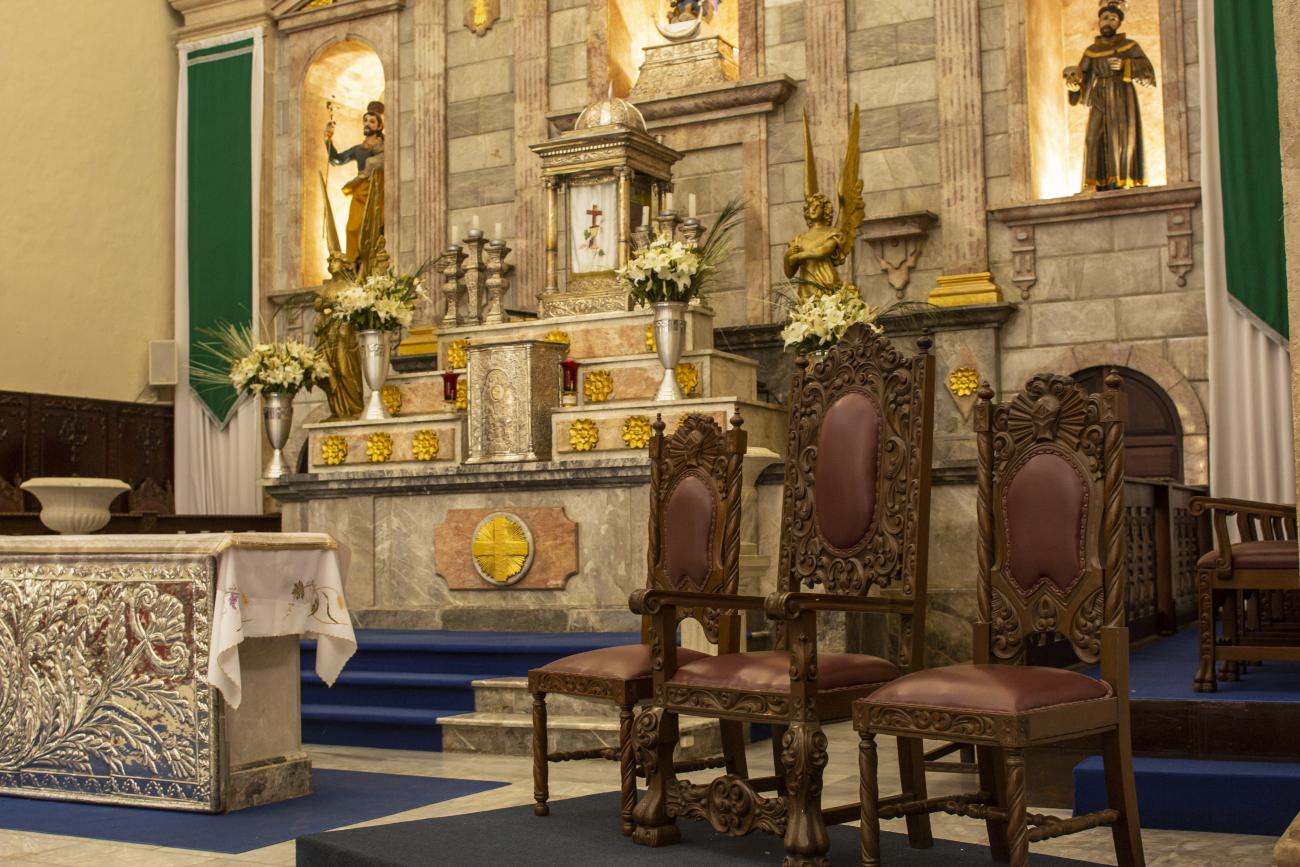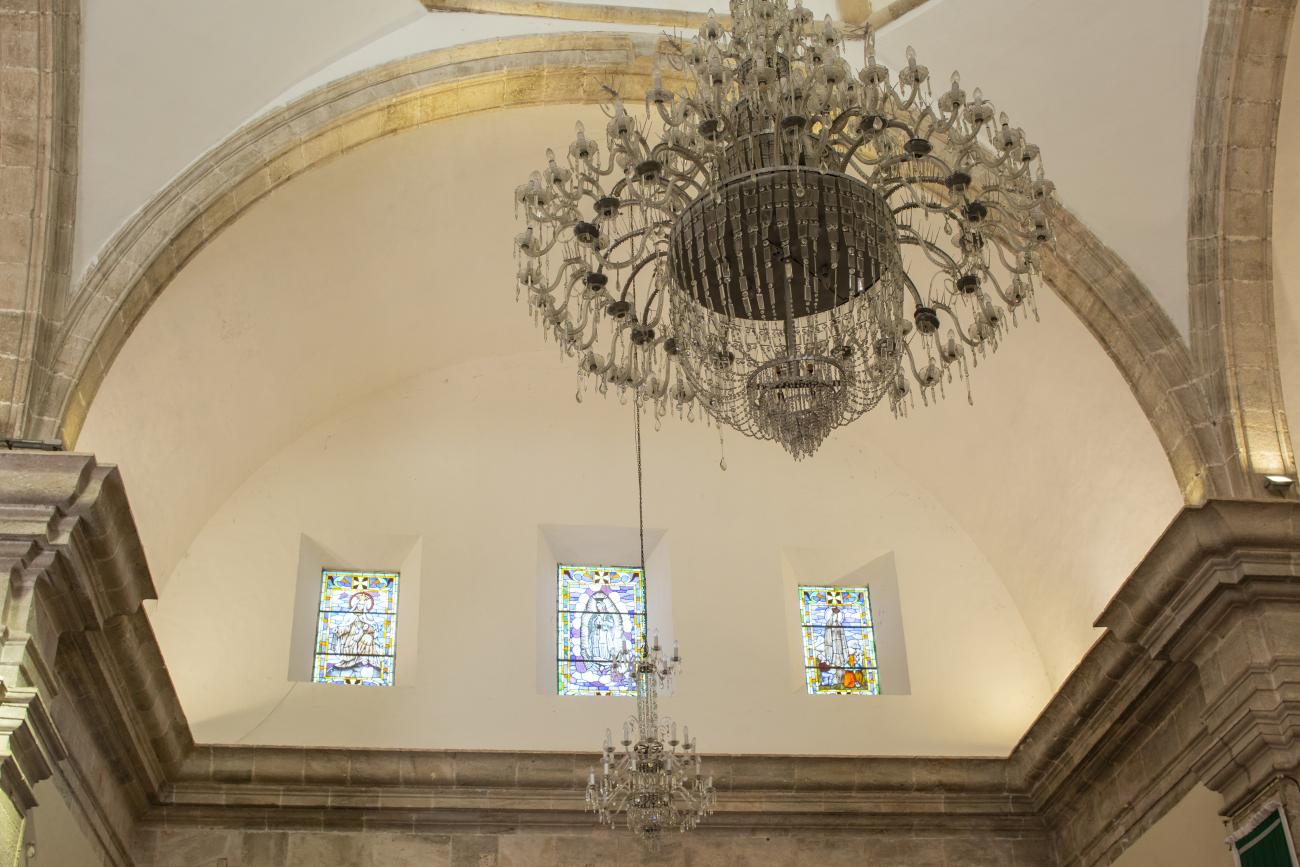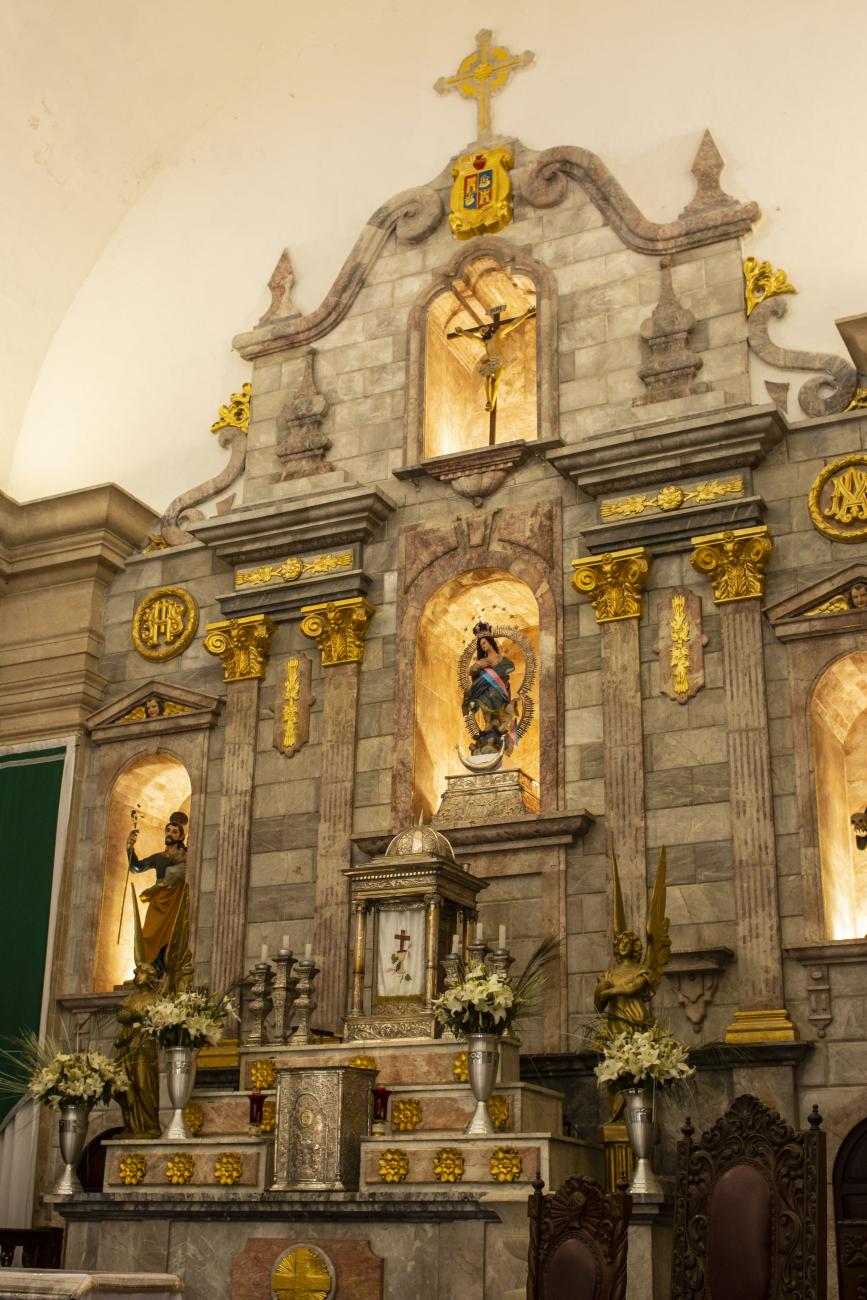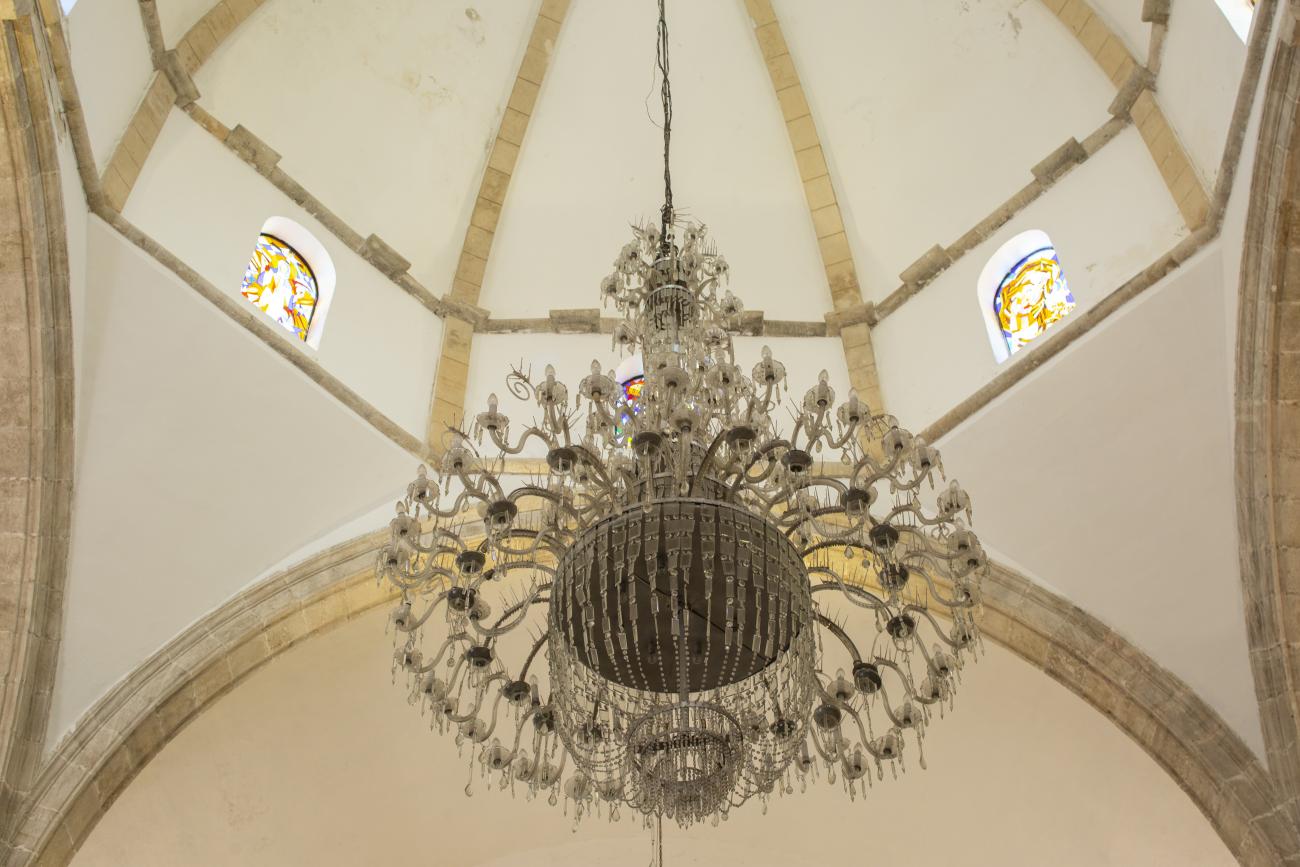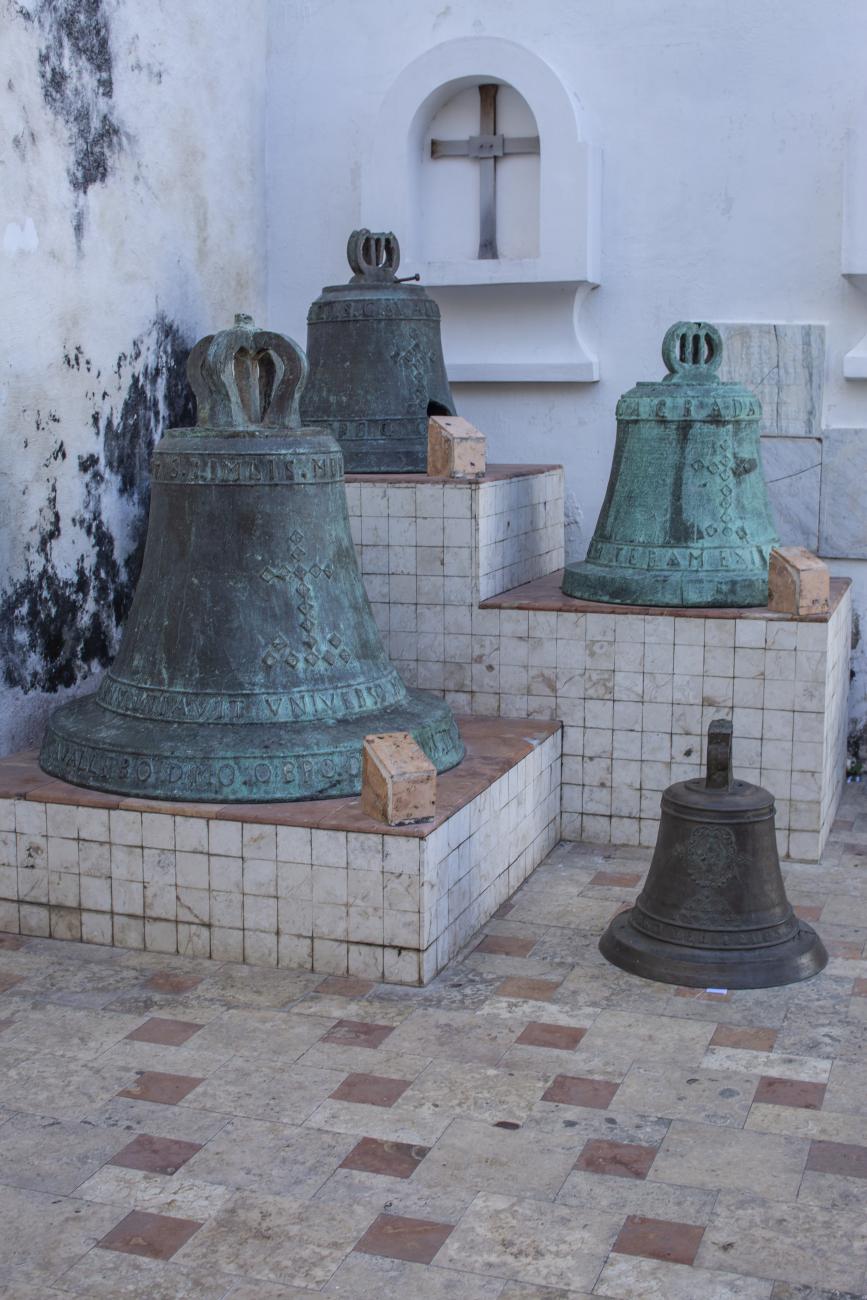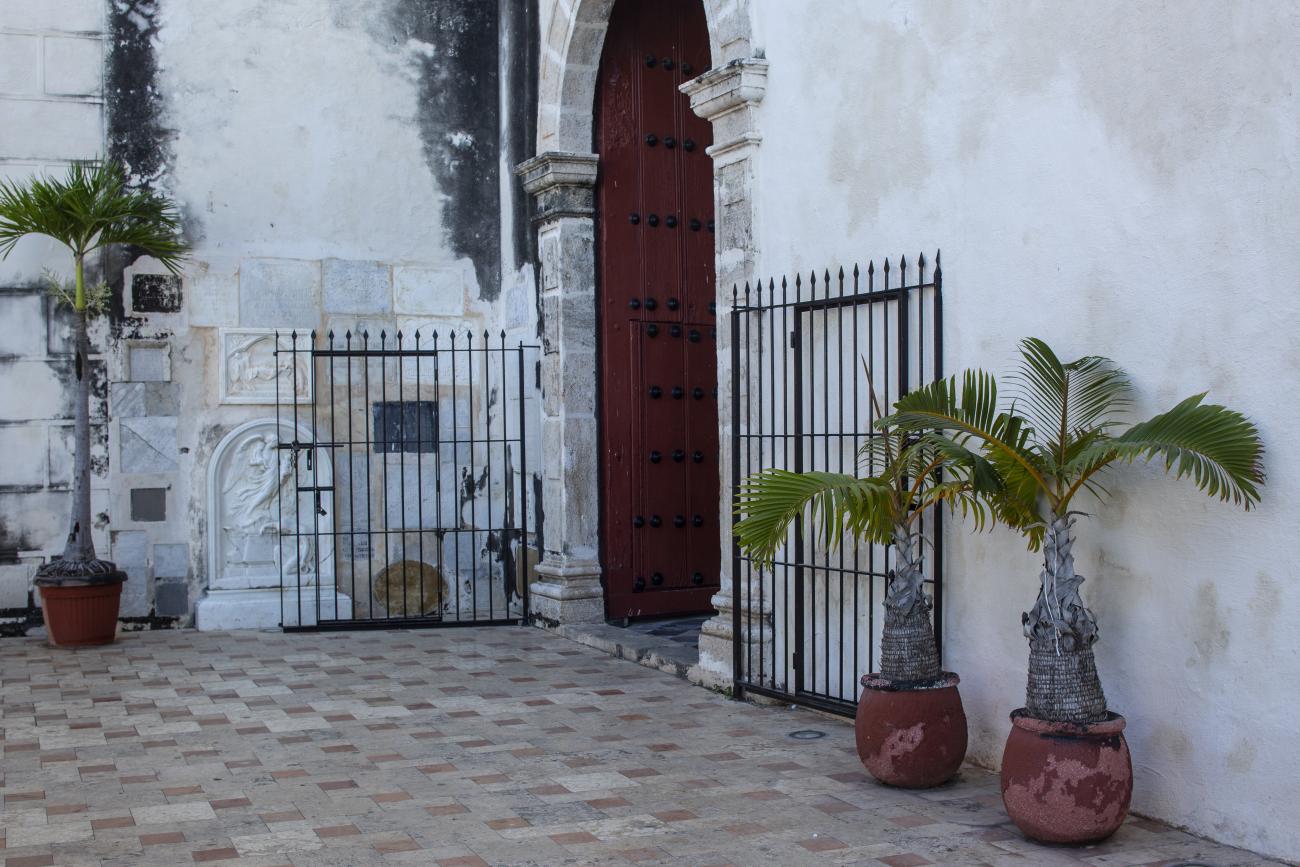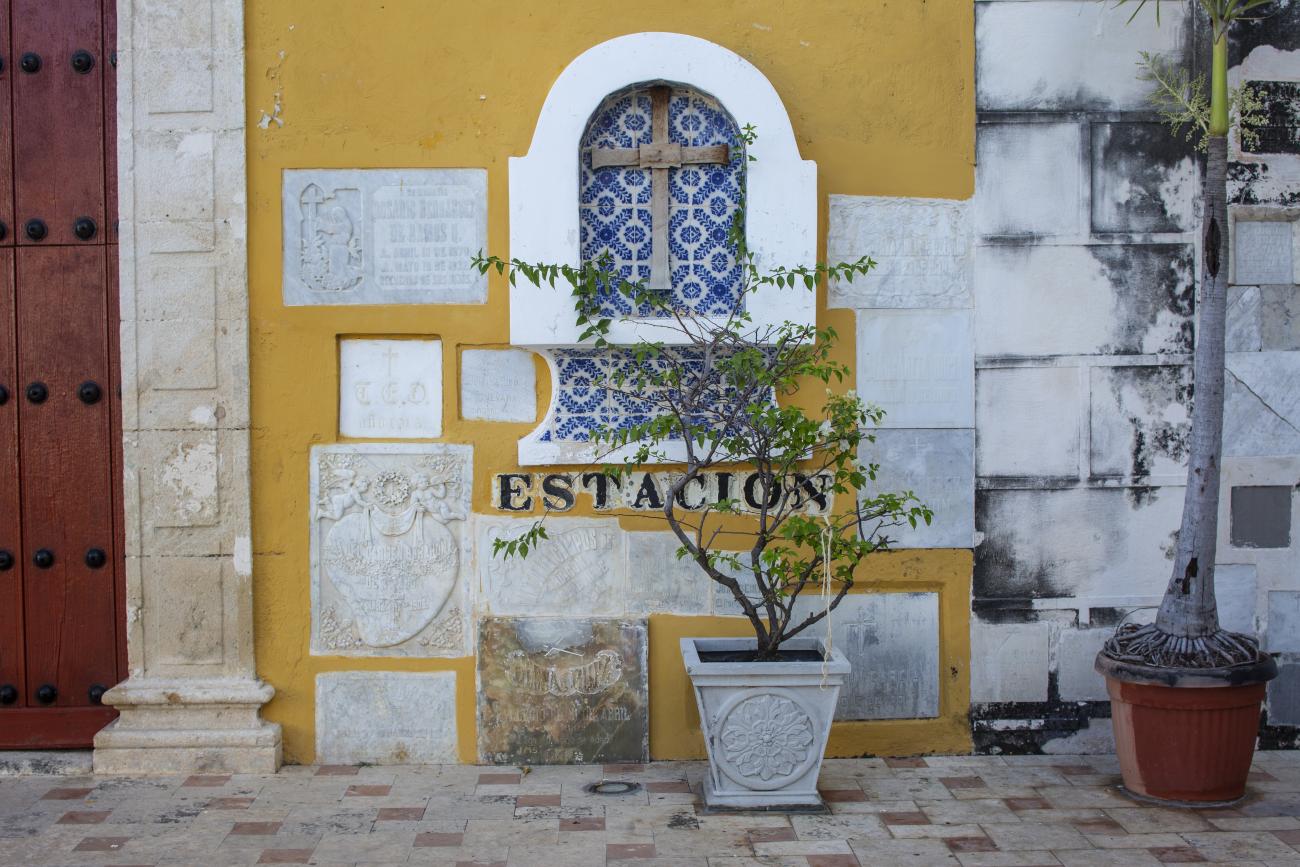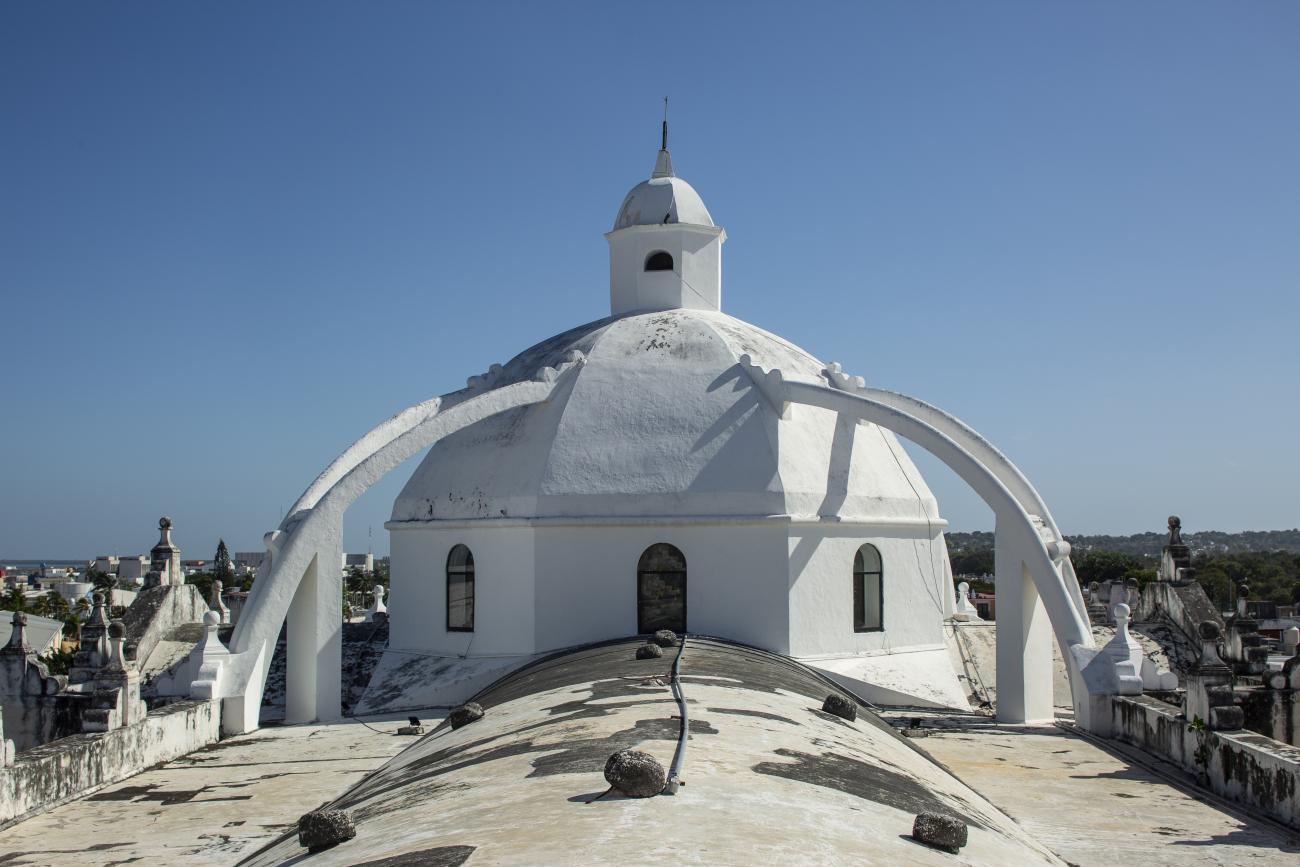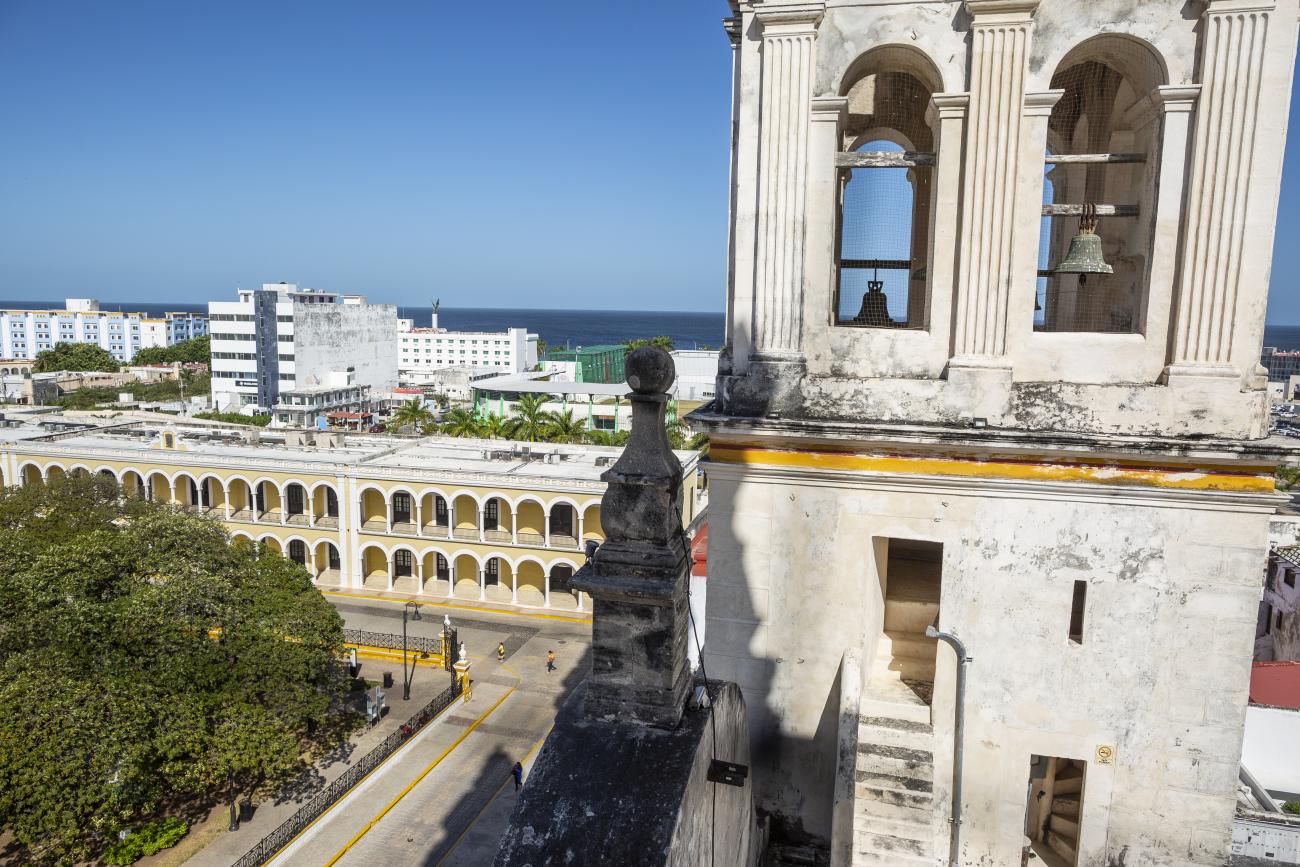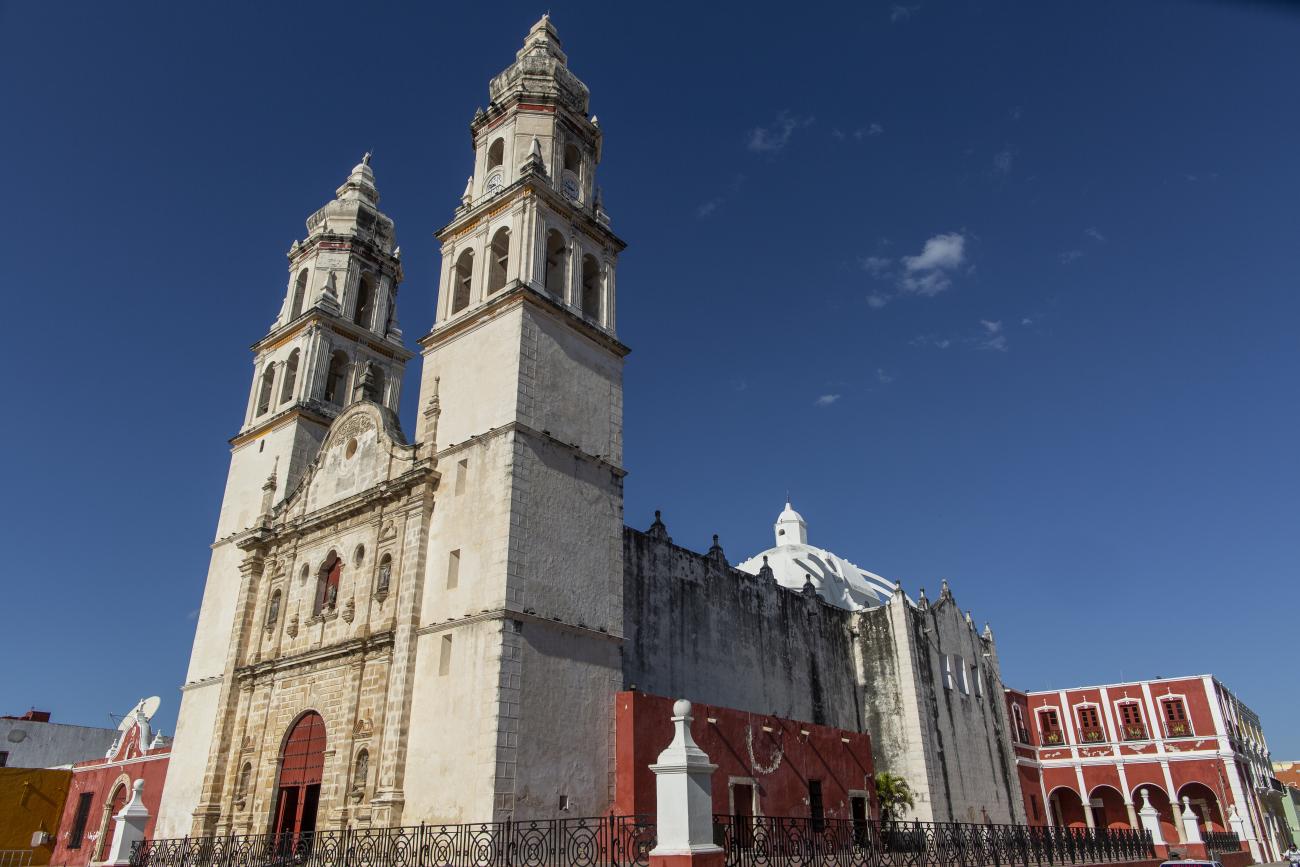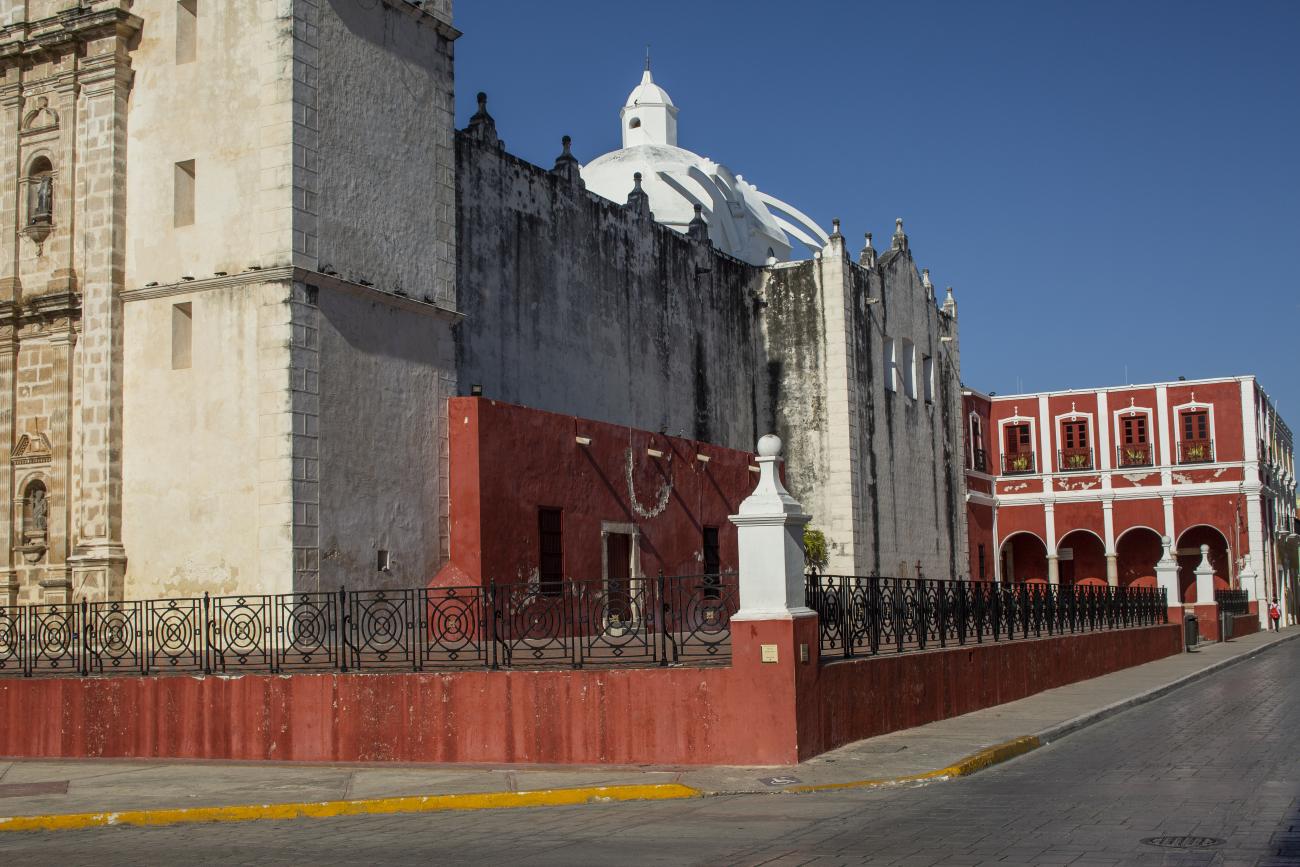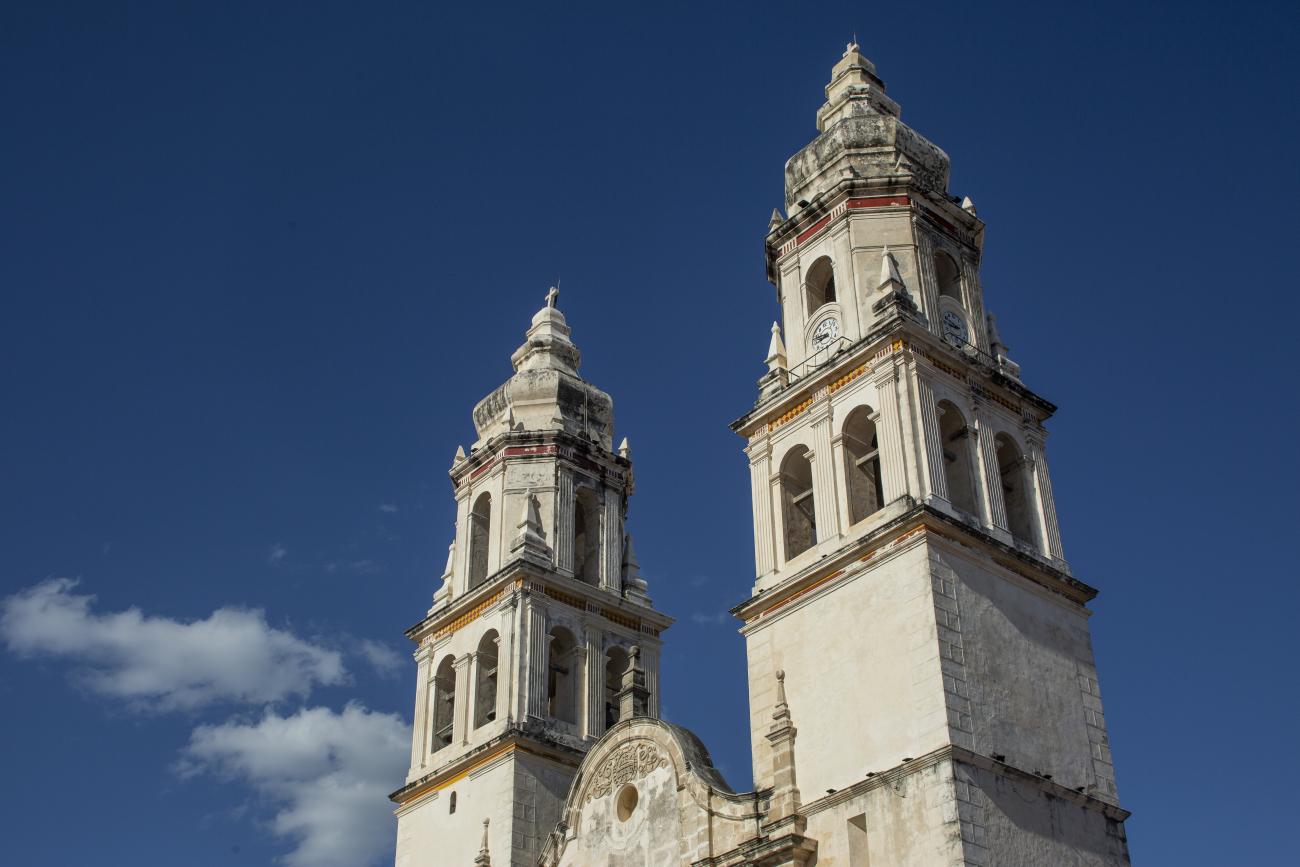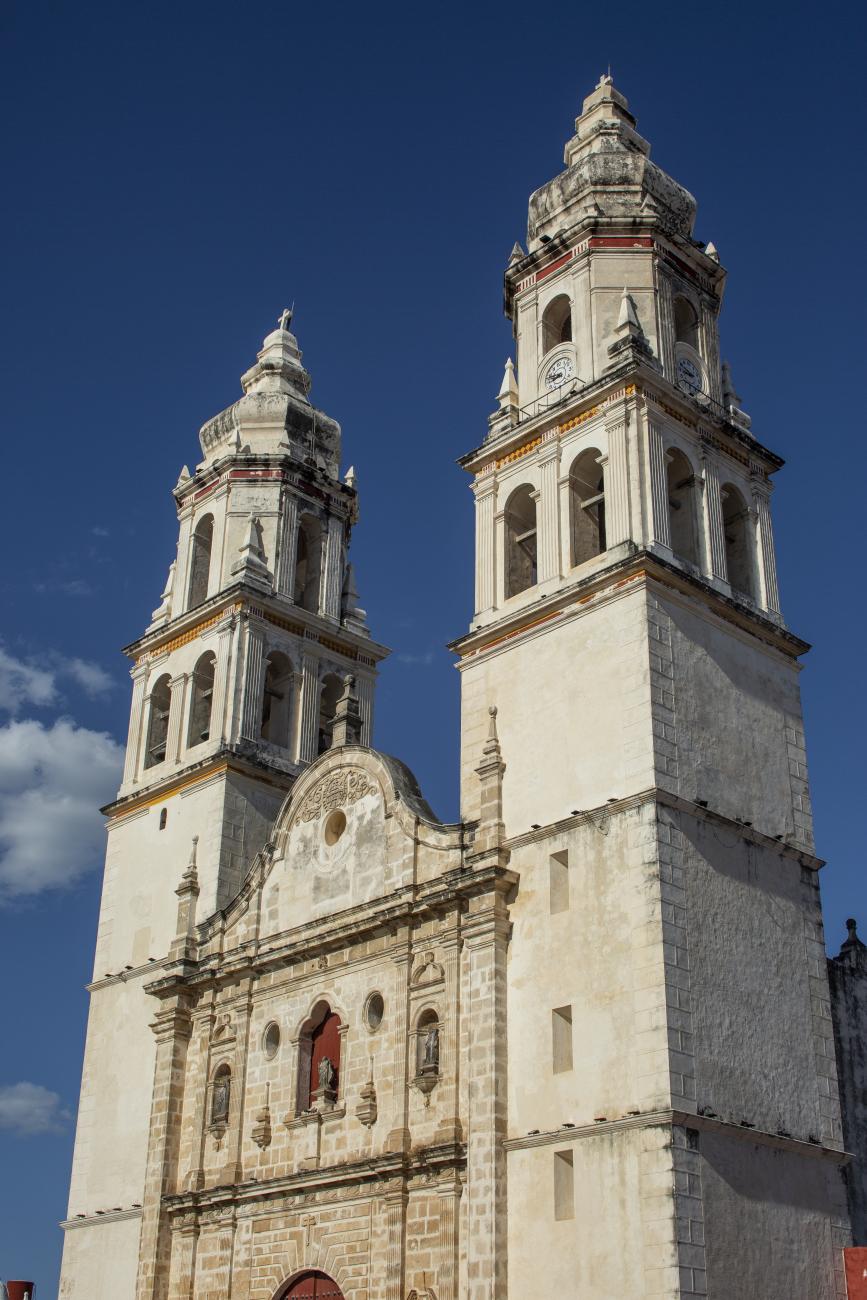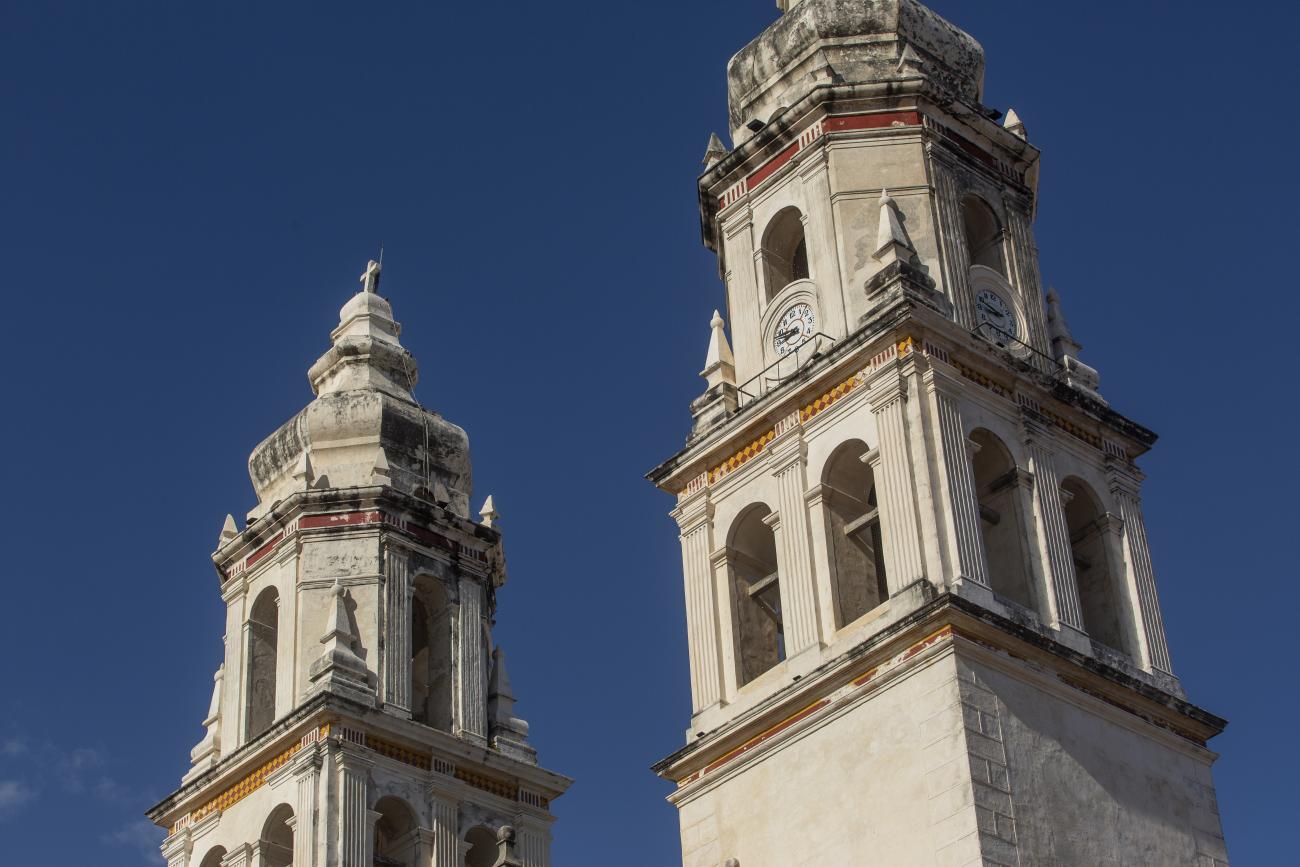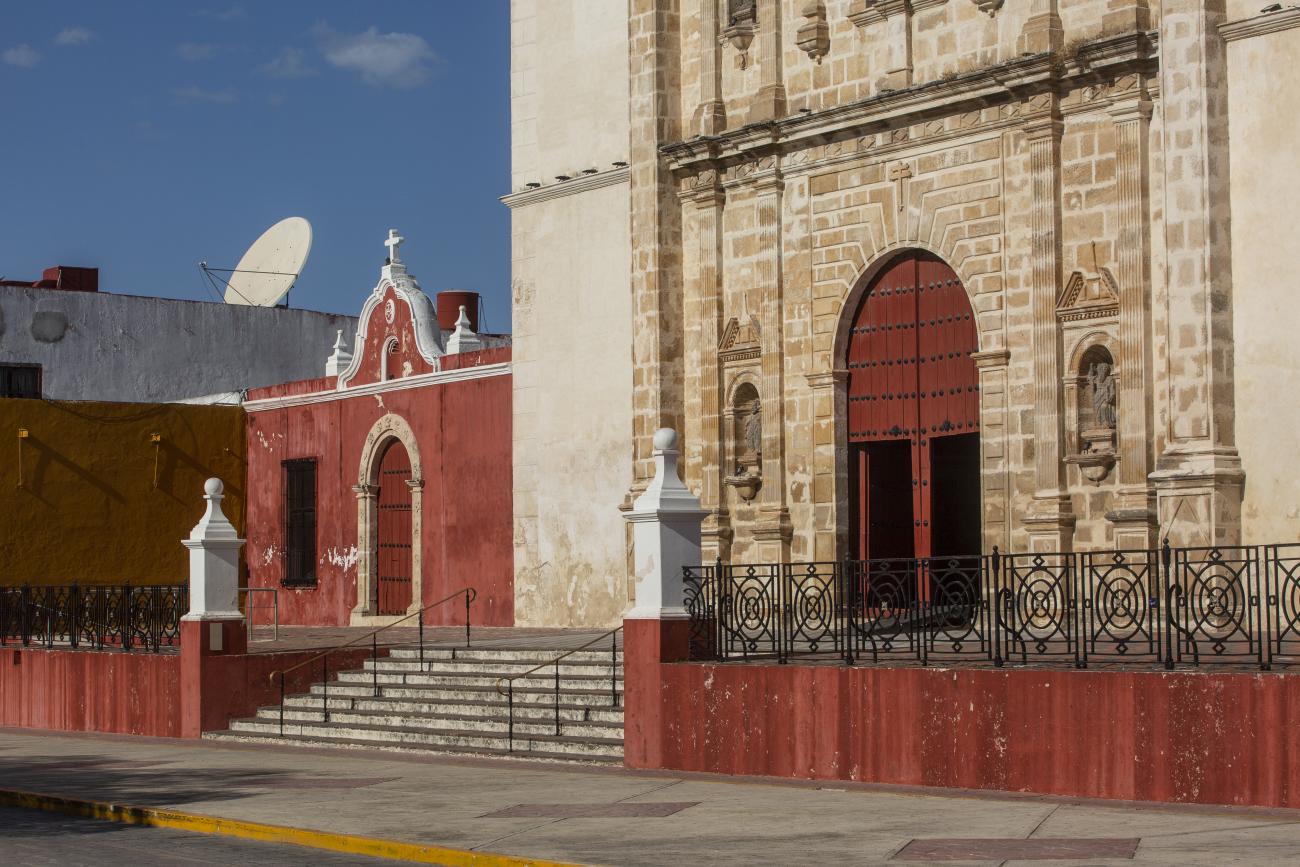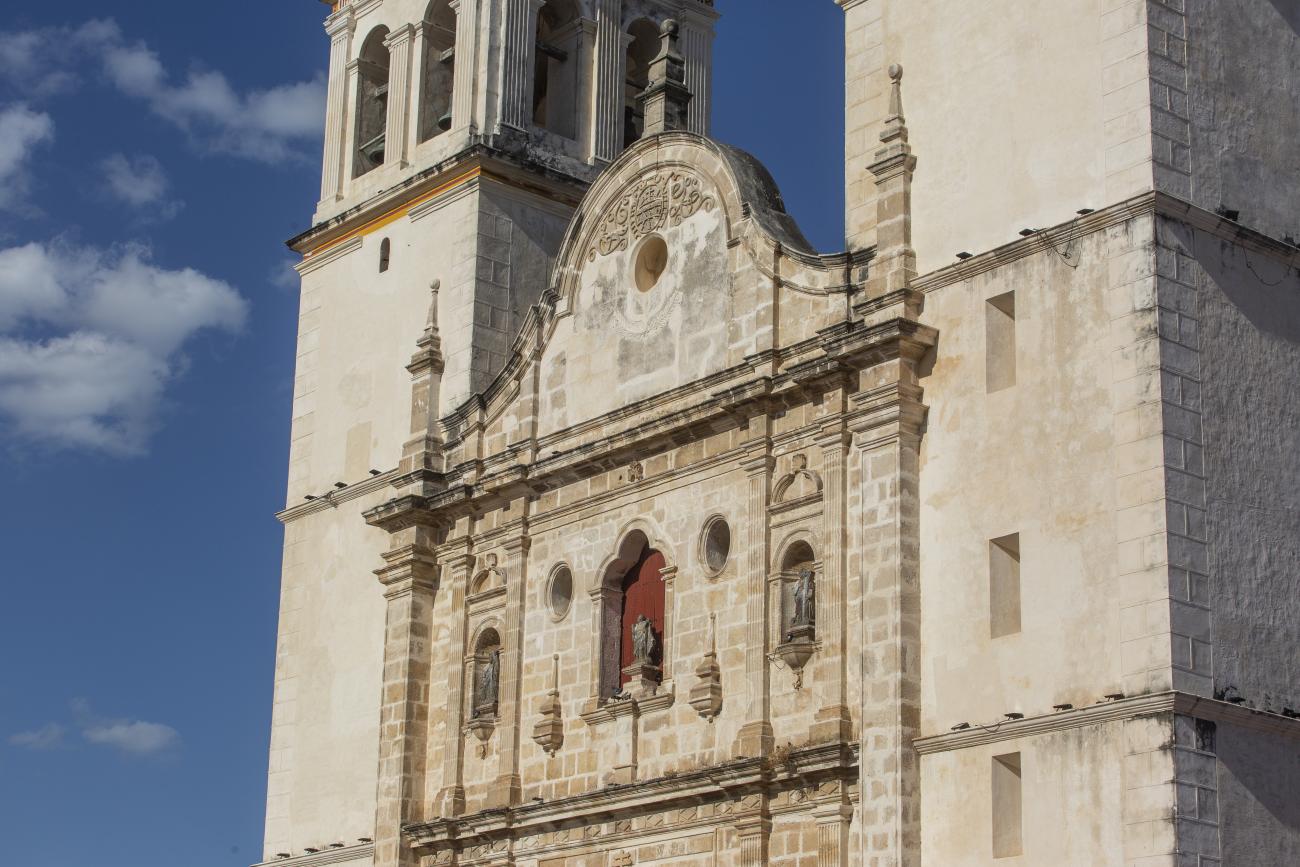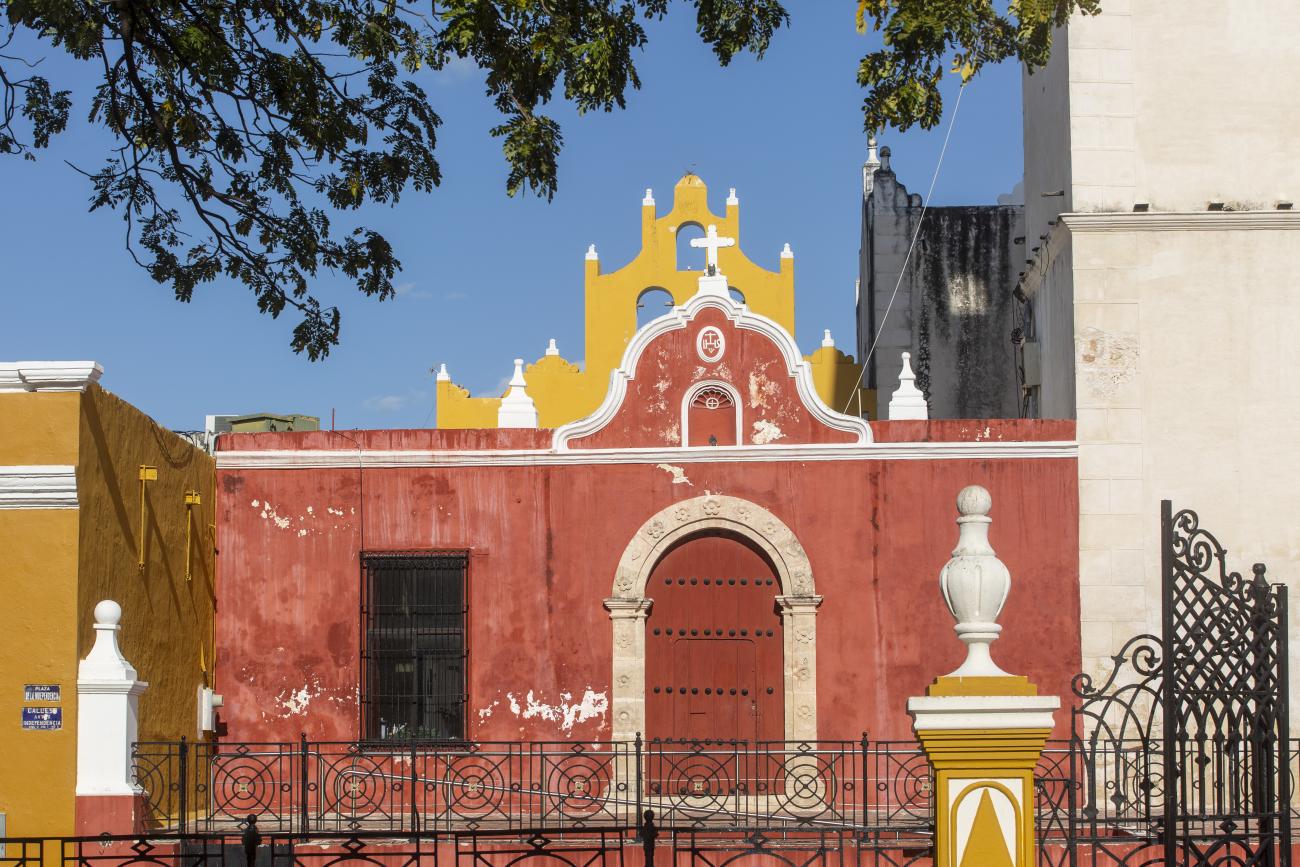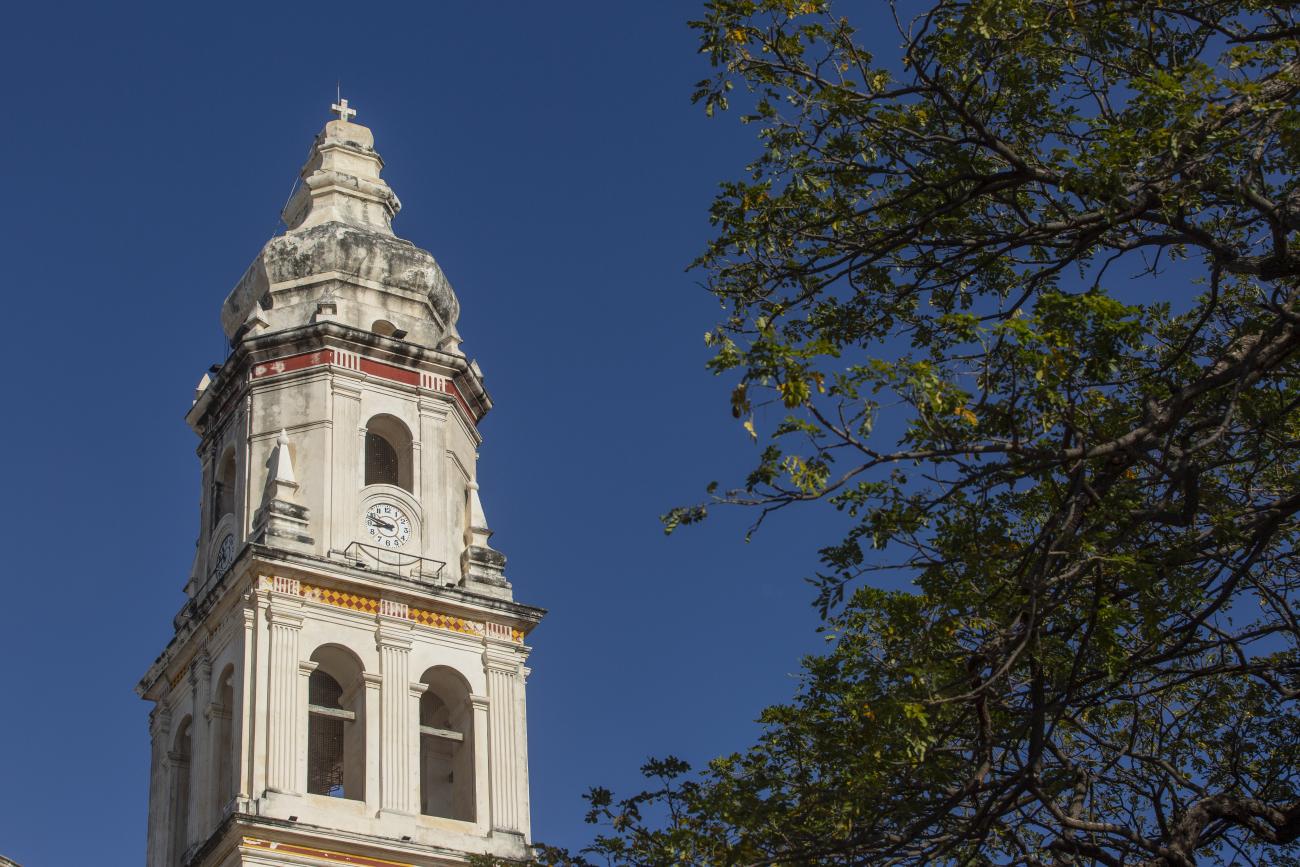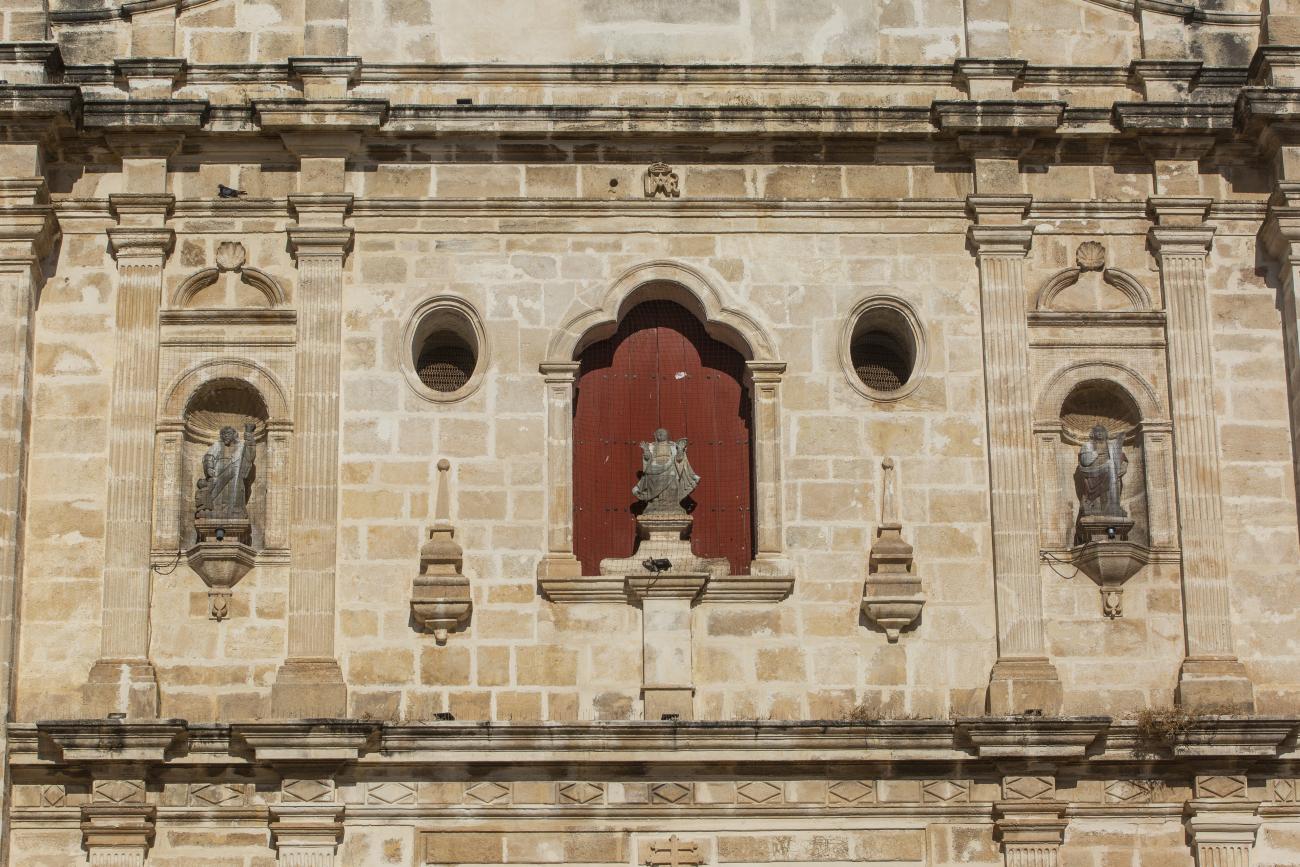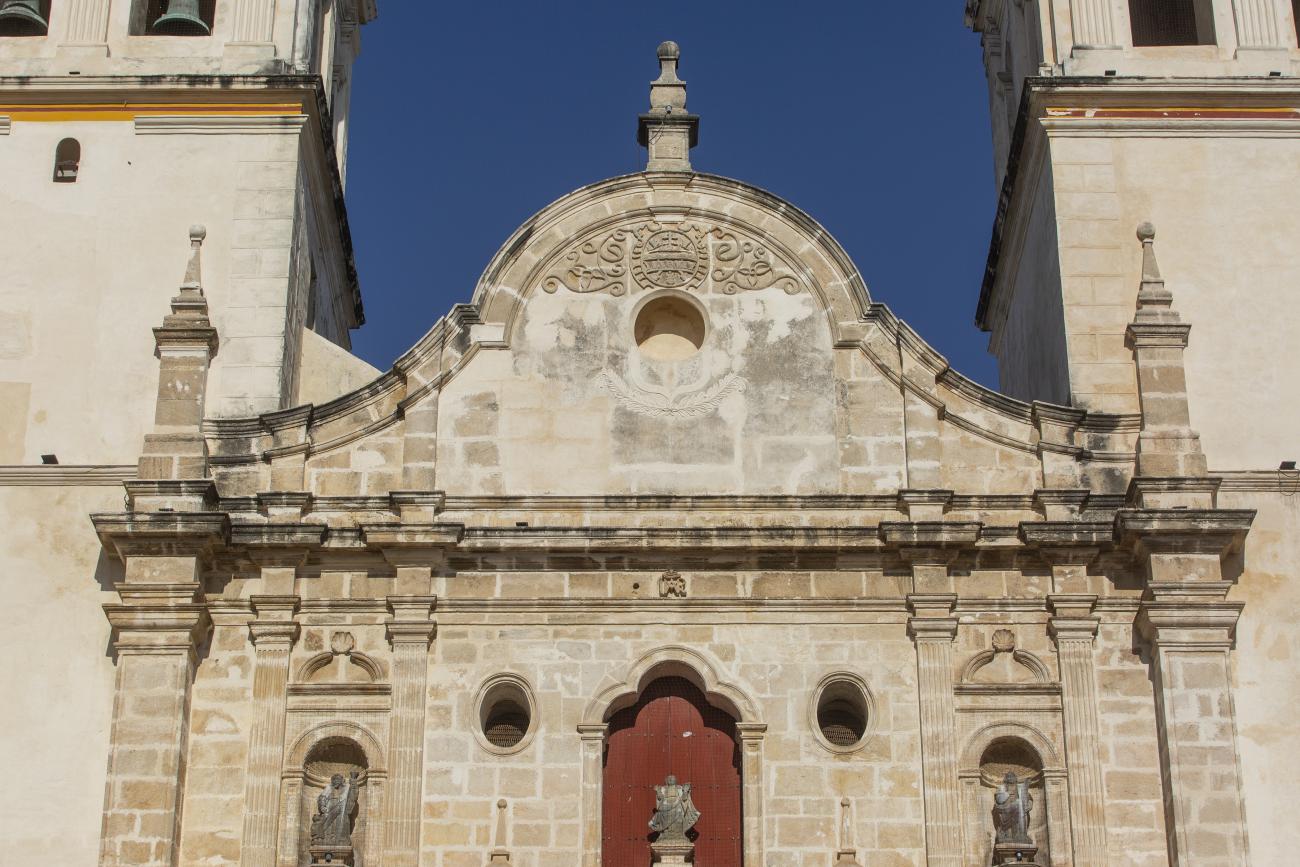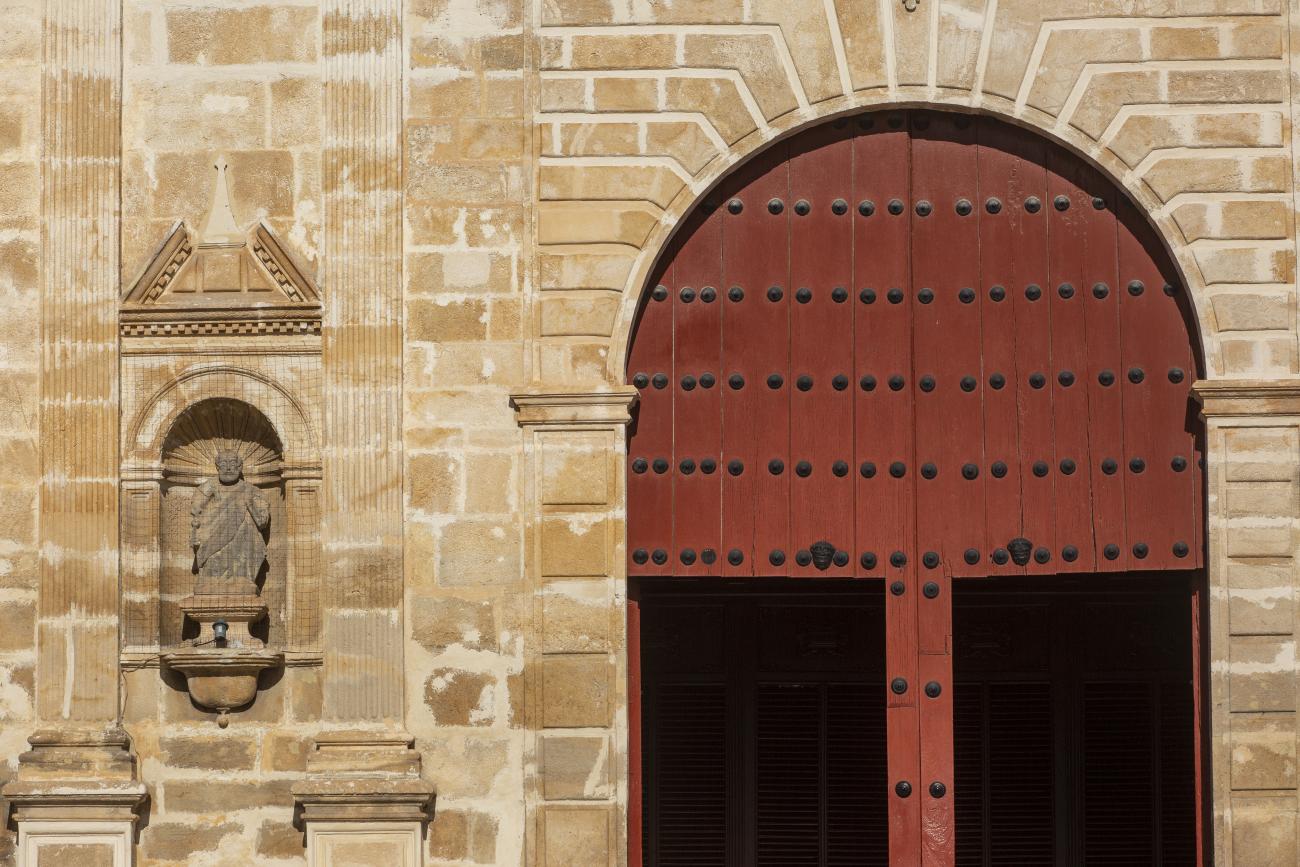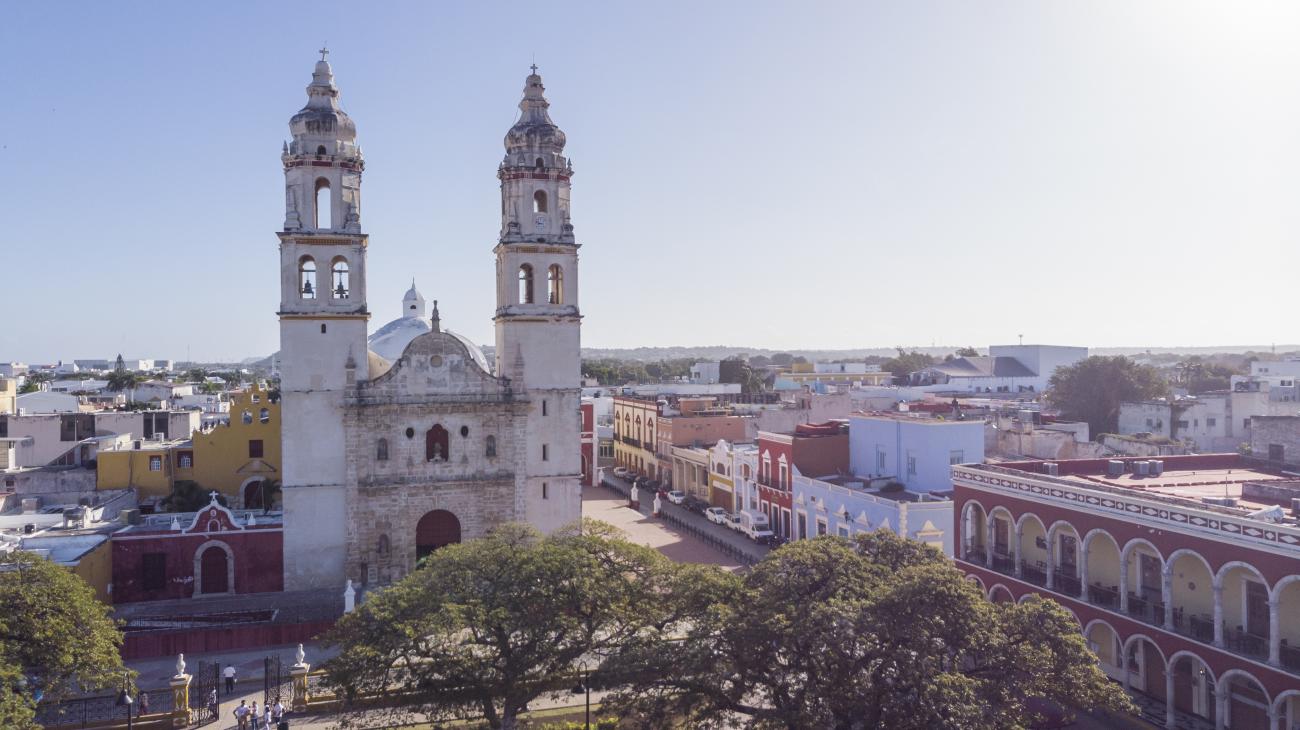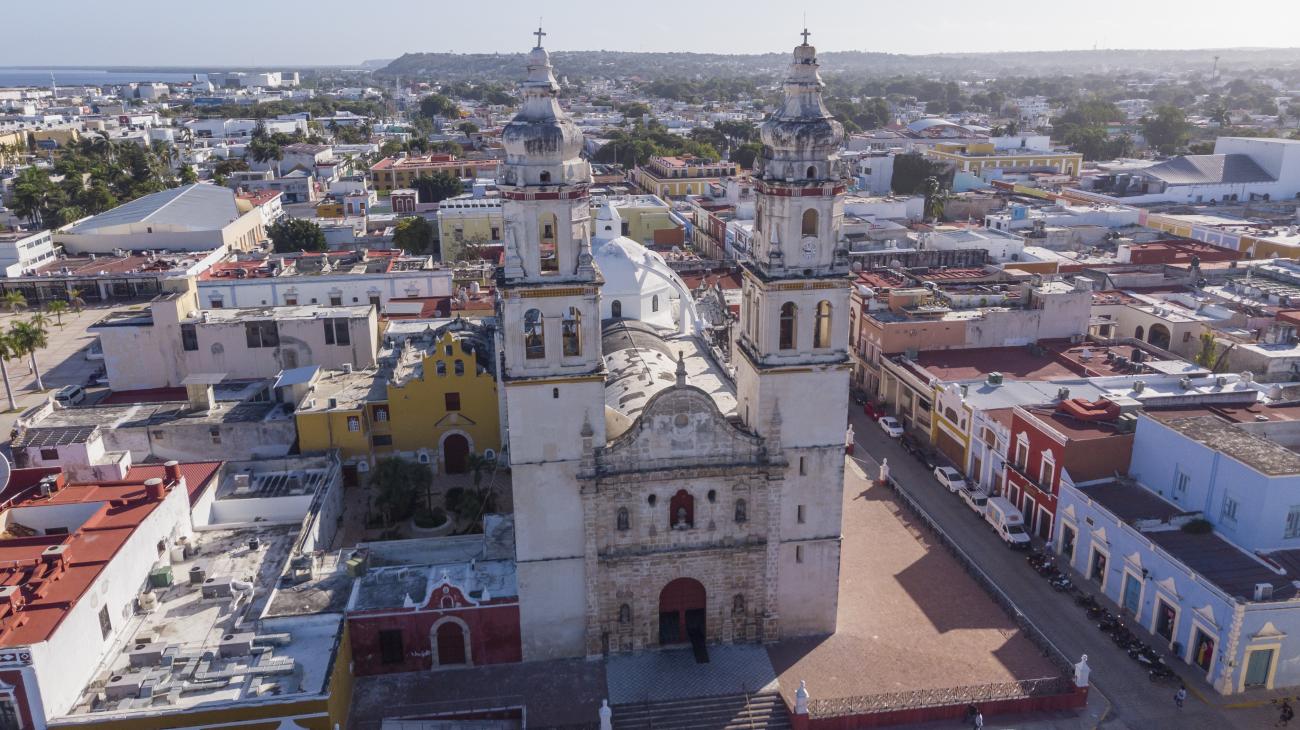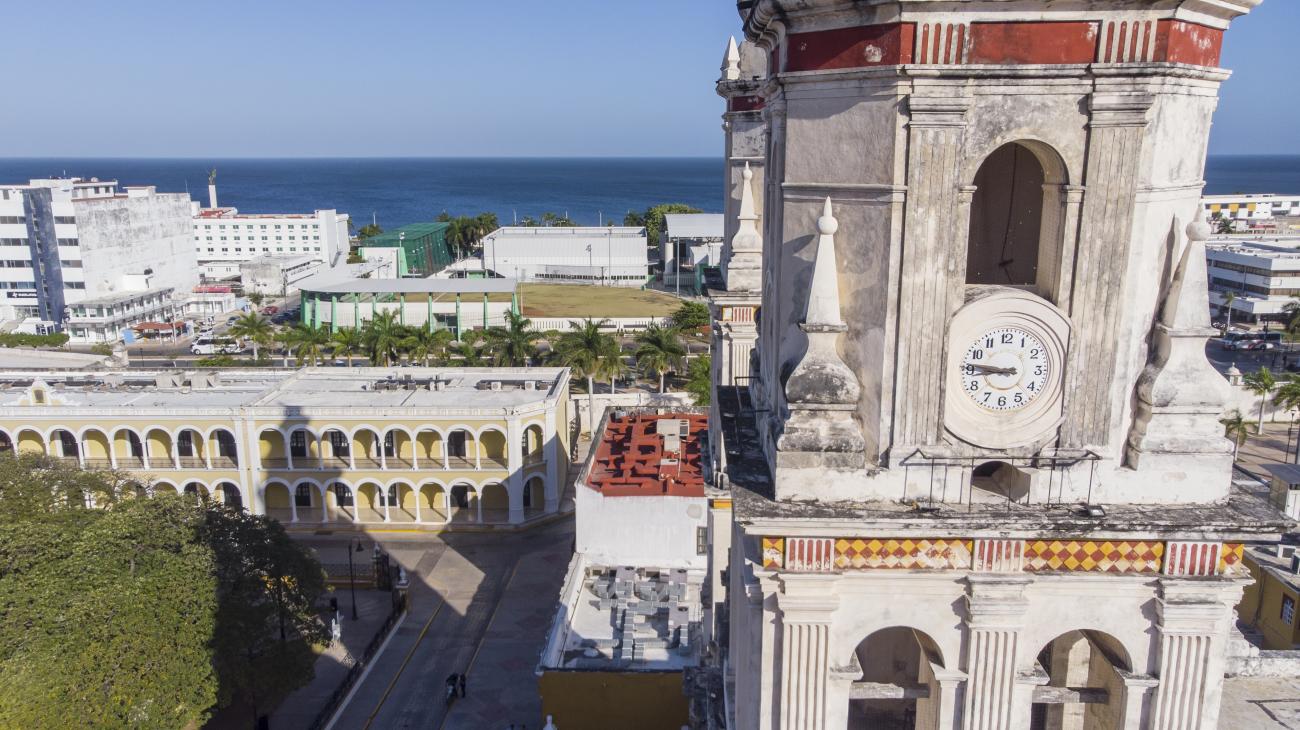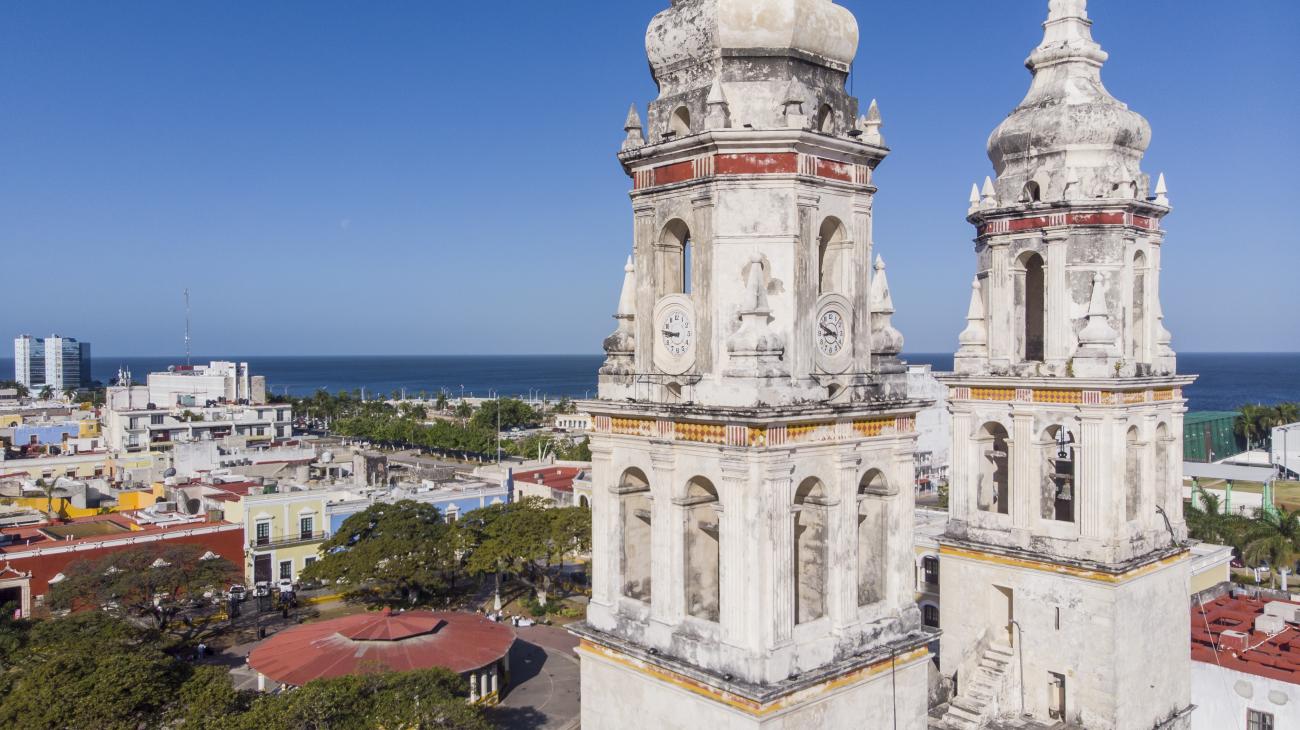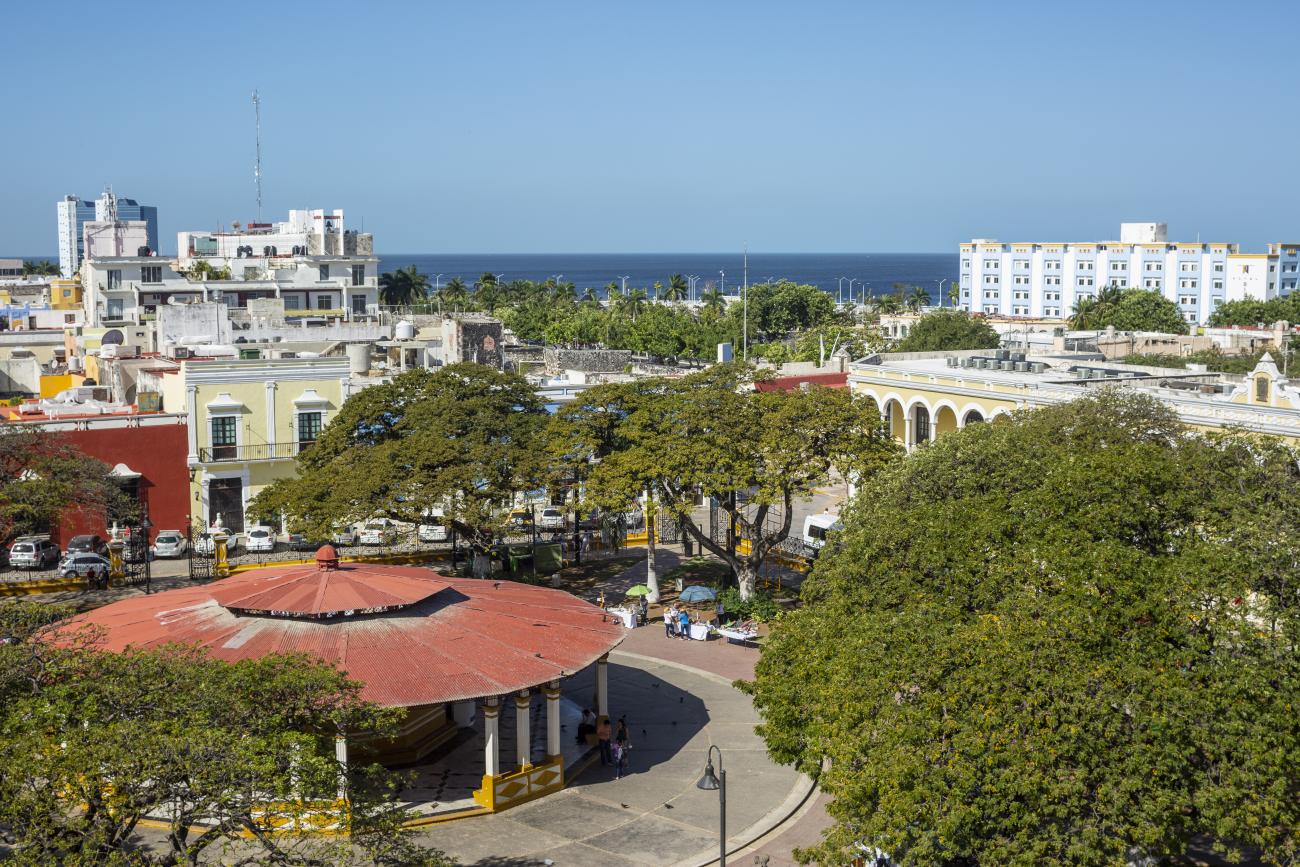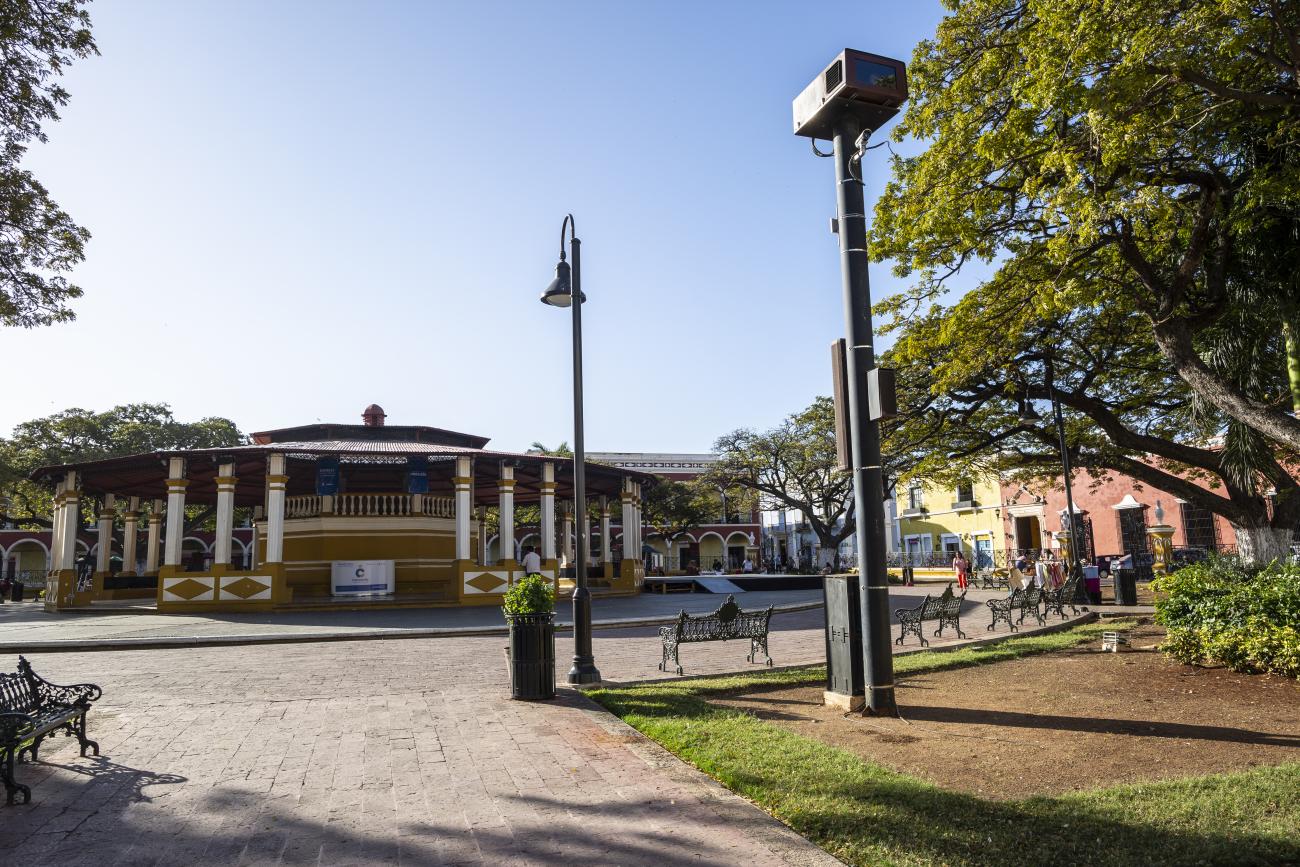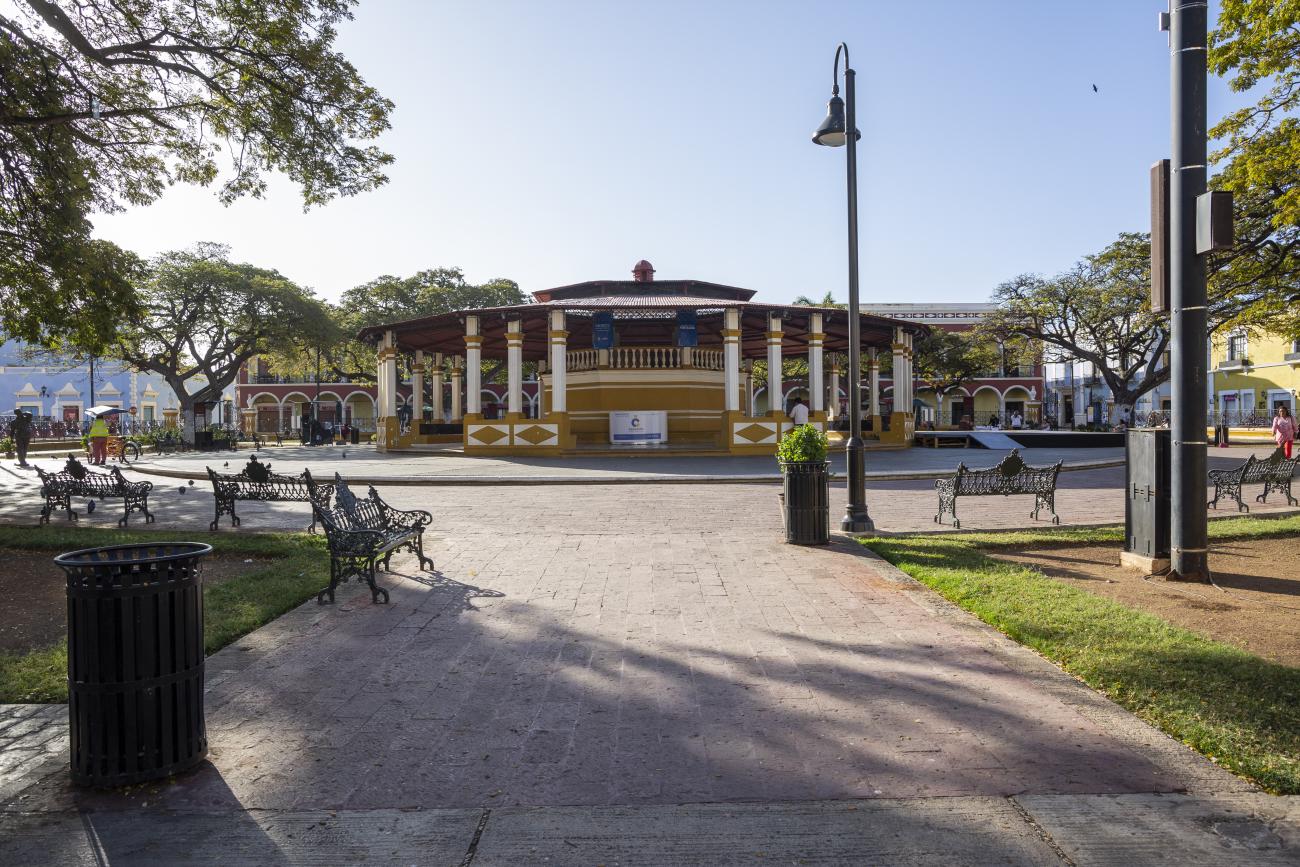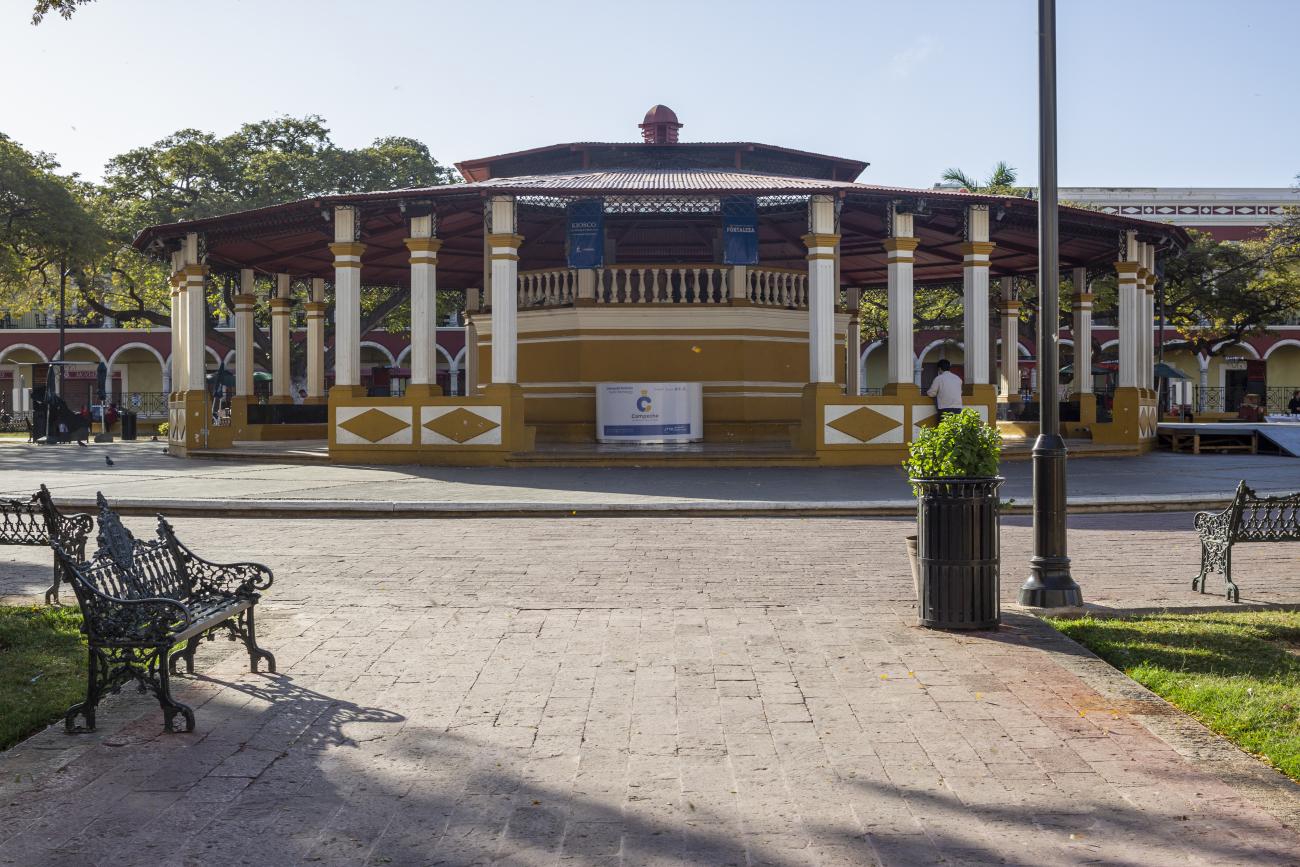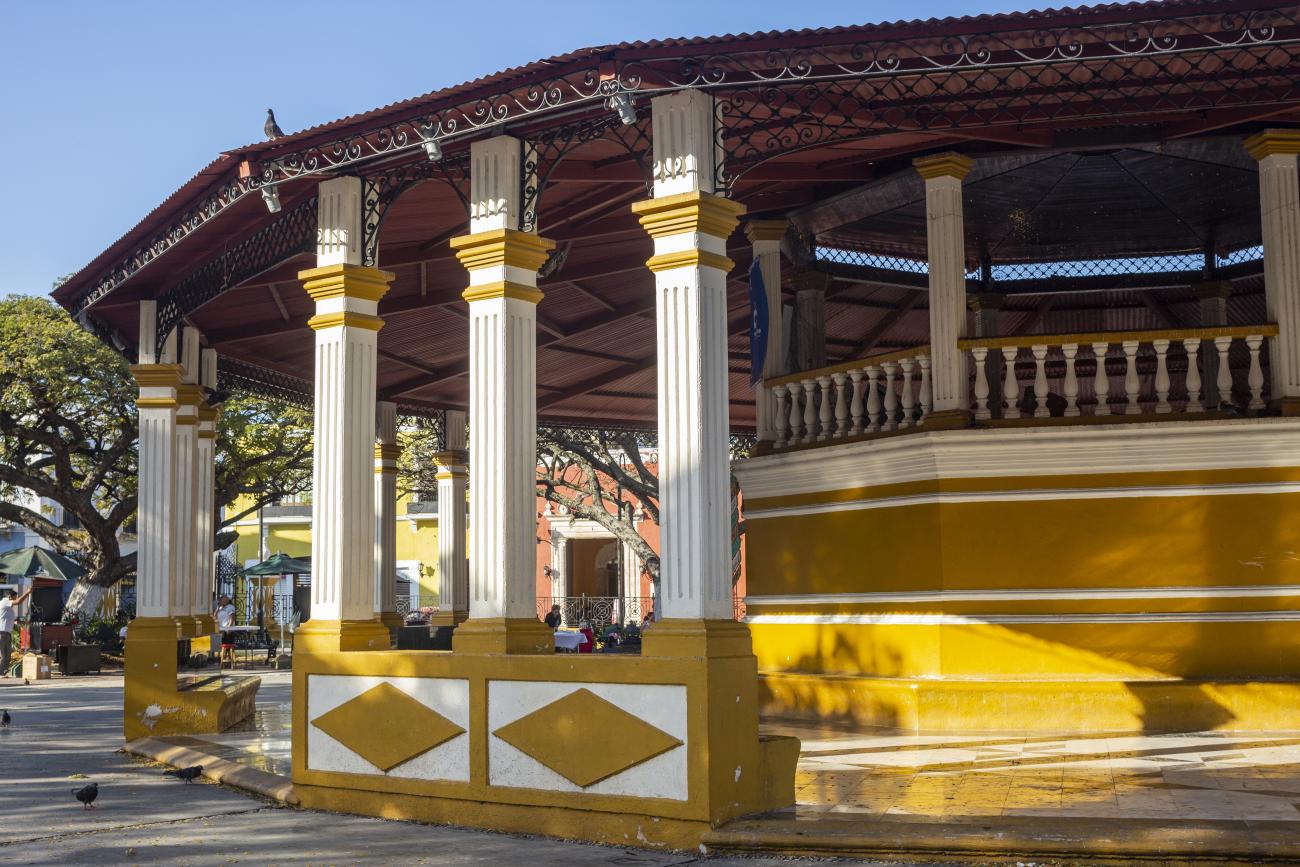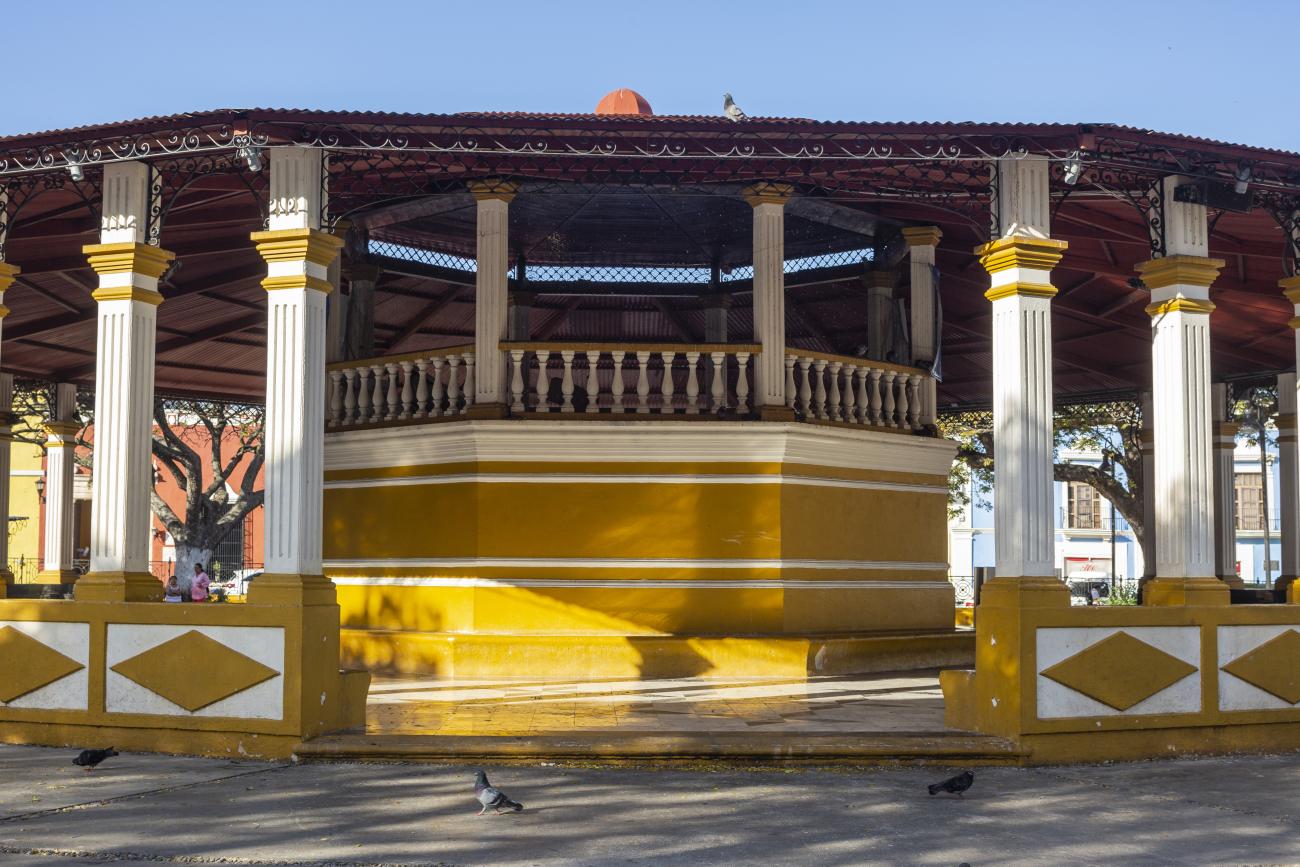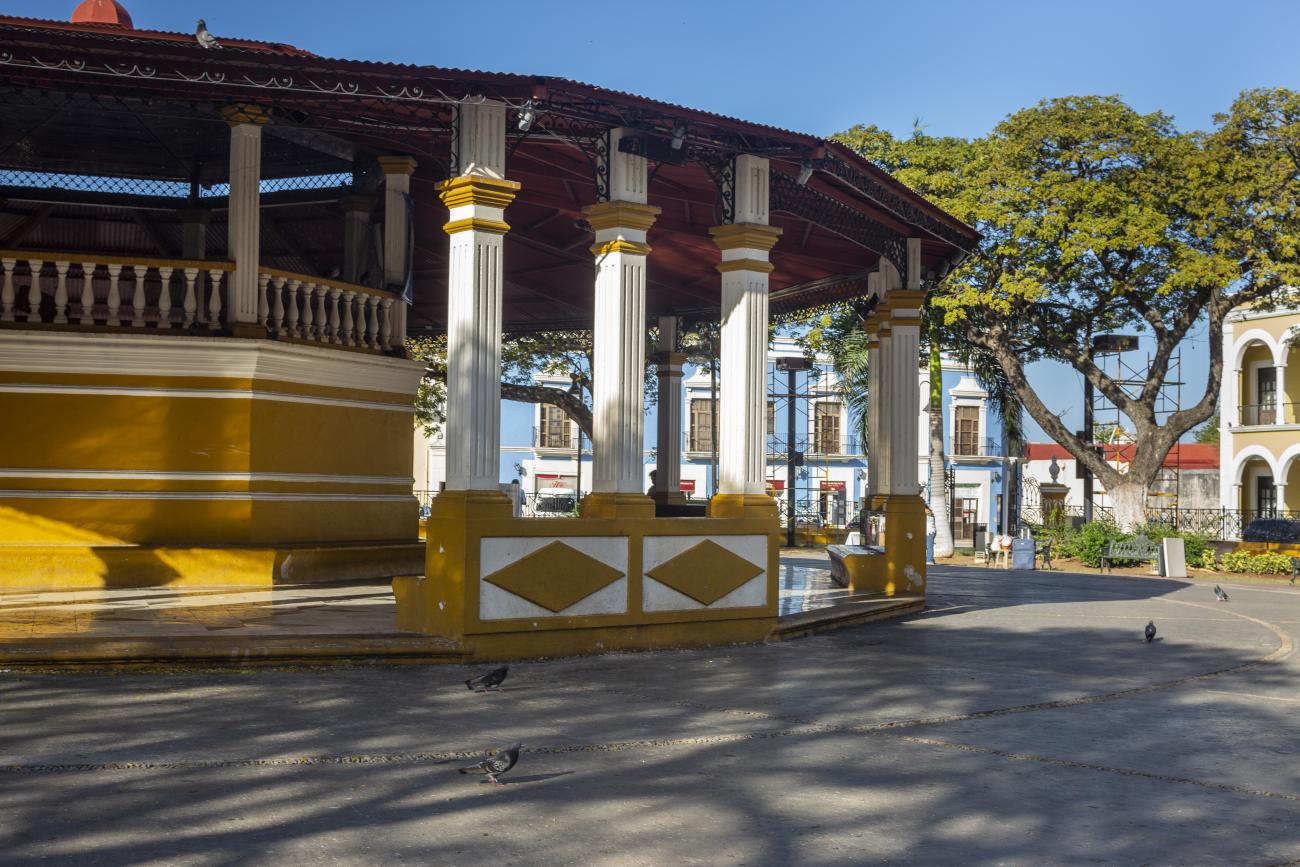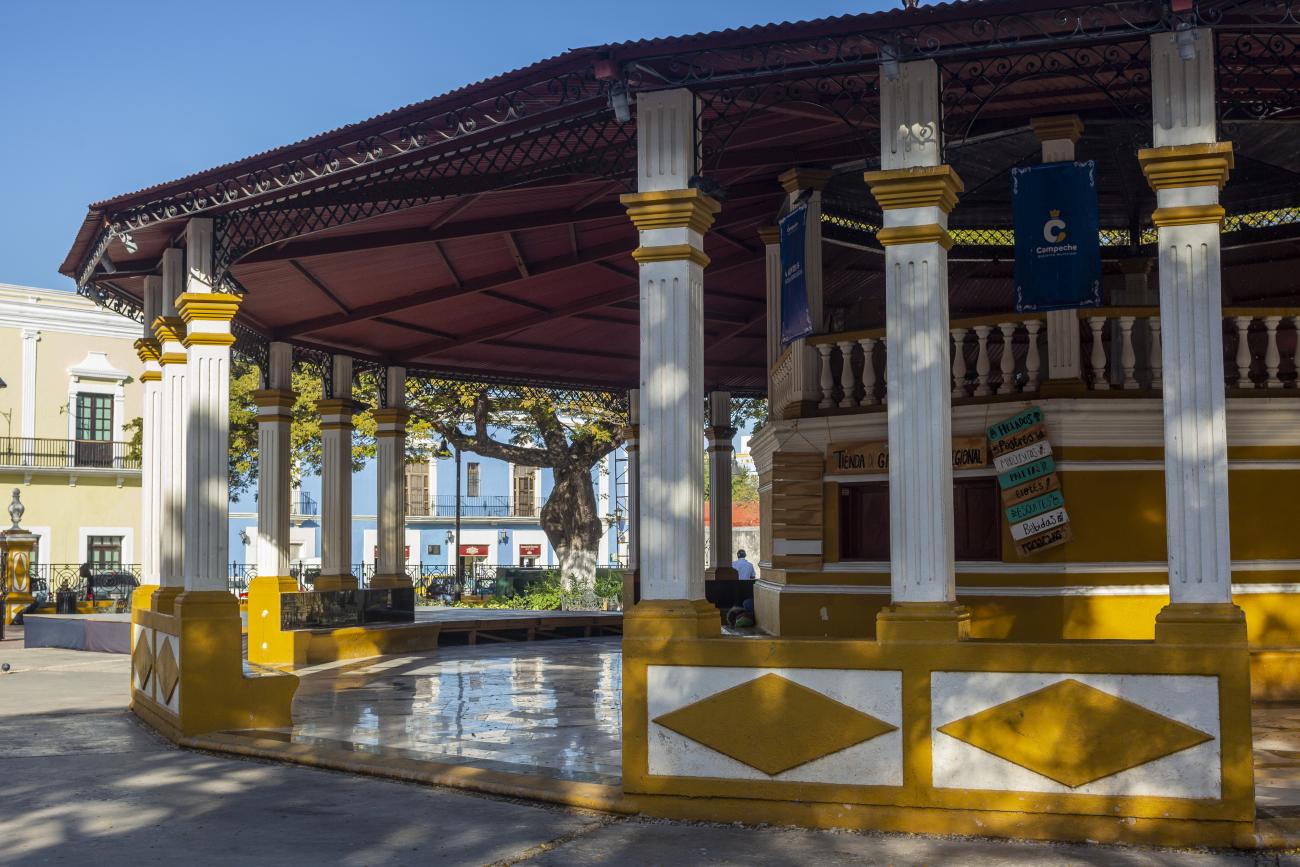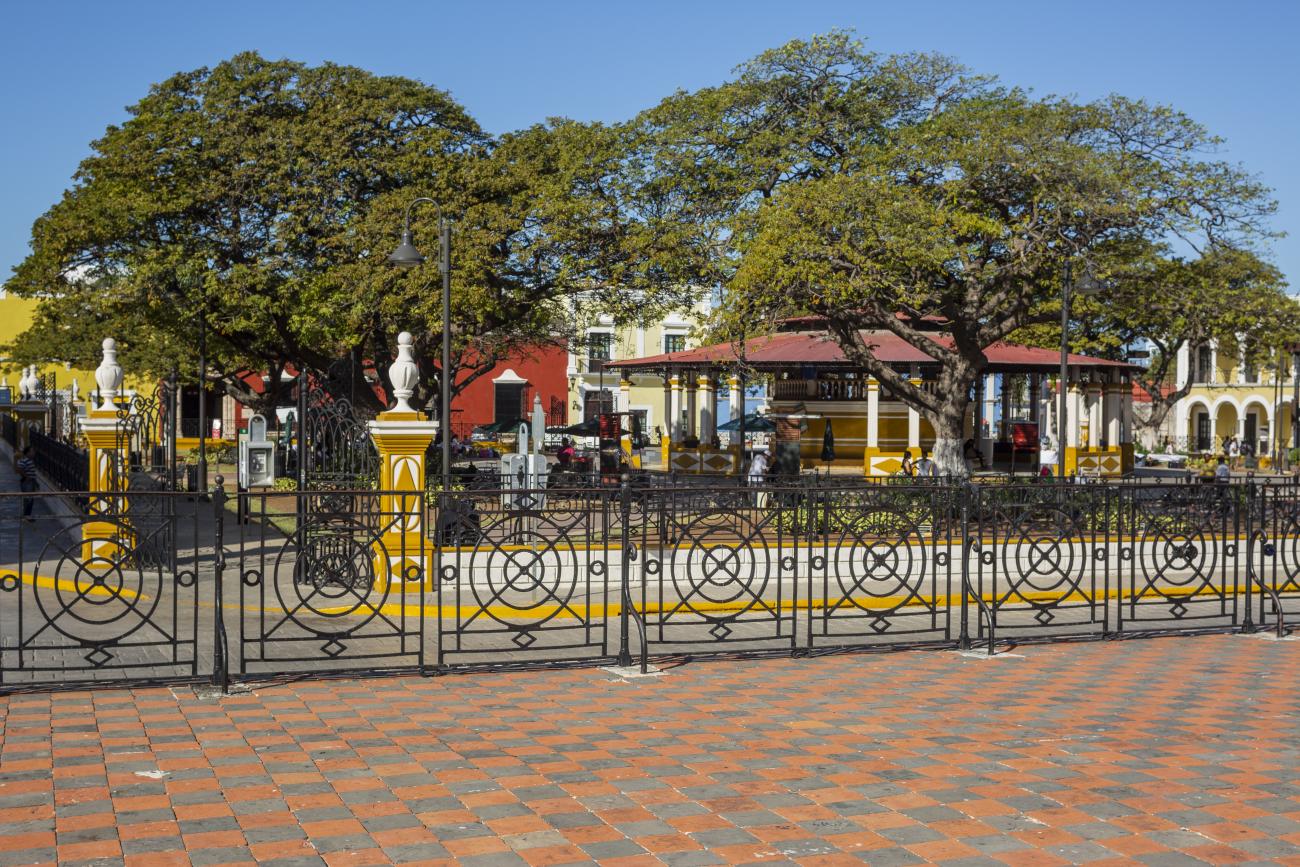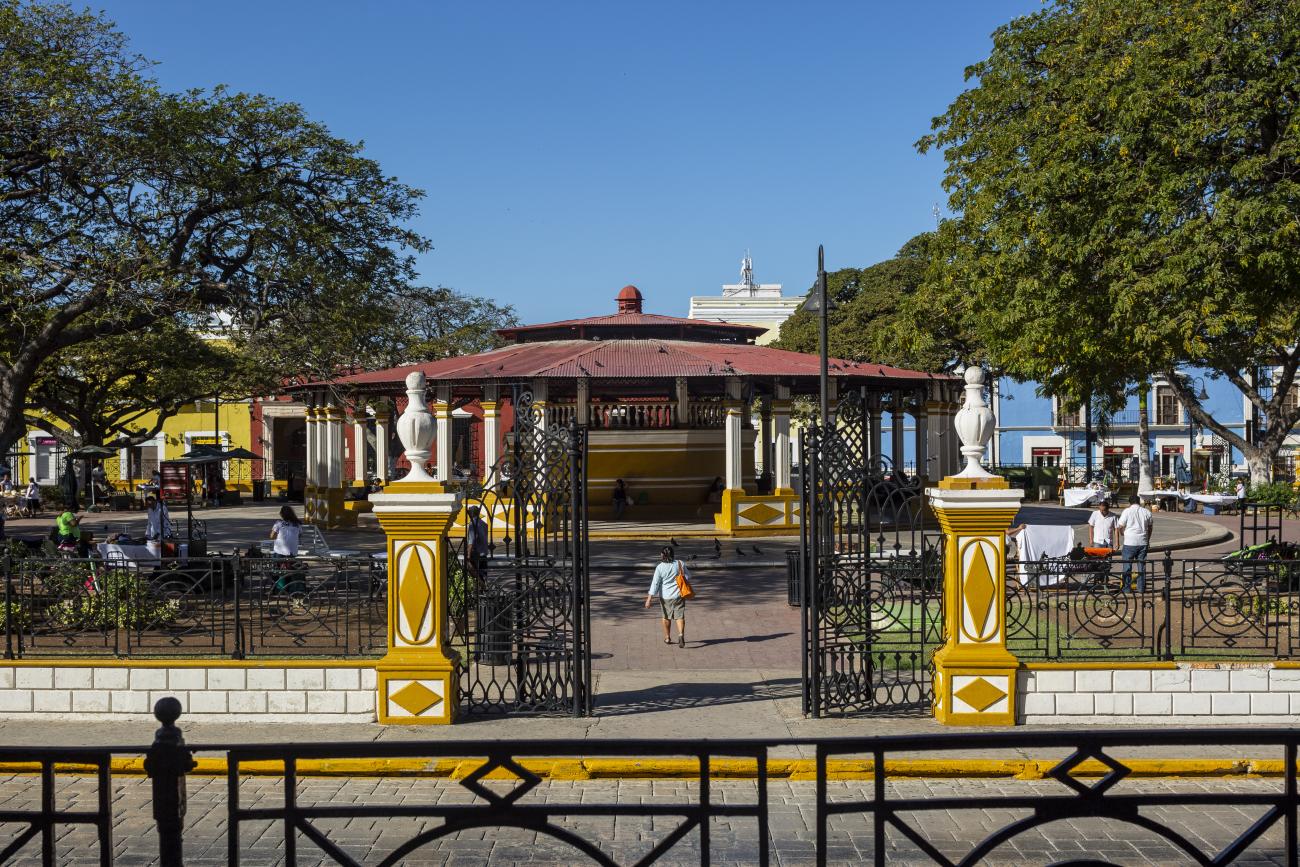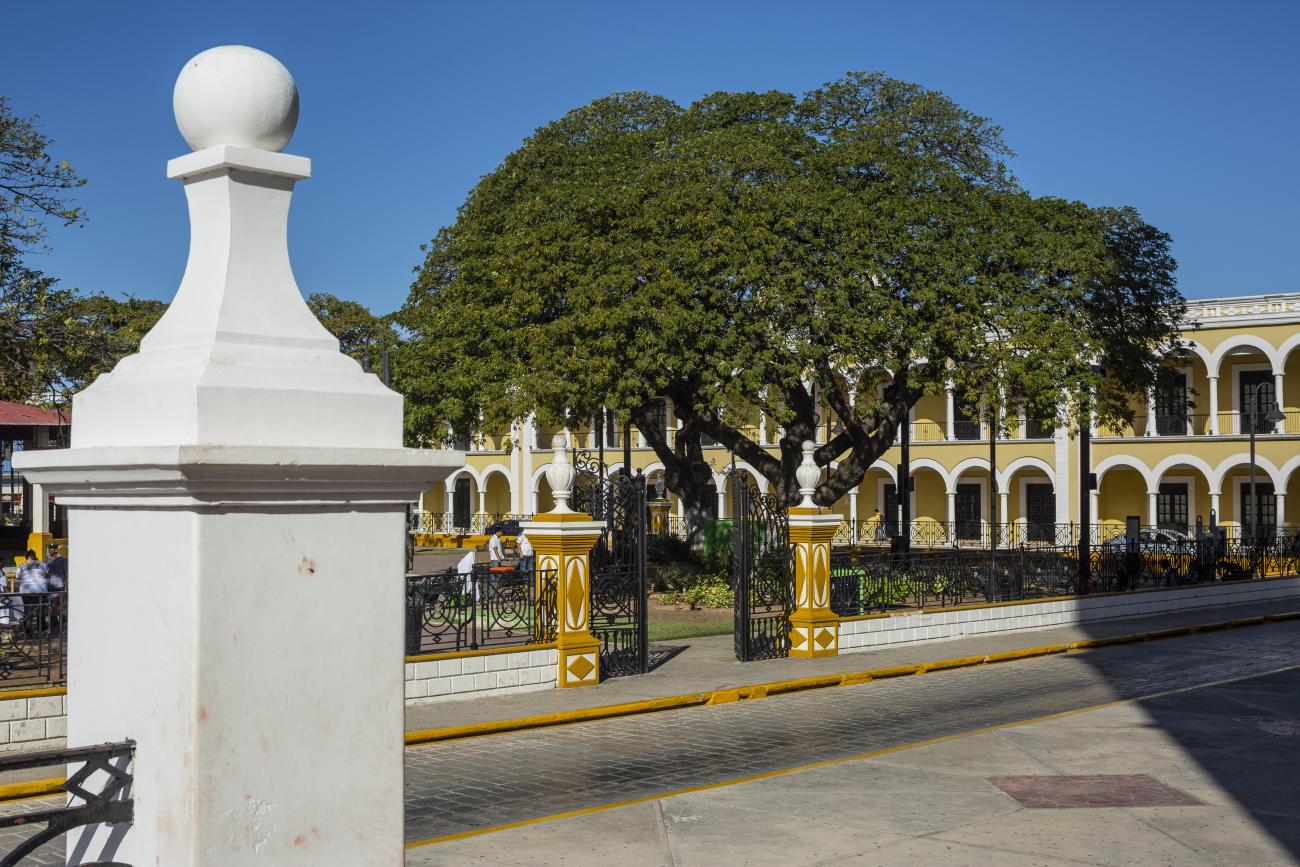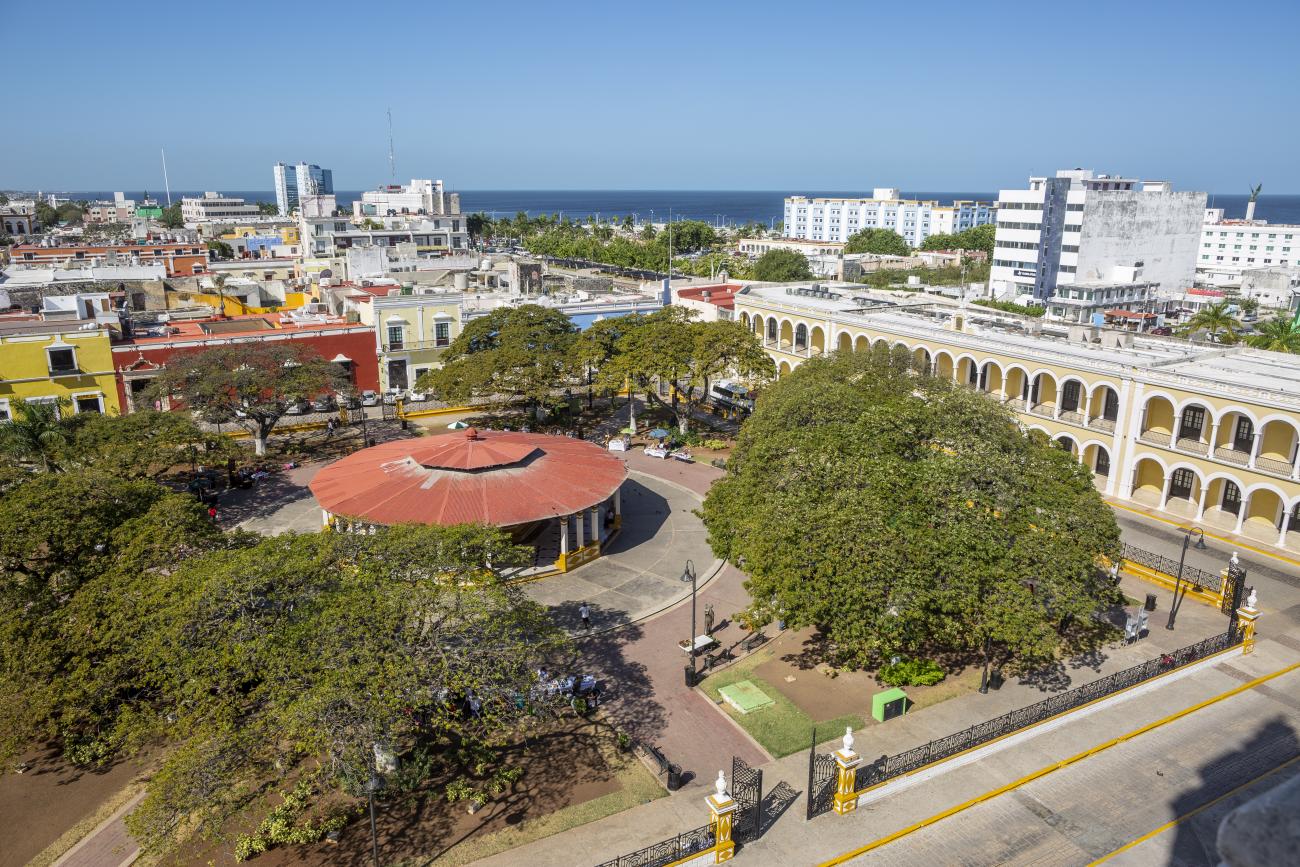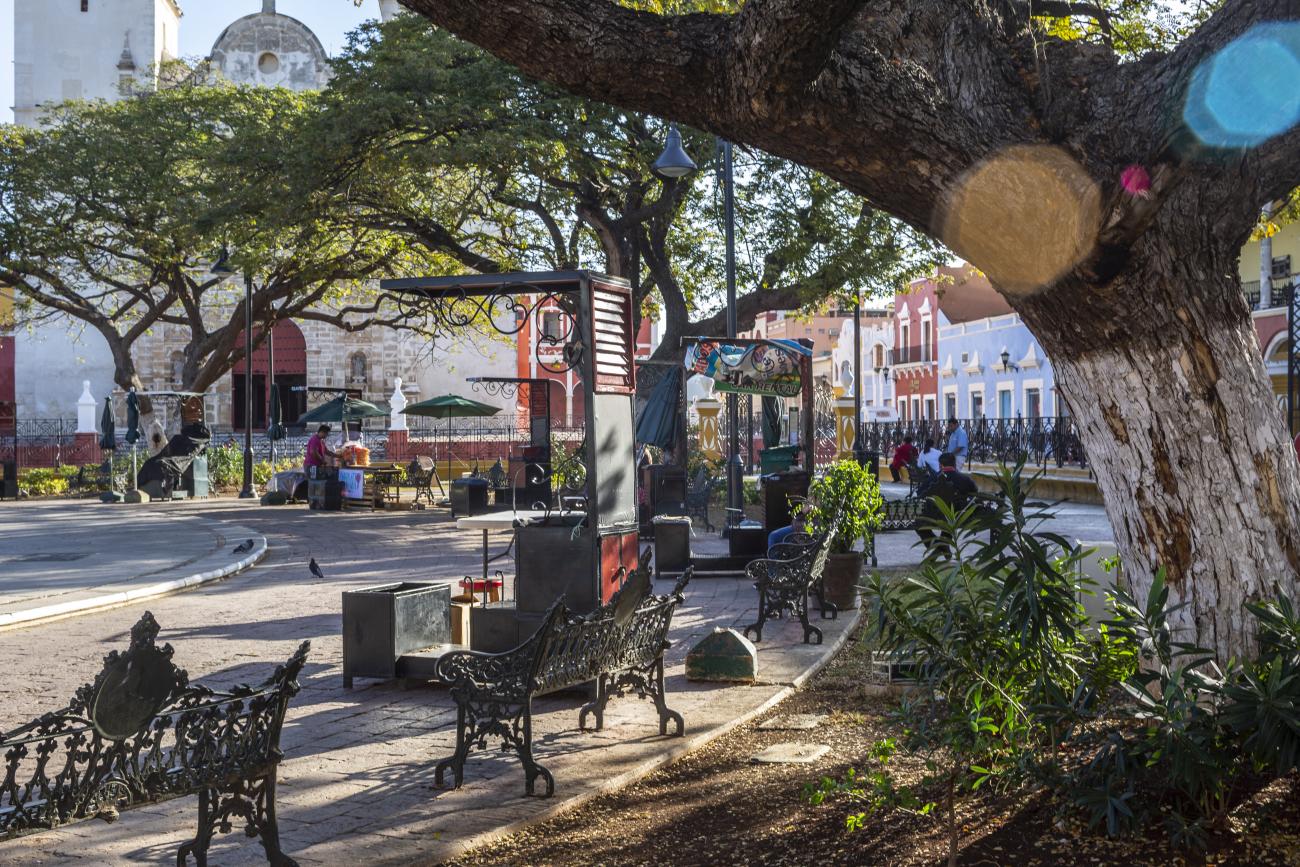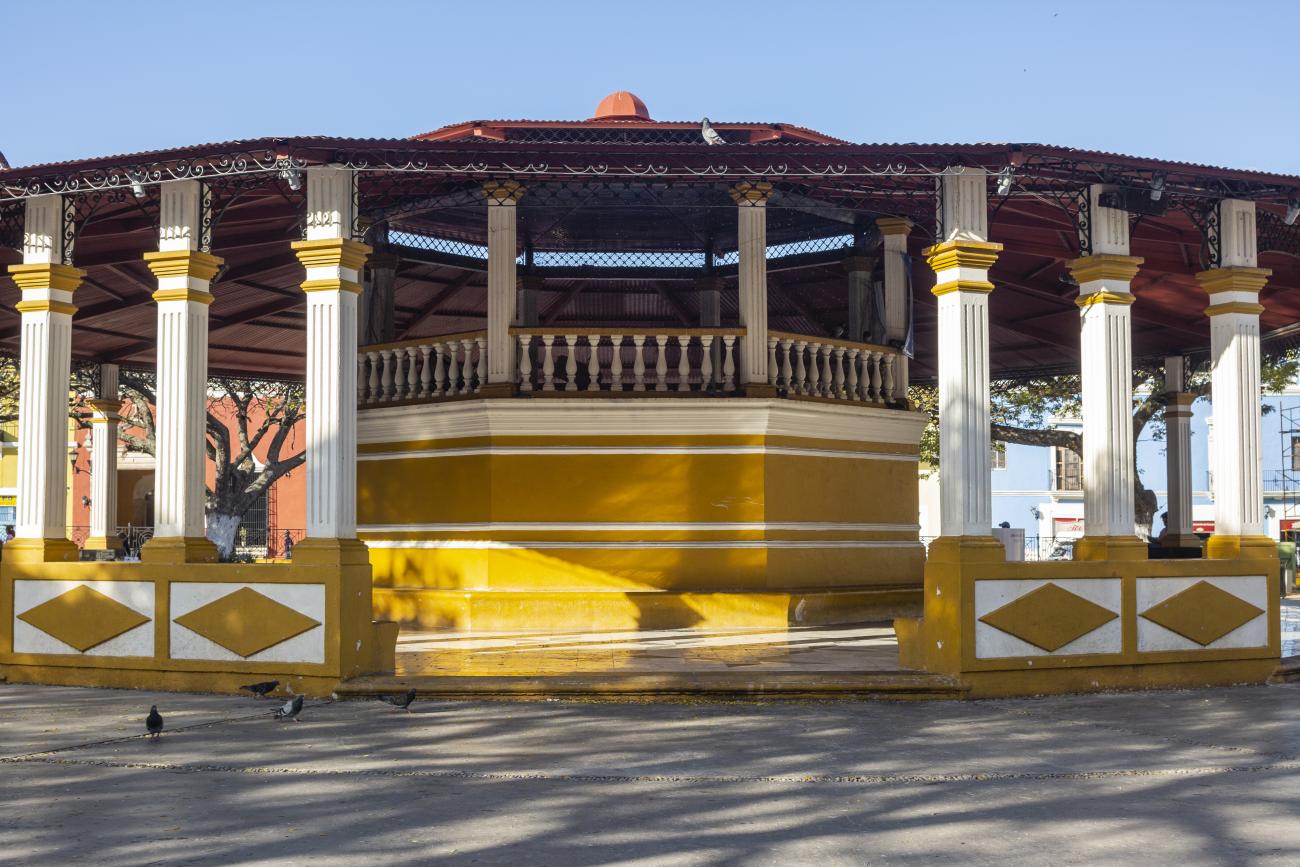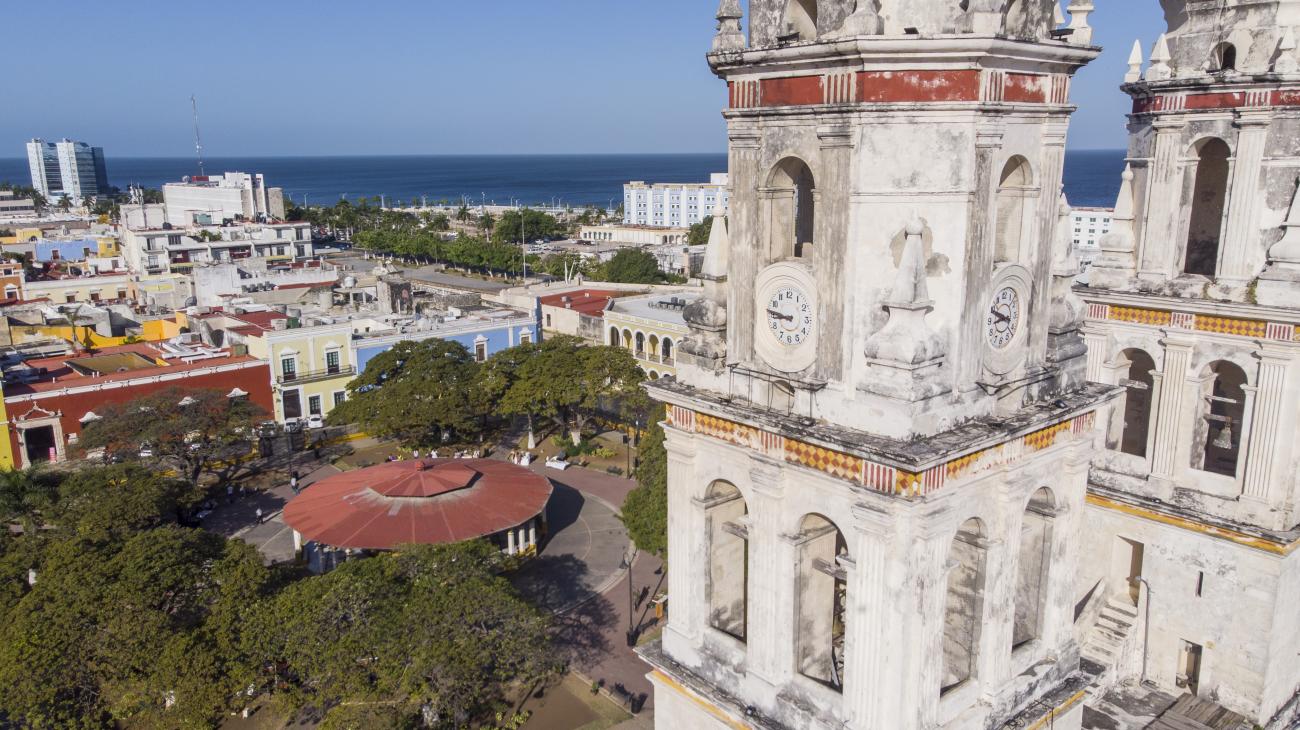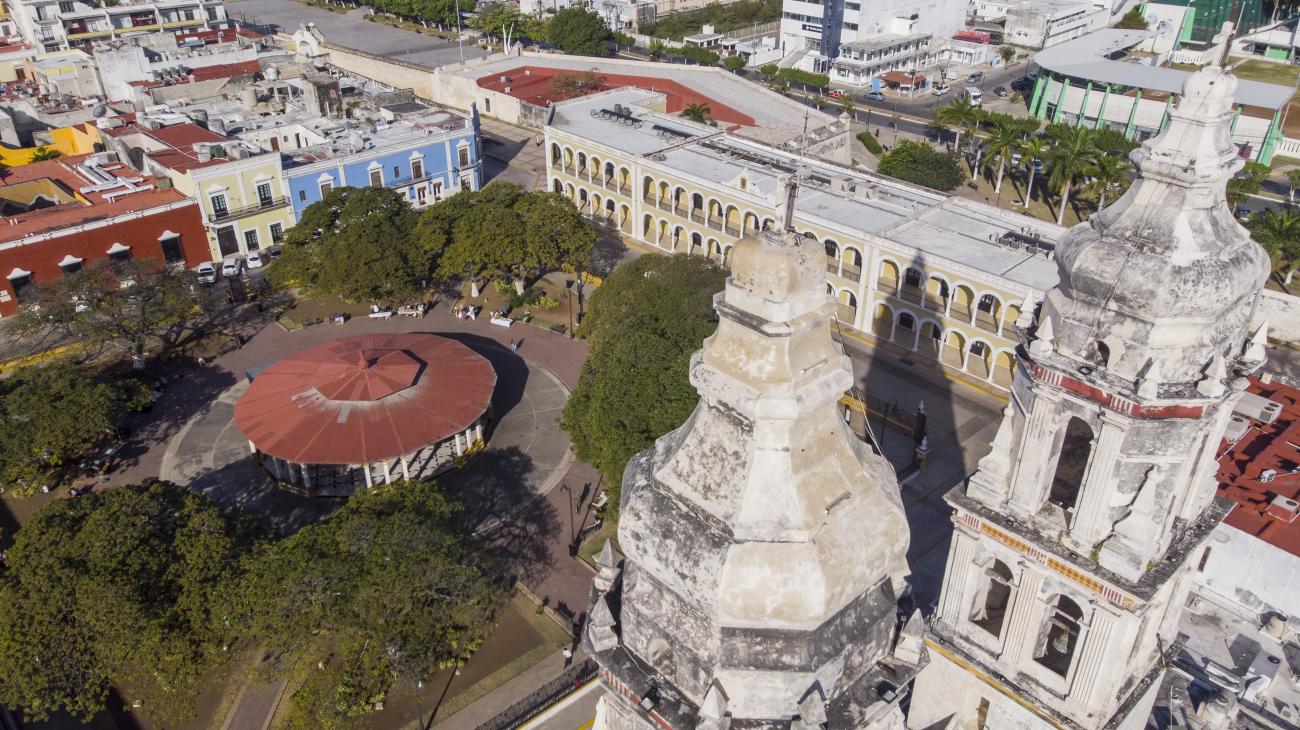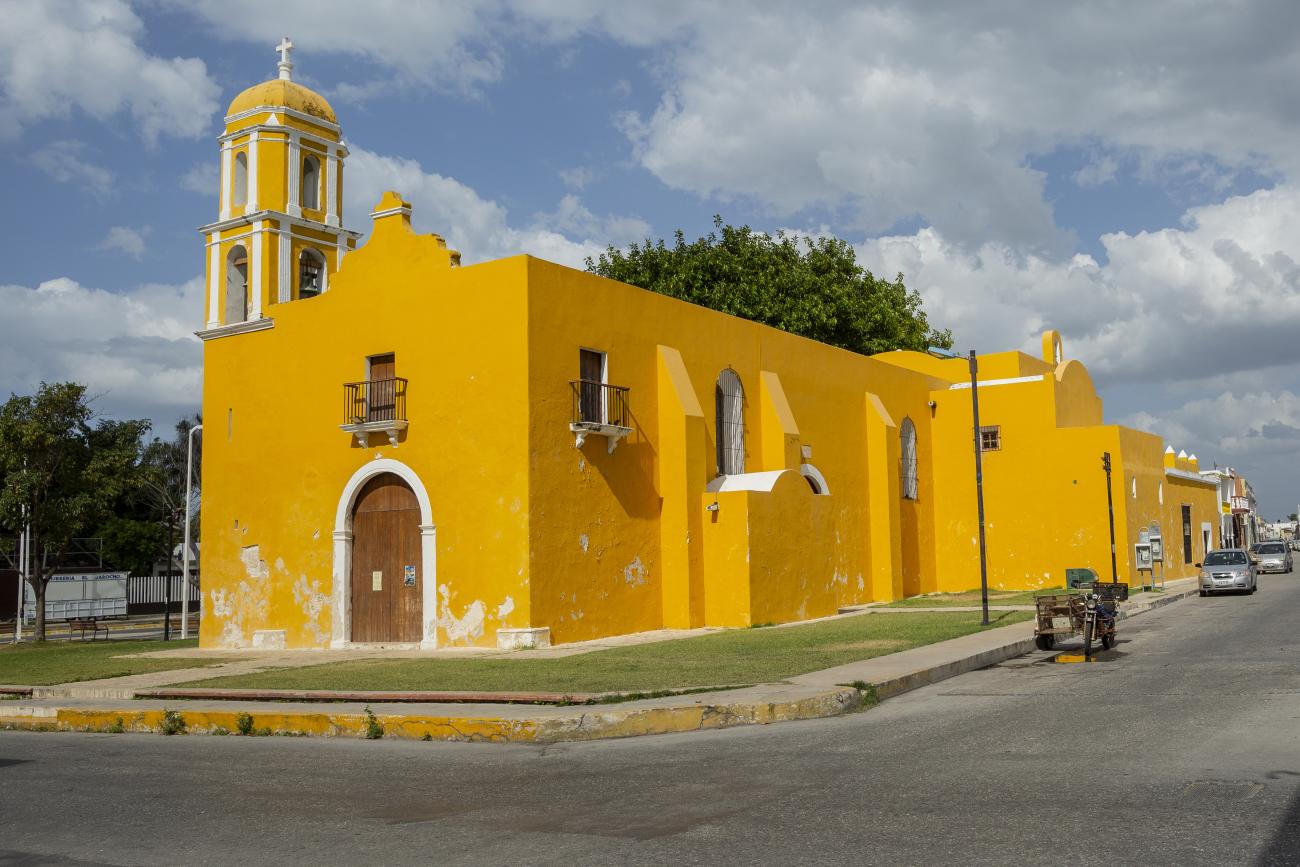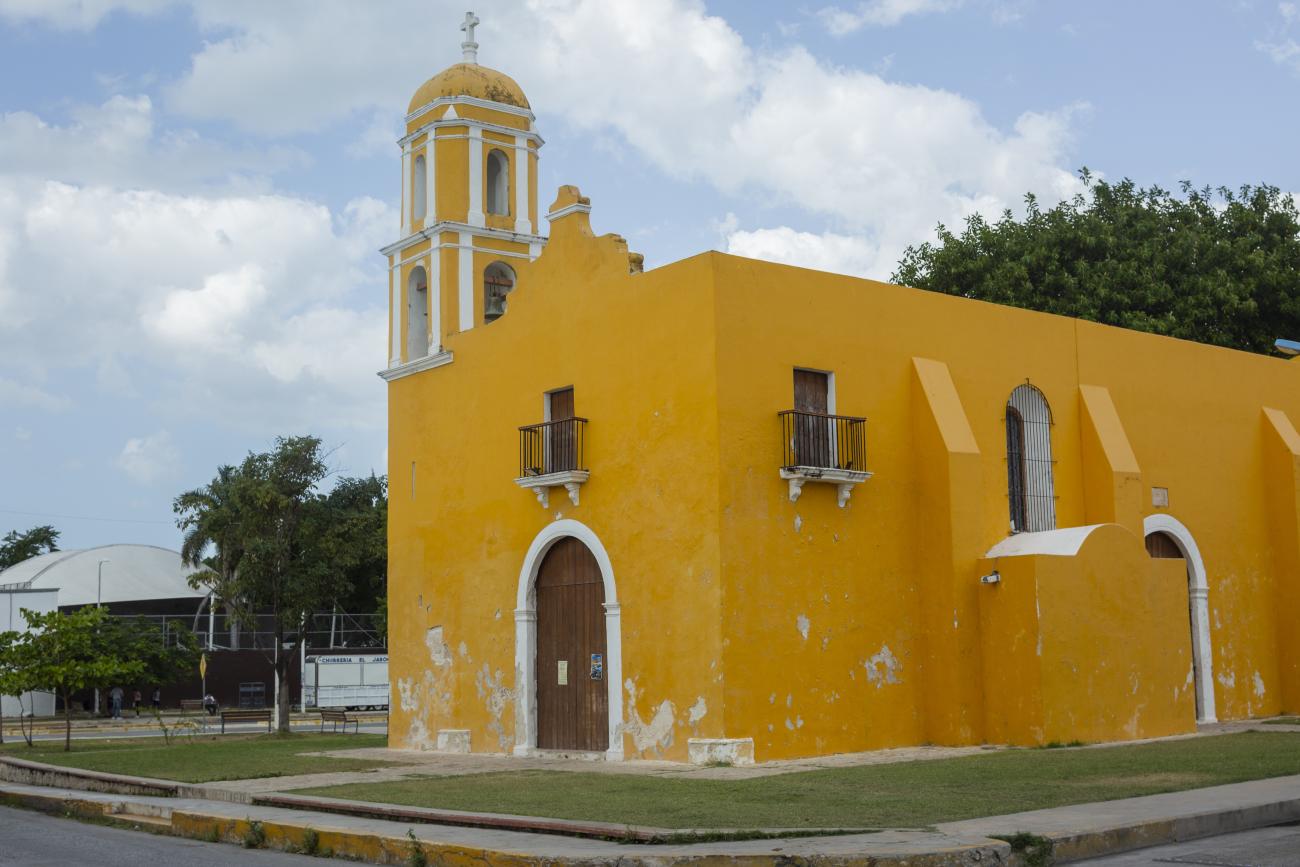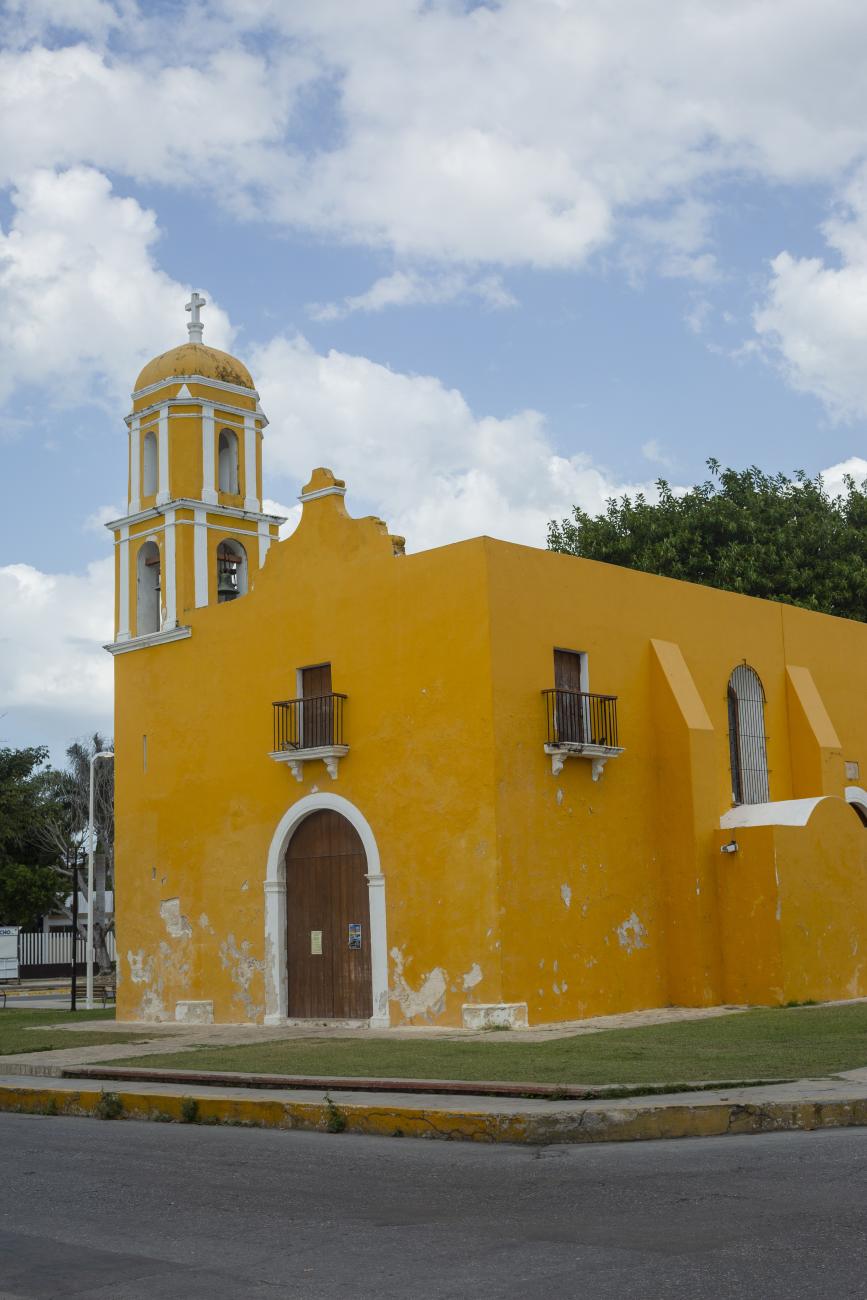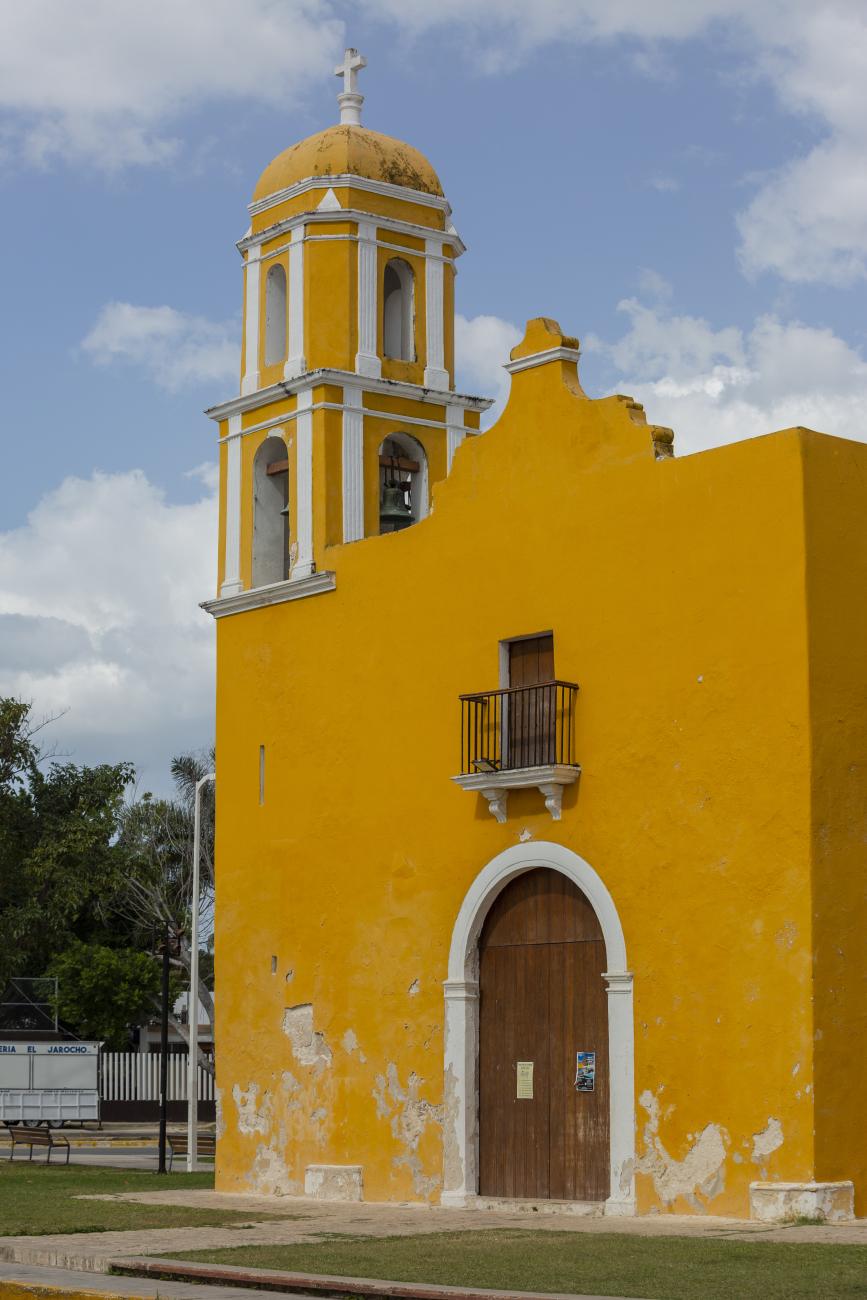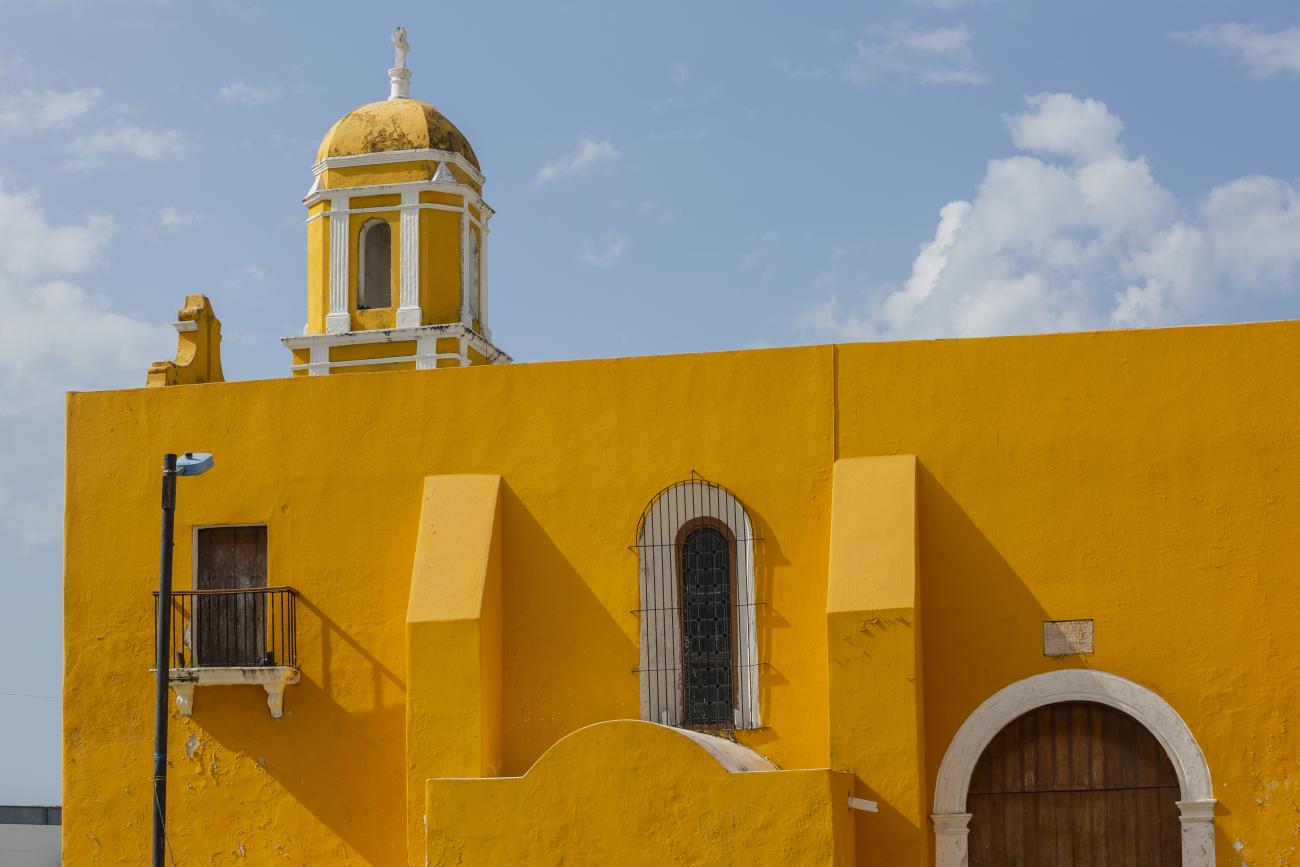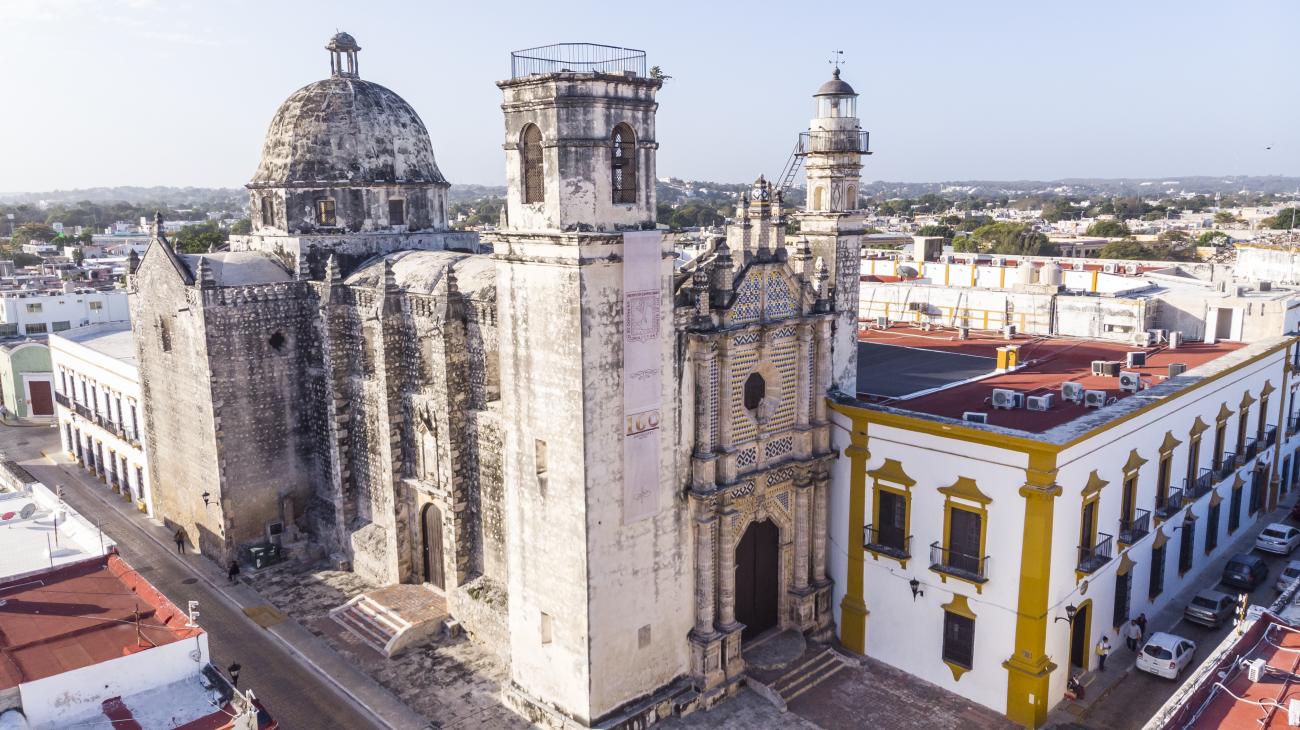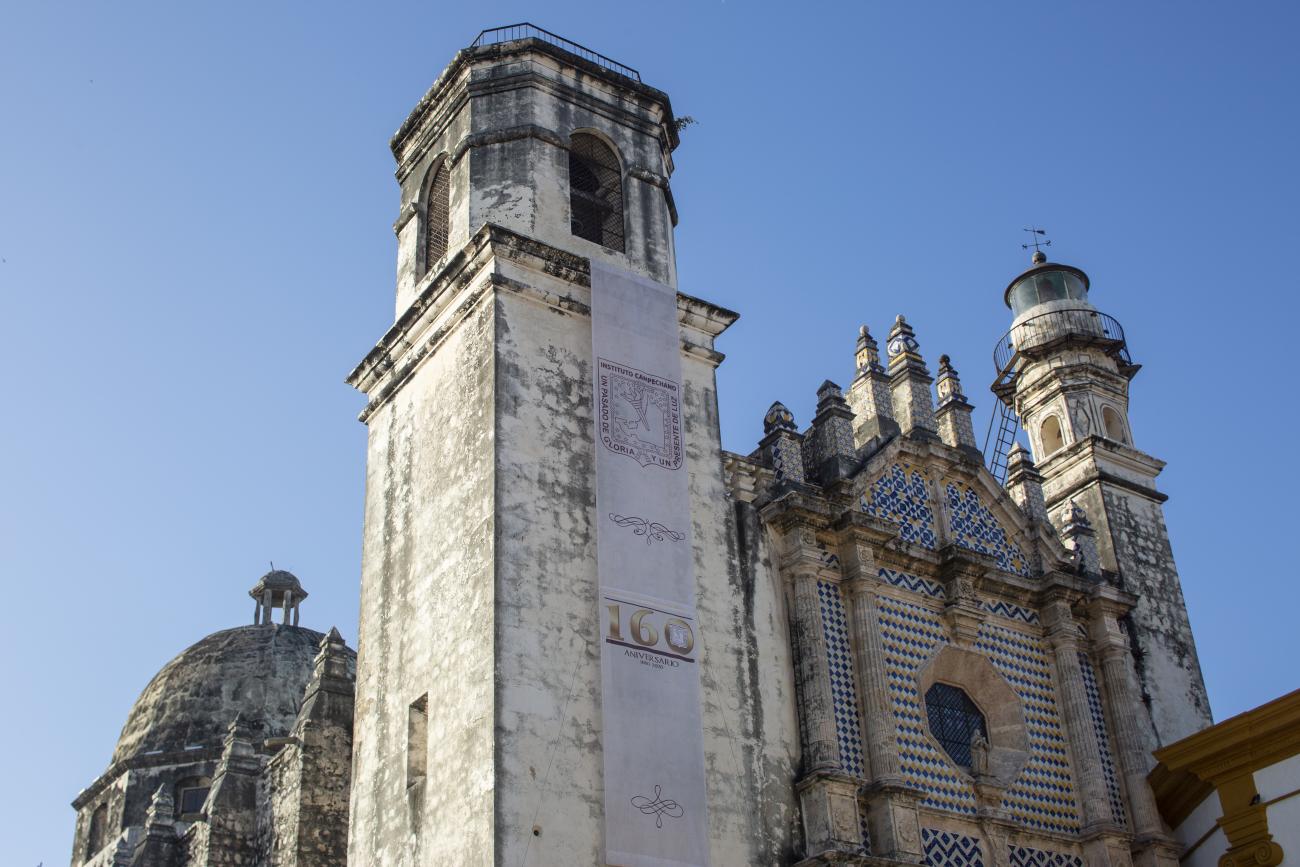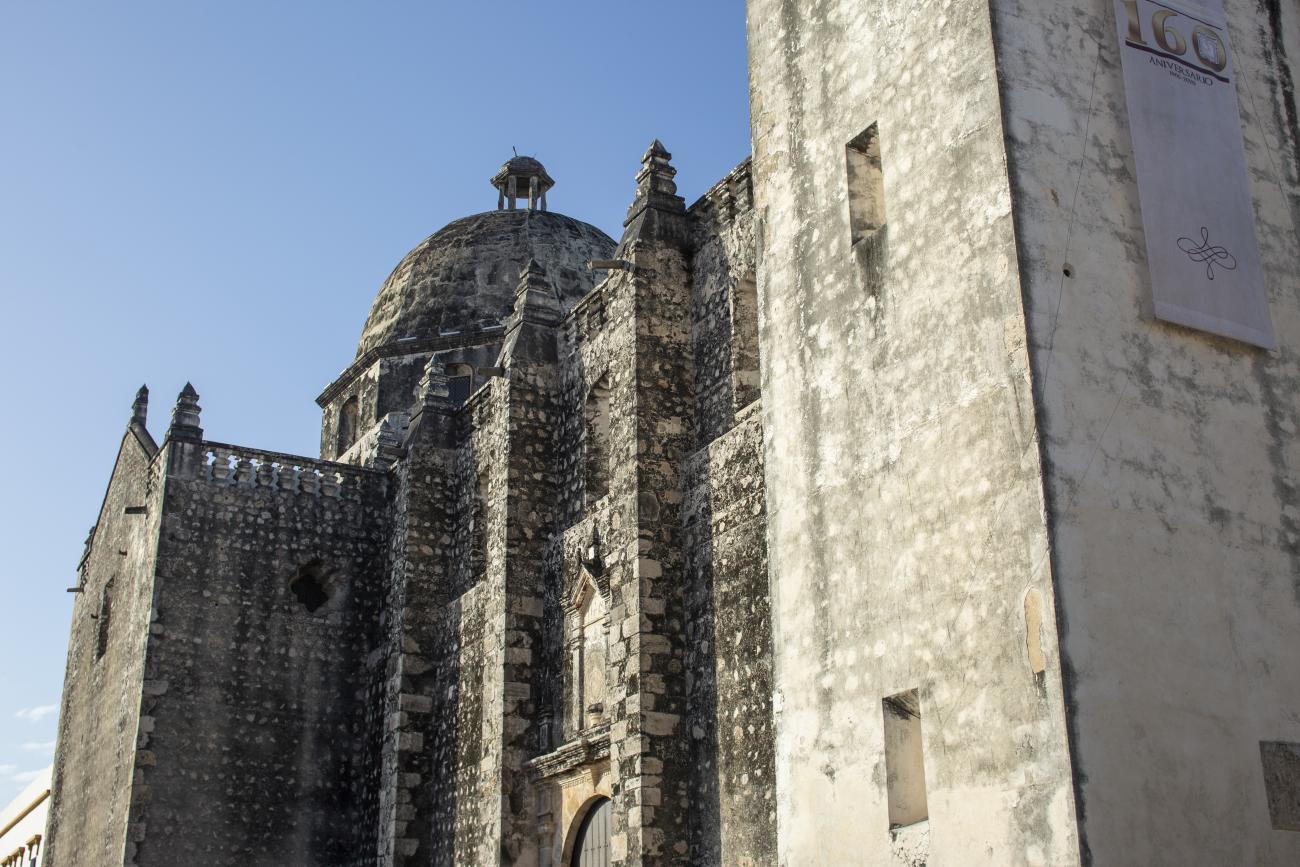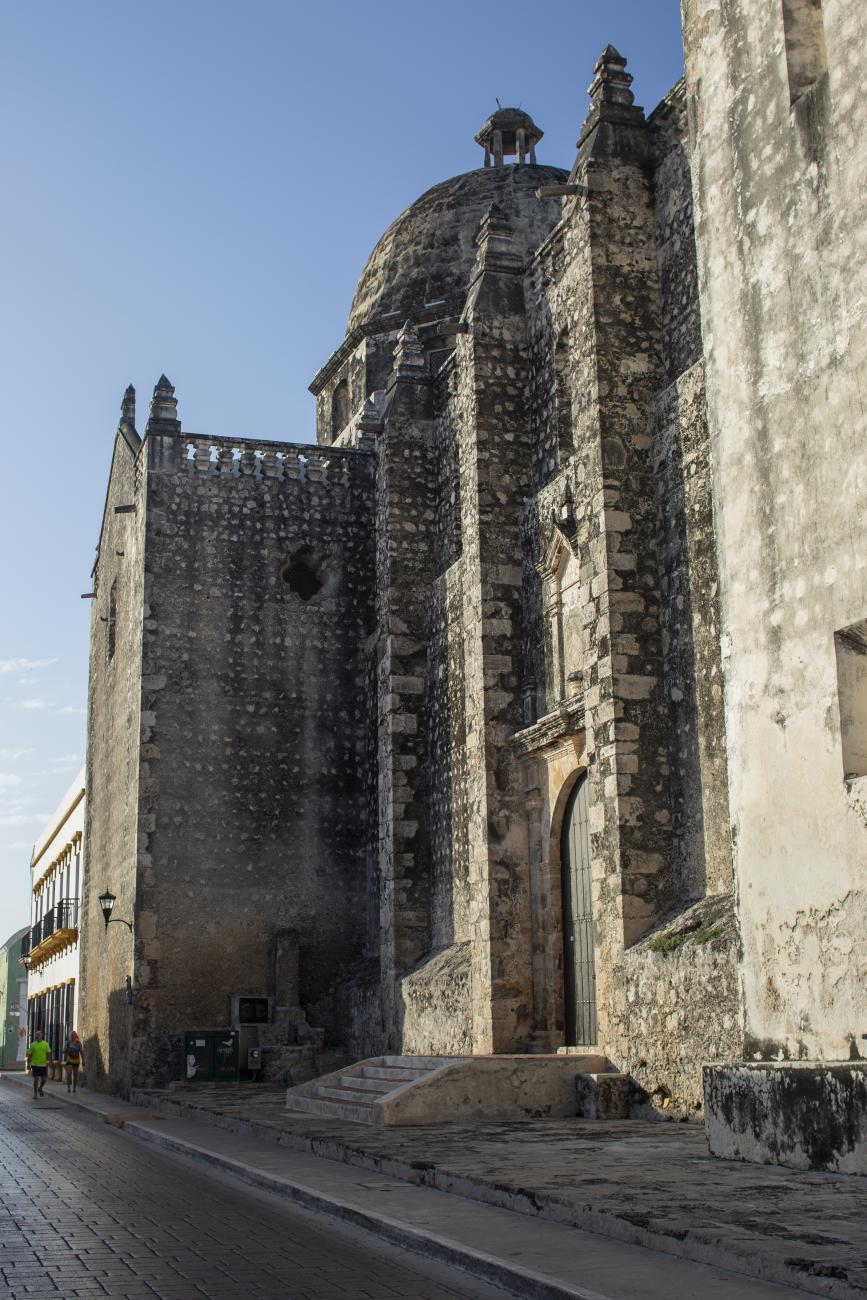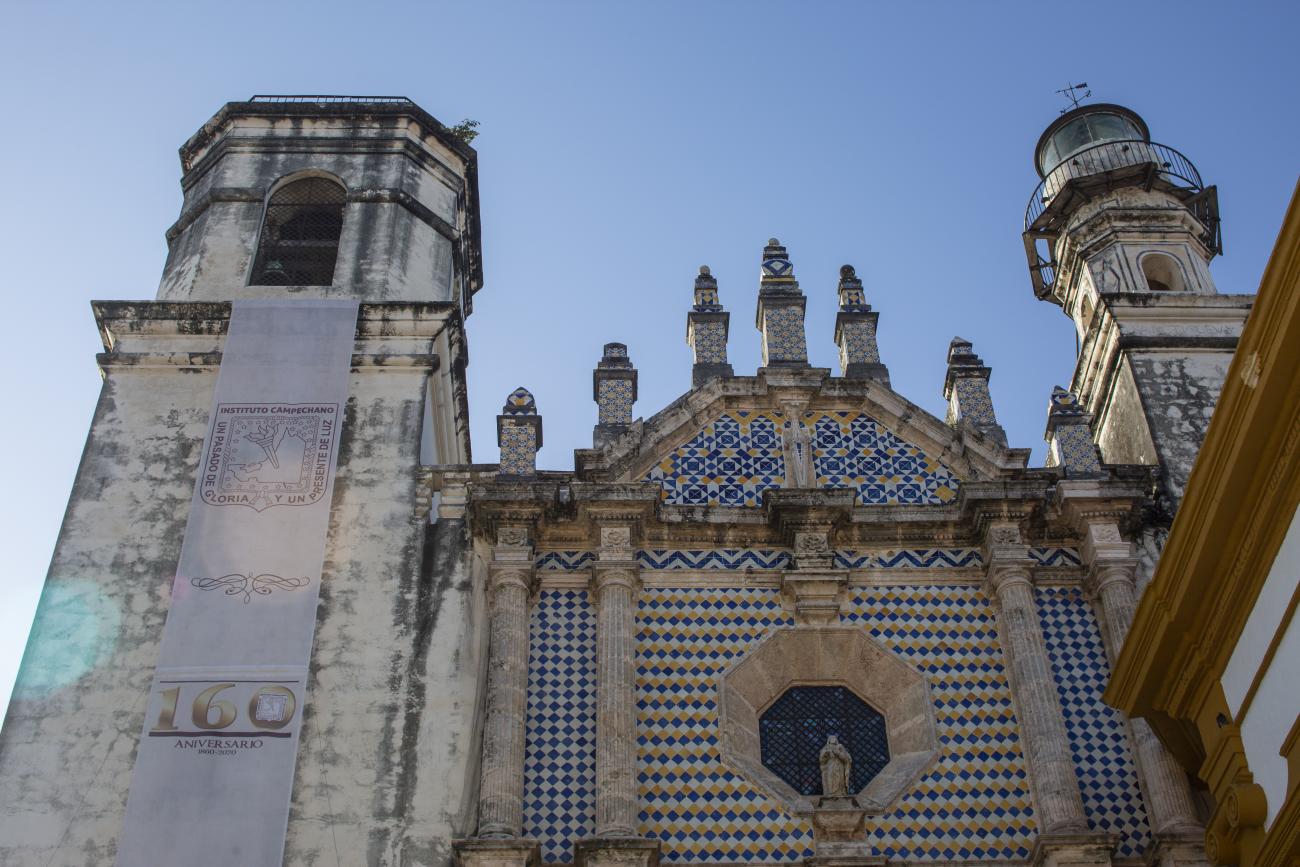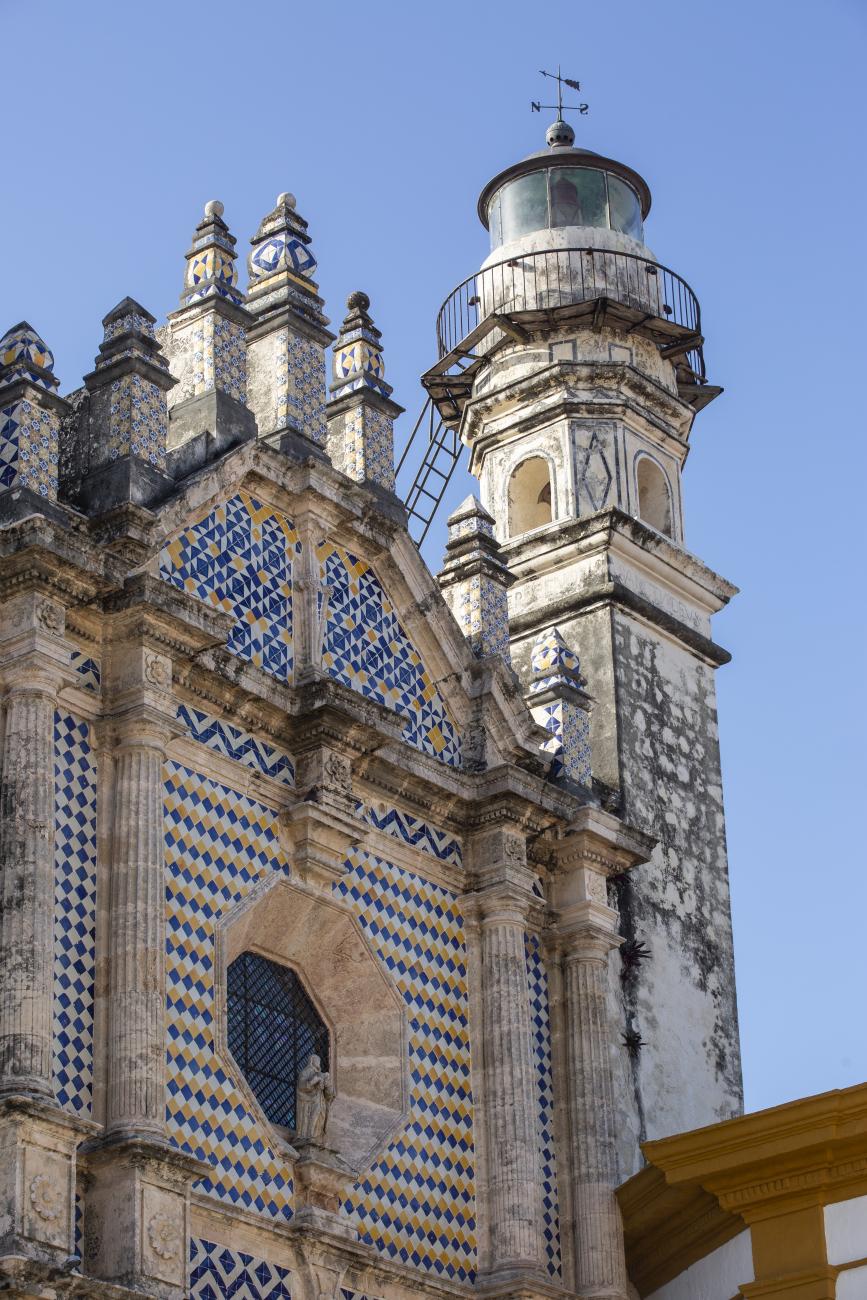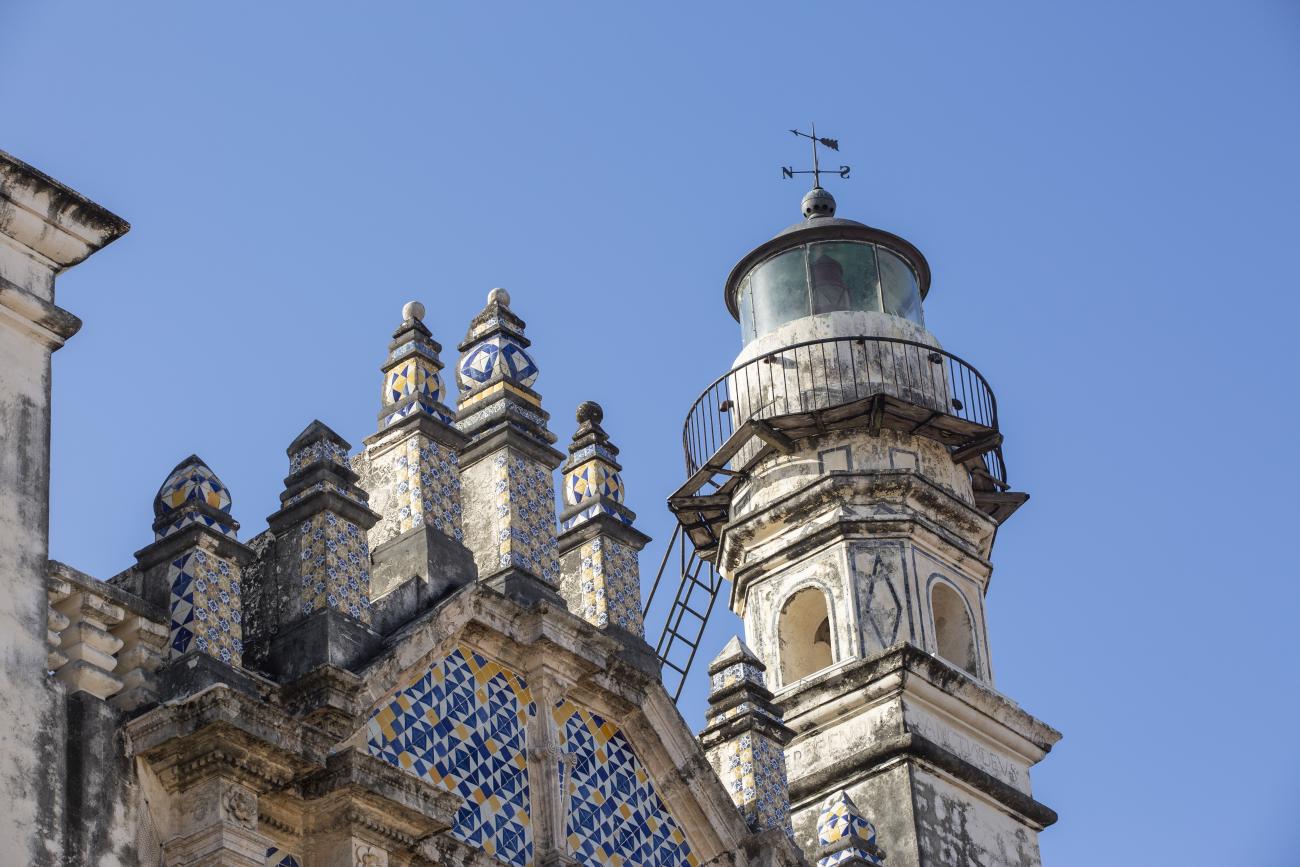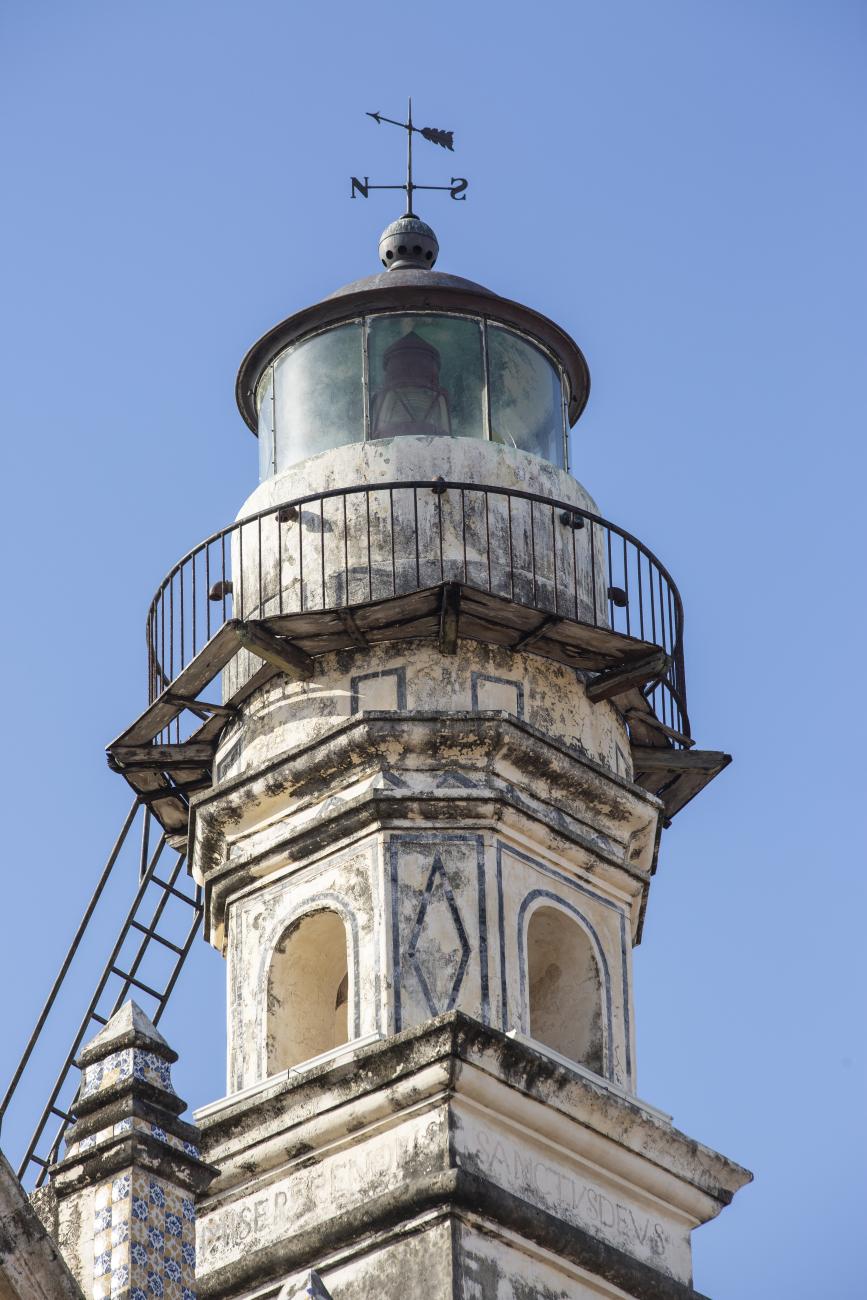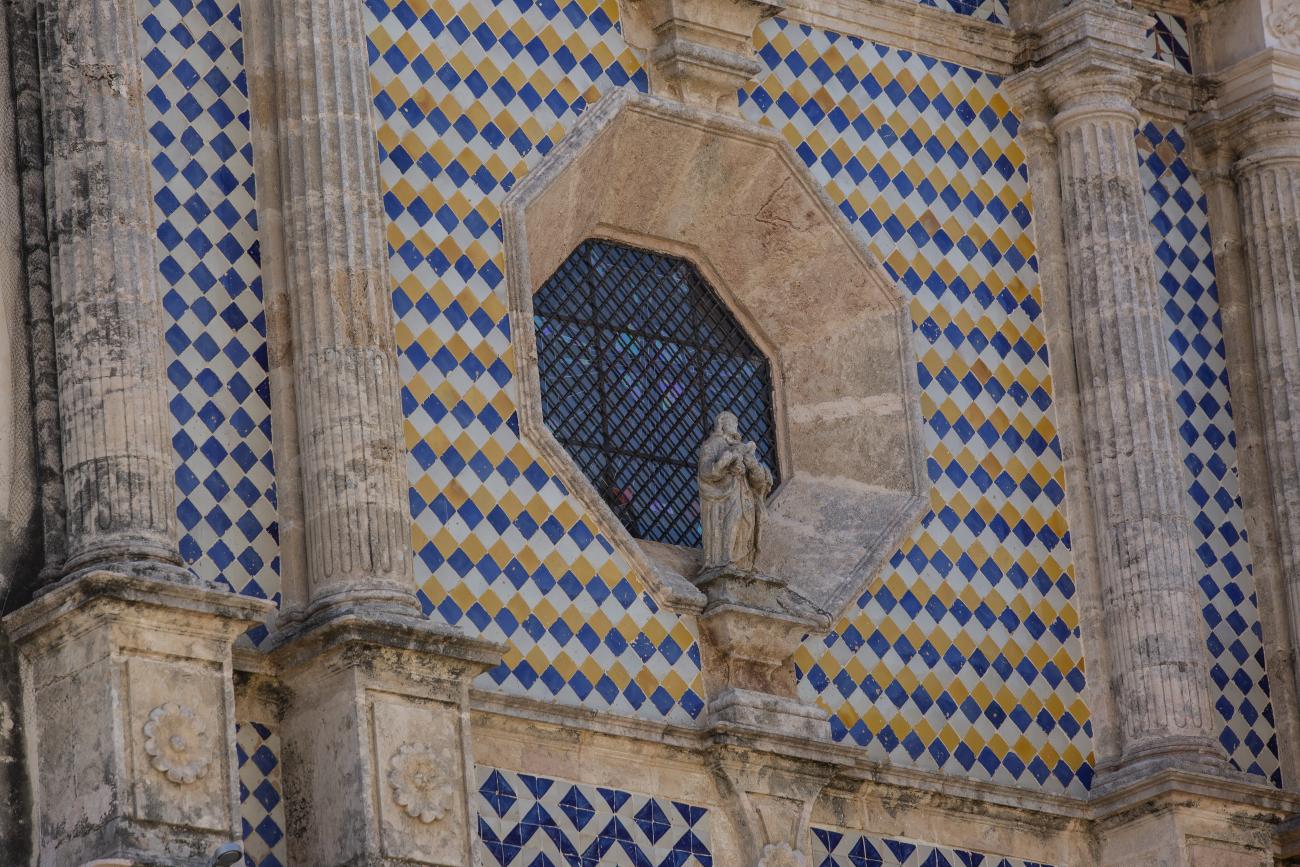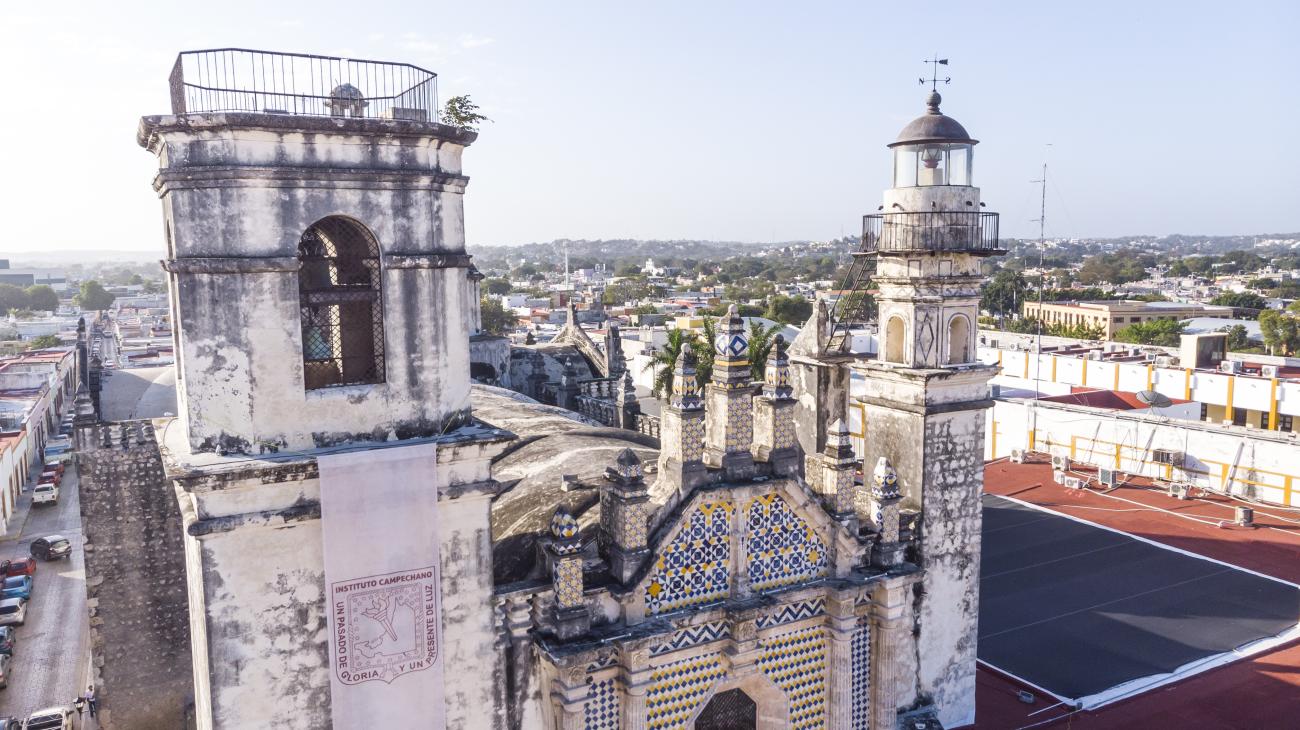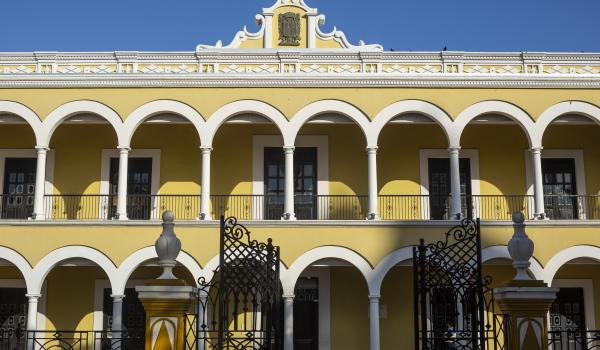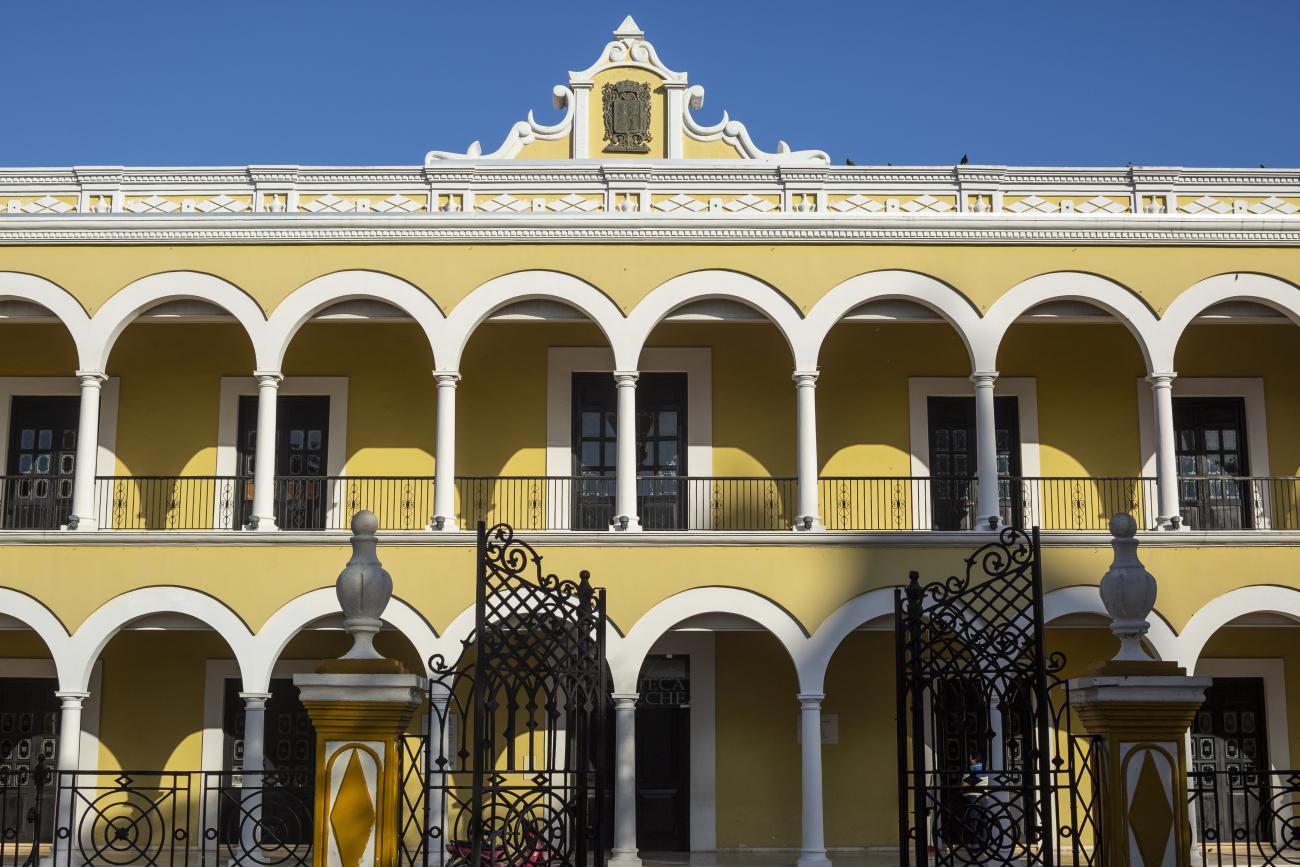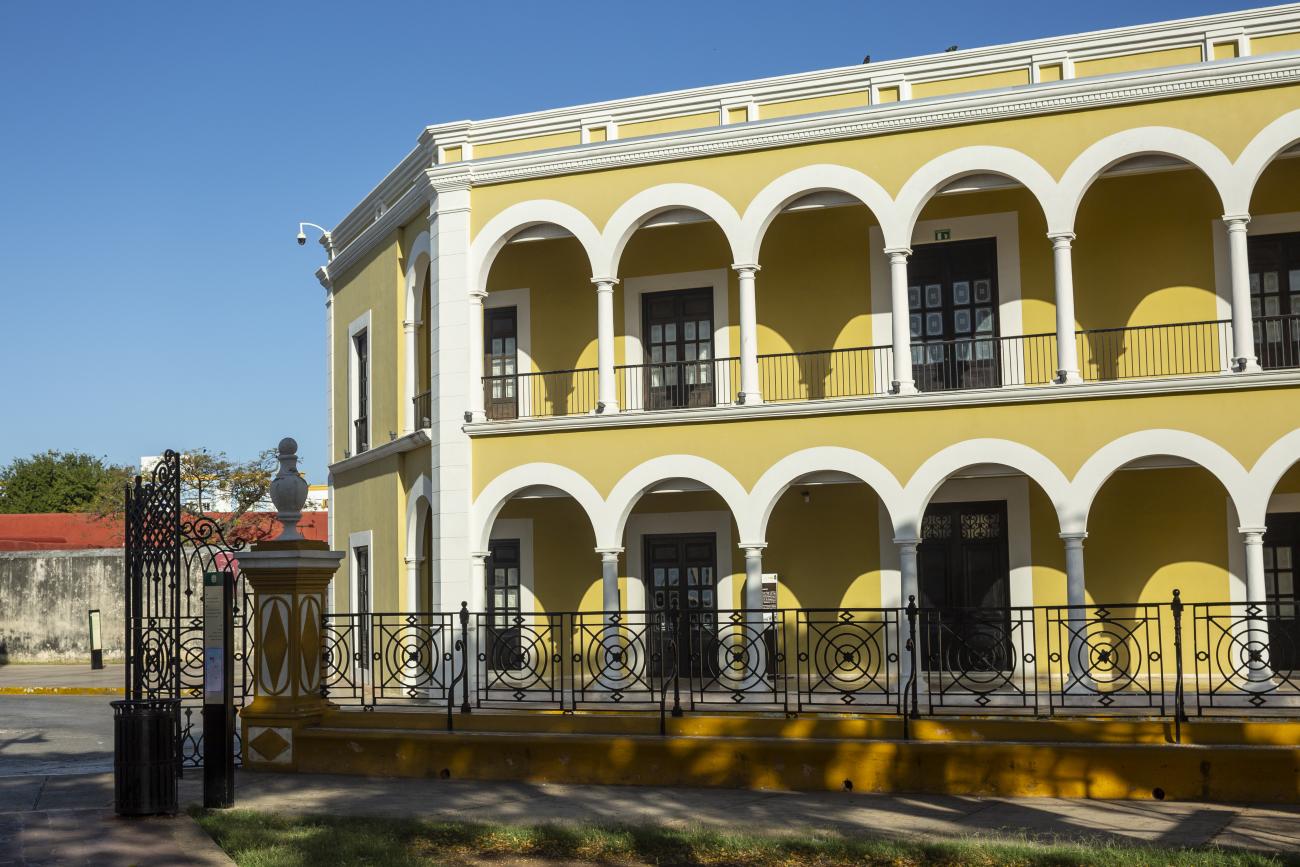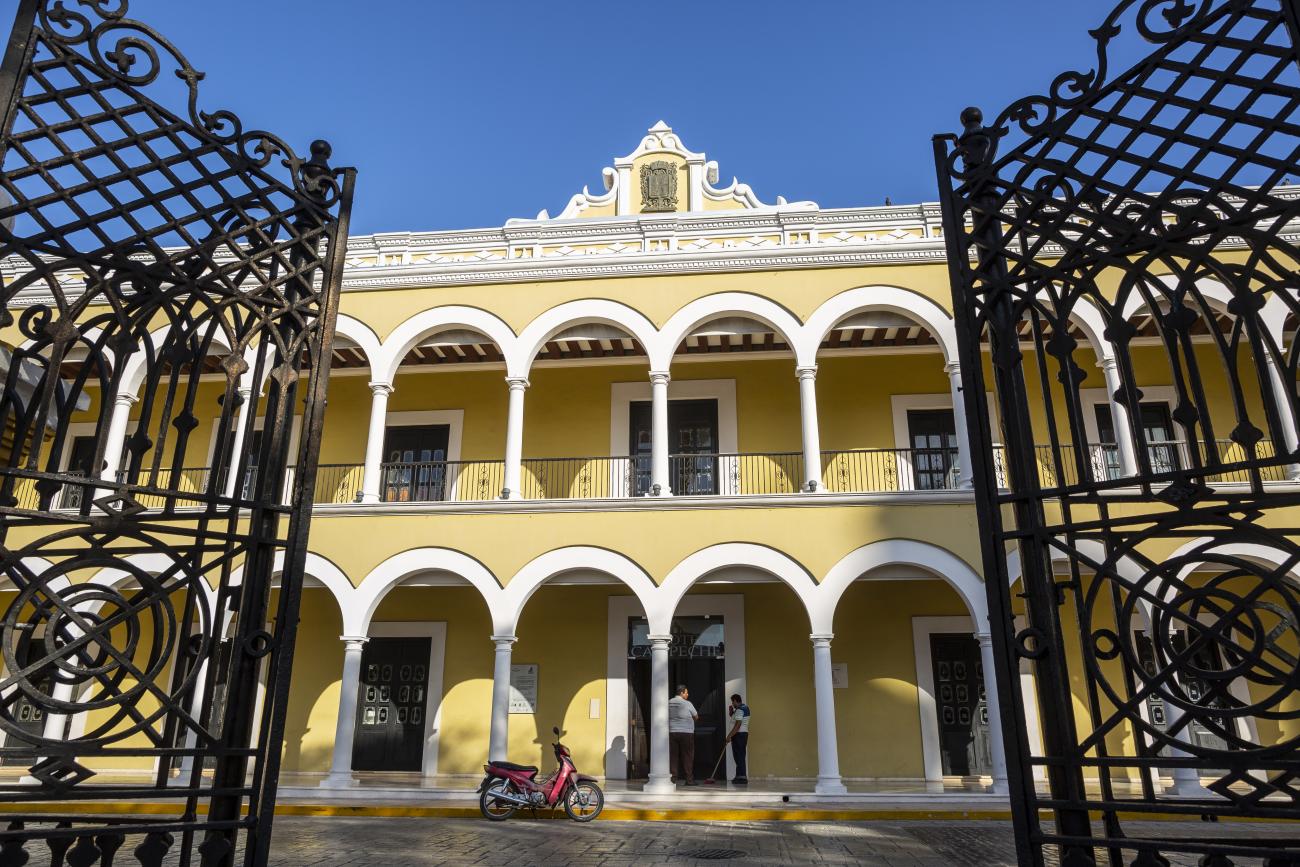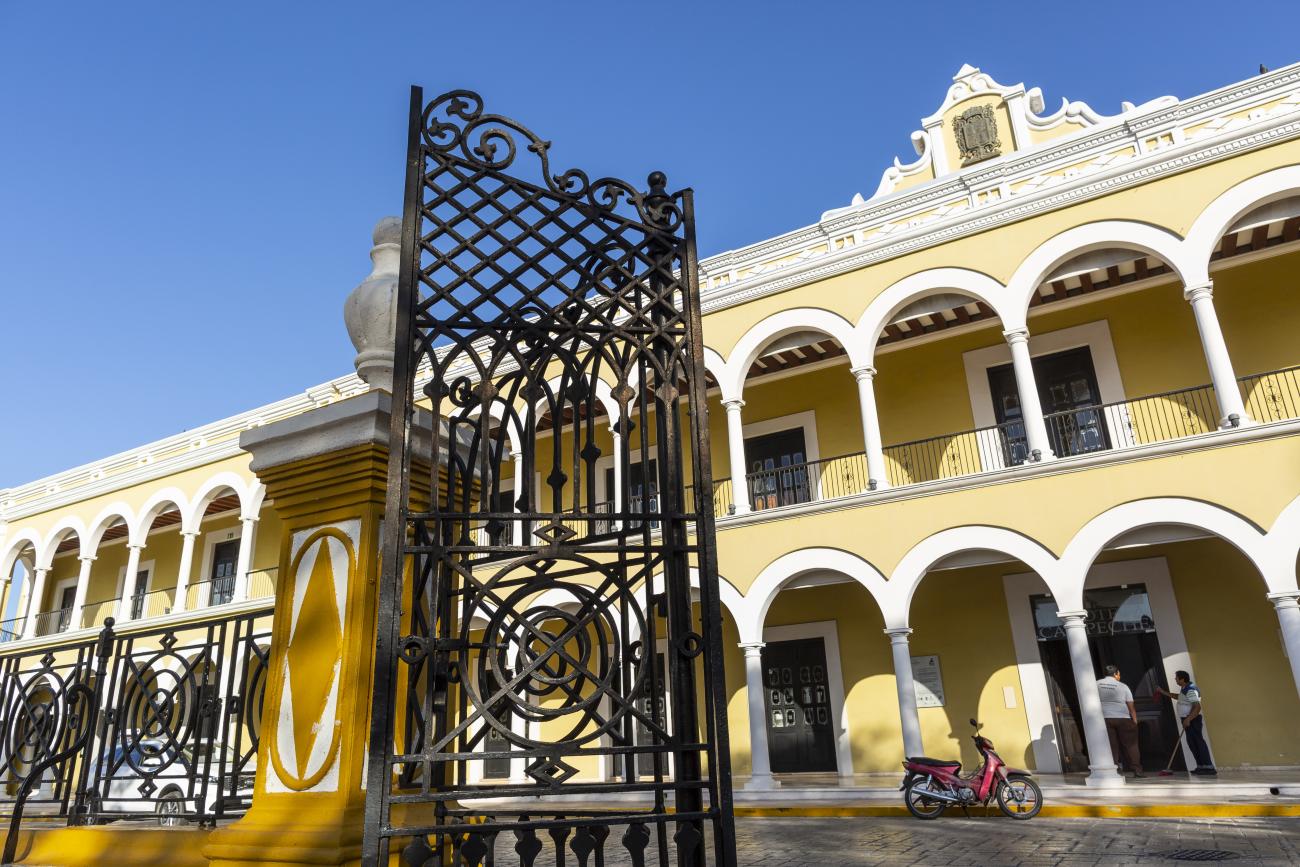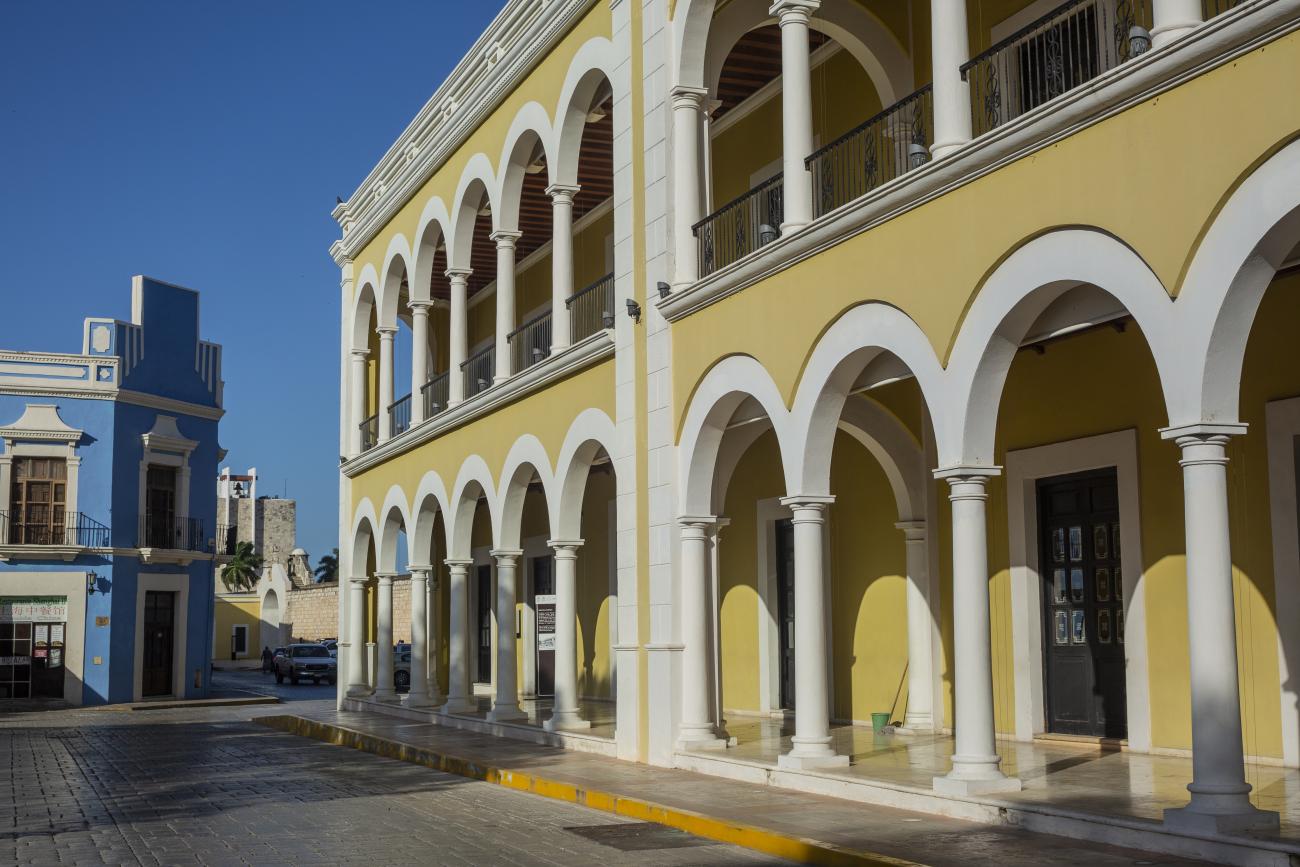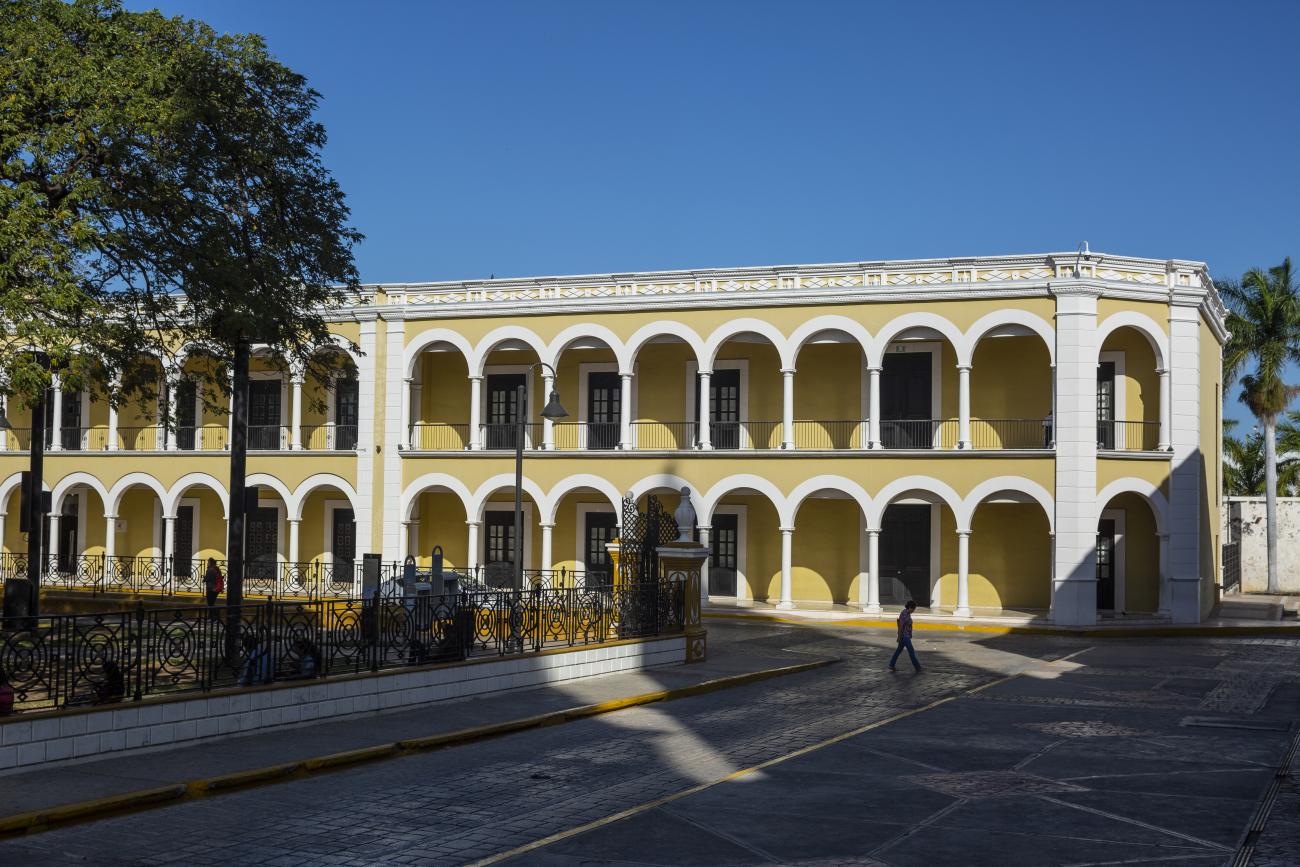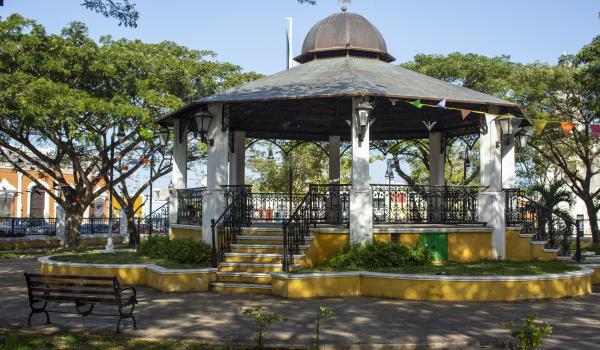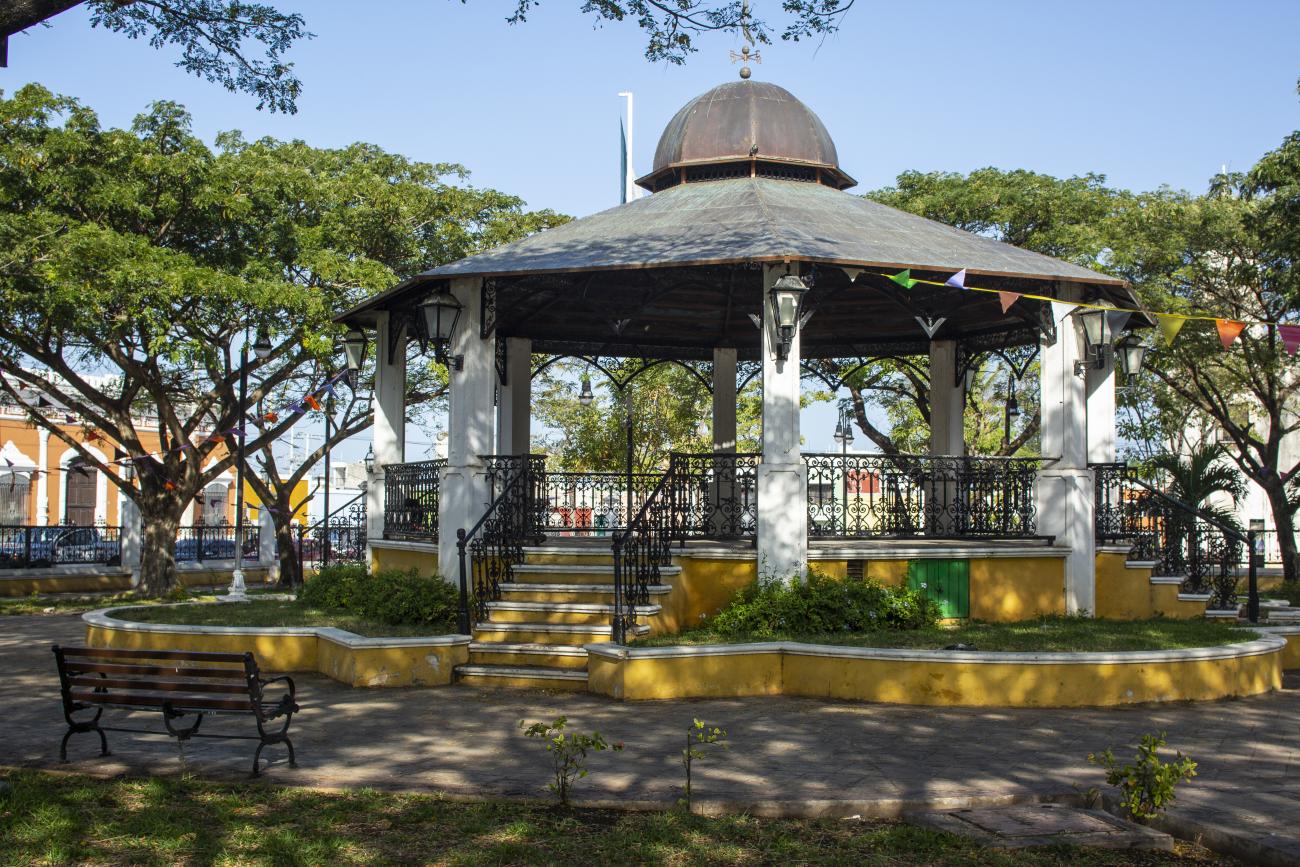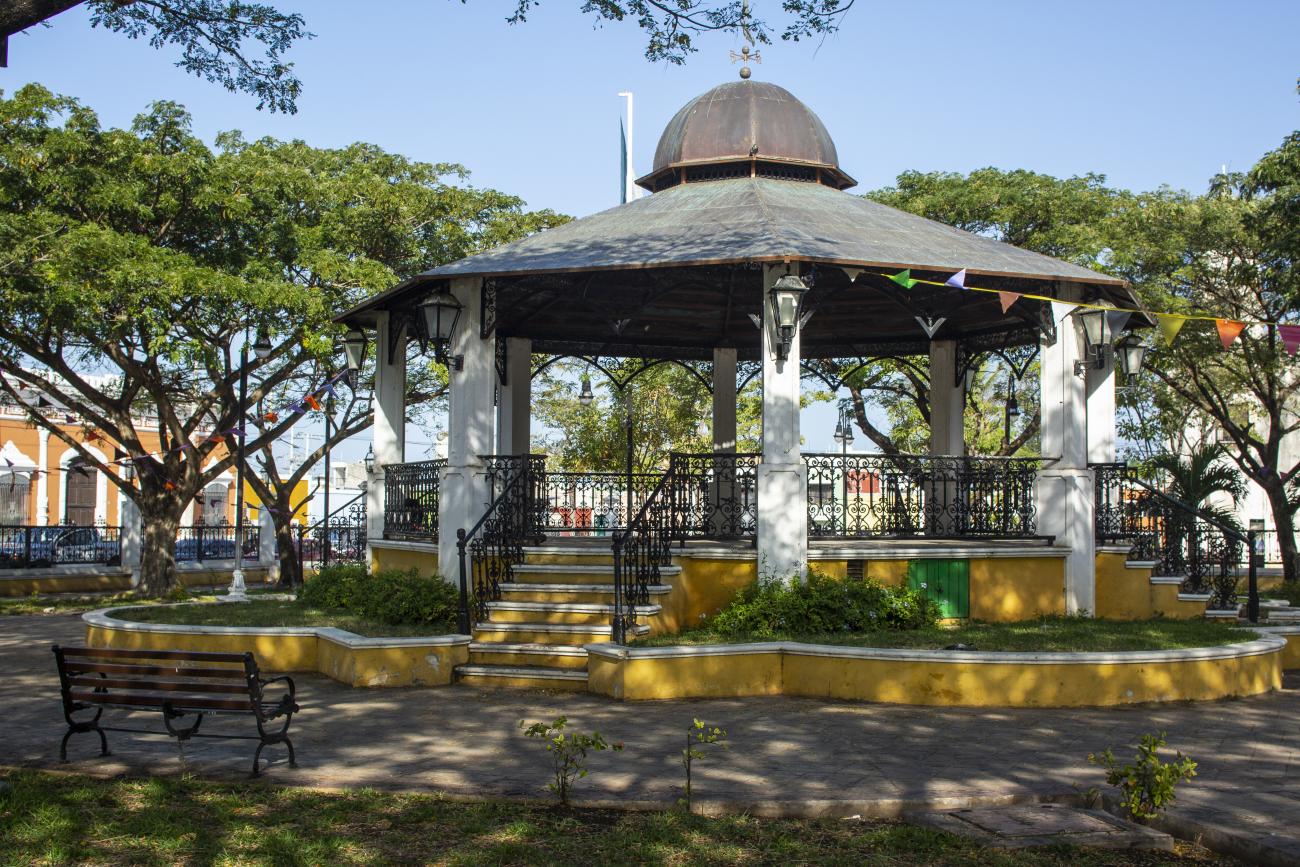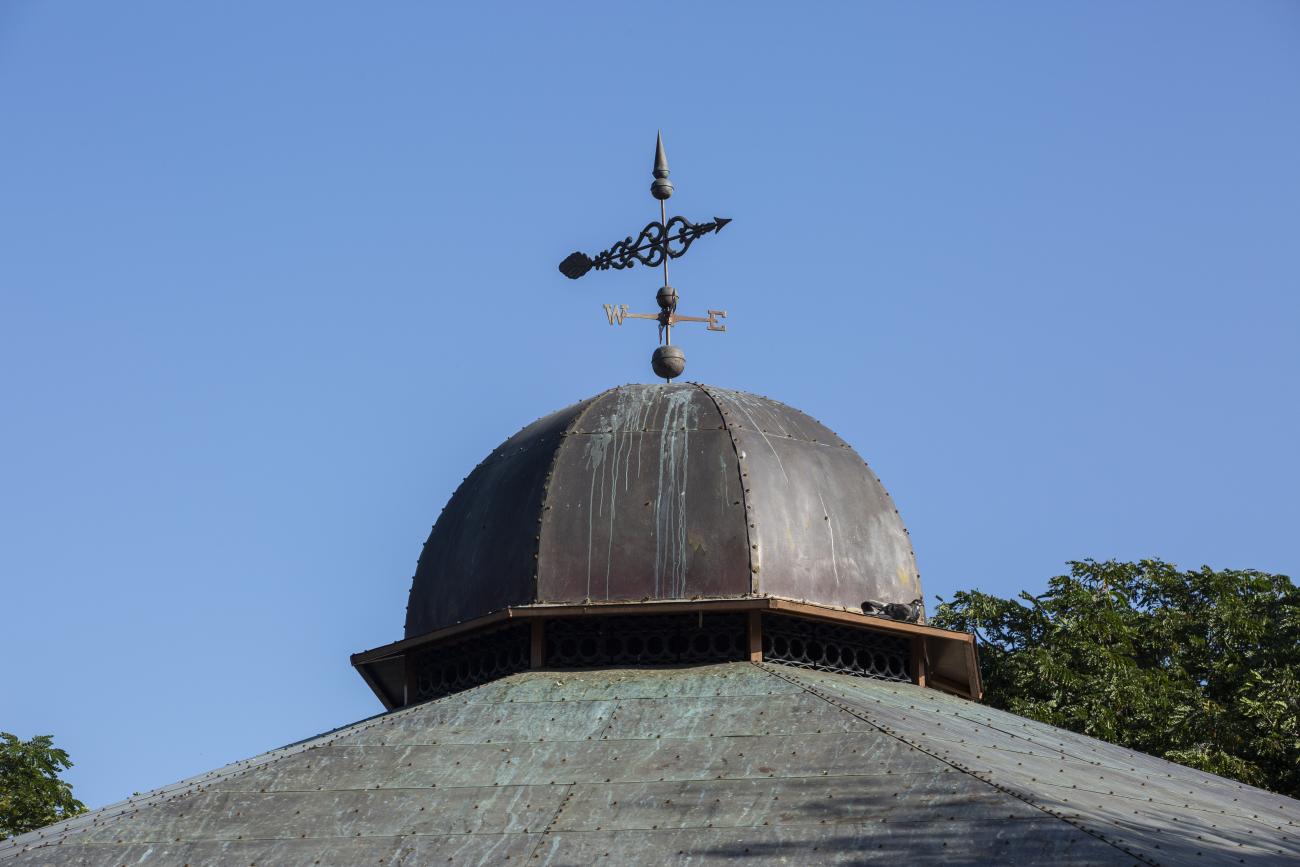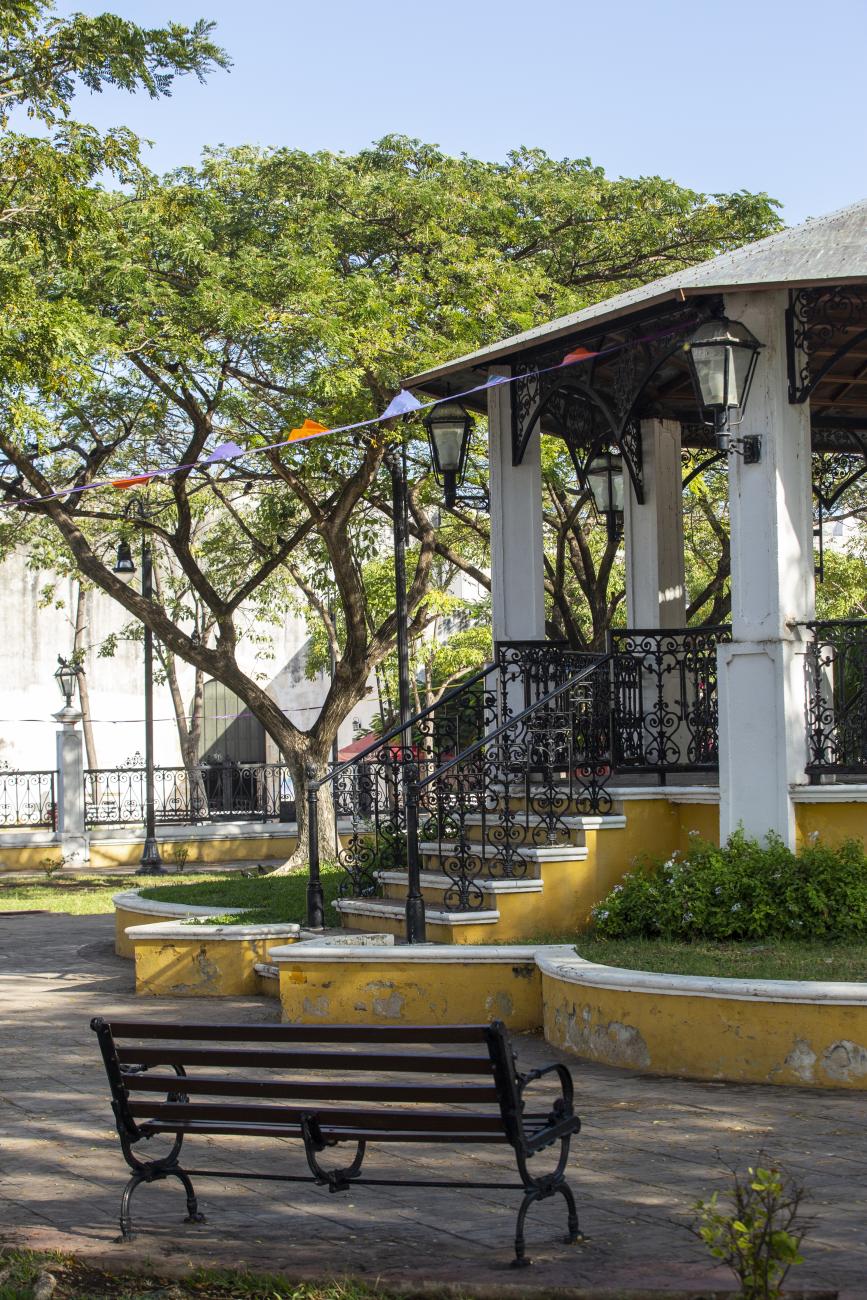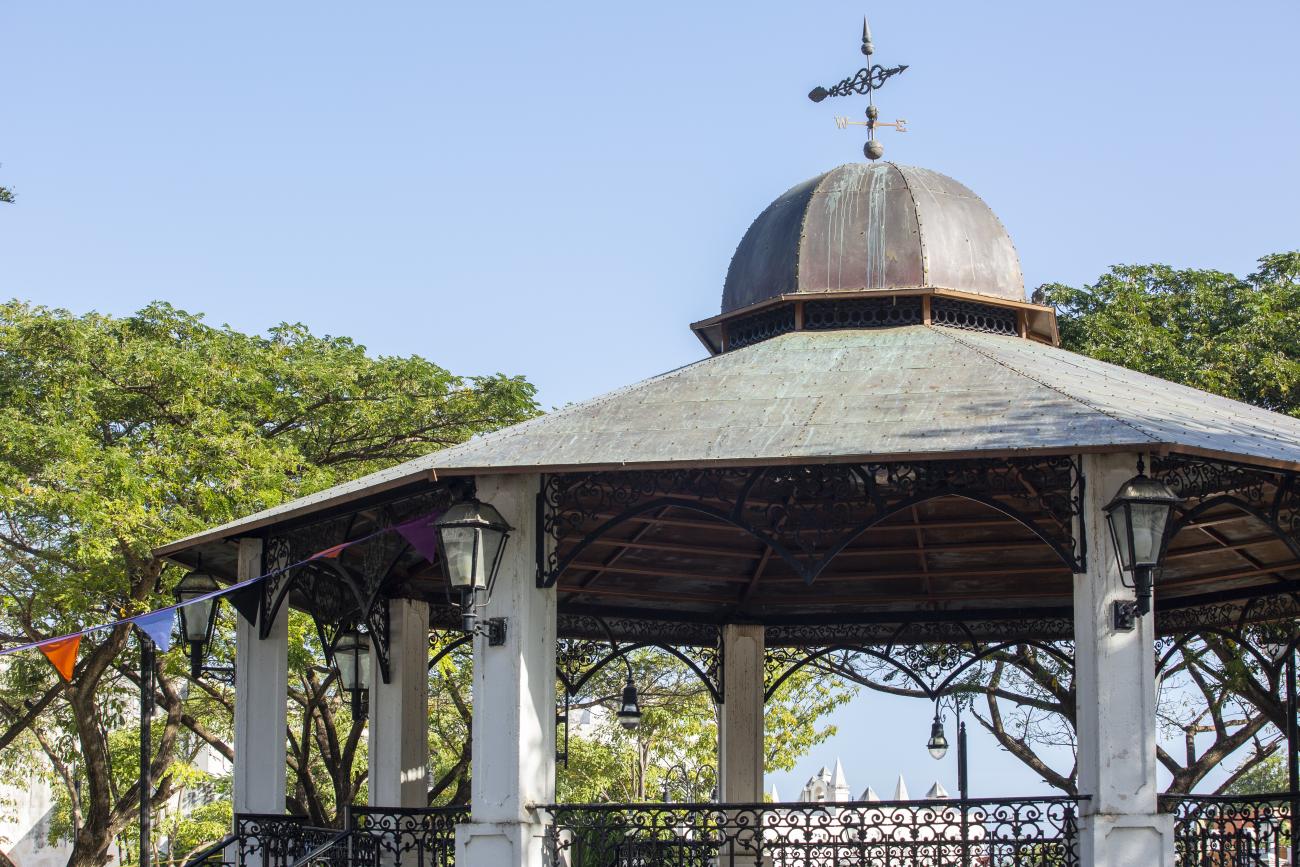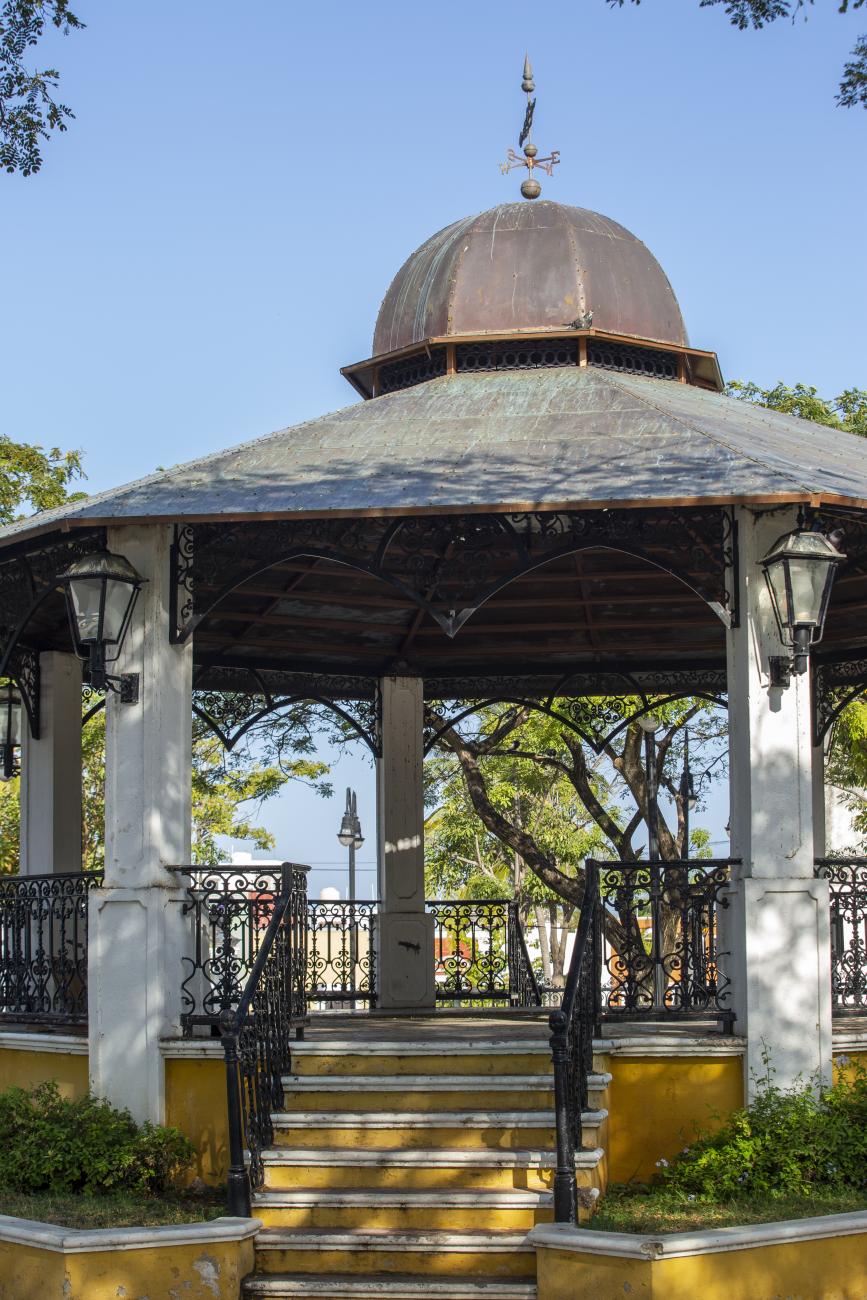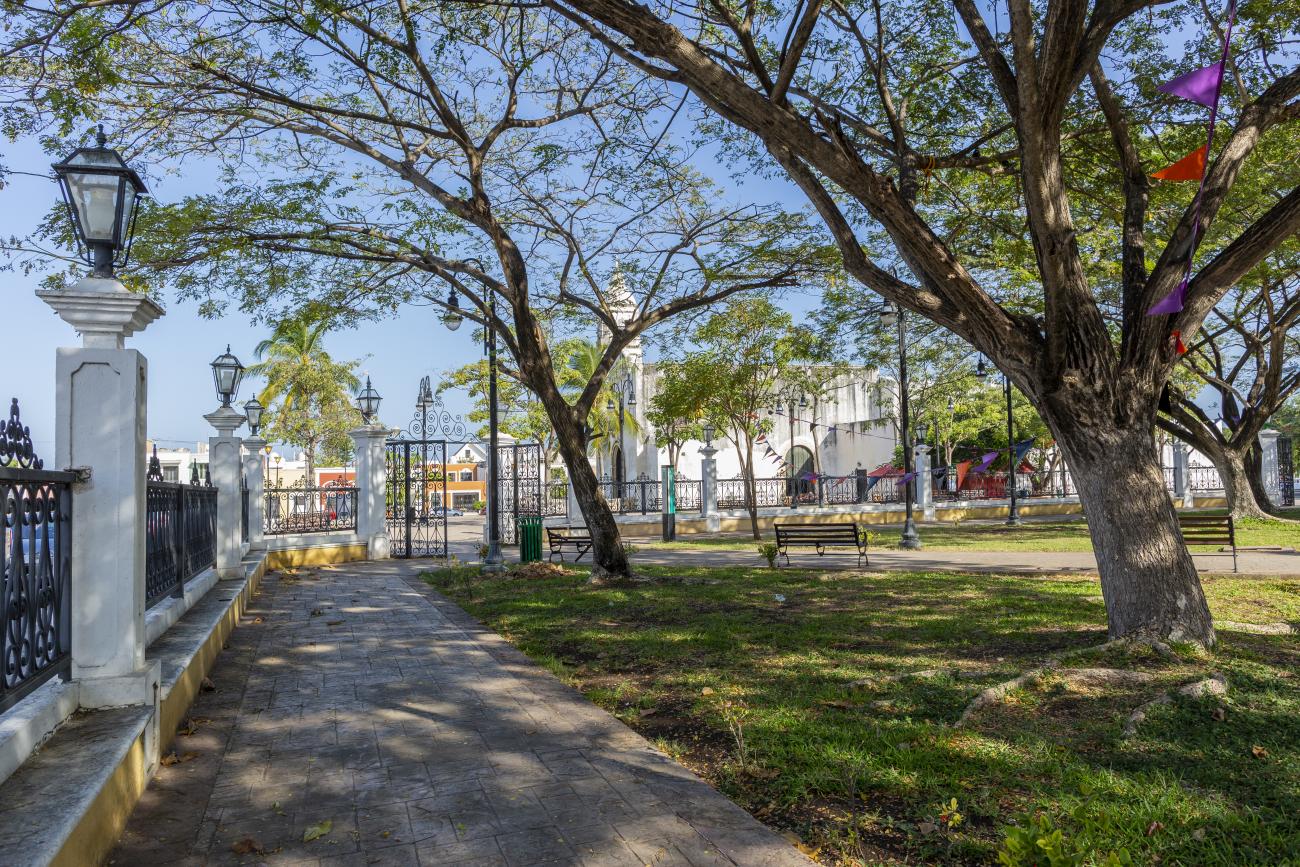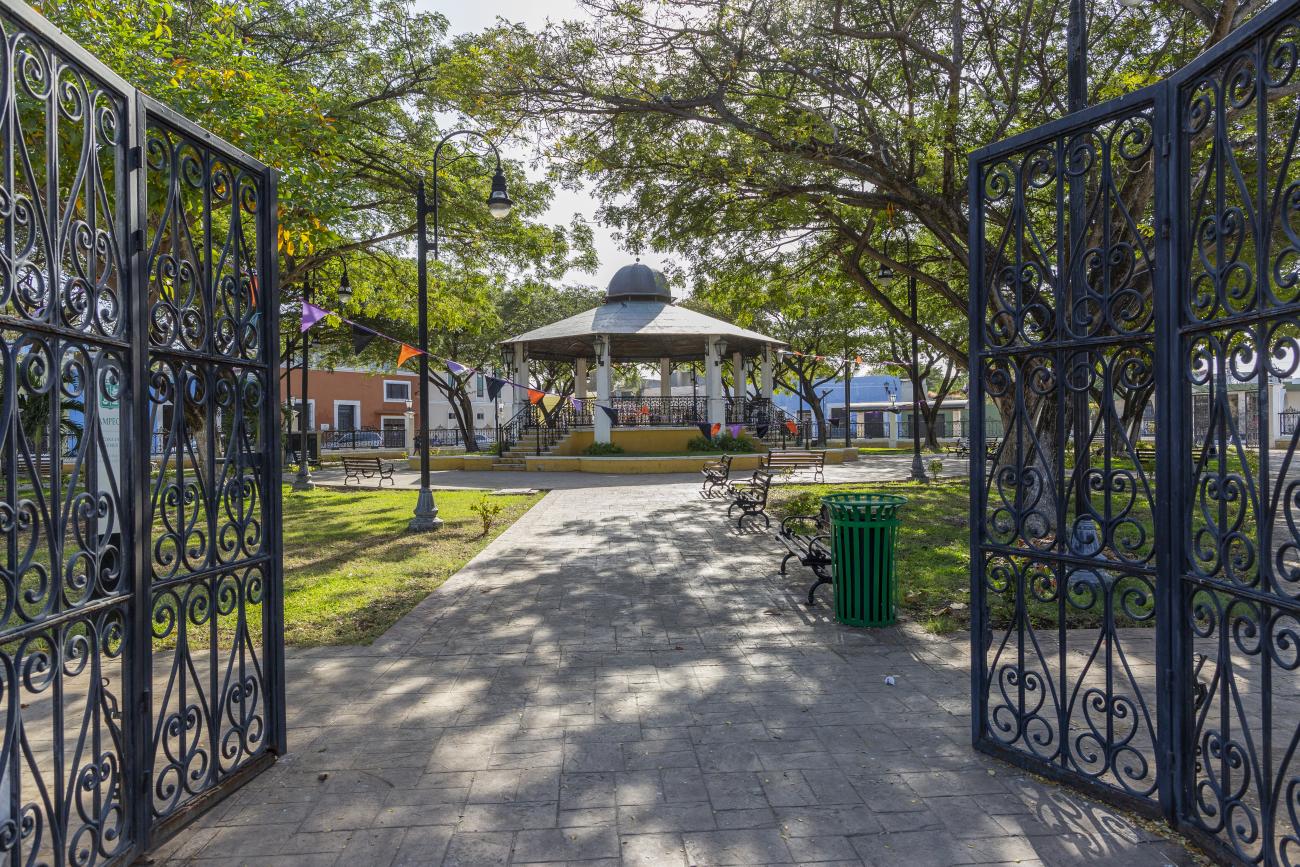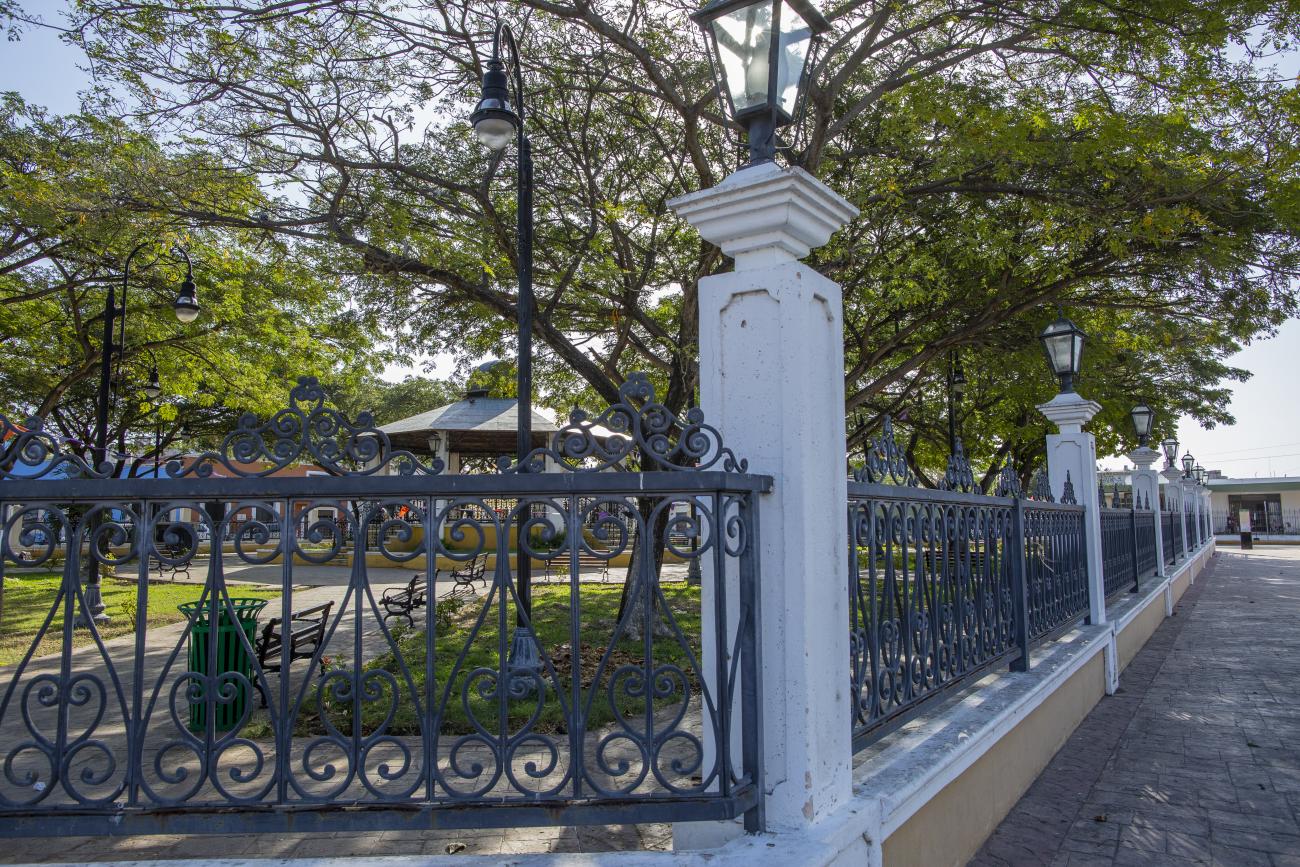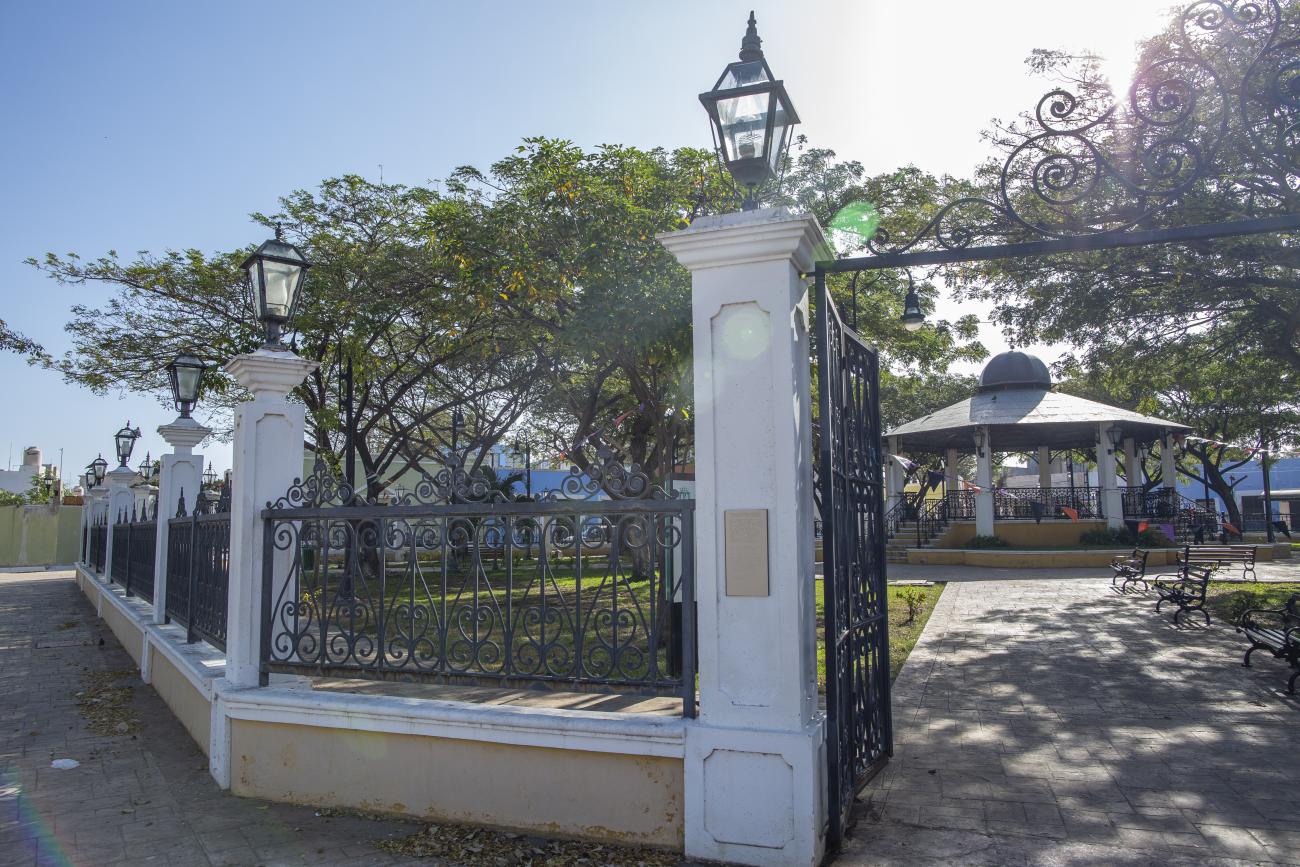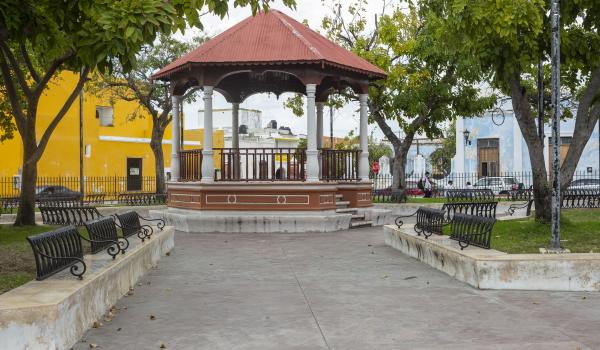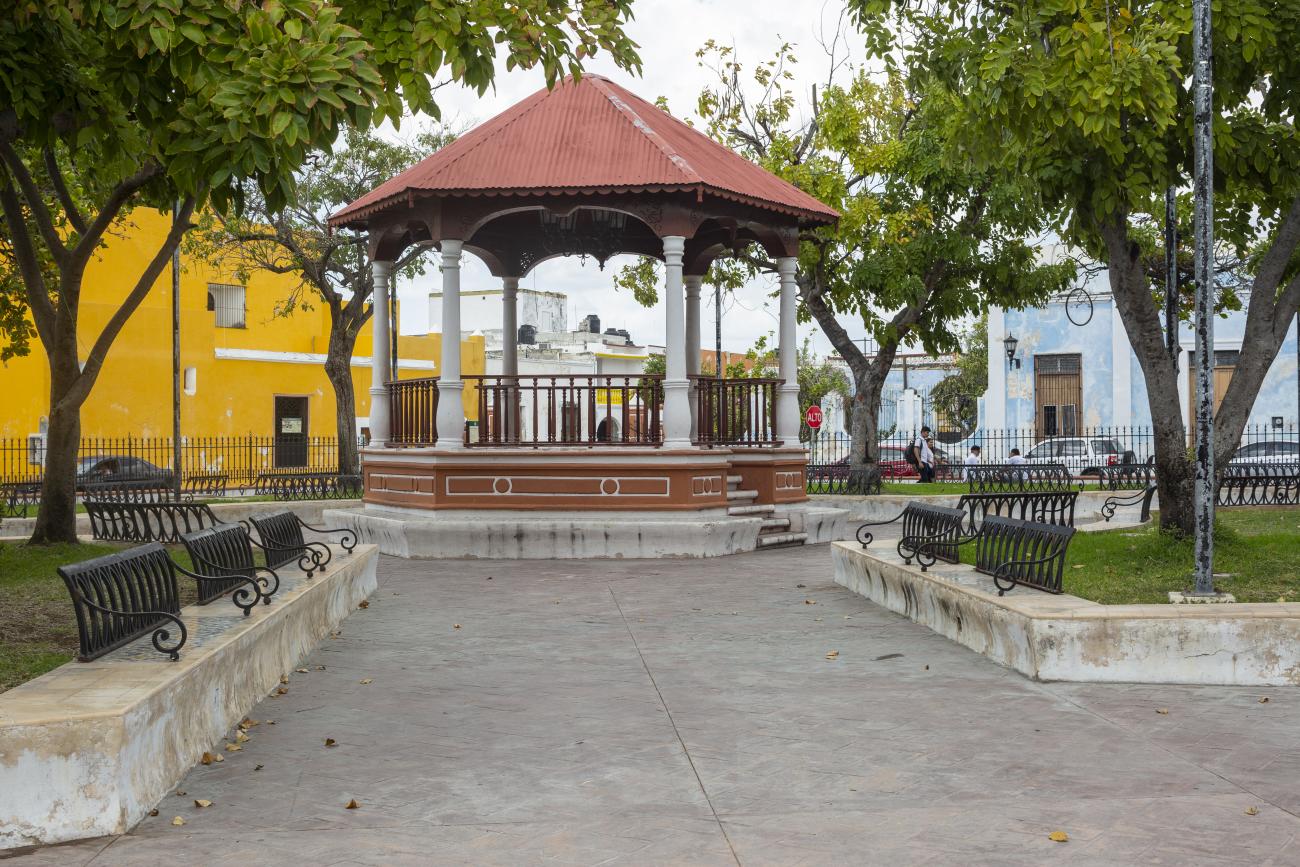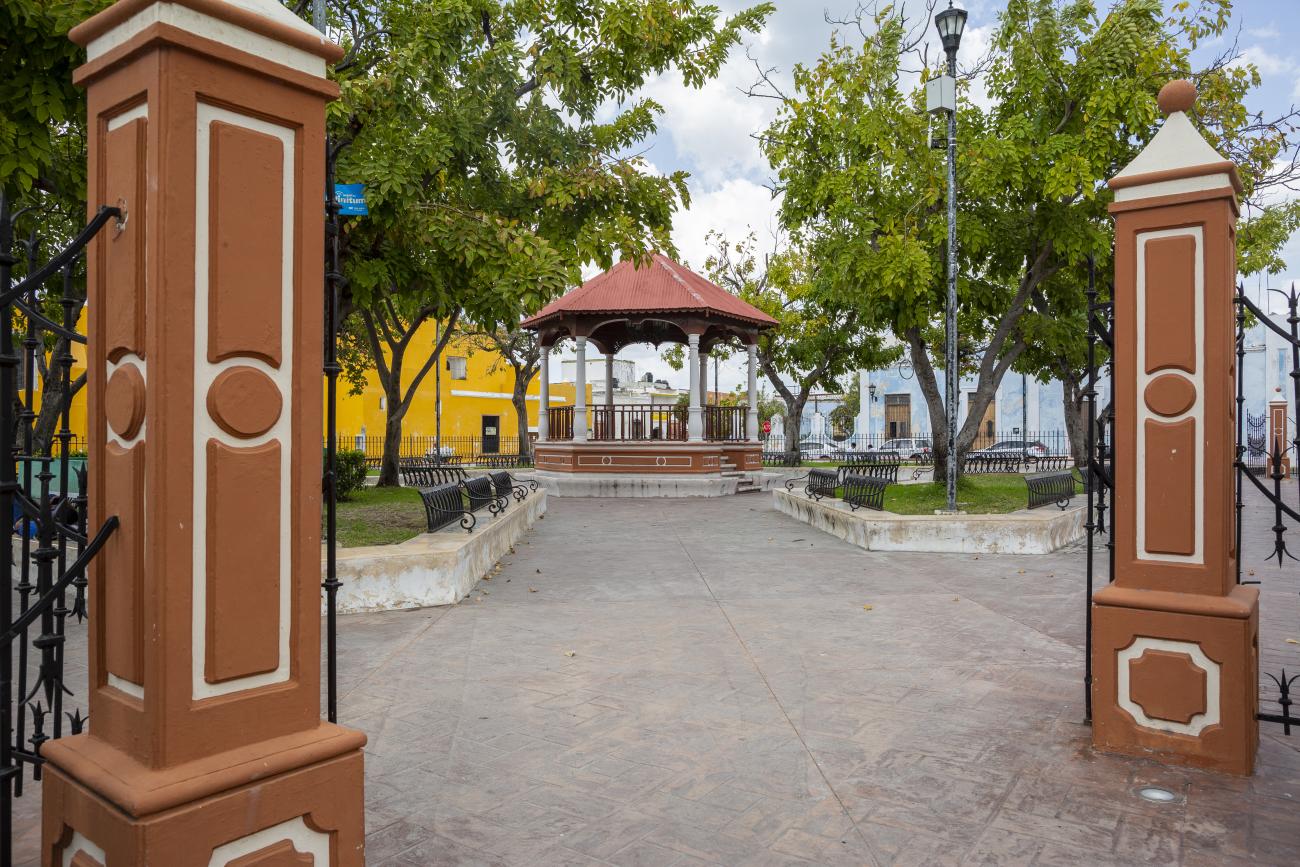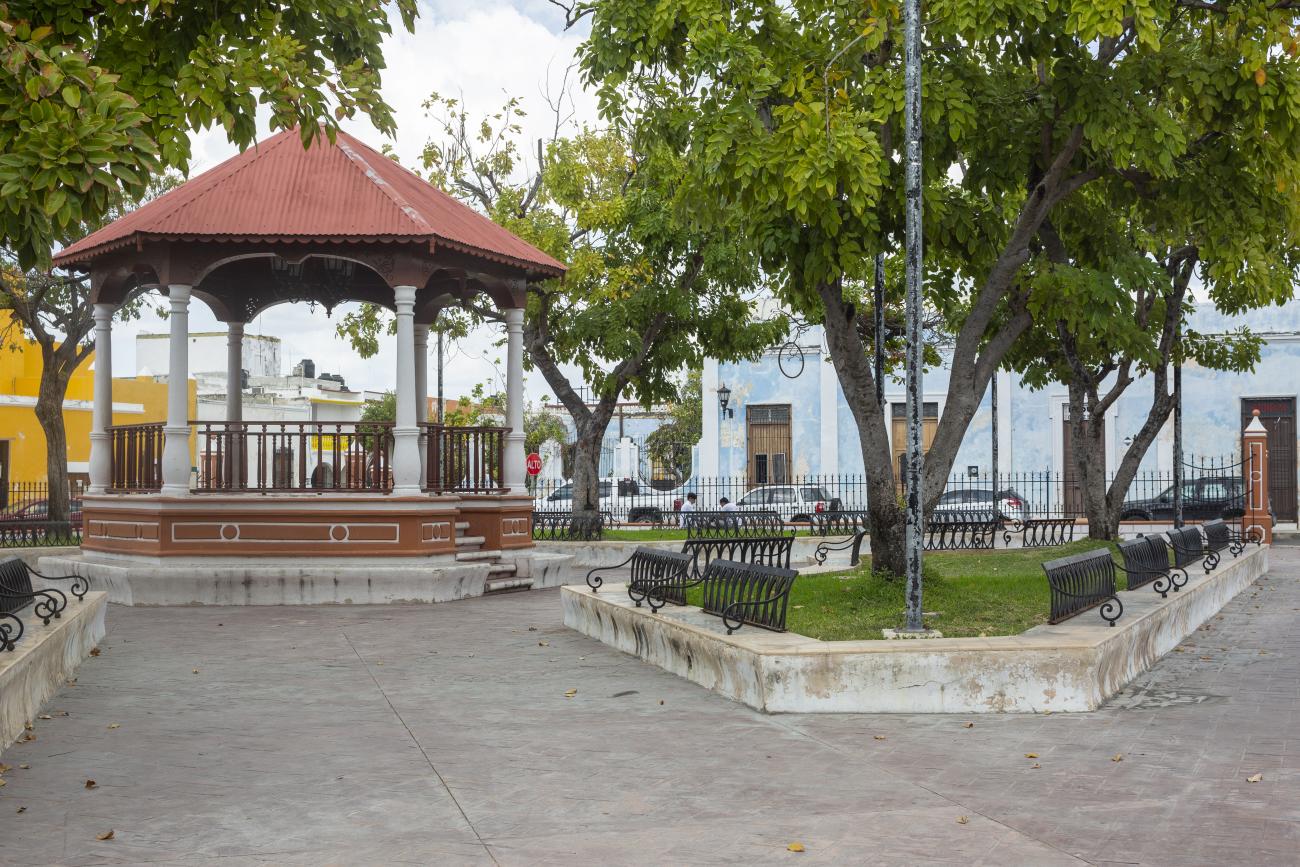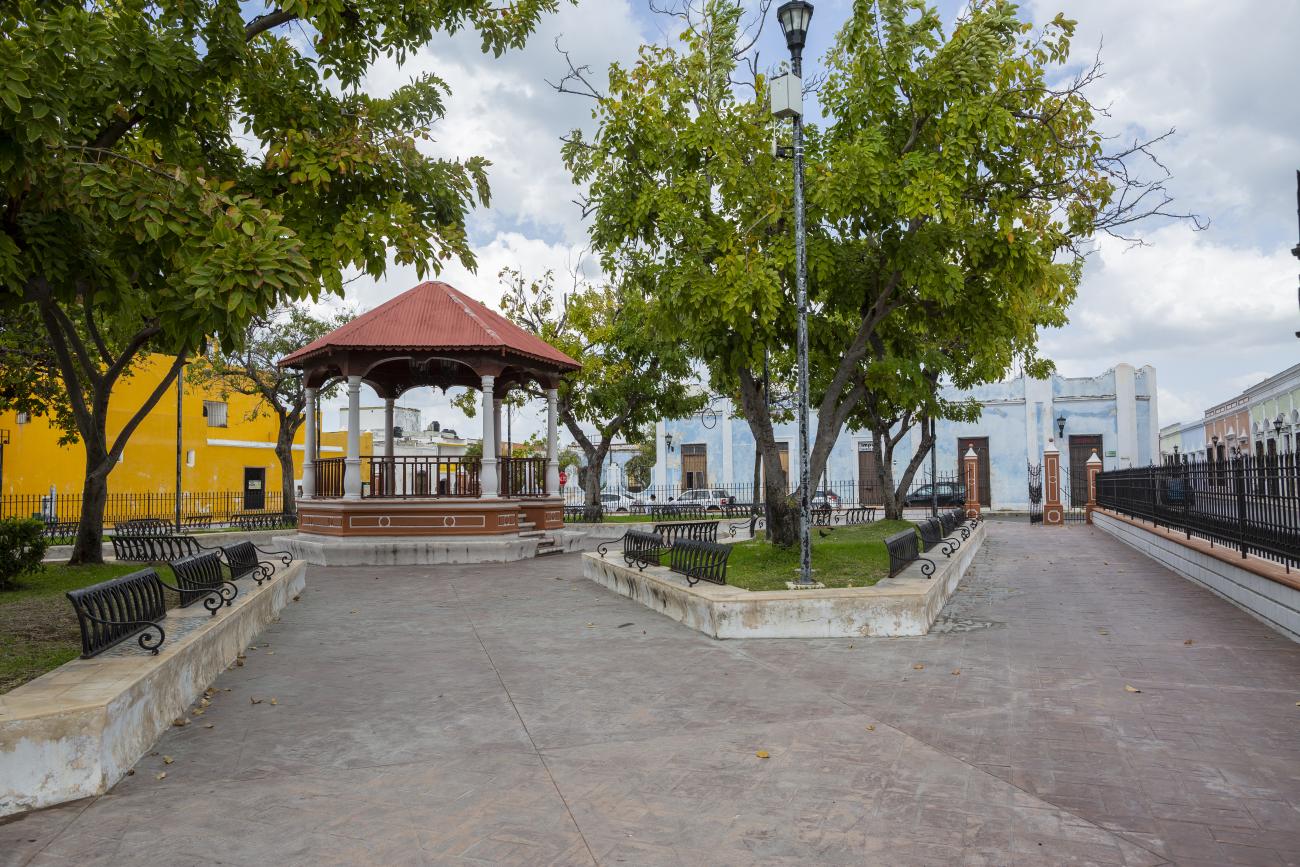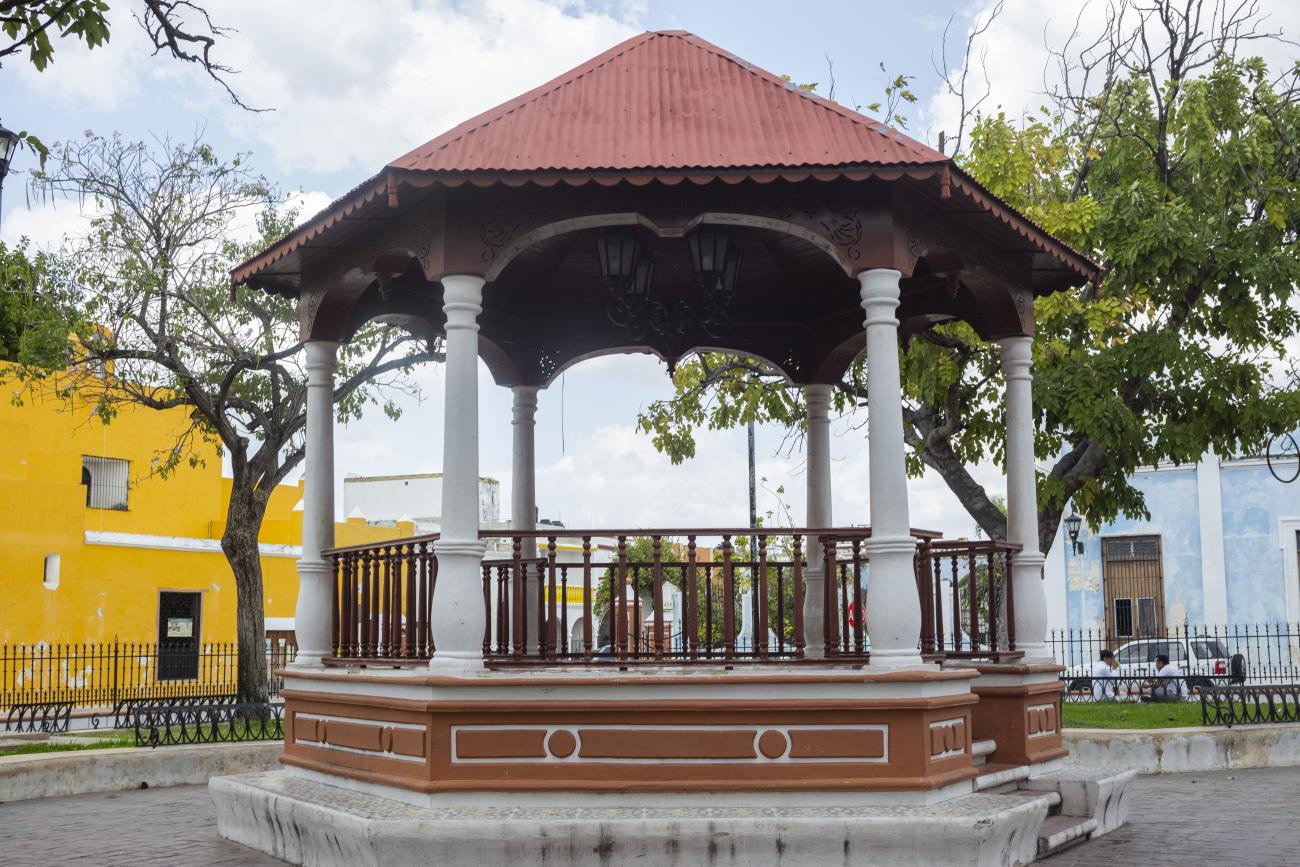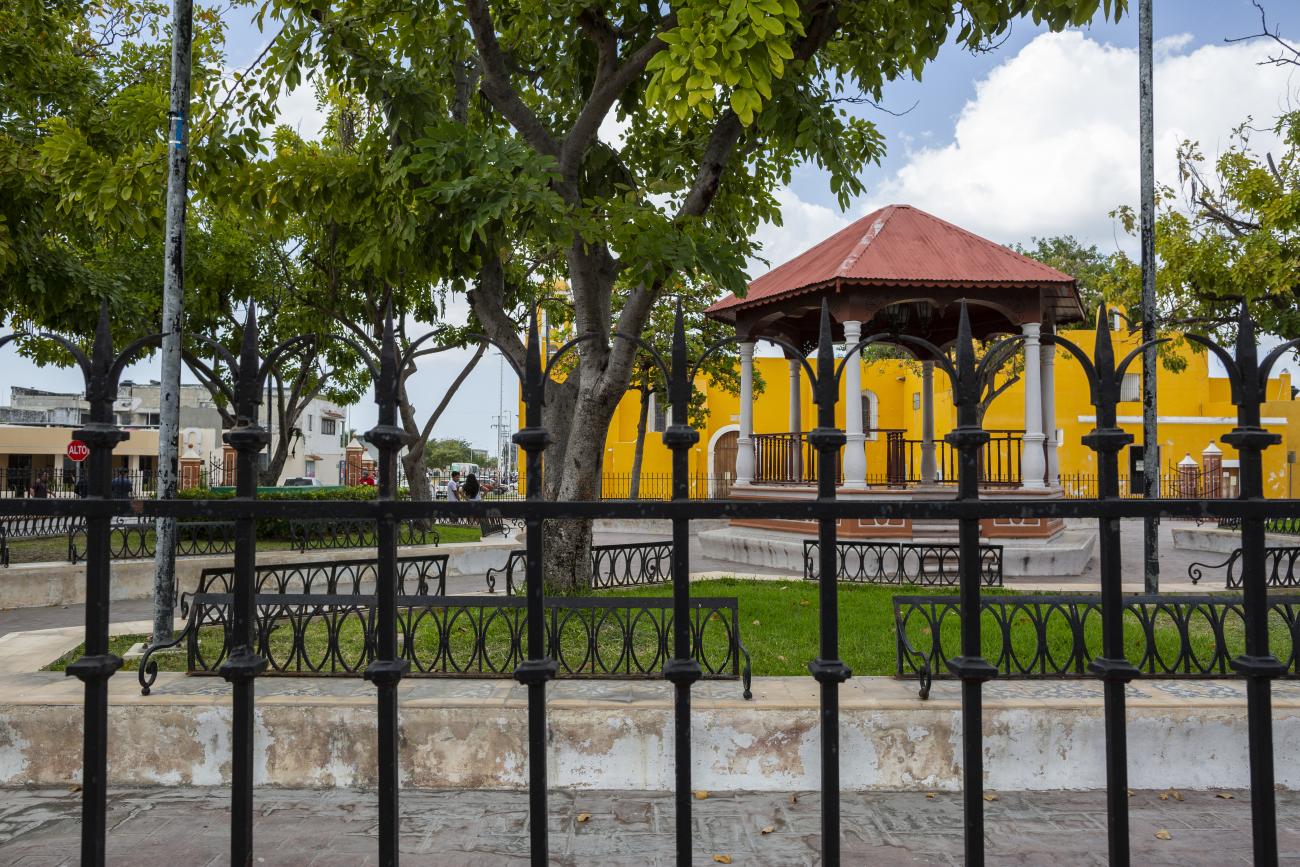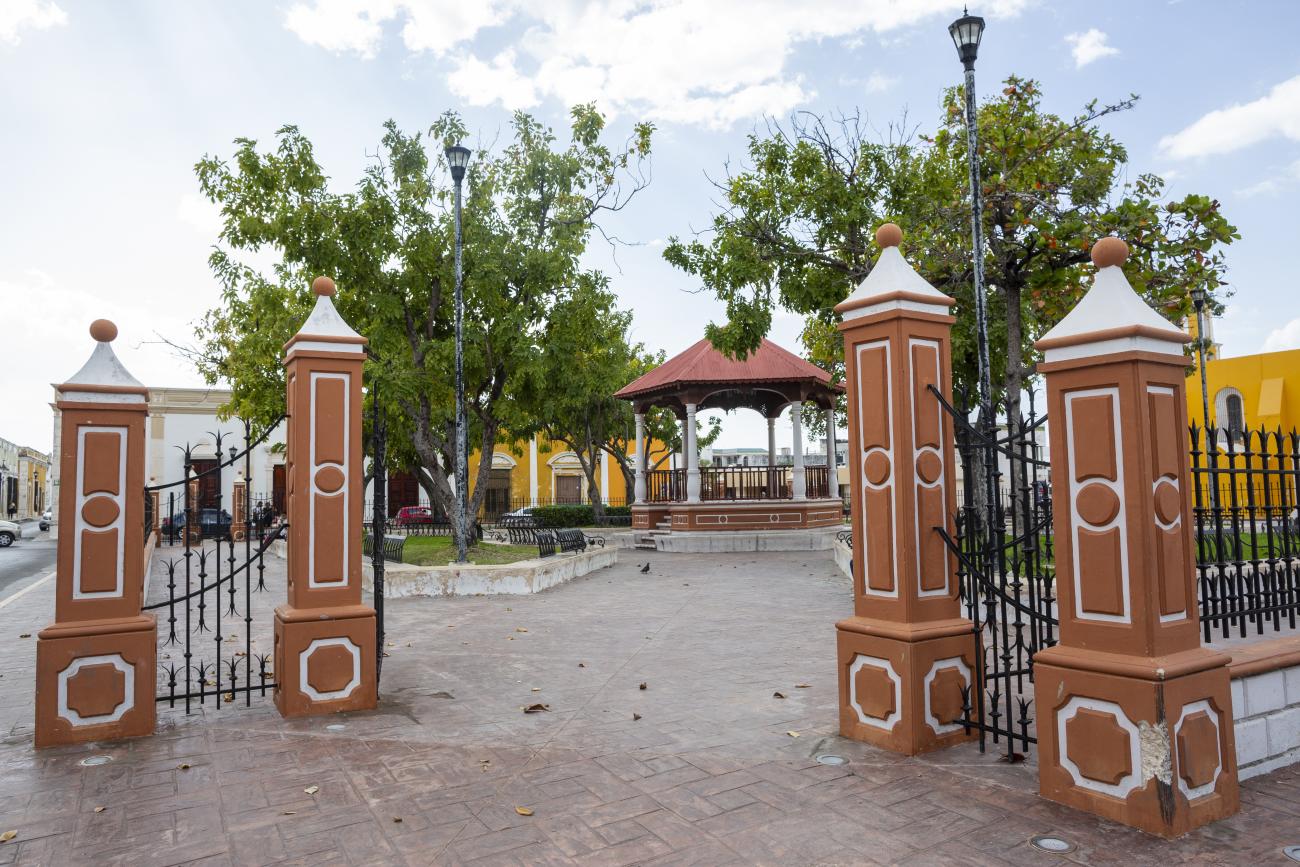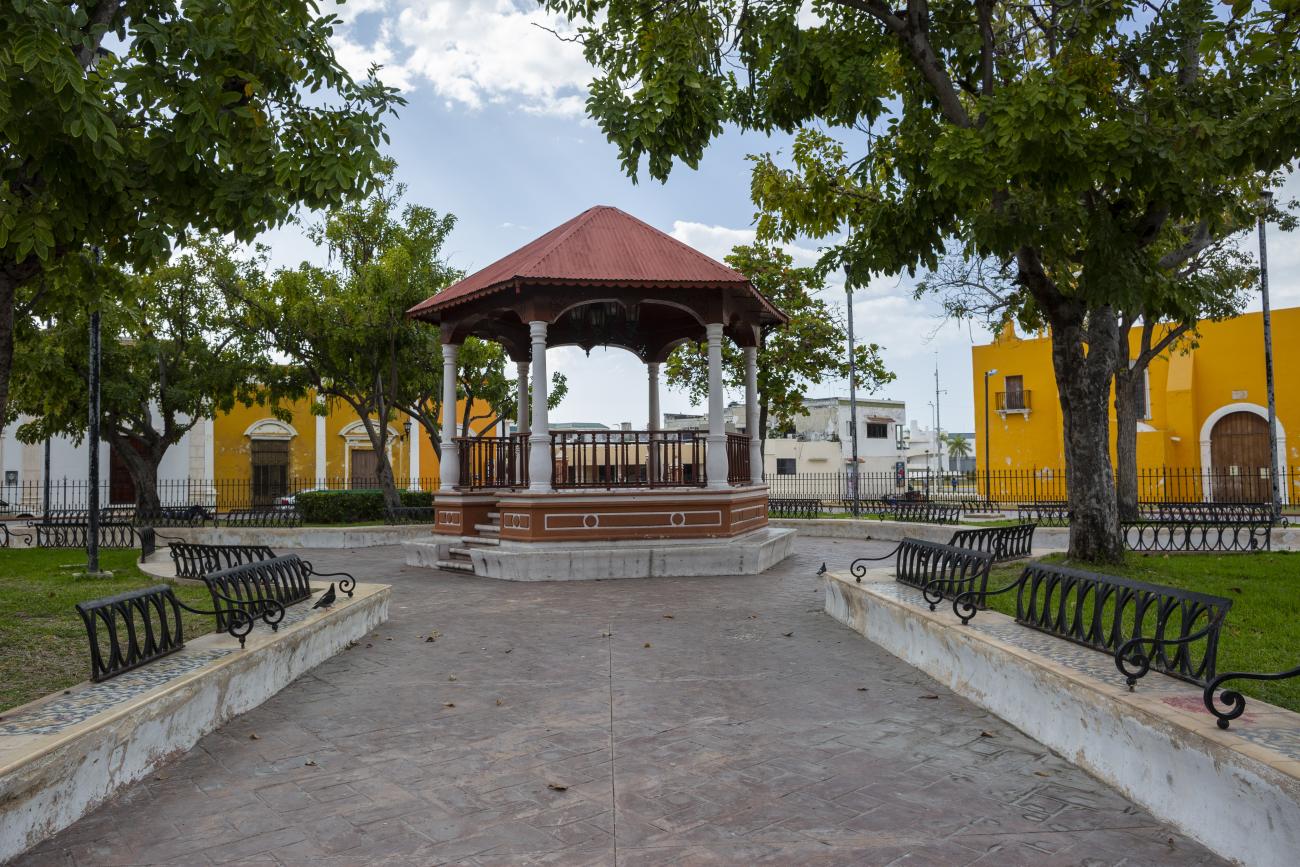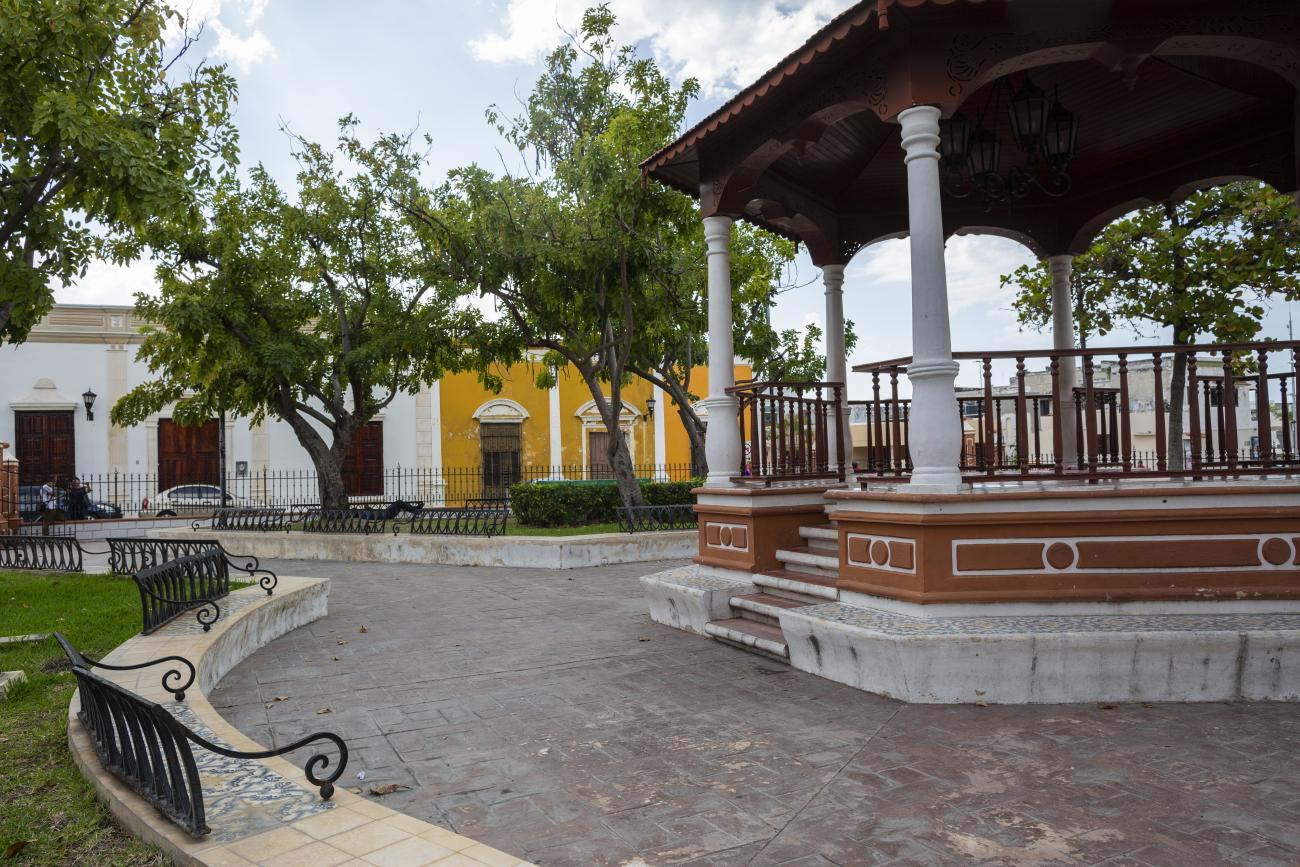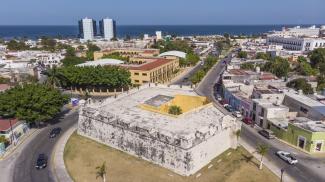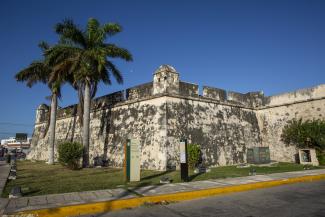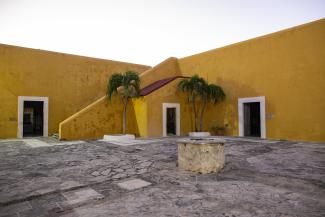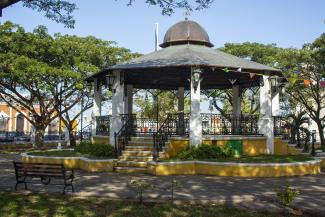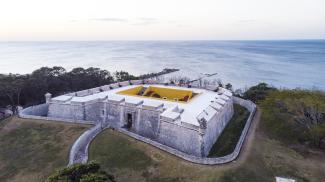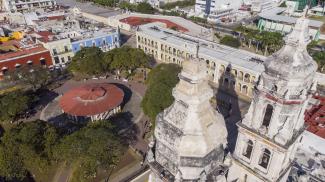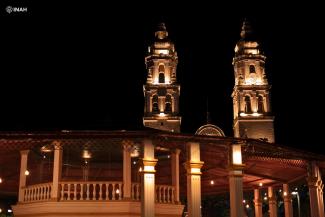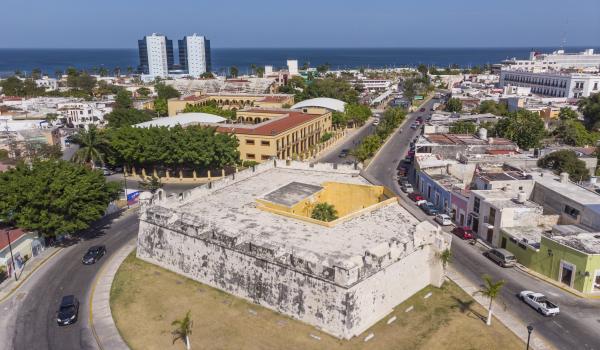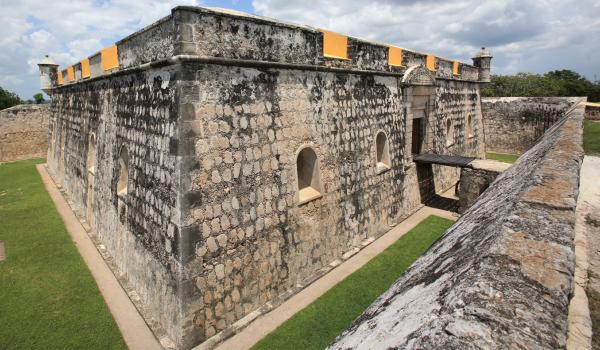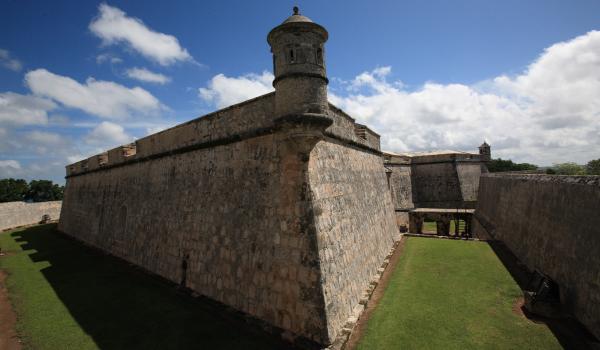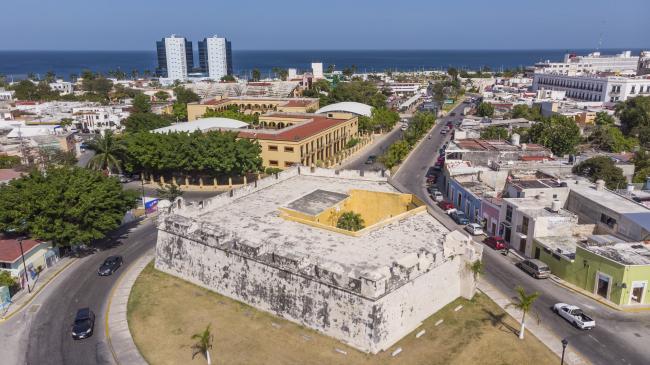The only well-preserved walled city in Mexico. Its strategic geographical position made it an important point of arrival for evangelizing monks, pirates and merchants.
Campeche
The capital of Campeche is located west of the Yucatan Peninsula and was founded in 1540 in the Mayan settlement of Ah Kim Pech, which gives us the present-day name of Campeche. Given its character as a port, it was the starting point for the conquest and evangelization of the peninsula. Three men of the same name, Francisco de Montejo ‘the Adelantado’, Francisco de Montejo ‘the Sobrino’, and Francisco de Montejo ‘the Mozo’ founded the town of San Francisco de Campeche.
The natural wealth of the region, which includes the logwood tree, used for making dyes, and precious woods, made Campeche one of the viceroyalty’s most prosperous economic hubs between the 17th and 18th centuries. The port was attacked several times by pirates; this is the reason for the wall that protects the city.
Once Francisco de Montejo y León “the Mozo” was established in Campeche, this became his base of operations for the conquest of Yucatán. The Spanish lived around the square, in the present-day district of San Román, while the indigenous people remained in the old pre-Hispanic settlements in the present-day districts of San Francisco and Siete de Agosto.
The historical core of Campeche stands out as a model of urbanization for a Baroque colonial city; it was declared a Zone of Historical Monuments in 1986 and inscribed on the UNESCO World Heritage List as a Historic and Fortified City in 1999.
The historical area comprises 1.81 km2 and is made up of 163 blocks with historical buildings built between the 16th and 19th centuries, of which some were destined for religious worship such as the churches of San Román, San José, San Francisquito, Jesús Nazareno, Nuestra Señora de la Concepción, del Dulce Nombre de Jesús, San Juan, Santa Ana, Santa Lucia, San Francisco, Our Lady of Guadalupe and the Hermitage. Other buildings were intended for educational purposes and welfare services, as well as for civil, ecclesiastical and military authorities, together with private homes, which combine various architectural styles.
One of the most important complexes is the San Román church, located in the neighborhood of the same name, where the Black Christ is found. Meanwhile, the Church of Our Lady of Guadalupe was the second in the country to be dedicated to the Virgin of Guadalupe, after the one located on Cerro del Tepeyac in Mexico City.
Some chronicles relate that the first mass on mainland America was held in the place where the church of San Francisco is currently located; however, the current construction dates from 1546. Other areas of colonial architecture that stand out are: the House of Culture, the Carvajal Mansion and the House of the Teniente de Rey.
The center of the city is characterized by a well-defined plan dating from the 16th and 17th centuries, within the area protected by the wall. Outside of the walls the streets form a grid. In the Zone of Historical Monuments, single-level constructions predominate, except for the walled enclosure where two-level buildings abound.
The wall is an emblem of the urban landscape of the city: in its center different races, religions and cultures were mixed, a blending that today is expressed in the city’s festivals, traditions, customs, religious expressions, food, poetry, music and dances, which are a cultural heritage of humanity. The construction of this wall was a result of piracy in the mid-16th century. The development of piracy in the seas of the Americas was an extension of the battles fought in Europe, and in fact was boosted by the monarchs who encouraged the shipowners and experienced captains to sail to the waters of the New World by giving them a “letter of marque,” which was effectively a means of legalizing theft at sea.
The fight by England and France to wrest commercial and political dominance from Spain encouraged the use of privateers and pirates who operated on the shores of Campeche from 1557, and a year later took over the Laguna de Terminos. Several attempts were made to evict them until the Sergeant Major of Veracruz, Alonso Felipe Andrade, expelled them from the Laguna in 1716.
In the year 1686, the governor of Yucatán, Juan Bruno Tello de Guzmán, presented to the council a project to build a wall around the town of Campeche to protect it from the continuous attacks by corsairs and pirates. The proposal was accepted and money was raised with donations from the governor, the bishop of the province, the most prominent residents, and the cession by the city council of the duties that were paid for salt extraction. Both the walls and the bastions were solidly built, with curtain walls whose thickness varies between 2.35 and 2.60 meters at the base, between 2.02 and 2.27 meters at the top, with a height of approximately 8.40 meters. They included the parapet with its allure or wall walk linking the bastions around the city.
Another of the most significant buildings in Campeche is the cathedral, which was renovated in June 1987. Shortly after the work began, a cavity was discovered at the bottom of which three colonial crypts of great historical value were found. These crypts corroborate historical research on the importance of Campeche as a center for cultural exchange. It became clear that the cathedral was the key site for managing and legitimizing all the most important aspects in the daily life of the governing body of society: the imposition of names and surnames through baptism; the practice of worship and evangelization.
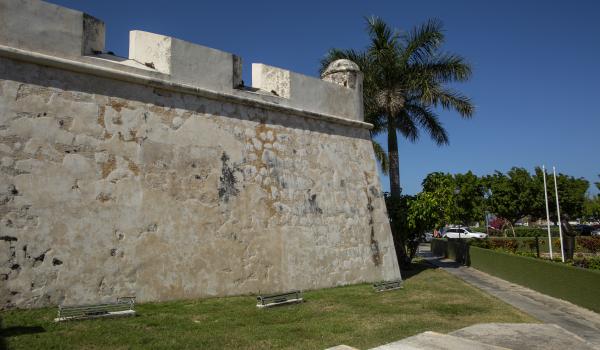
Baluarte de San Carlos
Located where San Benito once stood, the first formal defense built in the port, commissioned in 1610 by the governor of the province, Carlos de Luna y Arellano. After the English attack in 1678, plans were made to reinforce the fortress, which was demolished in 1703.
Located where San Benito once stood, the first formal defense built in the port, commissioned in 1610 by the governor of the province, Carlos de Luna y Arellano. After the English attack in 1678, plans were made to reinforce the fortress, which was demolished in 1703.
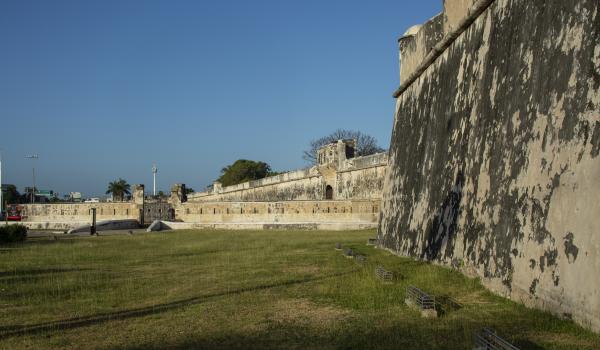
Baluarte de San Francisco
San Francisco was the fifth bastion to be built, and its architecture is similar to that of La Soledad. It was built between 1686 and 1690.
San Francisco was the fifth bastion to be built, and its architecture is similar to that of La Soledad. It was built between 1686 and 1690.
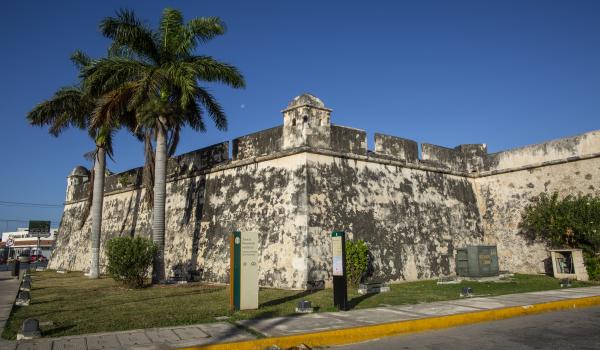
Baluarte de San Juan
San Juan was the fourth bastion to be built, completed in 1698 to protect and defend the Puerta de Tierra. It covered an area of 890.02 square meters. During the time it served as a residence, it suffered damage, but a portion of the walls on both sides remain.
San Juan was the fourth bastion to be built, completed in 1698 to protect and defend the Puerta de Tierra. It covered an area of 890.02 square meters. During the time it served as a residence, it suffered damage, but a portion of the walls on both sides remain.
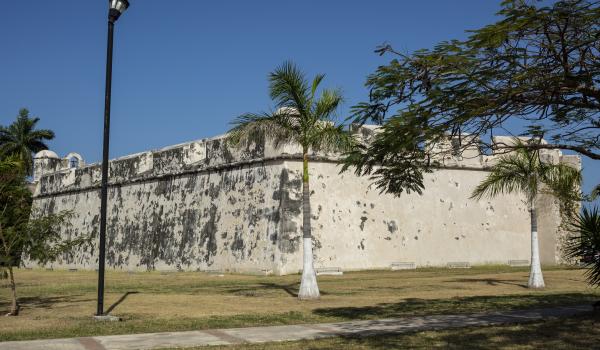
Baluarte de Santa Rosa
It was the first bastion to be completed, located where the small fortress of Santo Cristo de San Román once stood.
It was the first bastion to be completed, located where the small fortress of Santo Cristo de San Román once stood.
Biblioteca Municipal
The building was constructed at the end of the 17th century. It was owned by Rafael Carvajal Iturralde, and upon his death, it passed to his son, Fernando Carvajal Estrada, who turned it into one of the most beautiful mansions in the city.
The building was constructed at the end of the 17th century. It was owned by Rafael Carvajal Iturralde, and upon his death, it passed to his son, Fernando Carvajal Estrada, who turned it into one of the most beautiful mansions in the city.
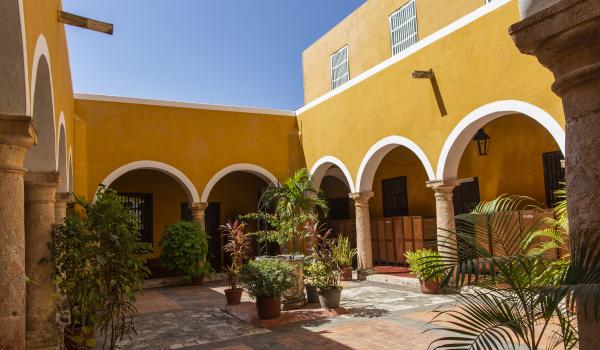
Casa del Teniente del Rey
This 18th-century building belonged to Infantry Colonel Leandro Poblaciones, who was a lieutenant of the king from 1804 to 1811. After independence, the building became a tenement, then a chewing gum and corn warehouse.
This 18th-century building belonged to Infantry Colonel Leandro Poblaciones, who was a lieutenant of the king from 1804 to 1811. After independence, the building became a tenement, then a chewing gum and corn warehouse.
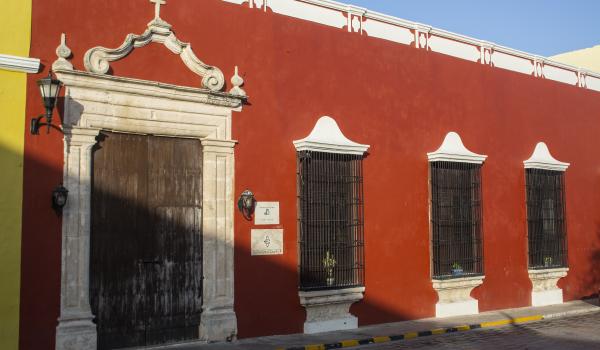
Centro Cultural Casa No. 6
It is likely that this 17th-century property was inhabited by Don Francisco de Montejo, Jr.
It is likely that this 17th-century property was inhabited by Don Francisco de Montejo, Jr.
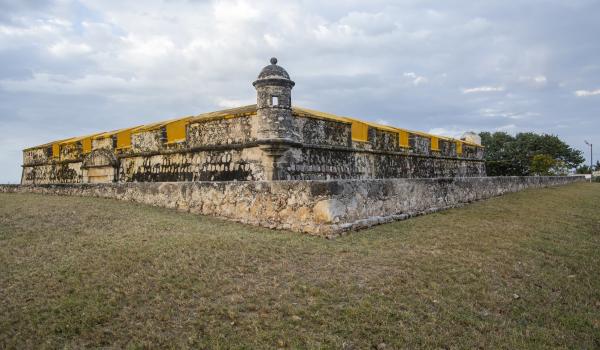
Museo Histórico de San José El Alto
This fort was built in the 18th century based on the original design by military engineer Agustín Crame, with modifications by engineer Juan José de León. It covers an area of 1,828.79 square meters and was completed on August 9, 1792.
This fort was built in the 18th century based on the original design by military engineer Agustín Crame, with modifications by engineer Juan José de León. It covers an area of 1,828.79 square meters and was completed on August 9, 1792.
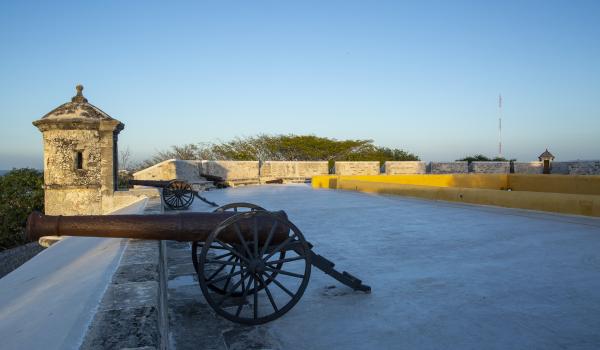
Museo de Arqueología Maya, Fuerte de San Miguel
In 1779, construction began on the San Miguel redoubt, based on a design by engineer Agustín Crame. Once built, engineering colonel Juan José de León modified its layout and, in 1801, added two small bastions that protruded on the landward side to protect the gate.
In 1779, construction began on the San Miguel redoubt, based on a design by engineer Agustín Crame. Once built, engineering colonel Juan José de León modified its layout and, in 1801, added two small bastions that protruded on the landward side to protect the gate.
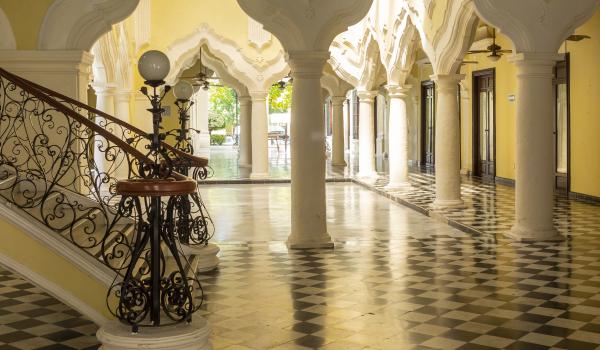
Mansión Carvajal
An 18th-century building that belonged to the Carvajar Yturralde family, wealthy landowners and merchants. It later housed the Hotel Tropicana, the Hotel Señorial, and offices.
An 18th-century building that belonged to the Carvajar Yturralde family, wealthy landowners and merchants. It later housed the Hotel Tropicana, the Hotel Señorial, and offices.
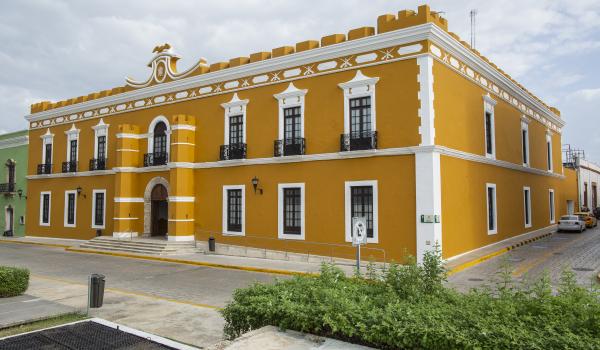
Pedro Sáinz de Baranda
This building, which currently serves as the Municipal Palace of Campeche, City Council of Campeche, was built in the 17th century.
This building, which currently serves as the Municipal Palace of Campeche, City Council of Campeche, was built in the 17th century.
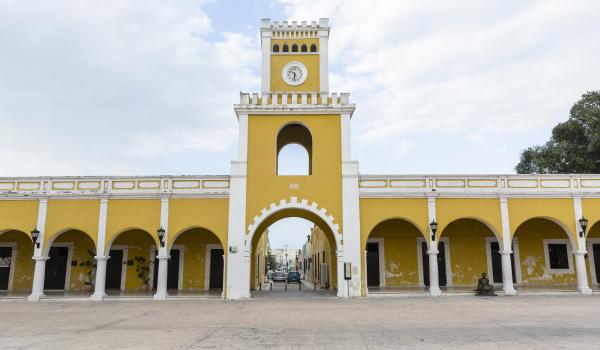
19th-century building
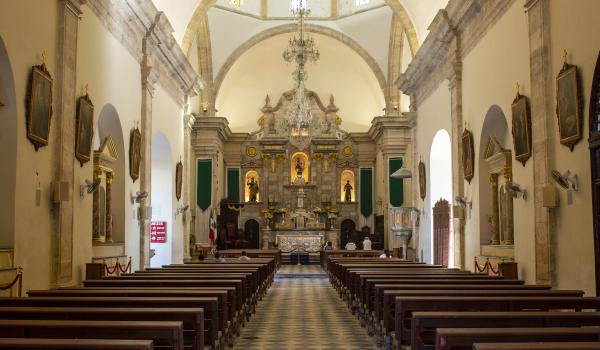
Catedral
The first parish church in Campeche was built in 1540 and dedicated to the Immaculate Conception. As the city grew, a larger church was built, completed thanks to donations from Margarita Guerra.
The first parish church in Campeche was built in 1540 and dedicated to the Immaculate Conception. As the city grew, a larger church was built, completed thanks to donations from Margarita Guerra.
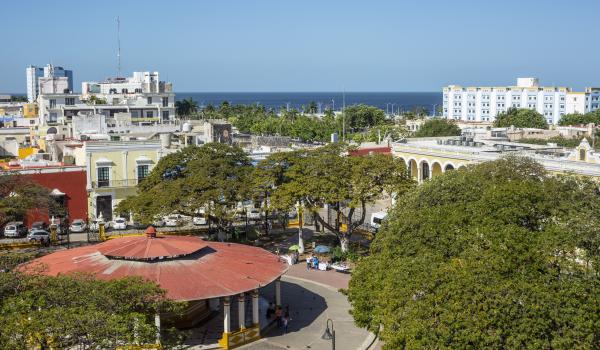
Plaza de Armas
It is likely that the Plaza Mayor or Plaza de Armas was laid out when the town of San Francisco was founded in 1540. After the Constitution of Cádiz was enacted in 1812, it was renamed Plaza de la Constitución.
It is likely that the Plaza Mayor or Plaza de Armas was laid out when the town of San Francisco was founded in 1540. After the Constitution of Cádiz was enacted in 1812, it was renamed Plaza de la Constitución.
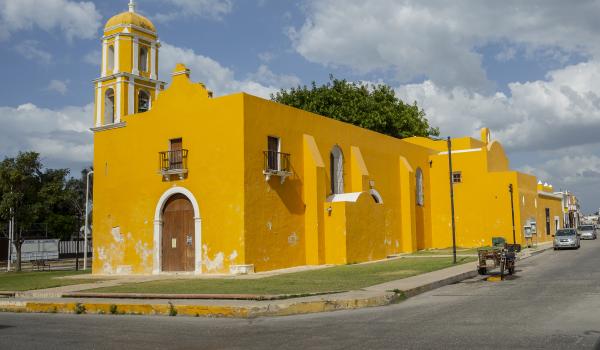
Templo de Guadalupe
Temple founded between 1576 and 1581 with the sponsorship of Pedro Martín de Bonilla.
Temple founded between 1576 and 1581 with the sponsorship of Pedro Martín de Bonilla.
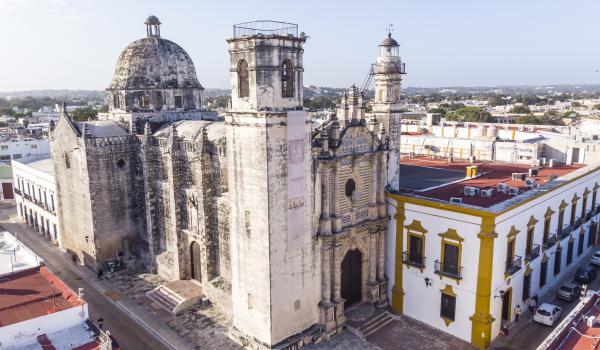
Templo de San José
In 1649, the founding of a brotherhood dedicated to Saint Joseph was approved, as requested by Captain Antonio Maldonado. The brotherhood of Saint Joseph was made up of the carpenters' and caulkers' guilds.
In 1649, the founding of a brotherhood dedicated to Saint Joseph was approved, as requested by Captain Antonio Maldonado. The brotherhood of Saint Joseph was made up of the carpenters' and caulkers' guilds.
Coordinación Nacional de Monumentos Históricos
La Coordinación Nacional de Monumentos Históricos del Instituto Nacional de Antropología e Historia ...


